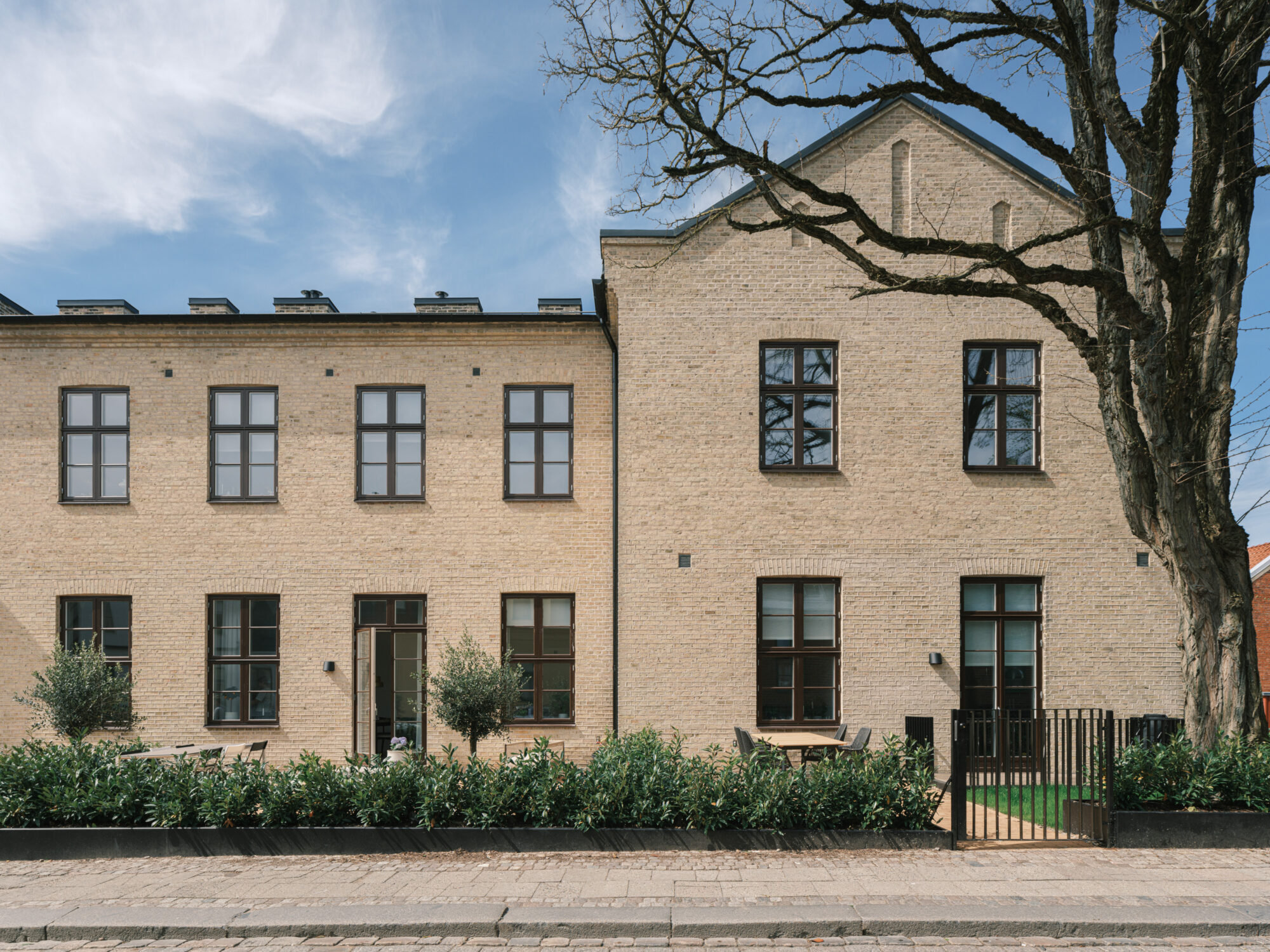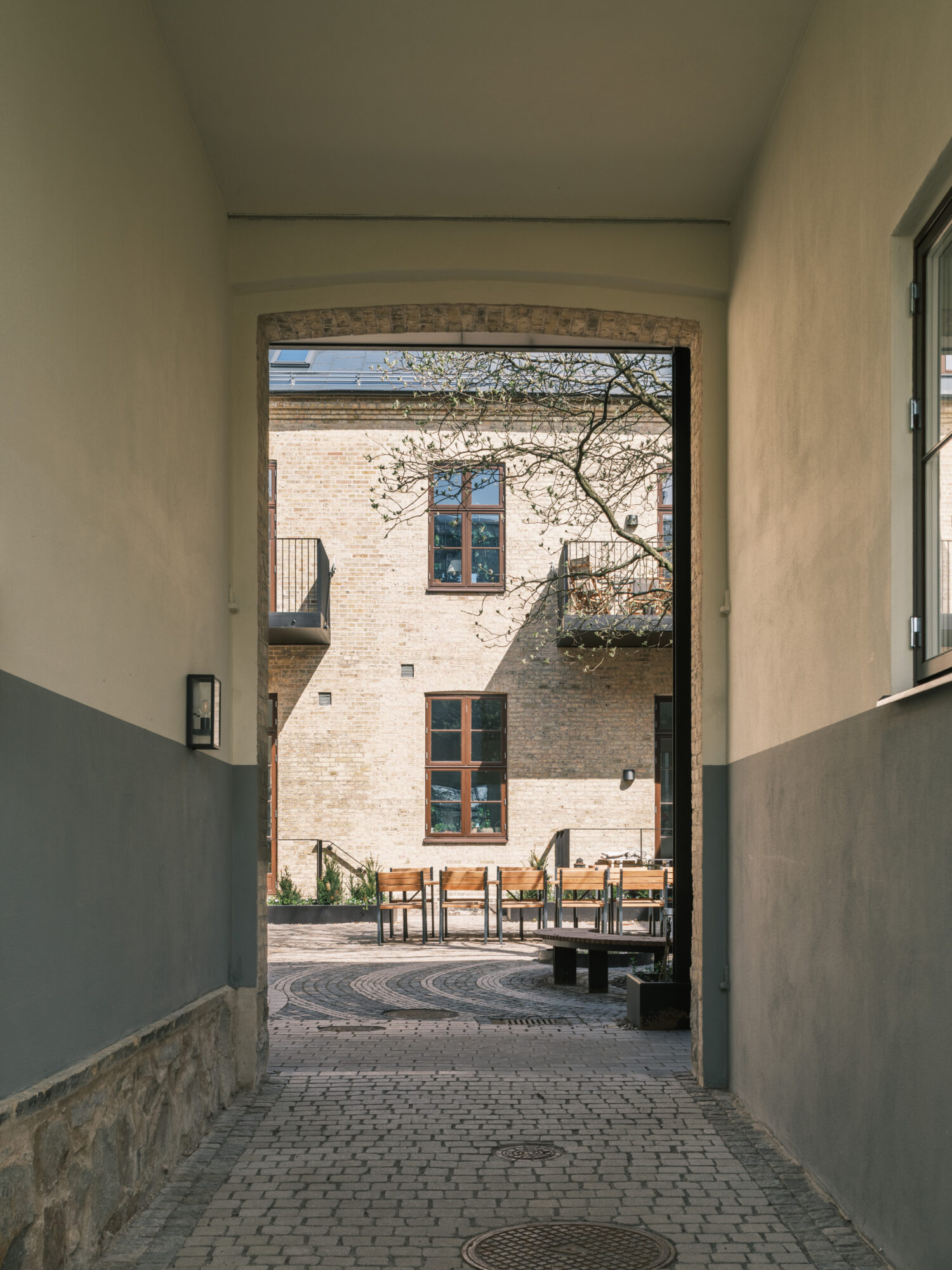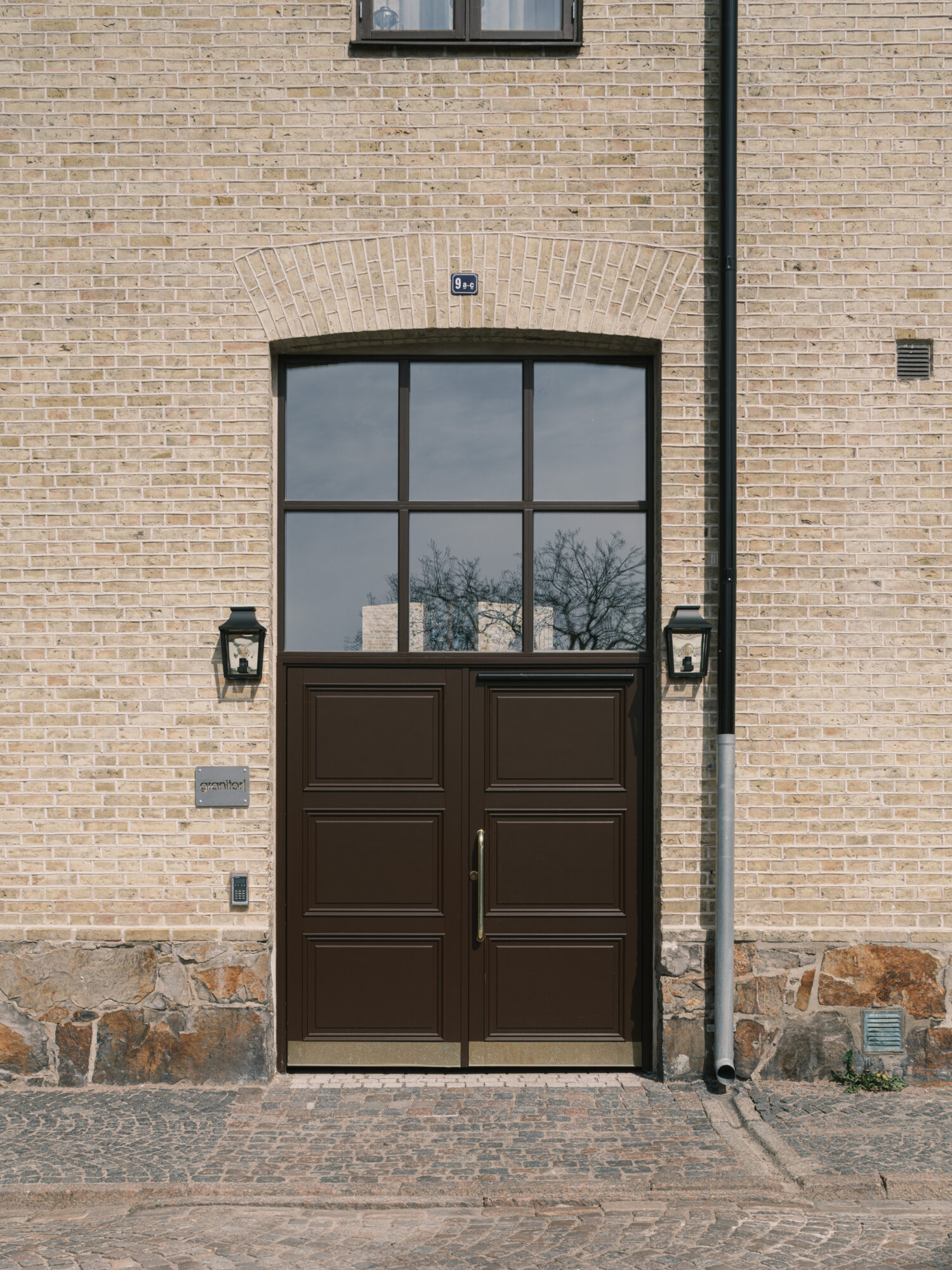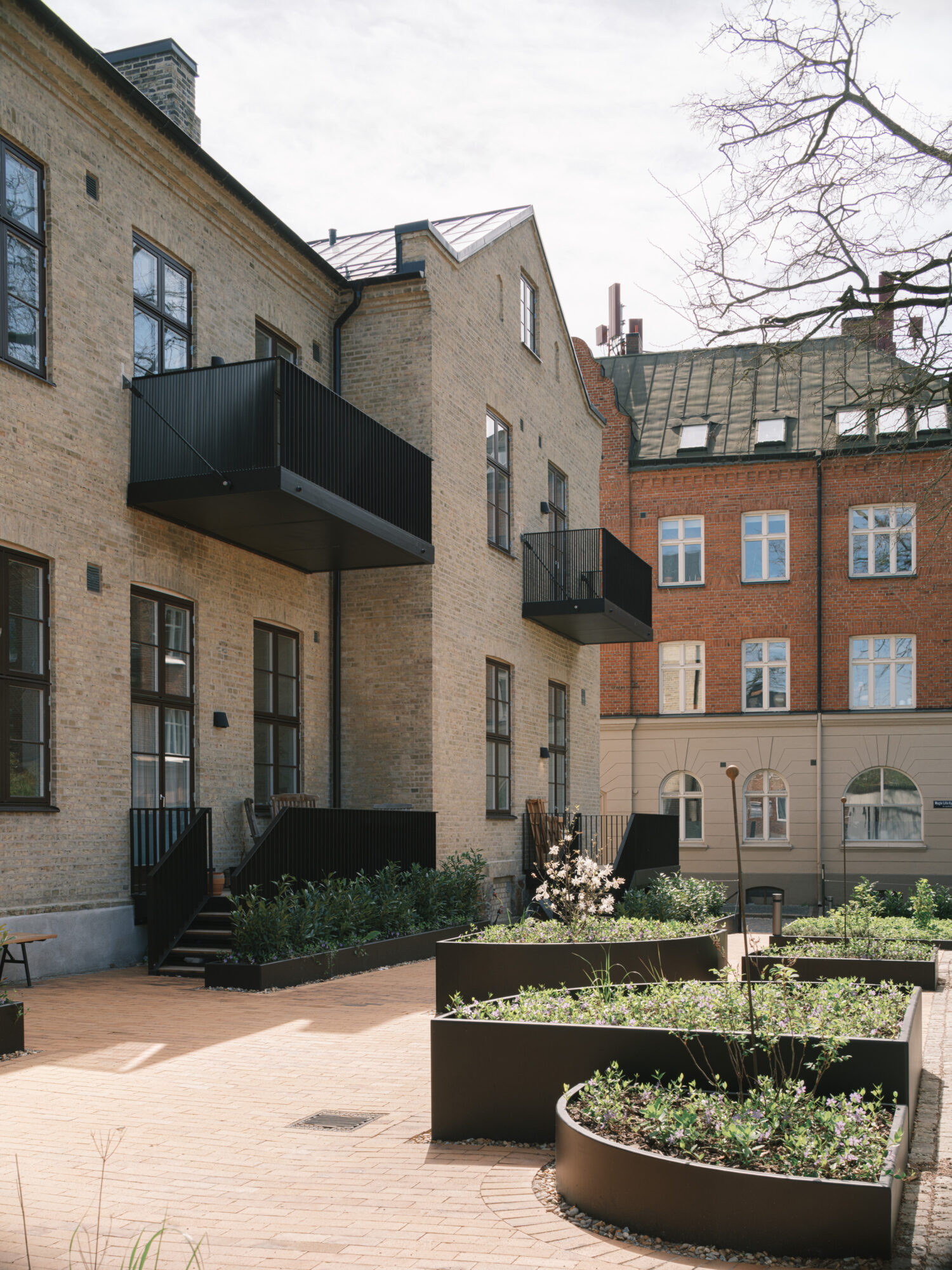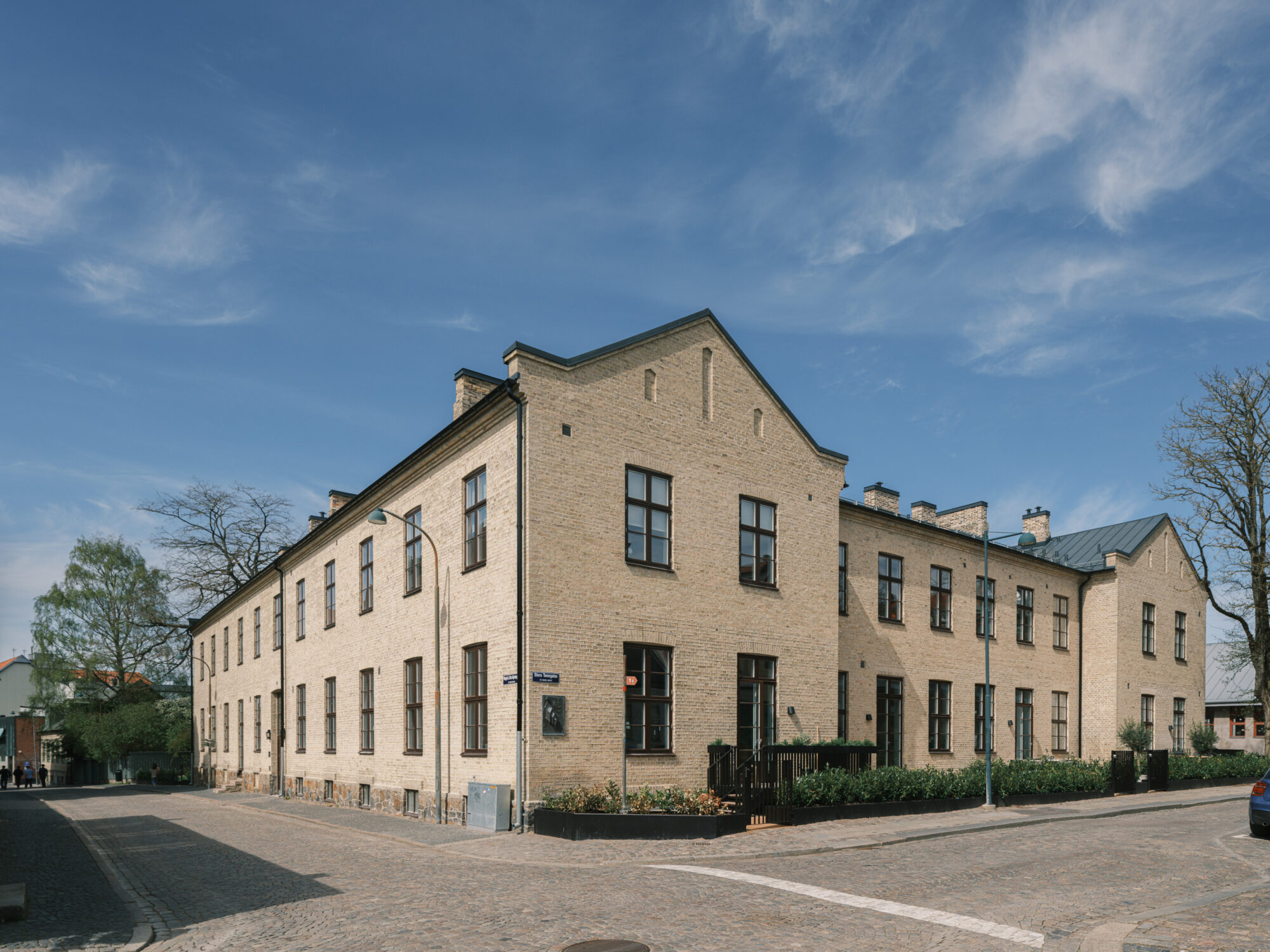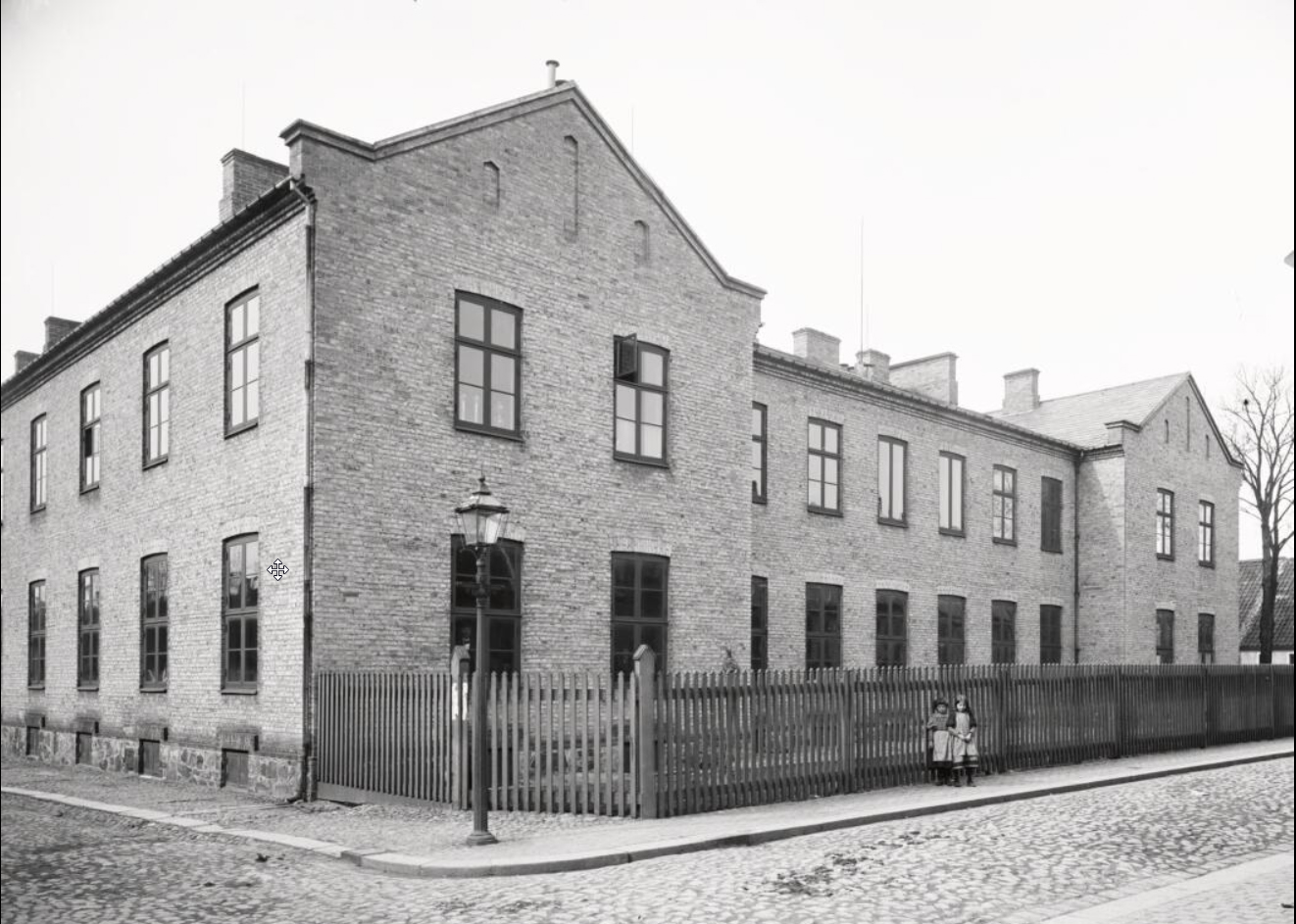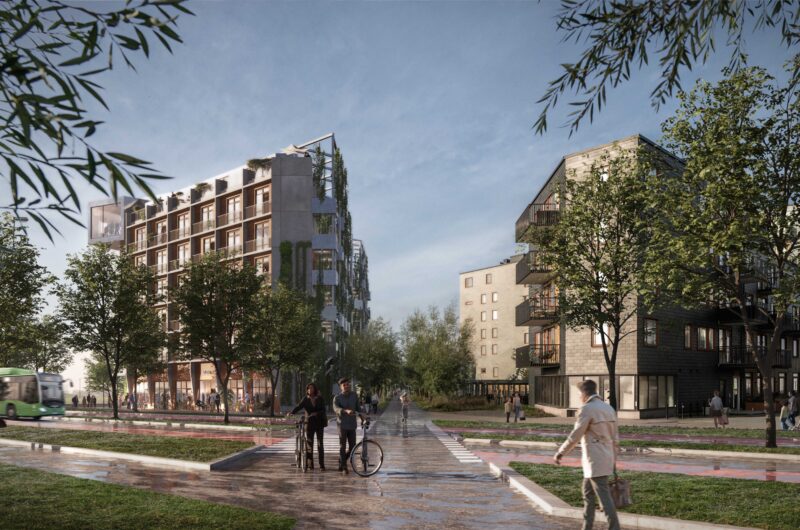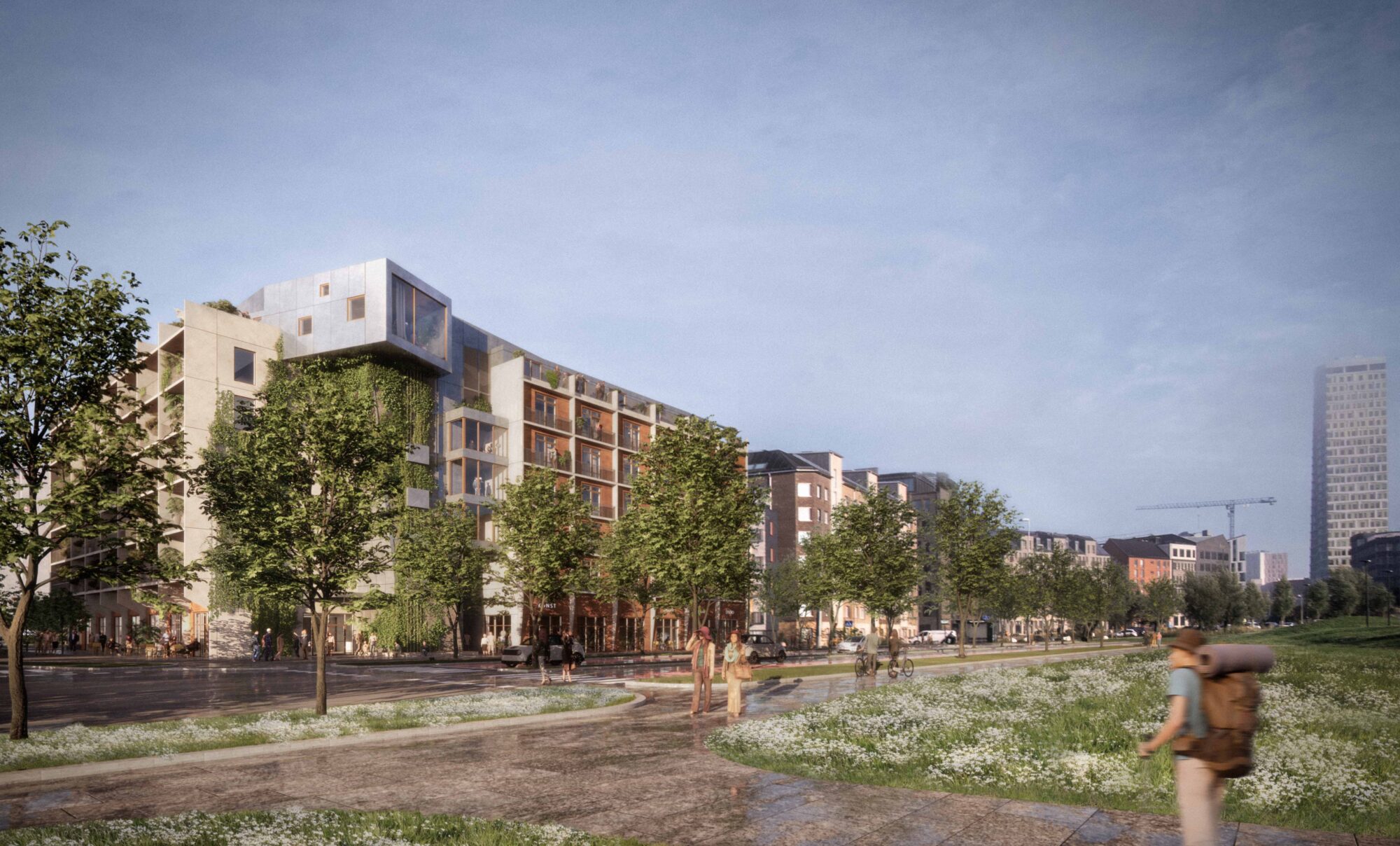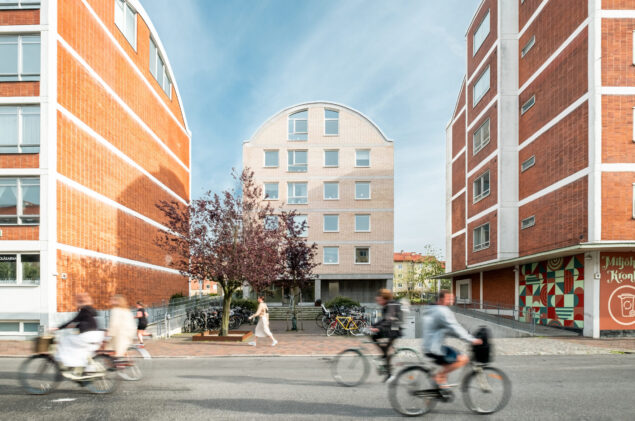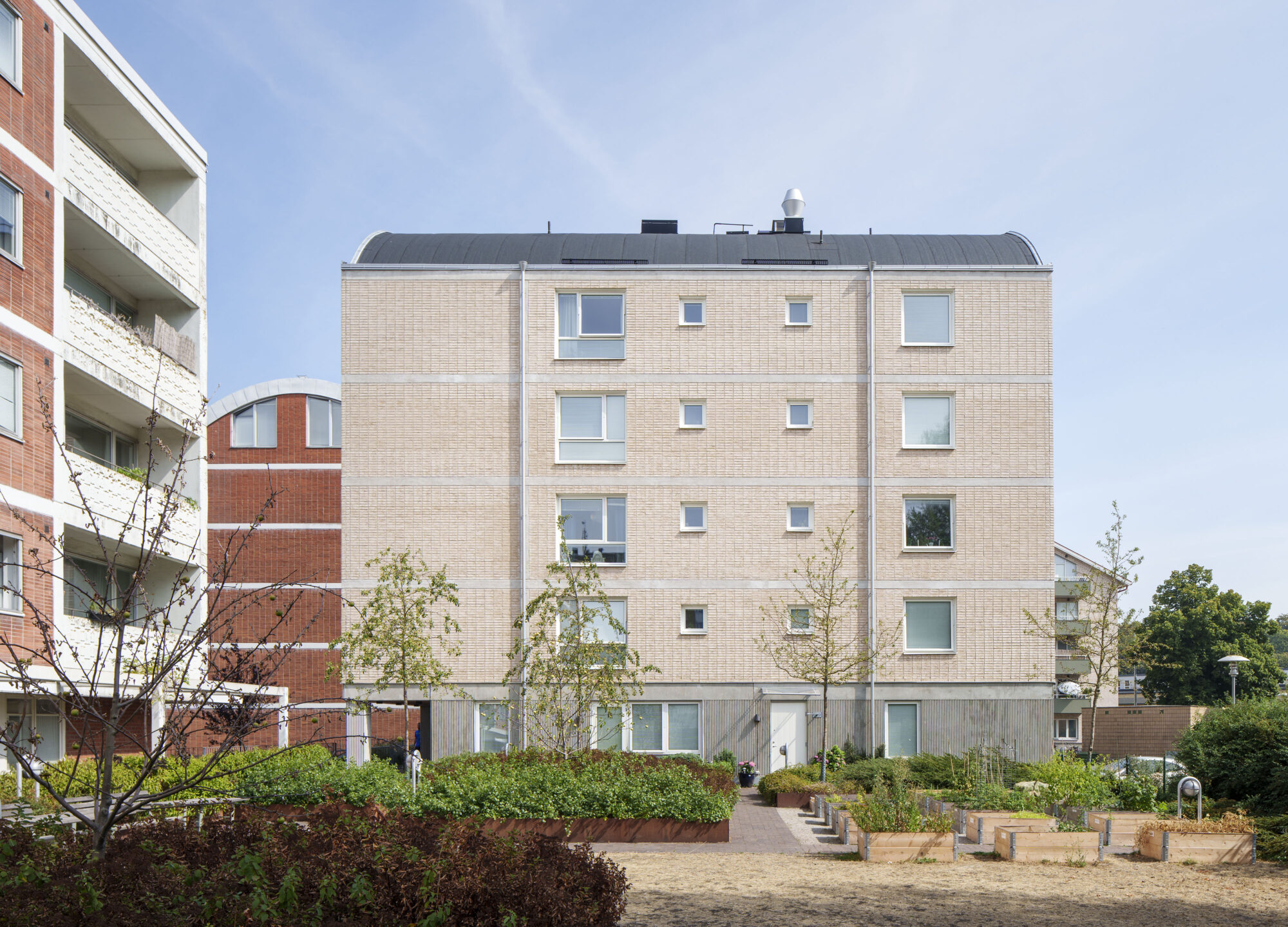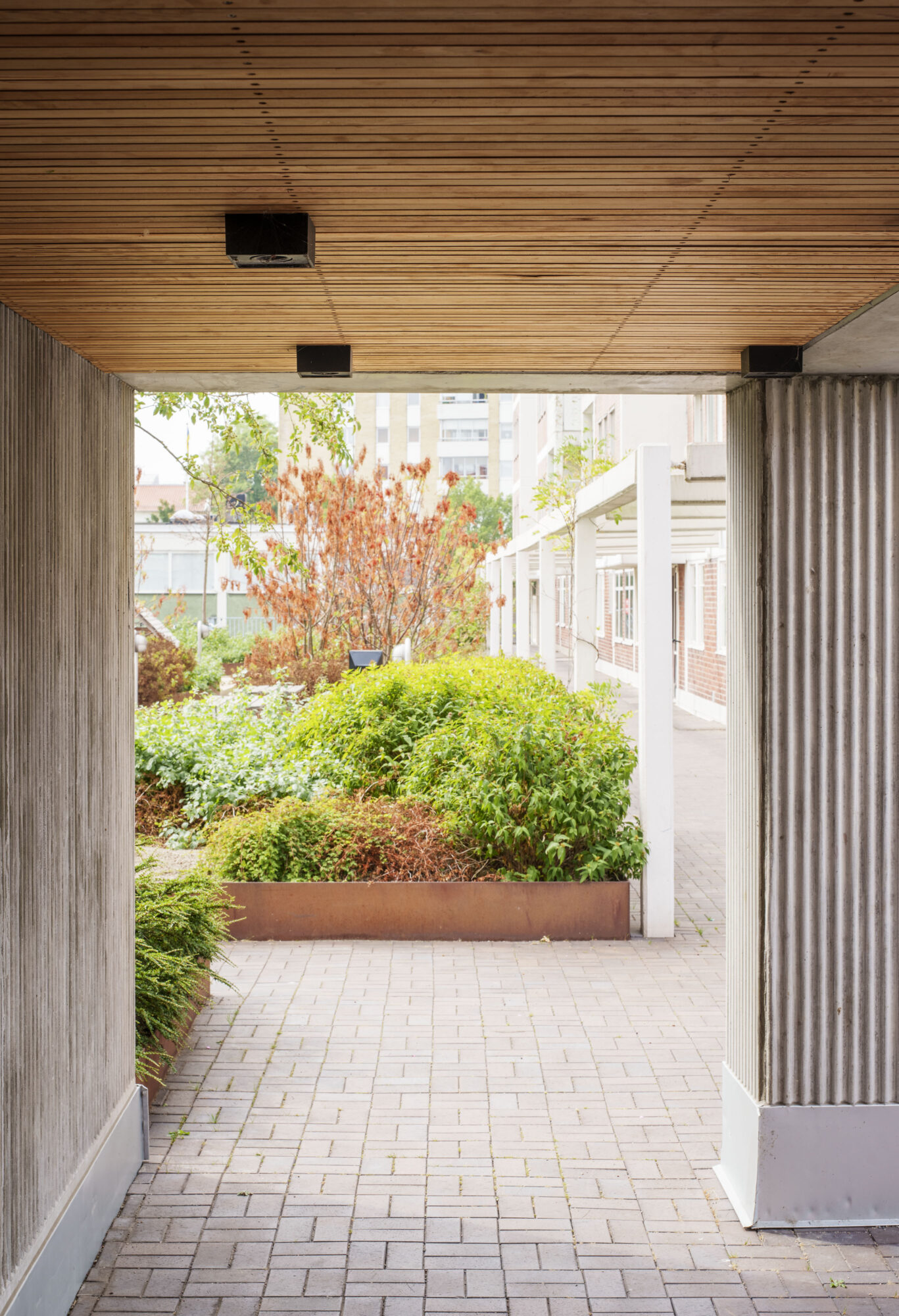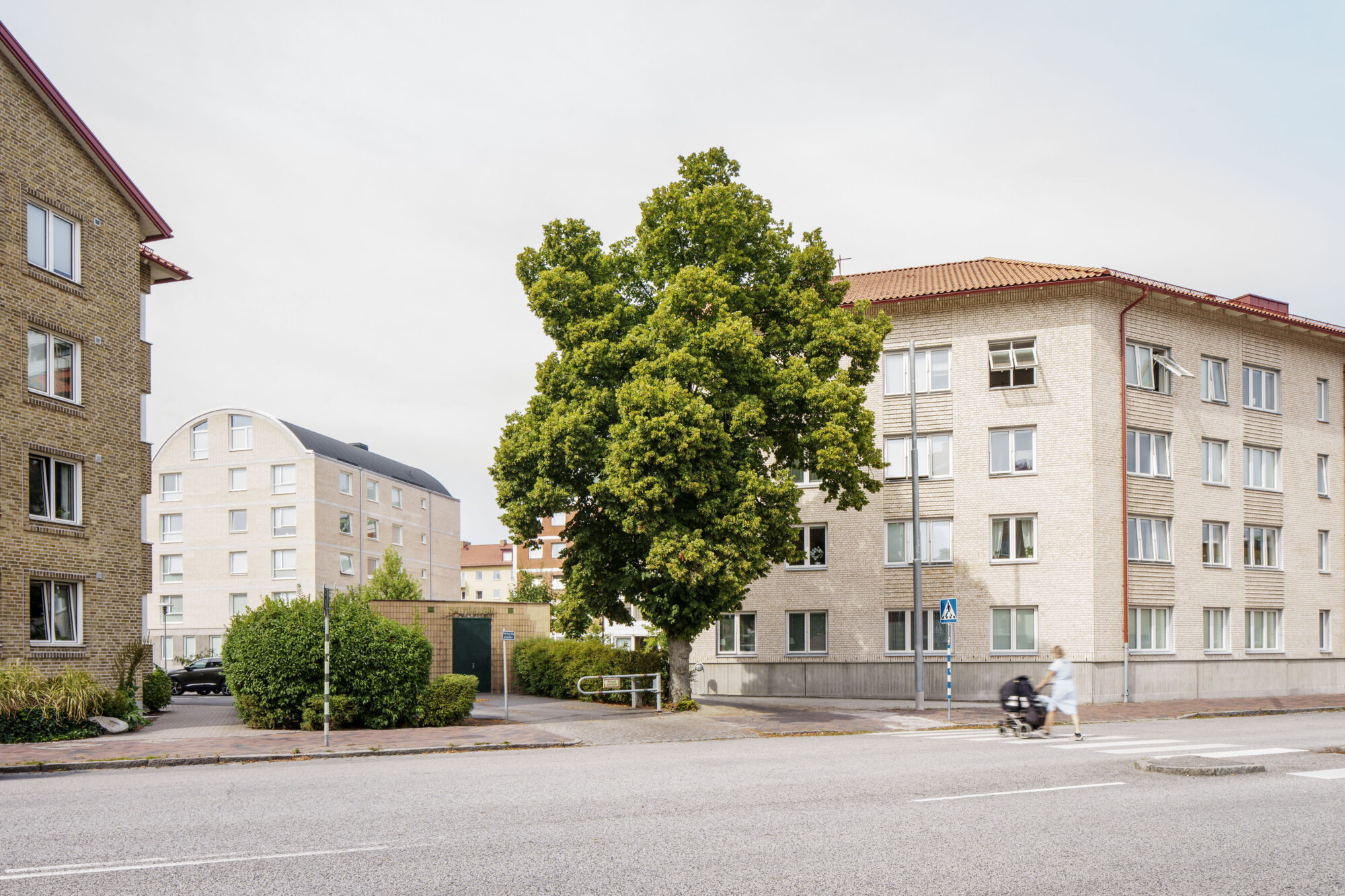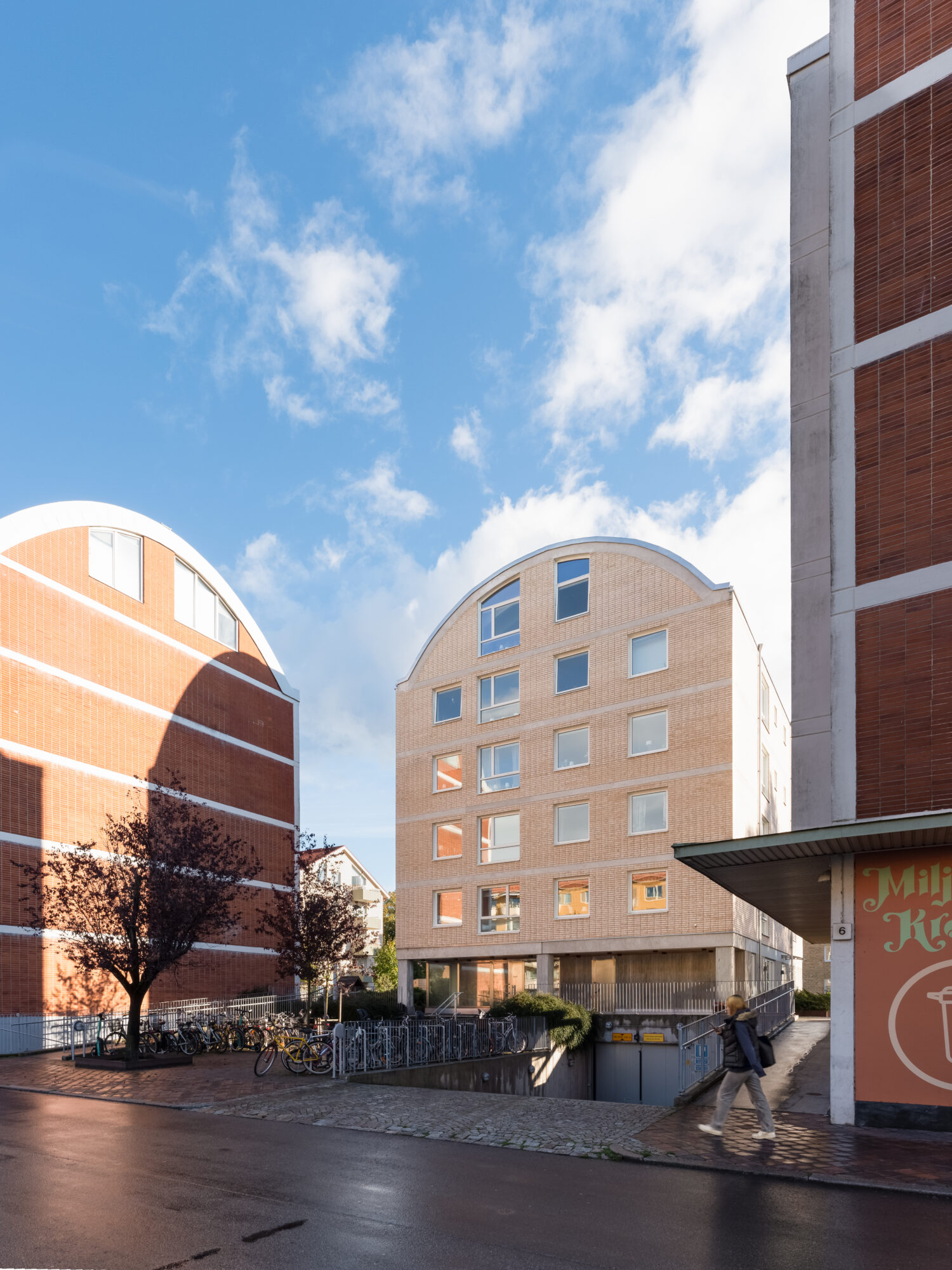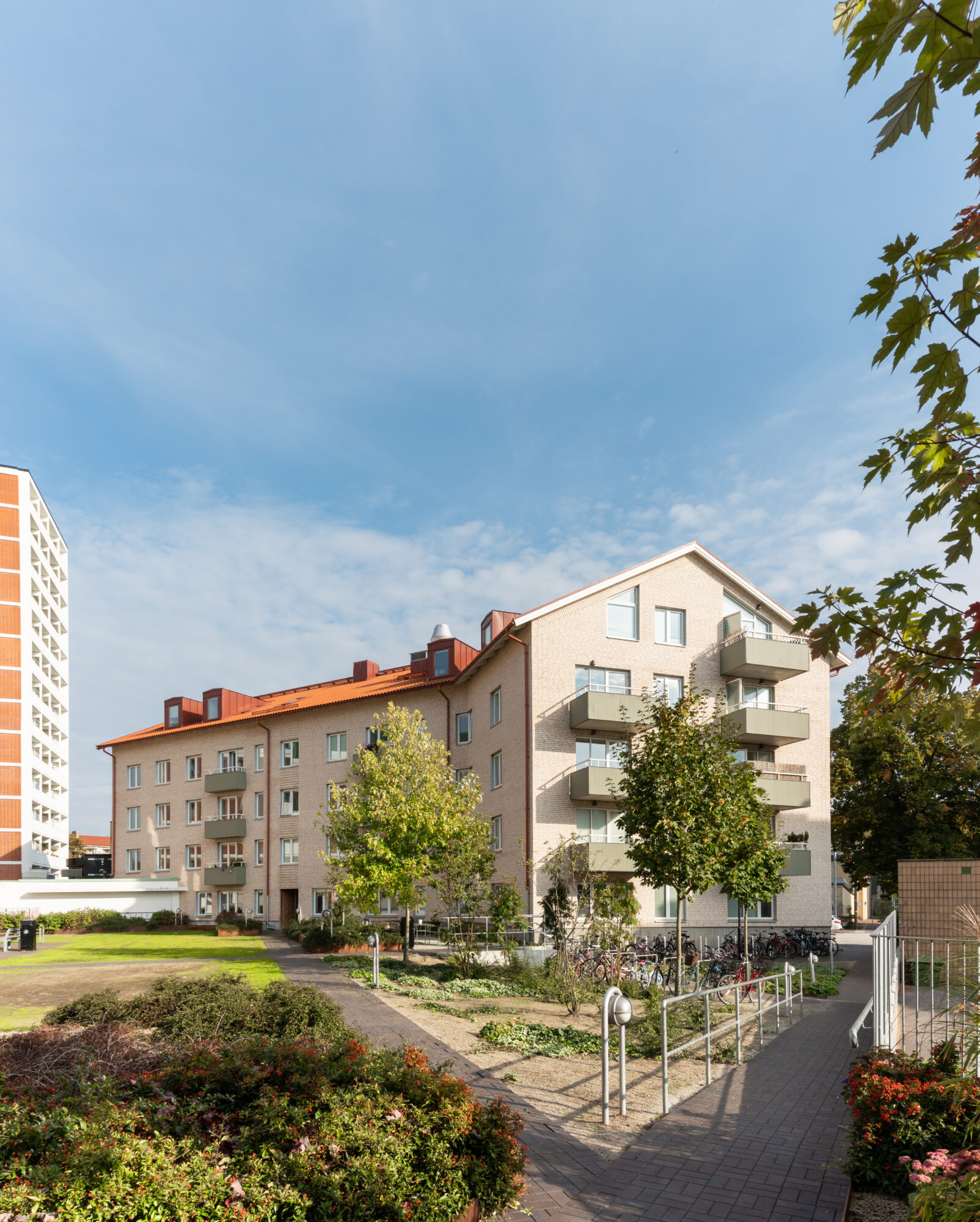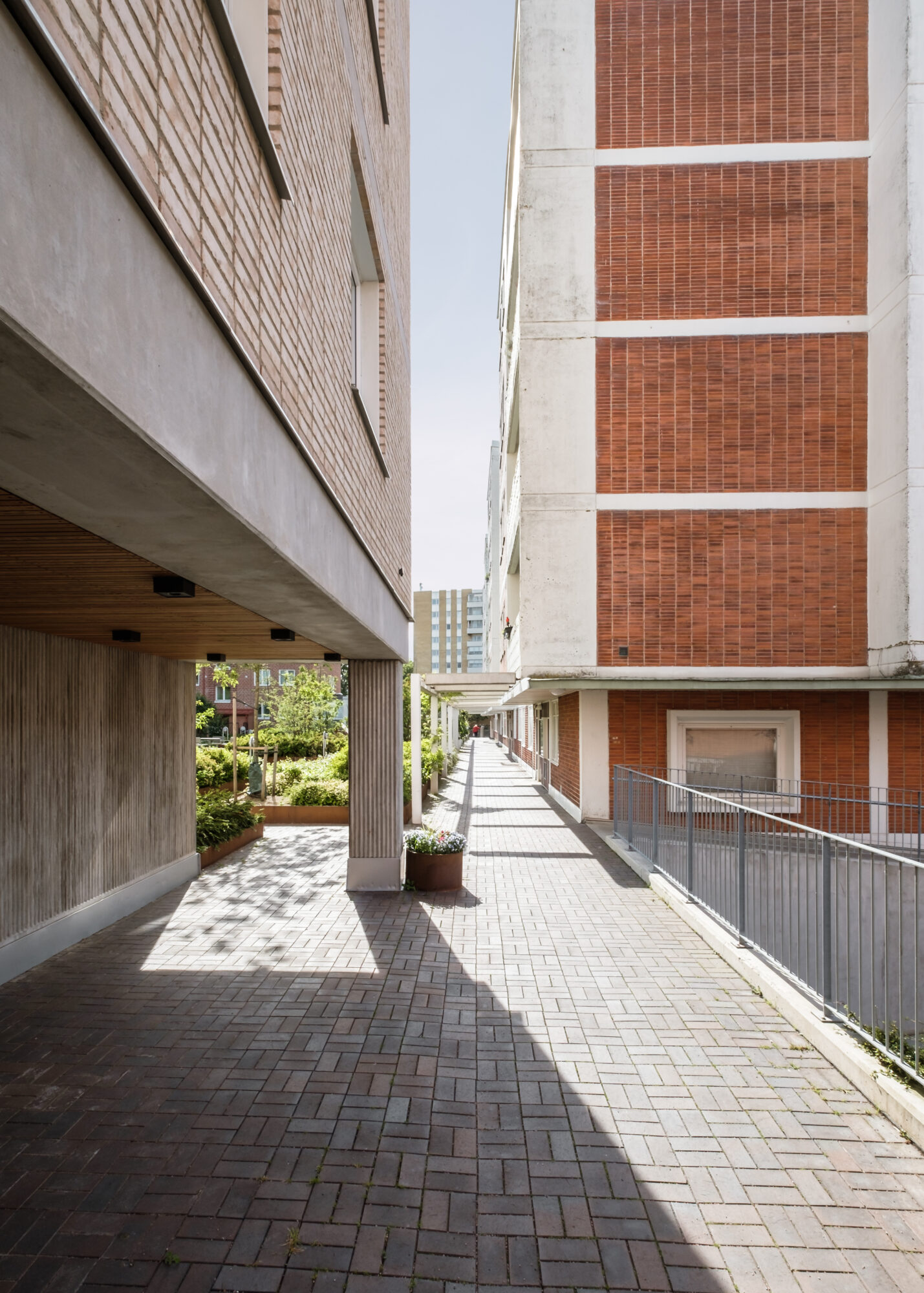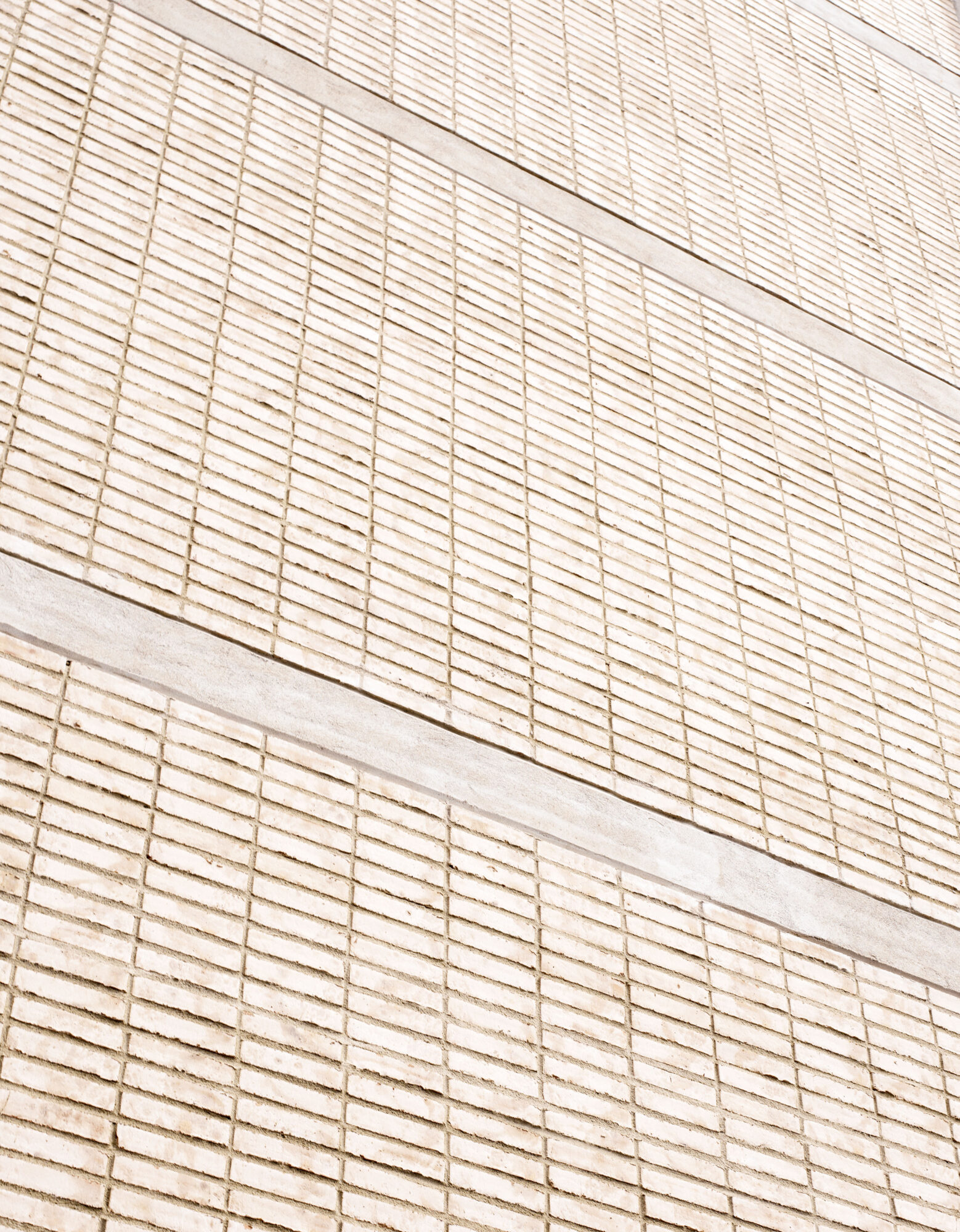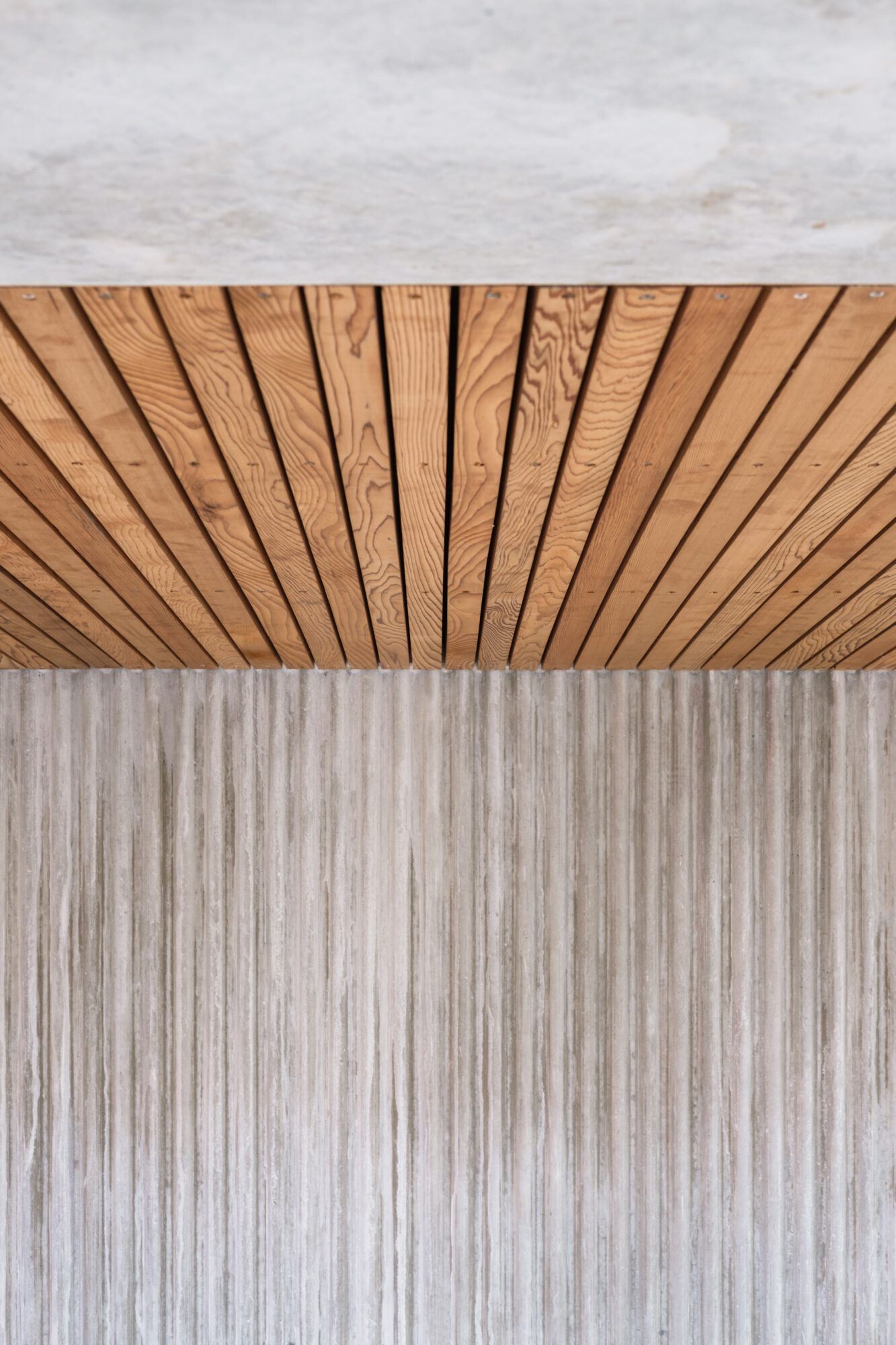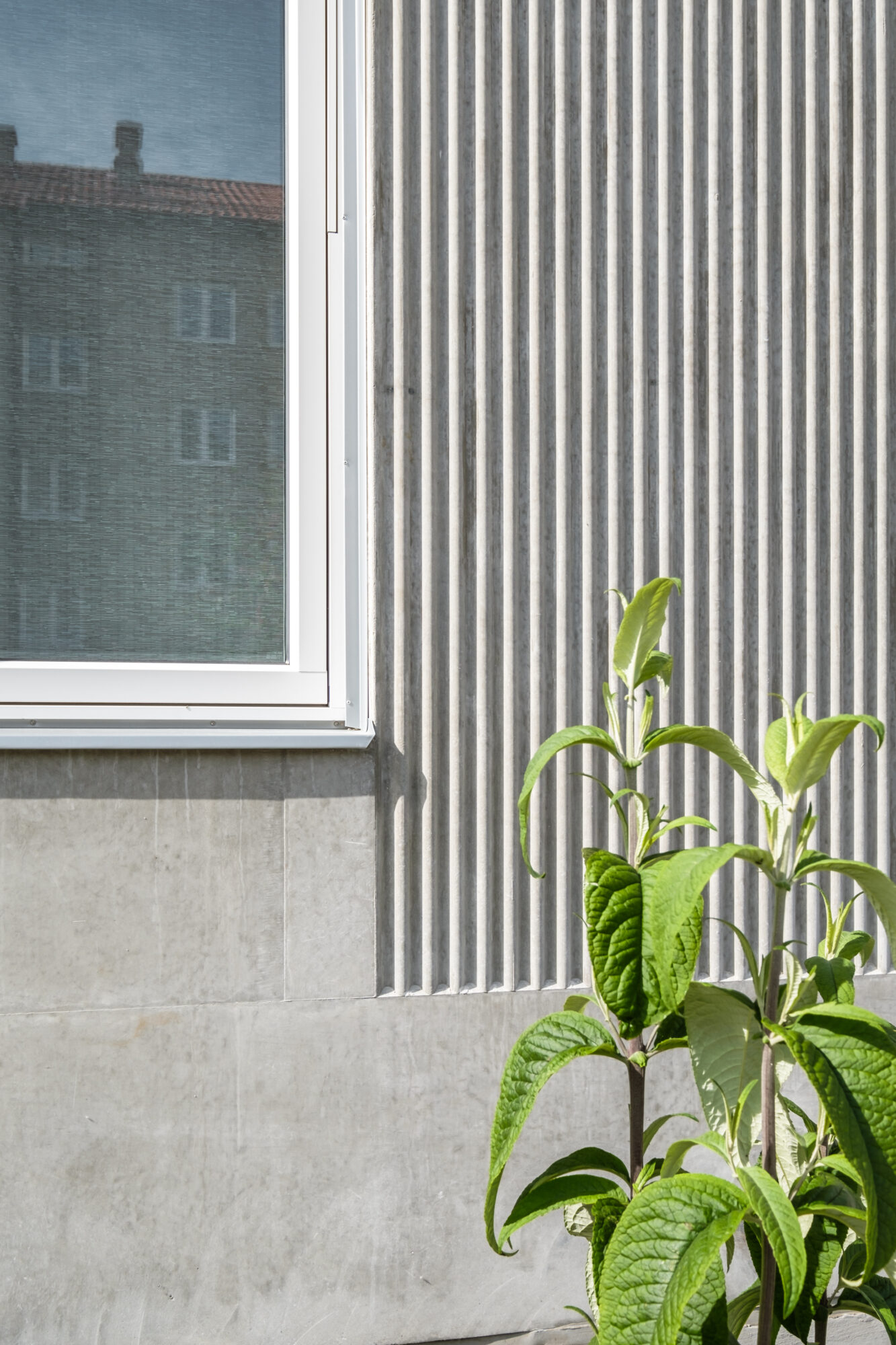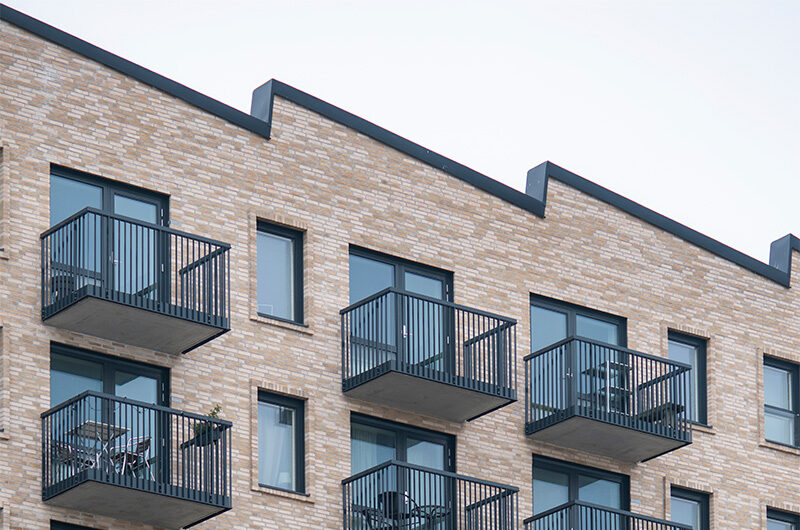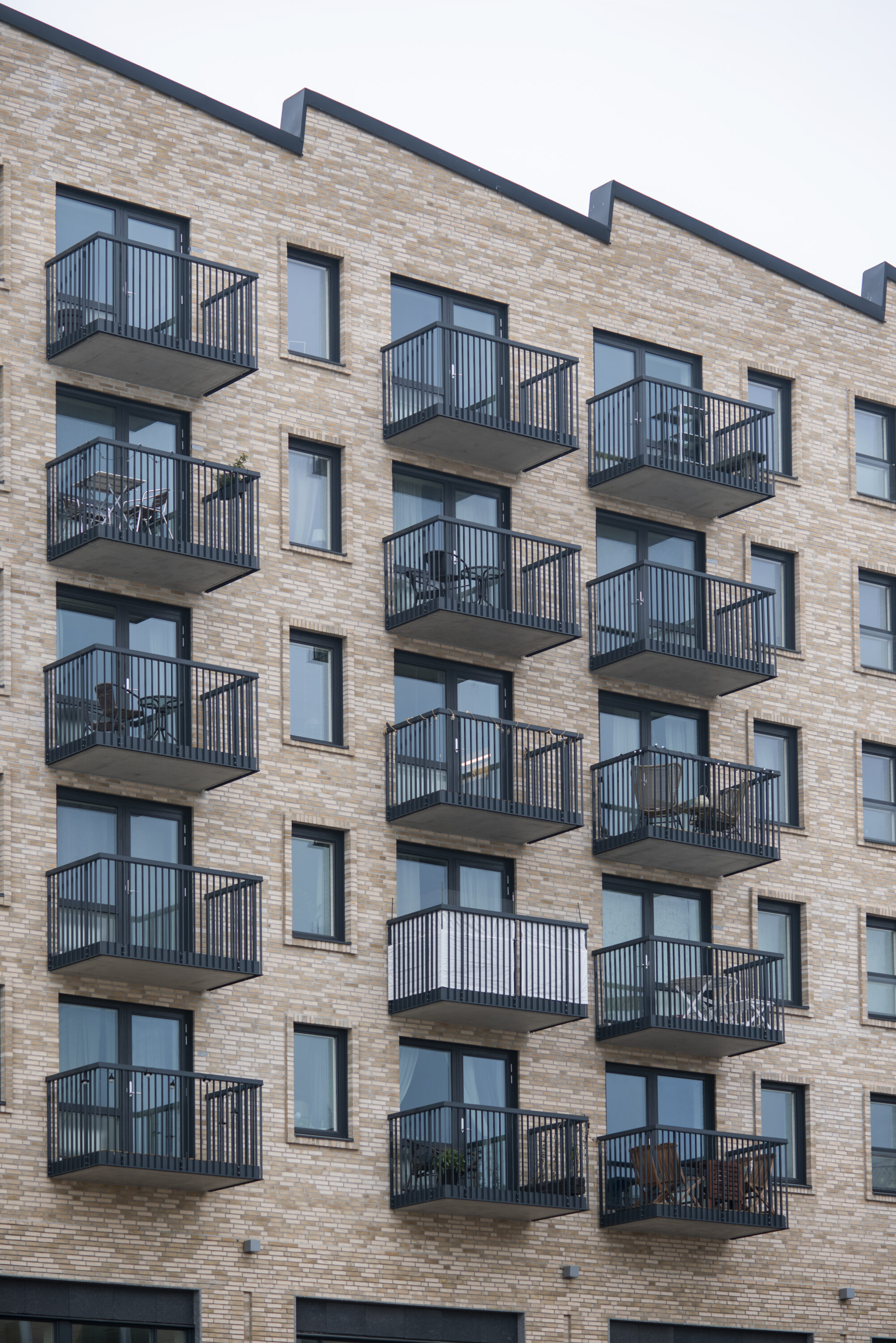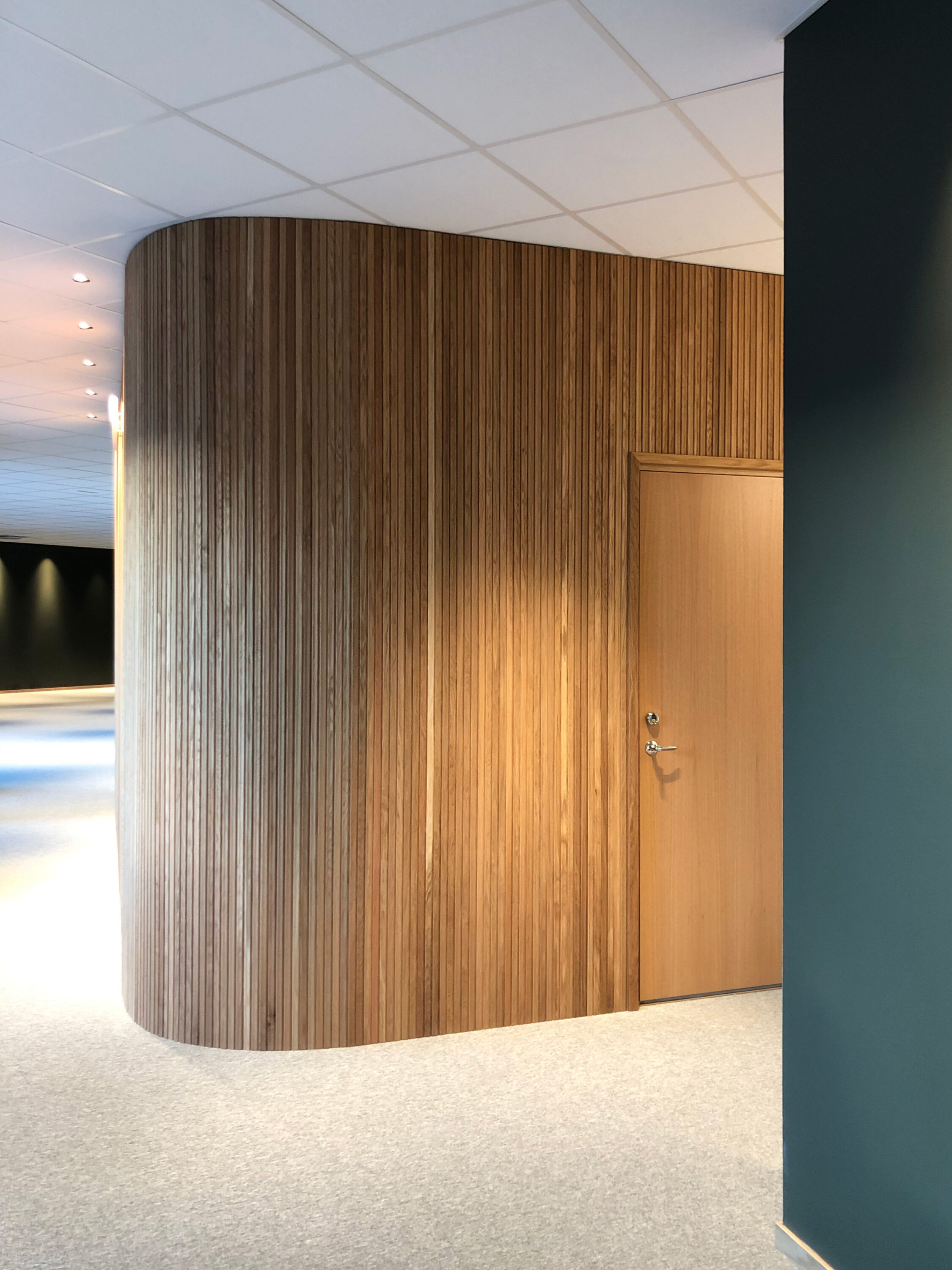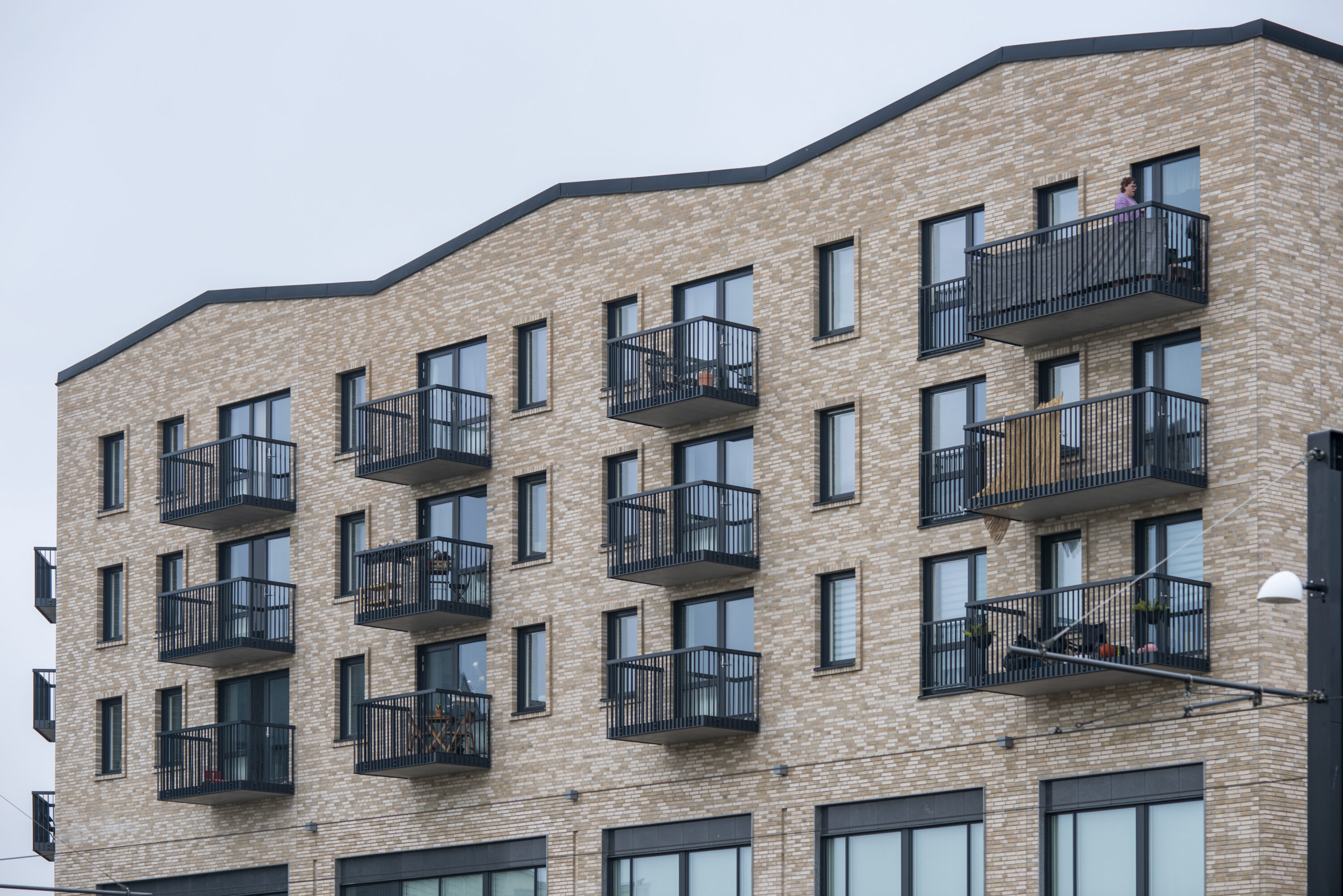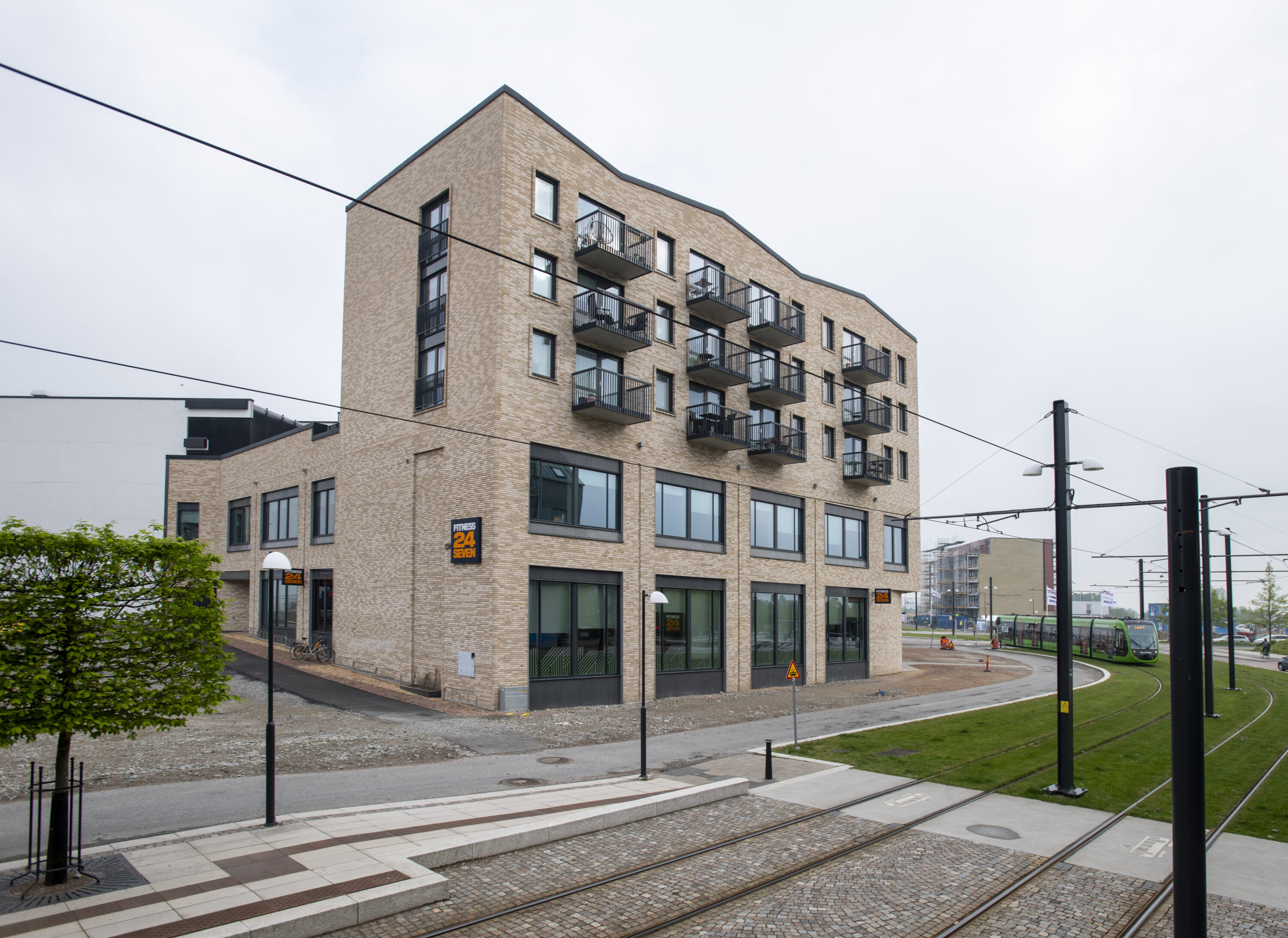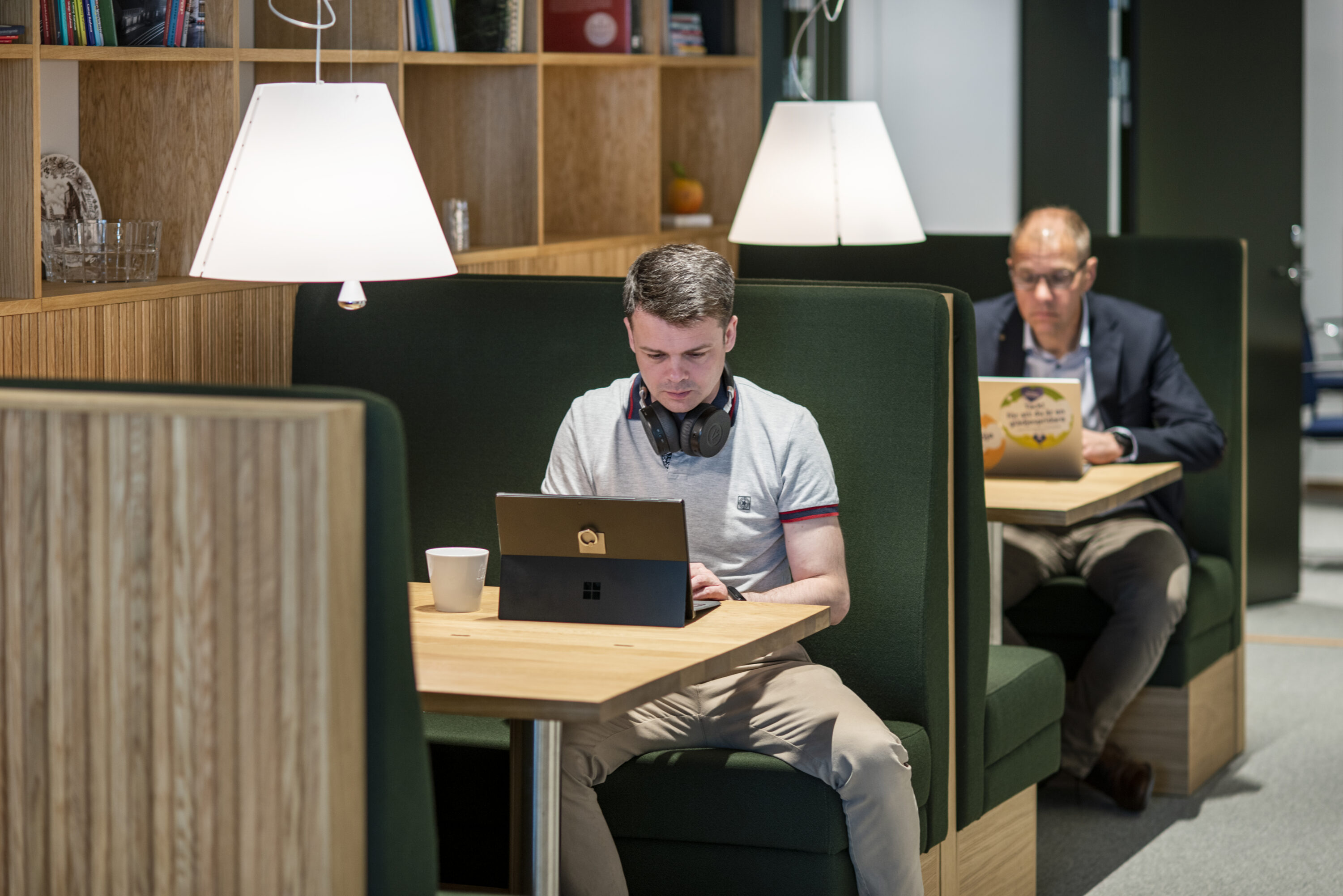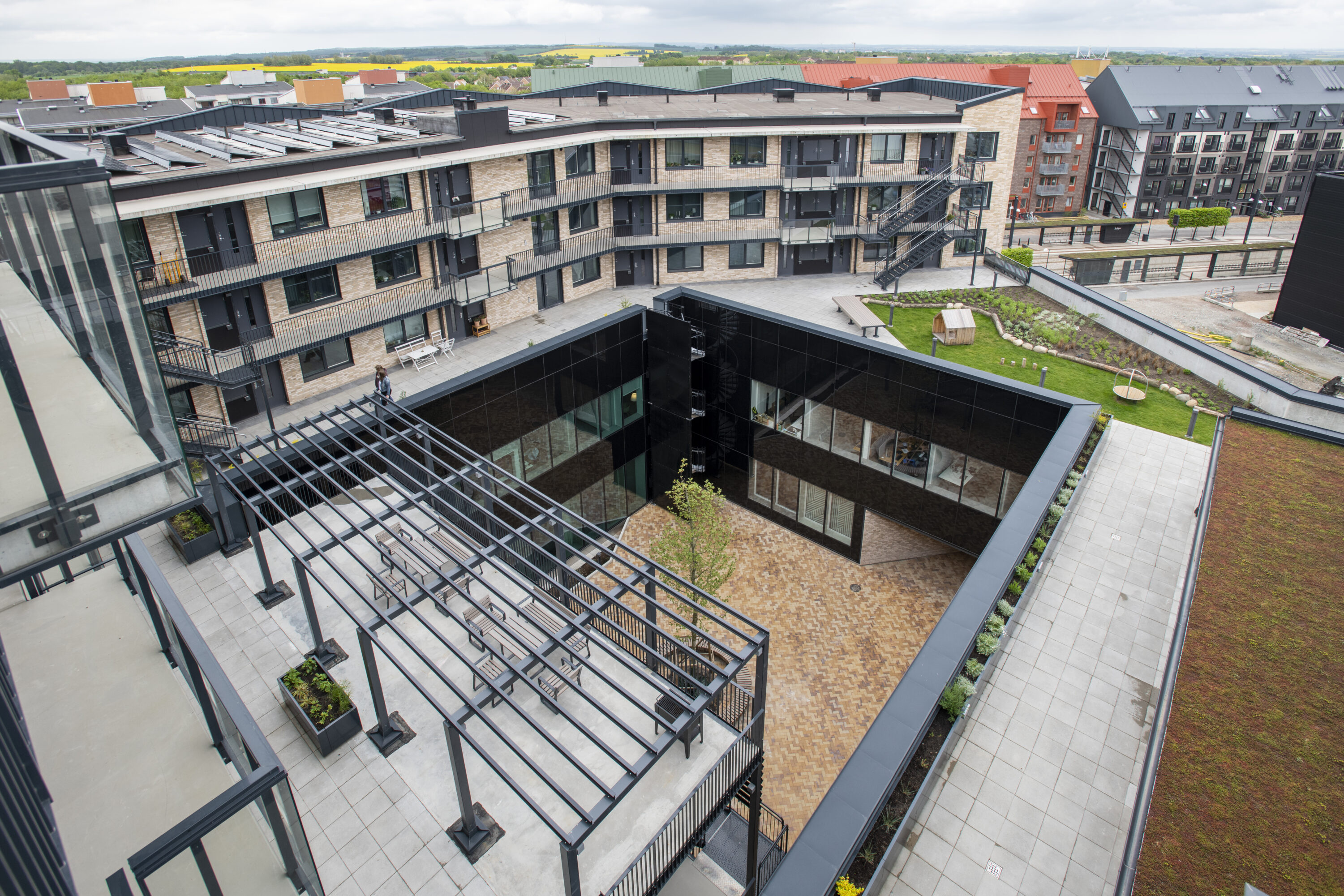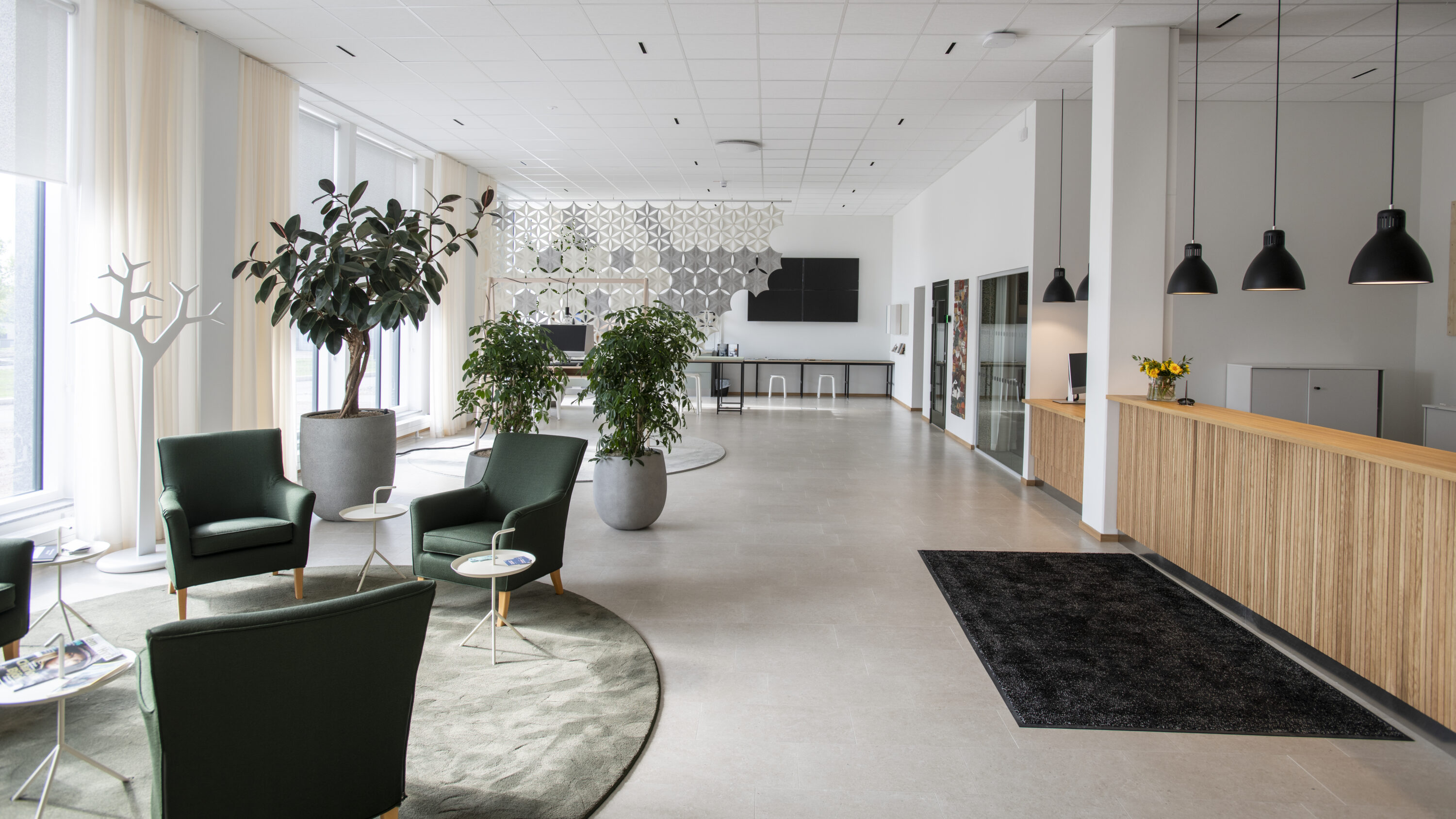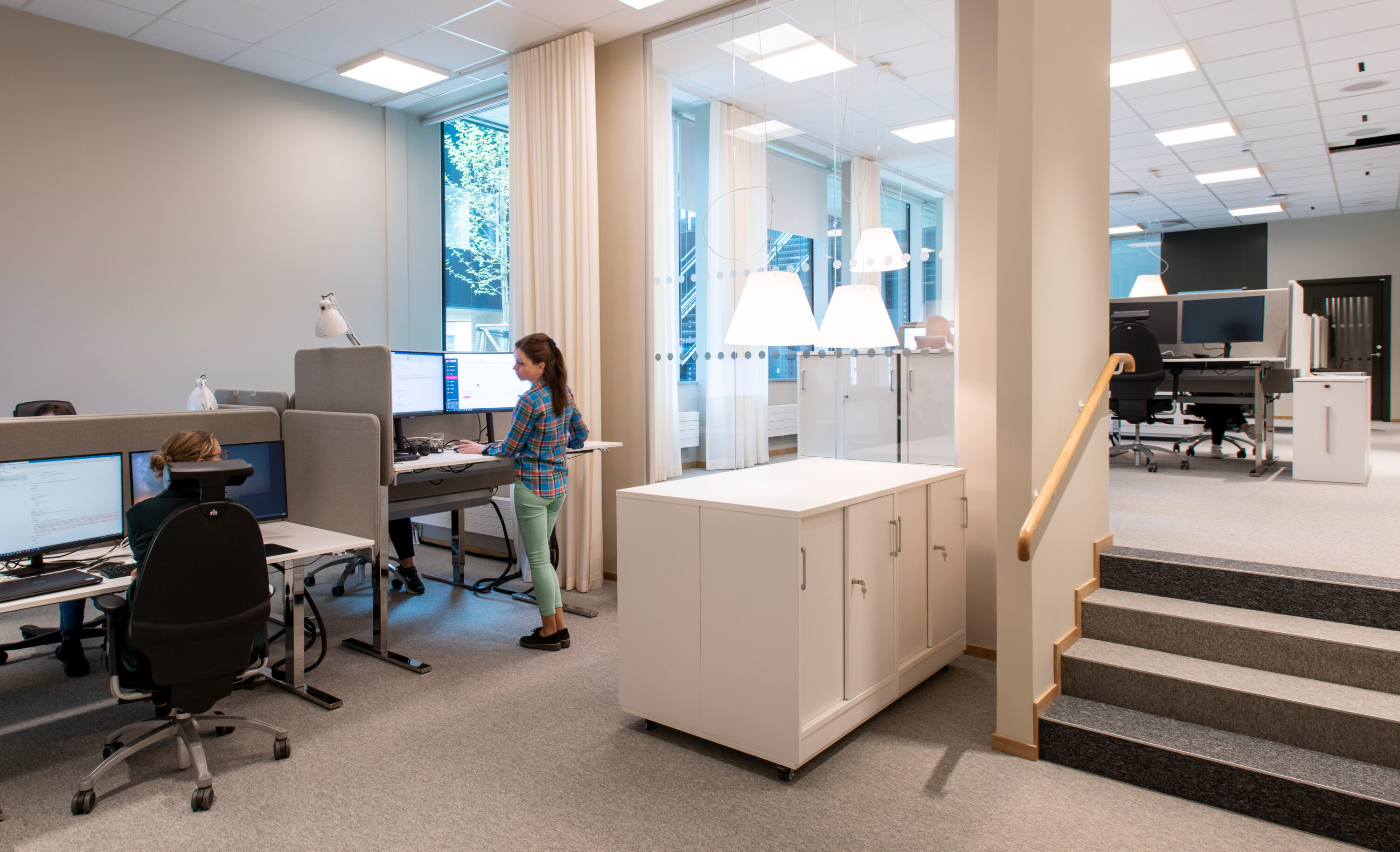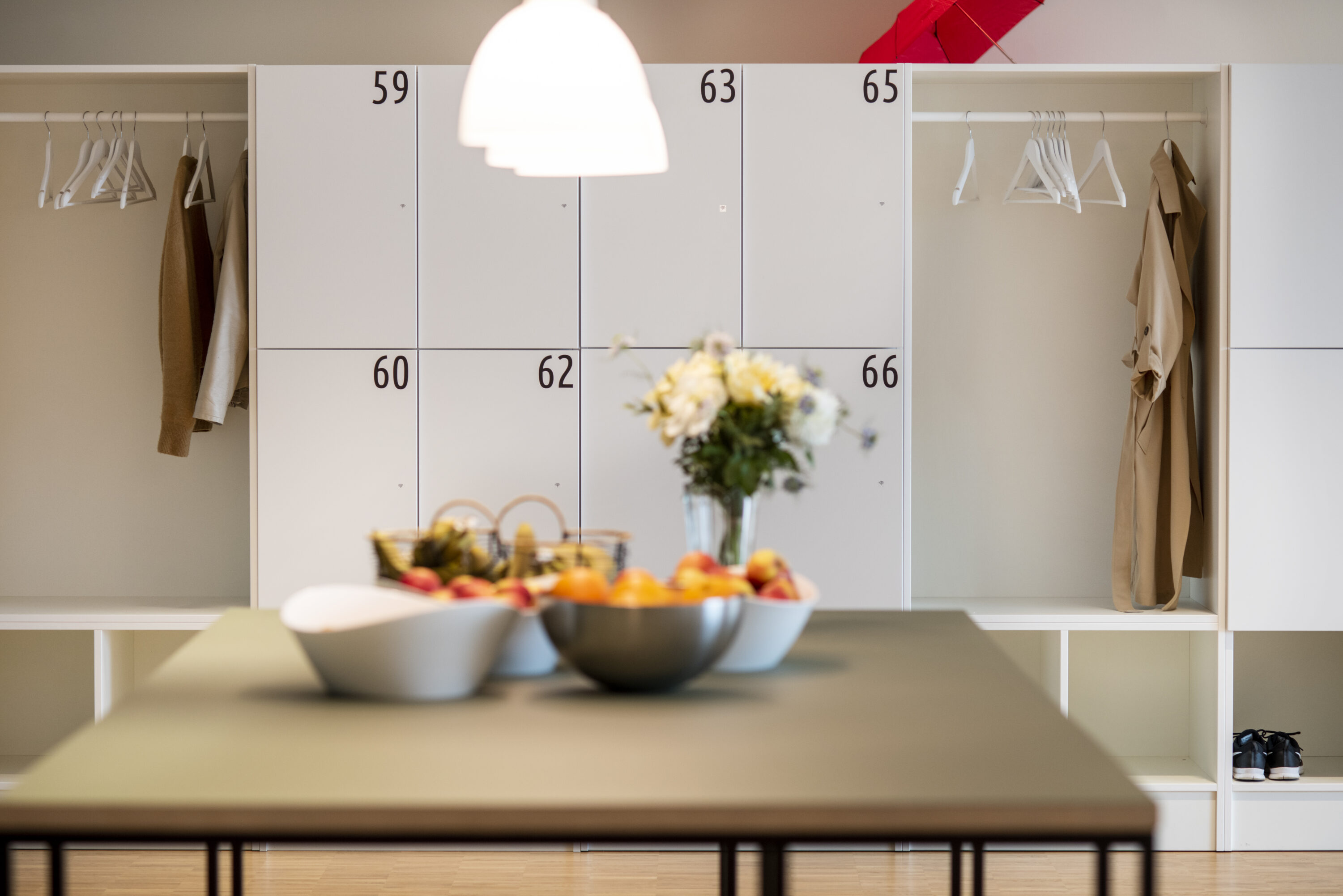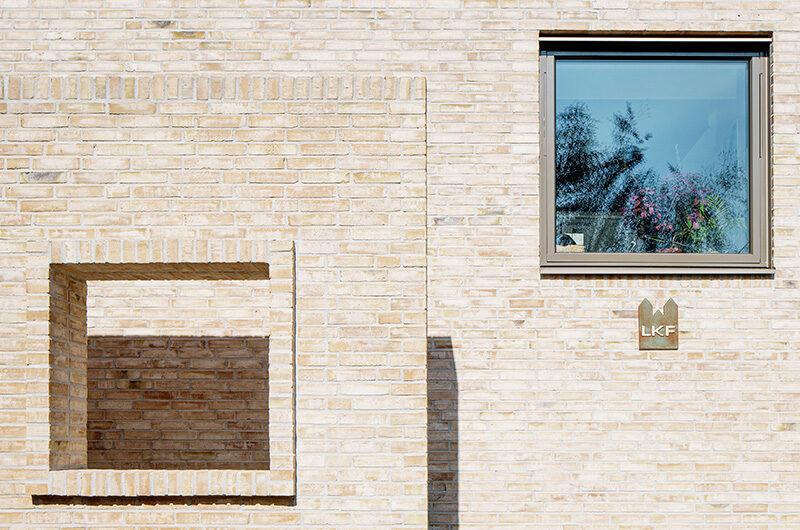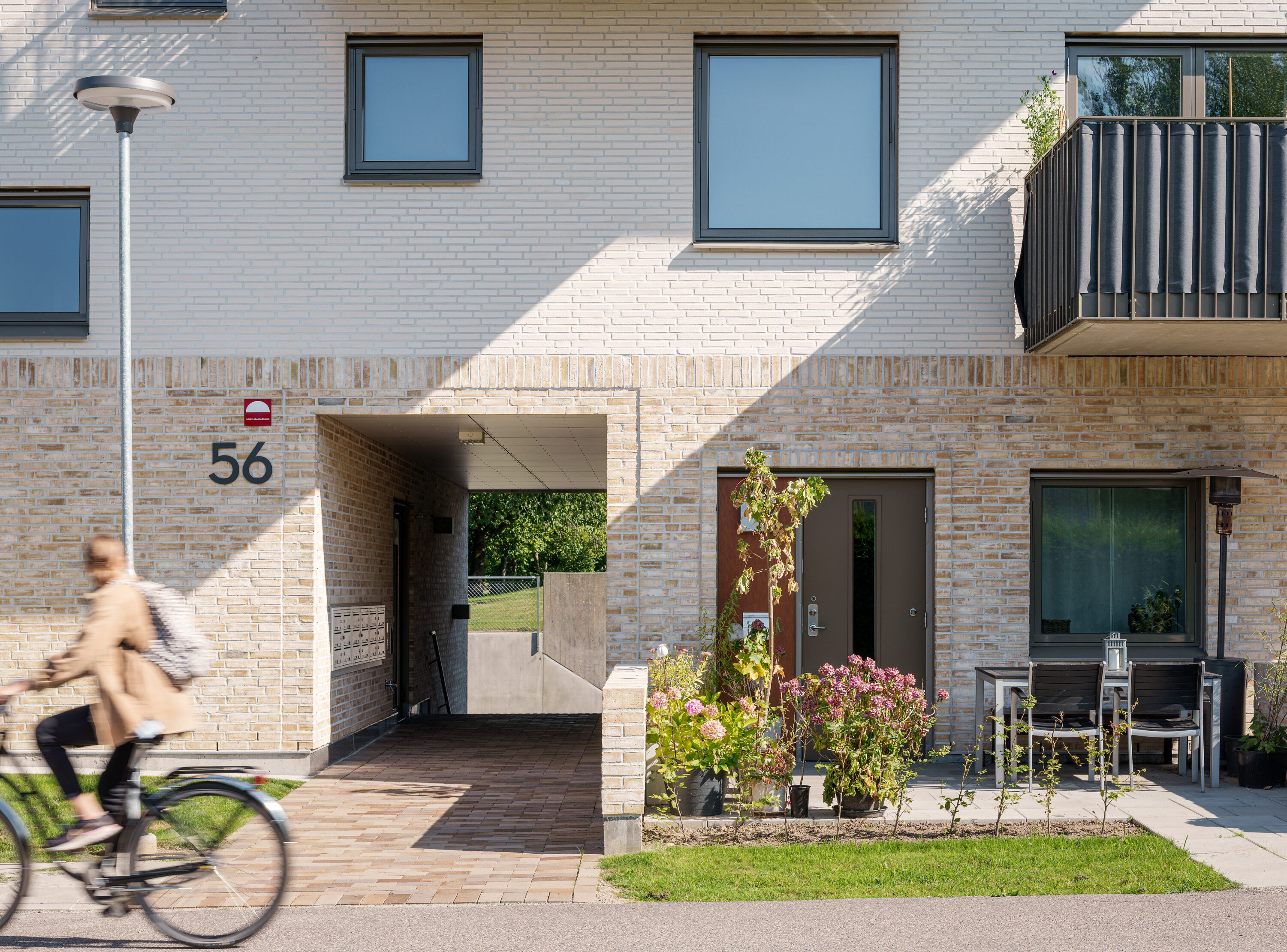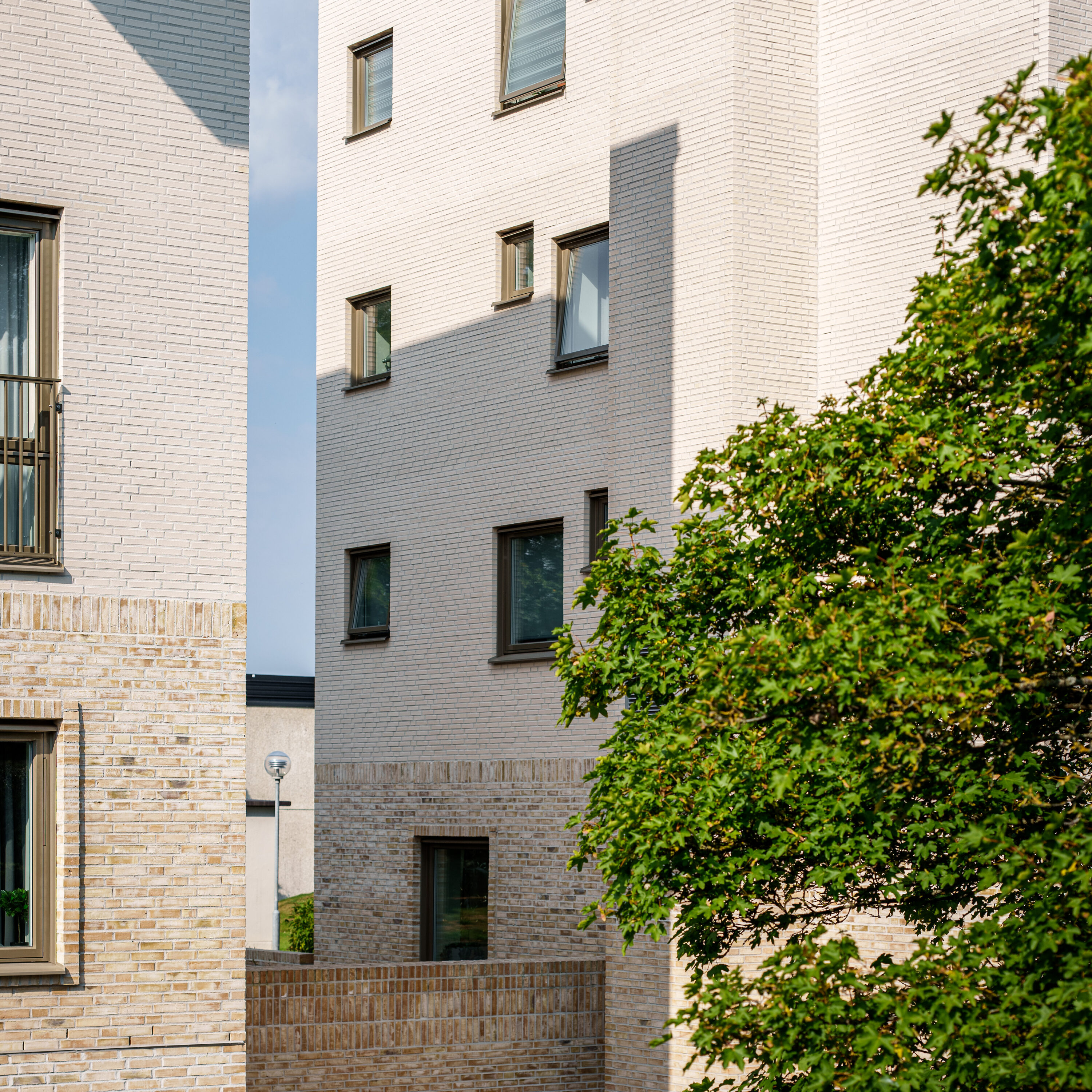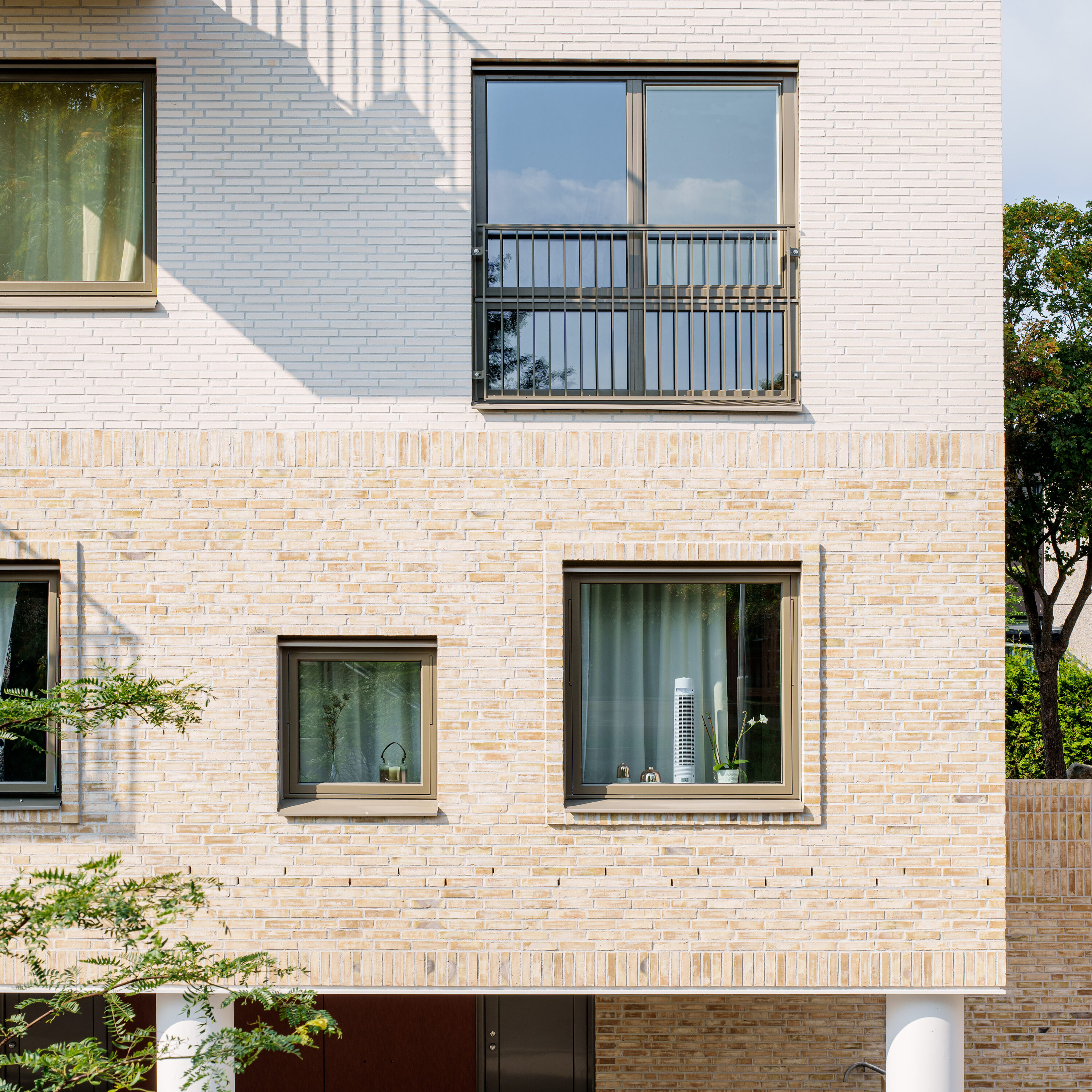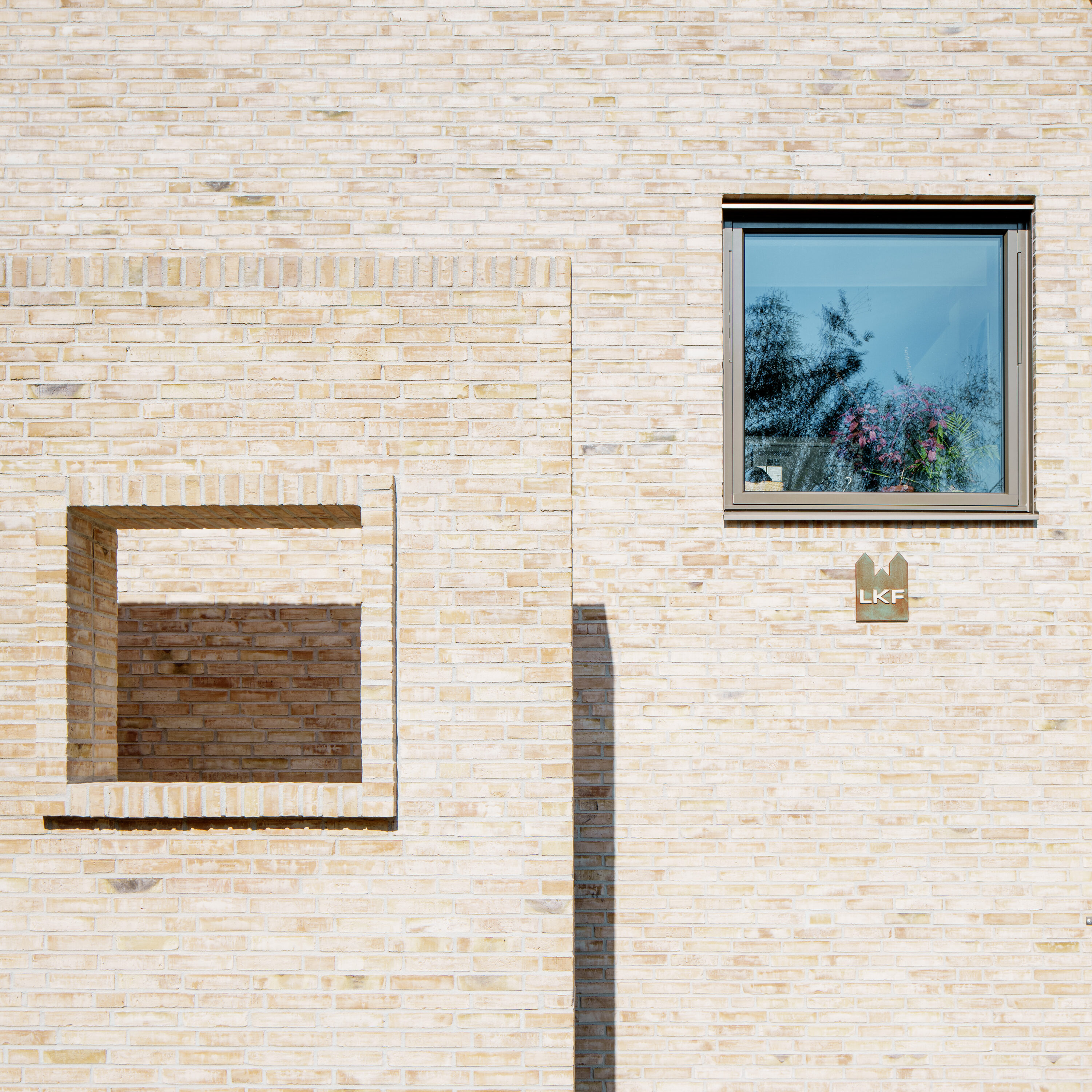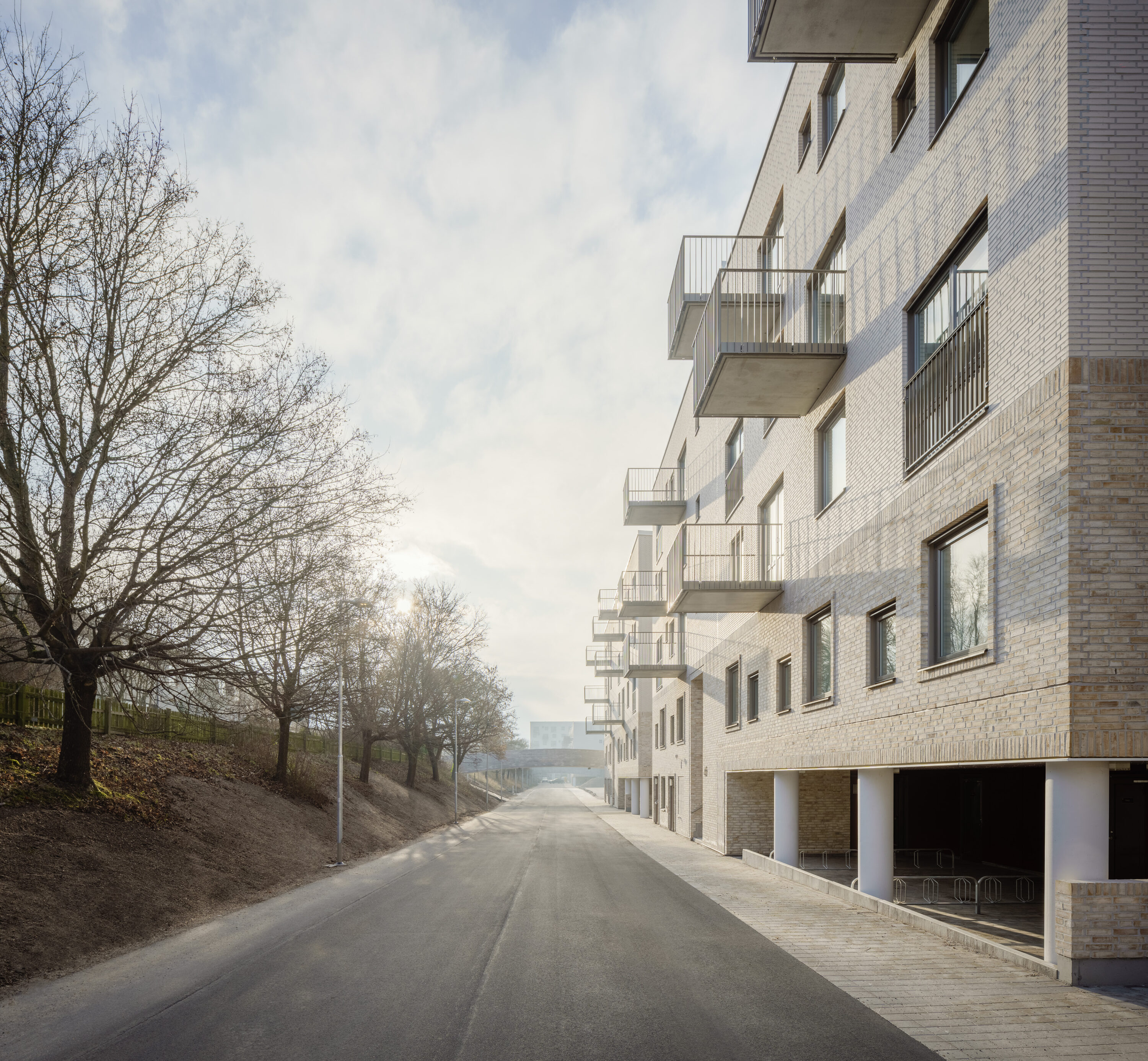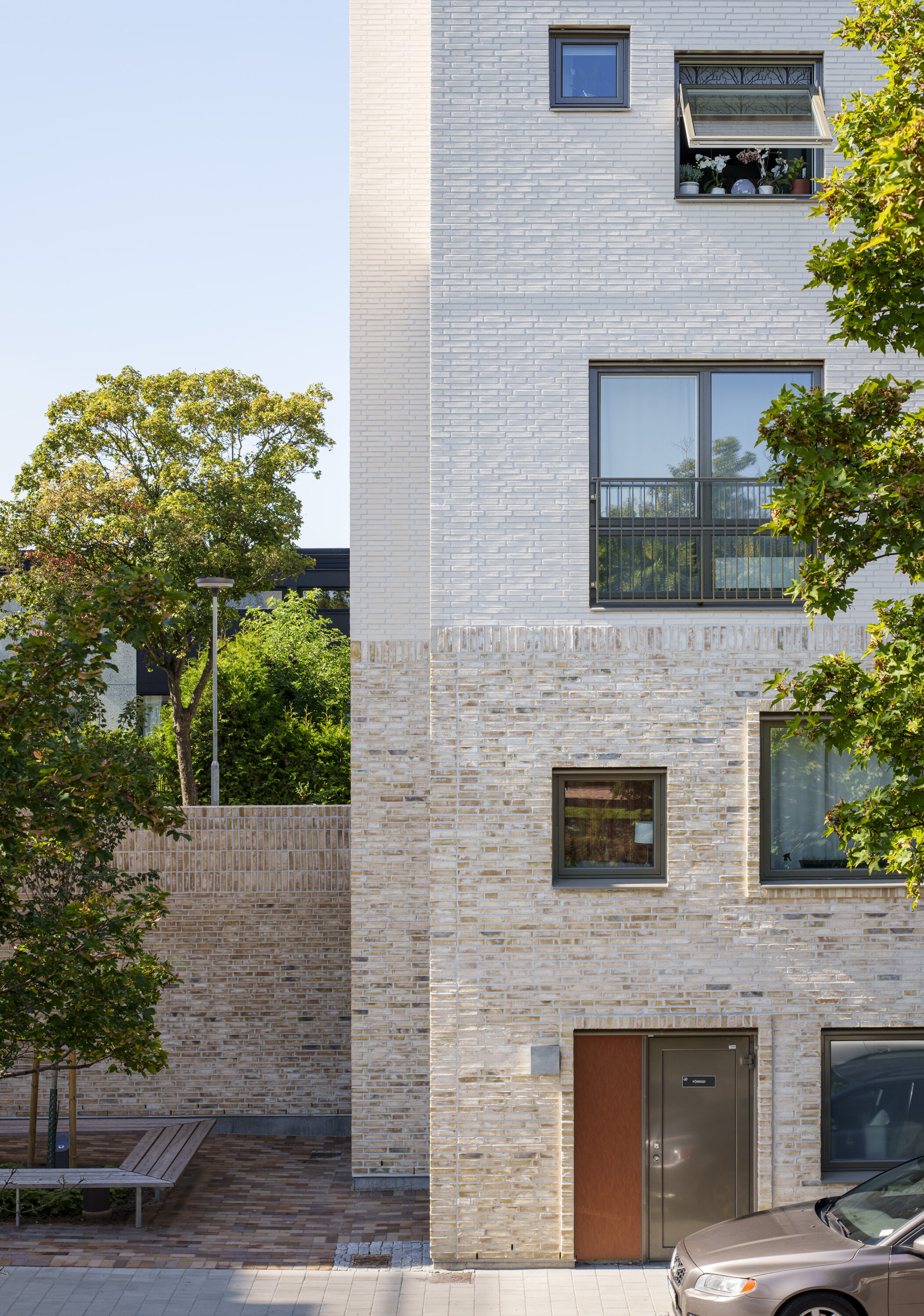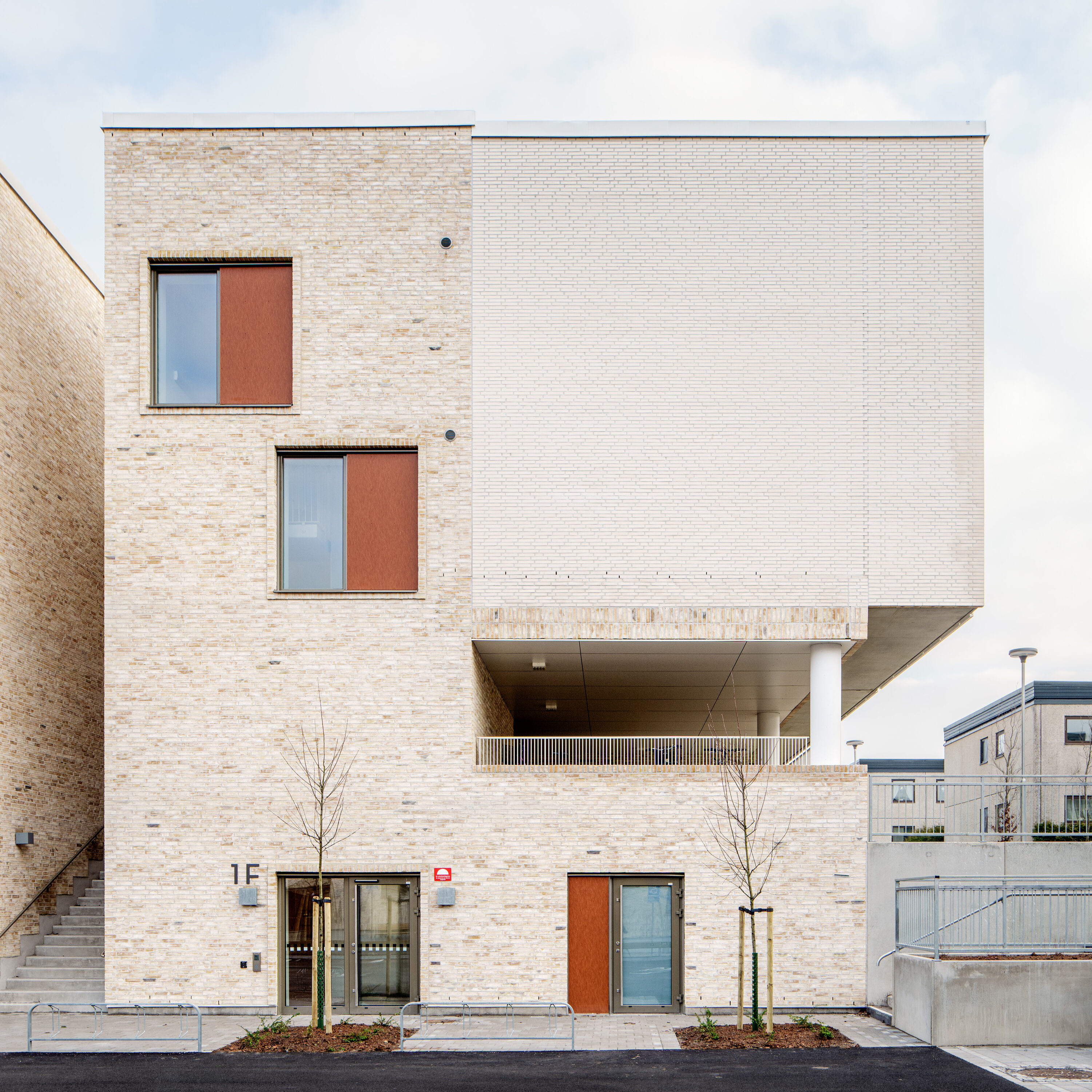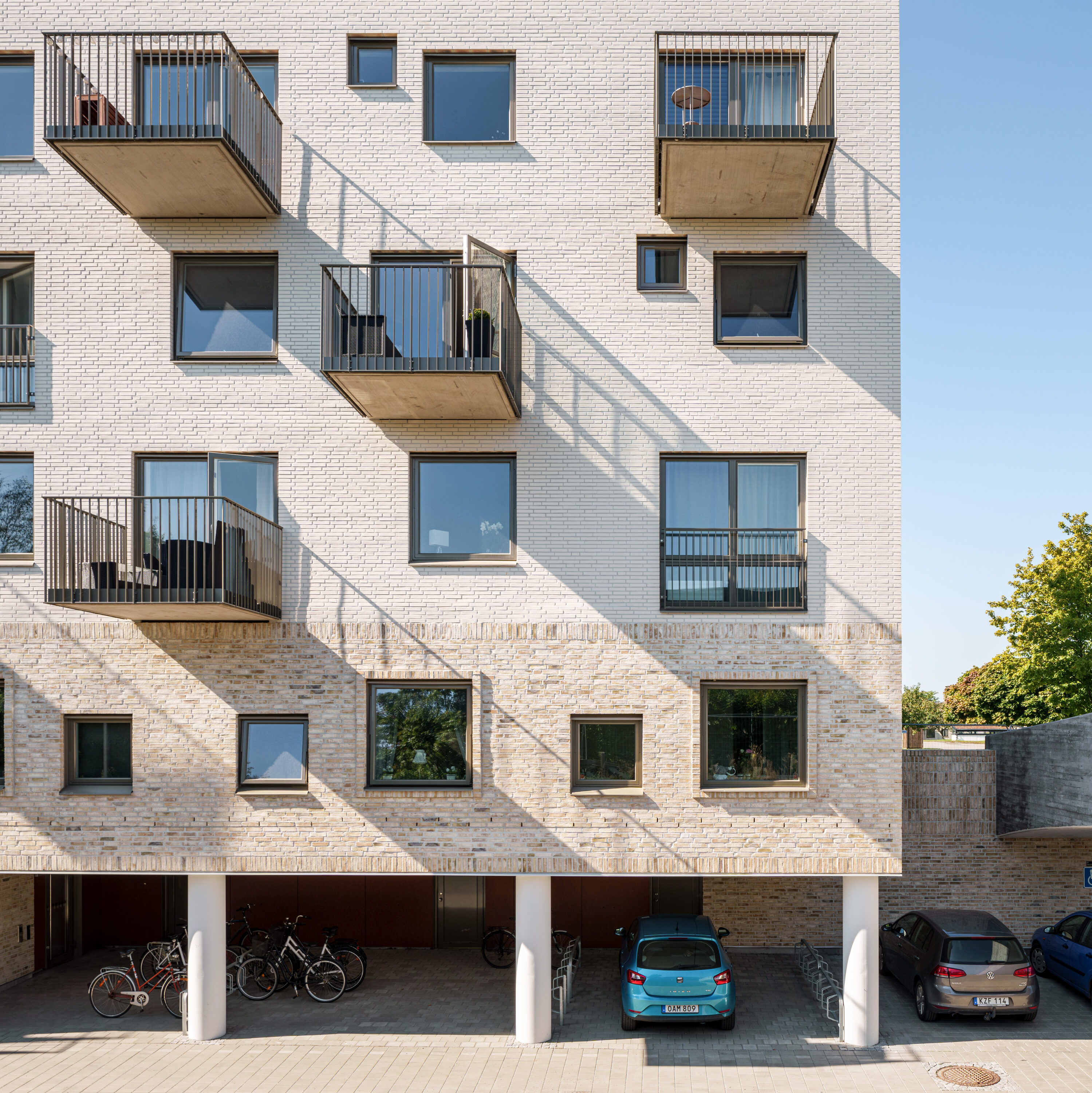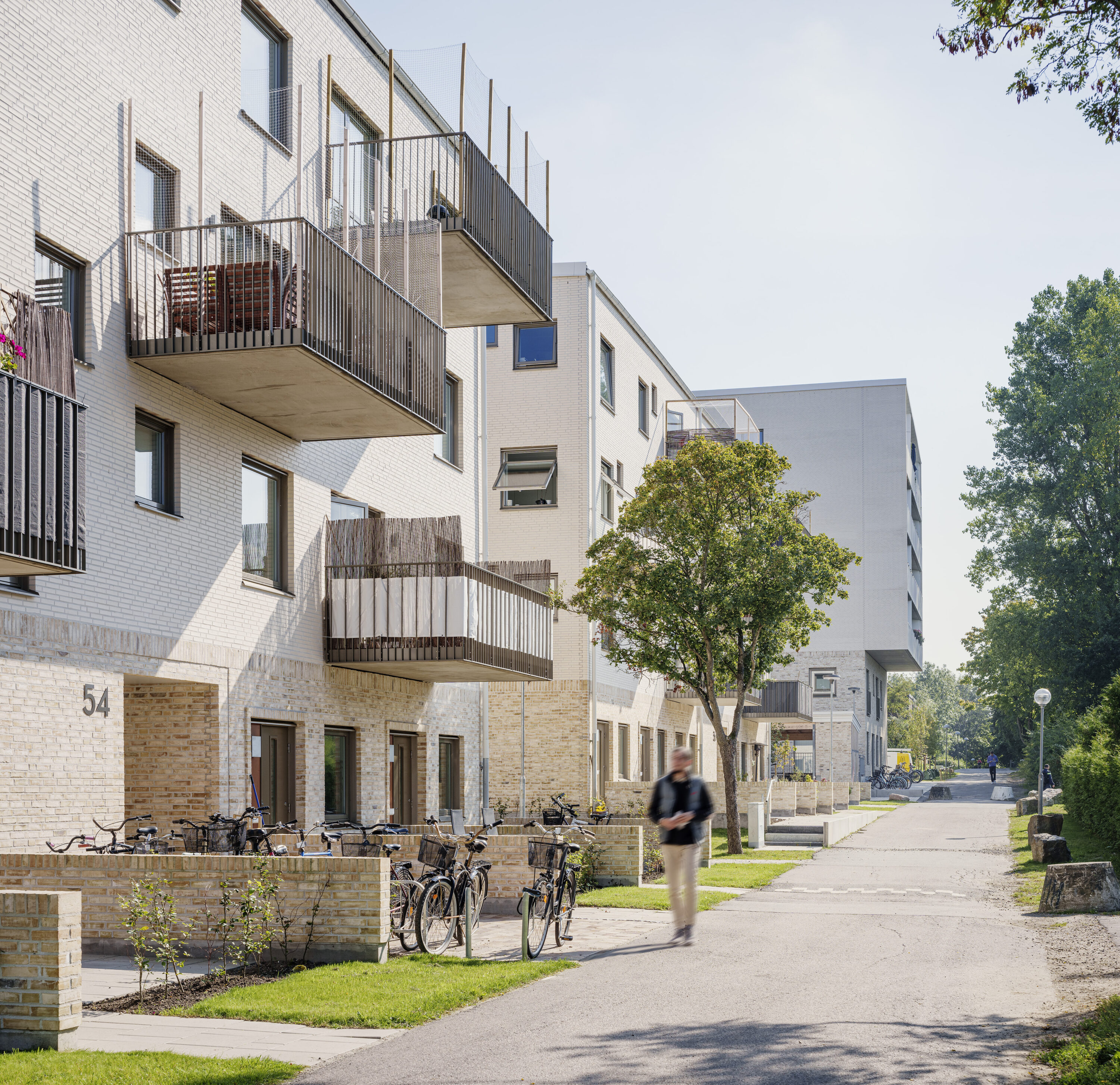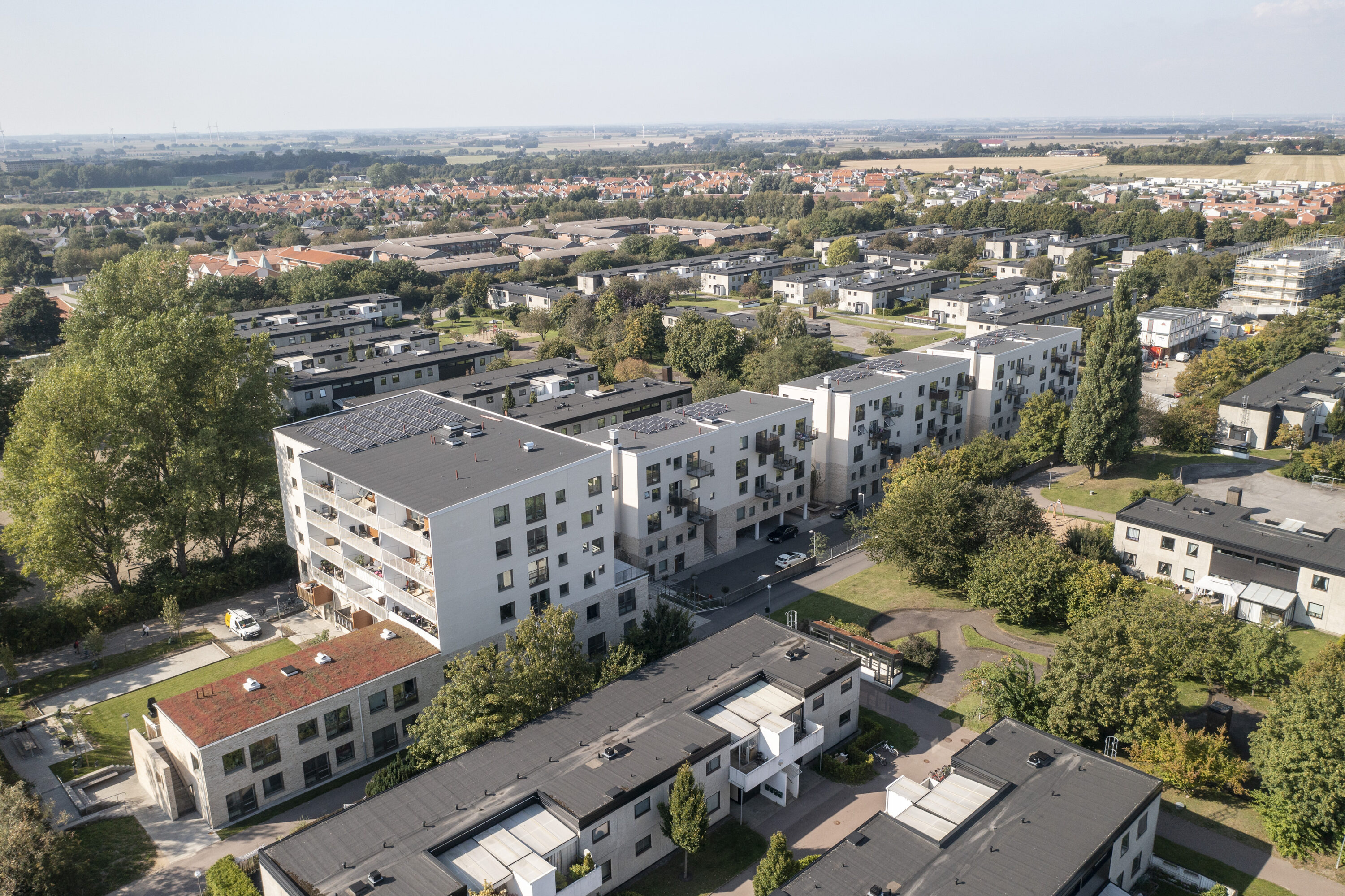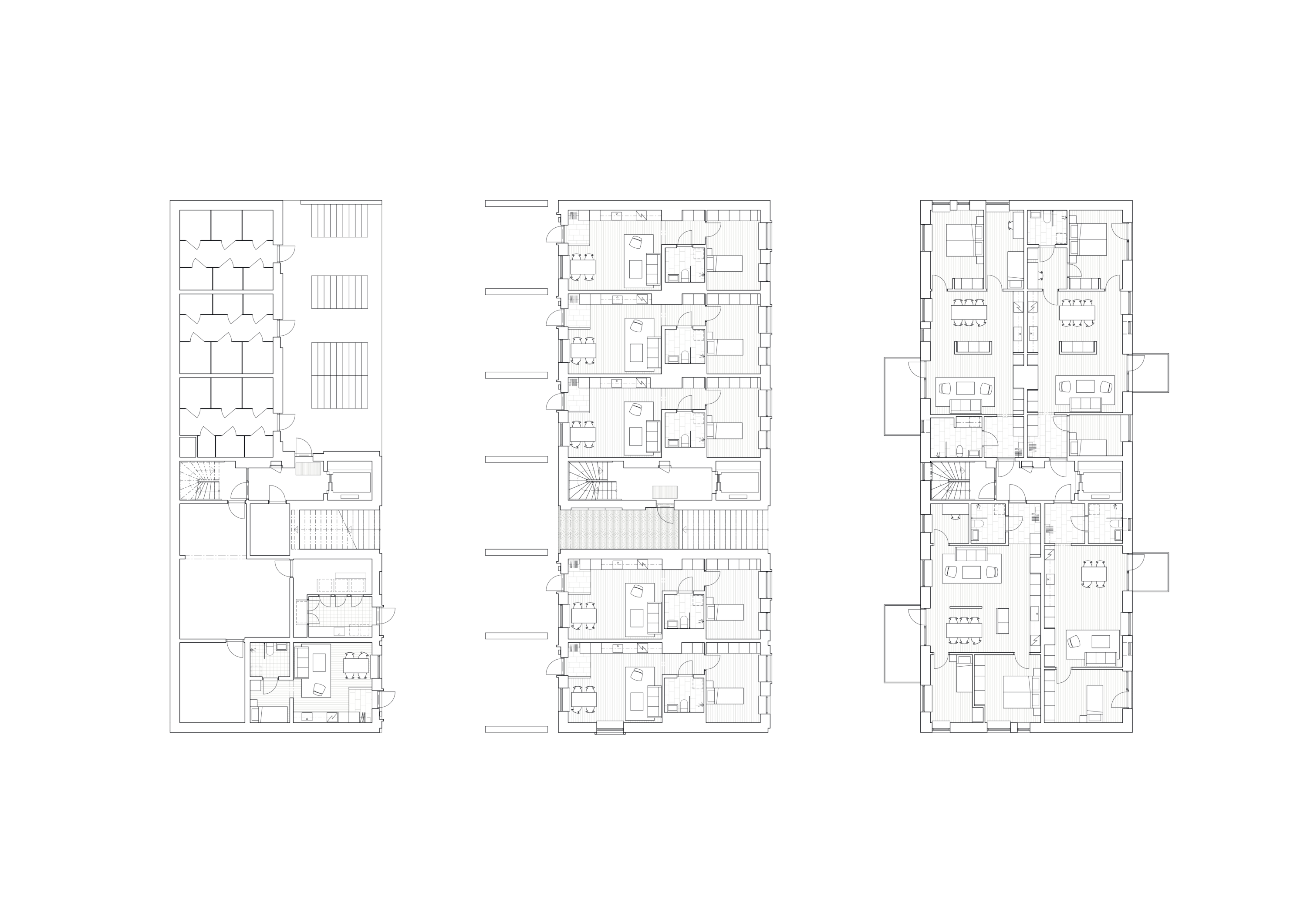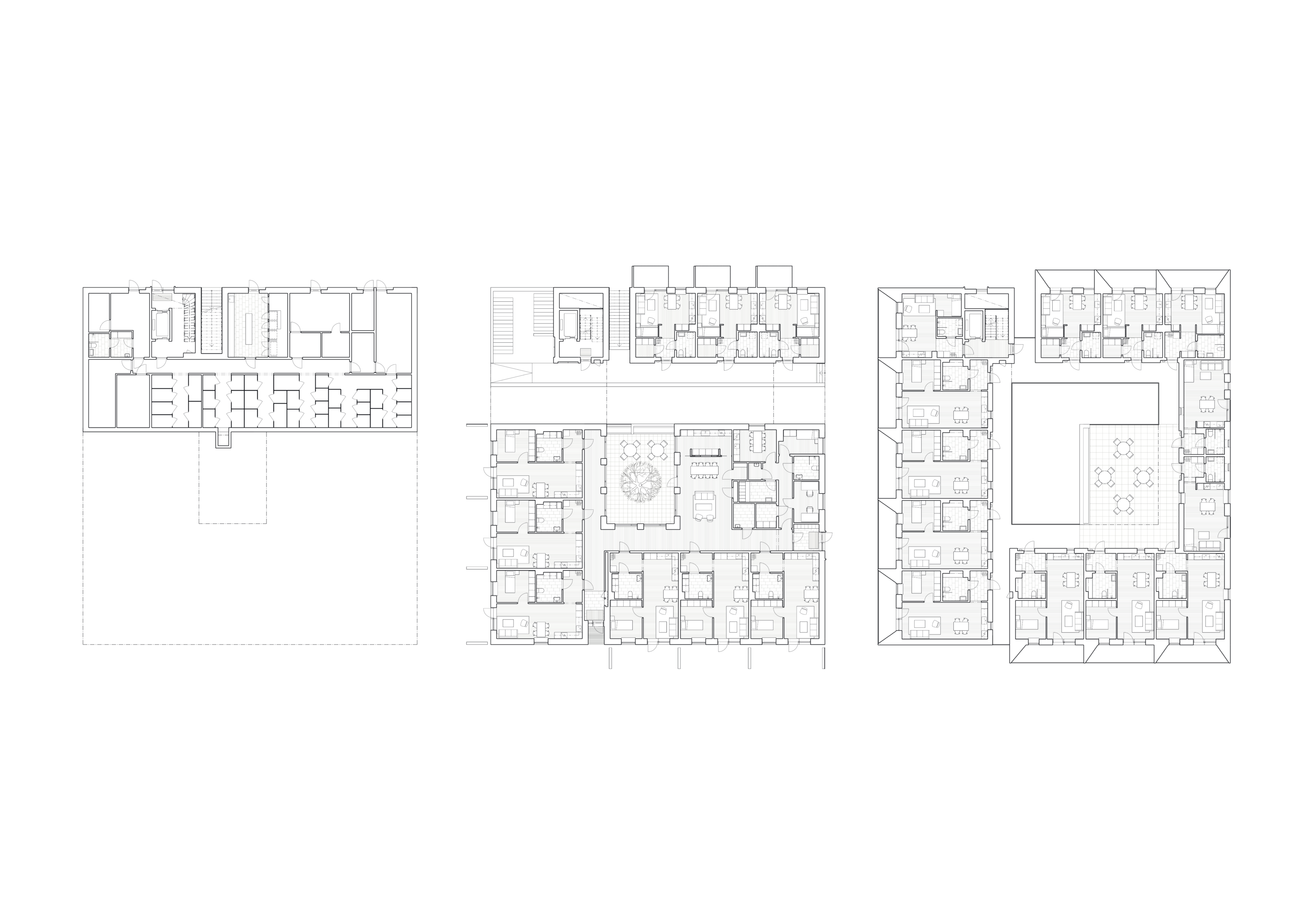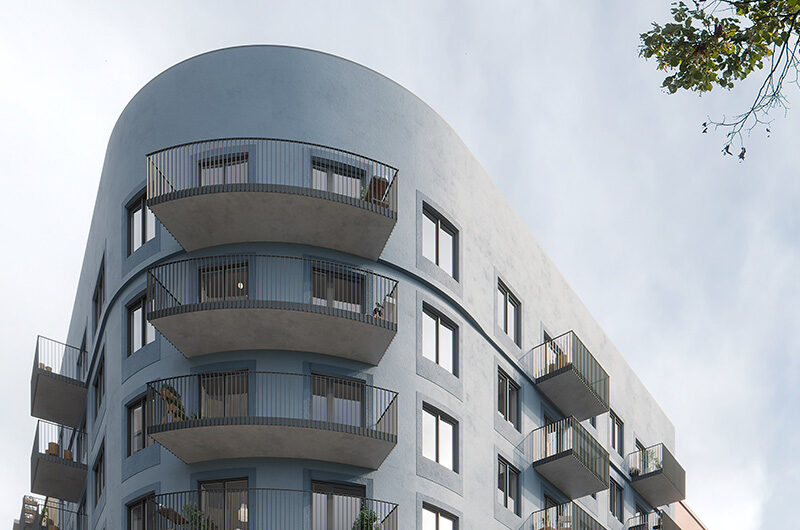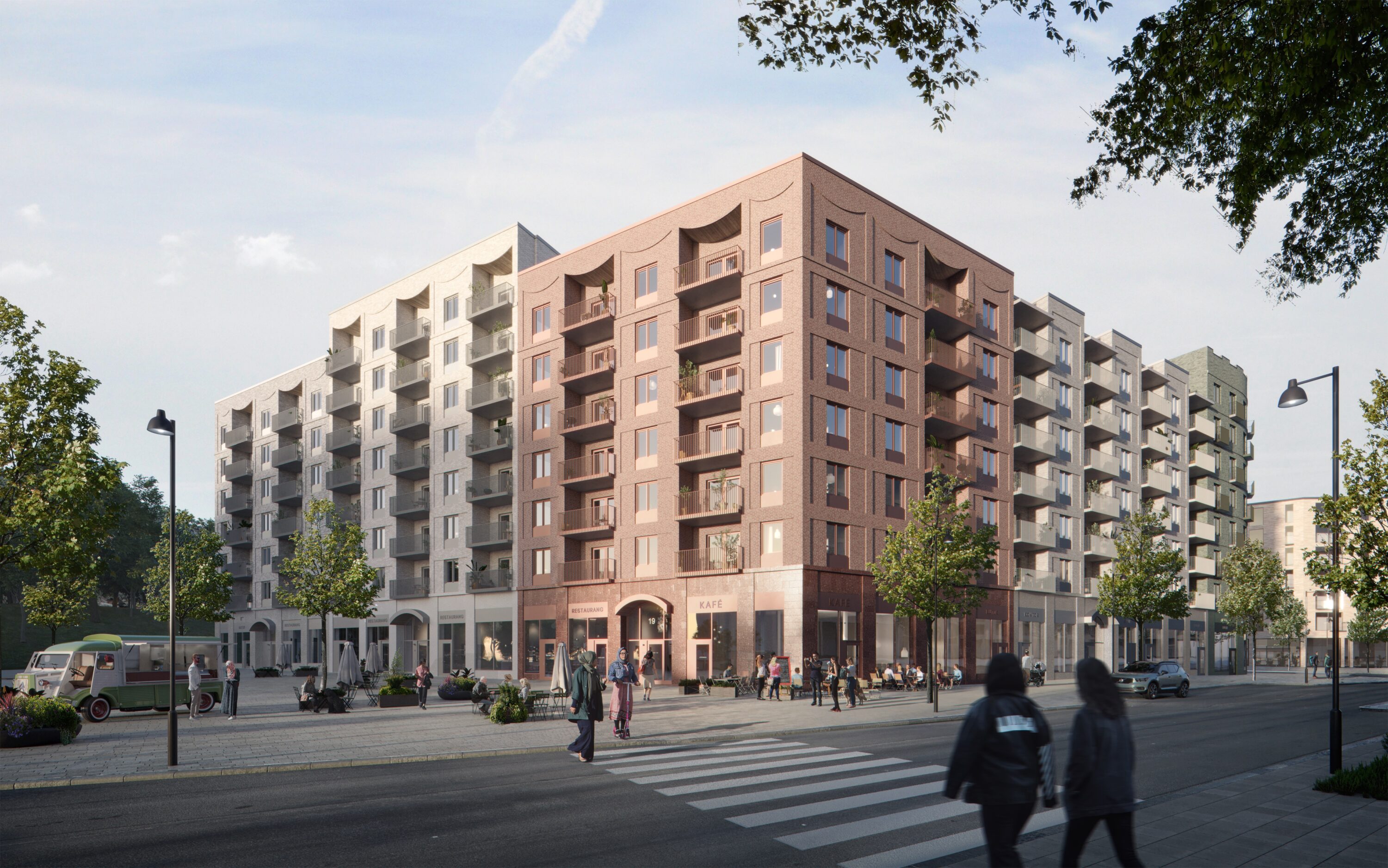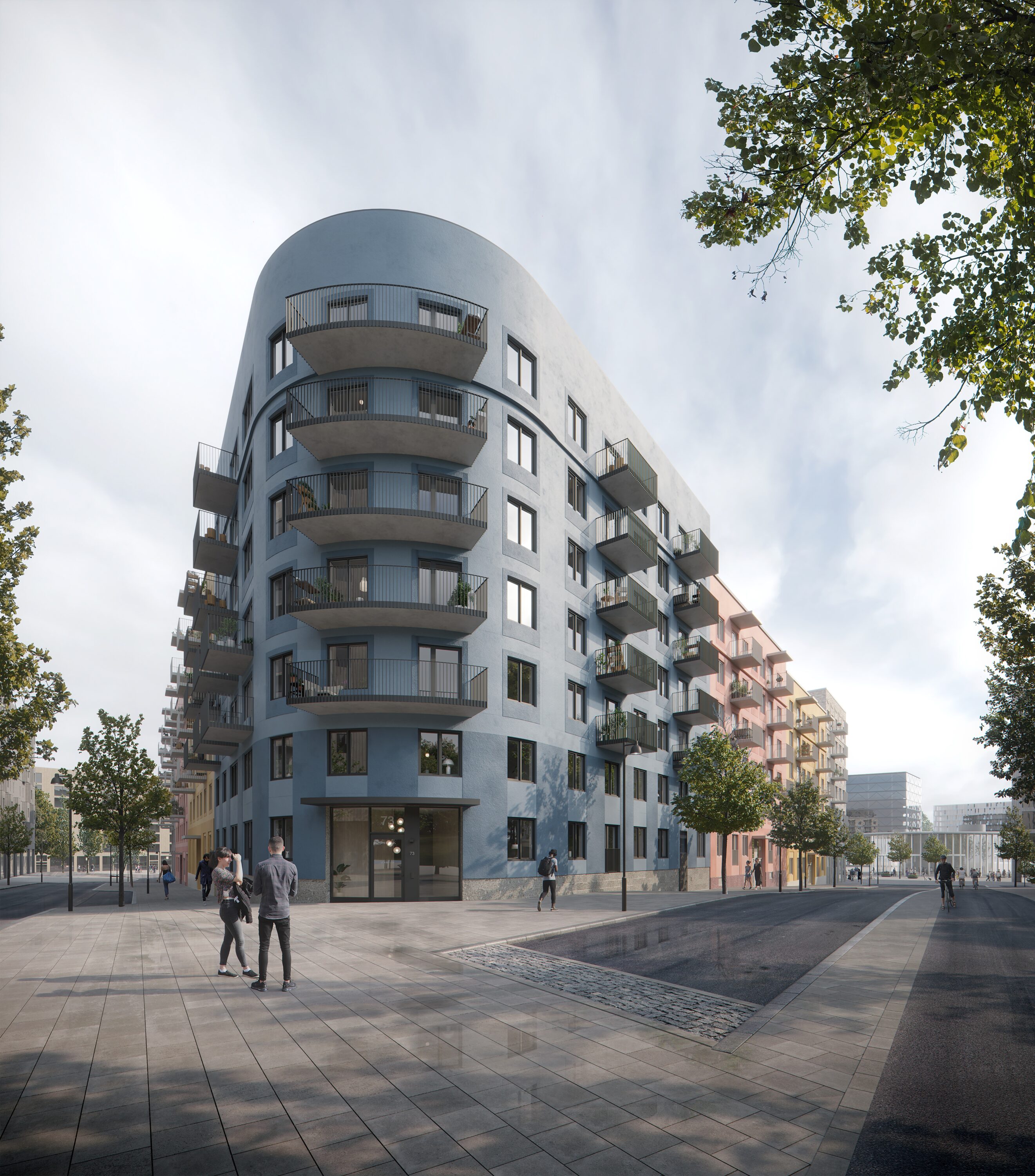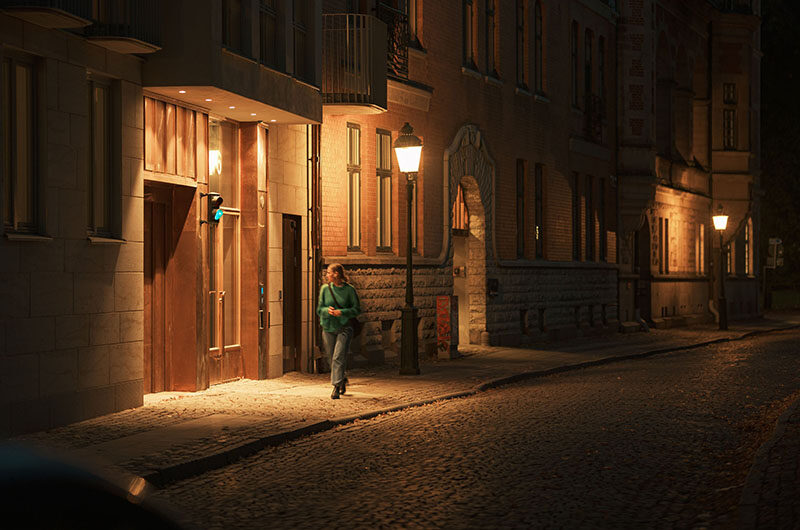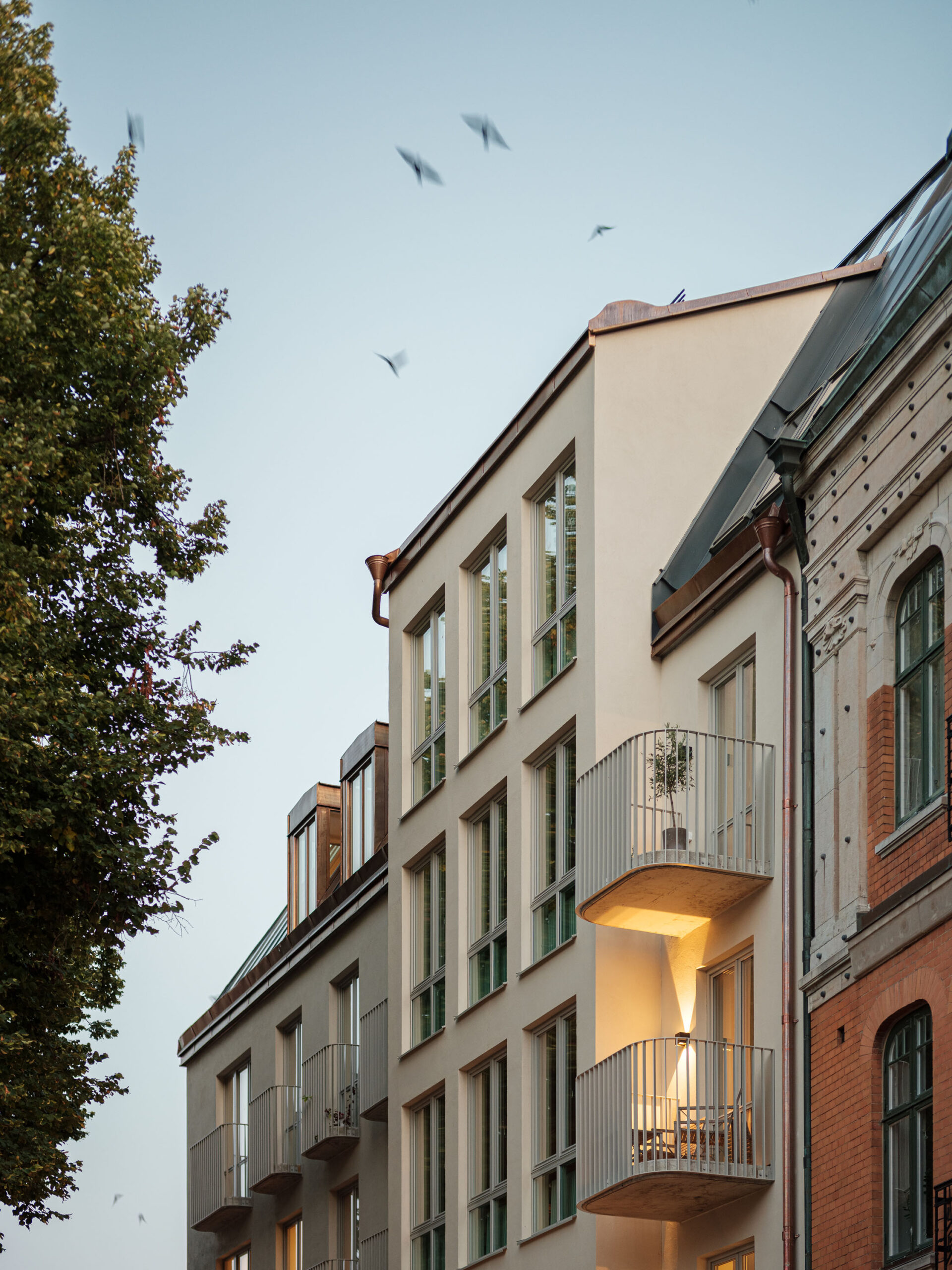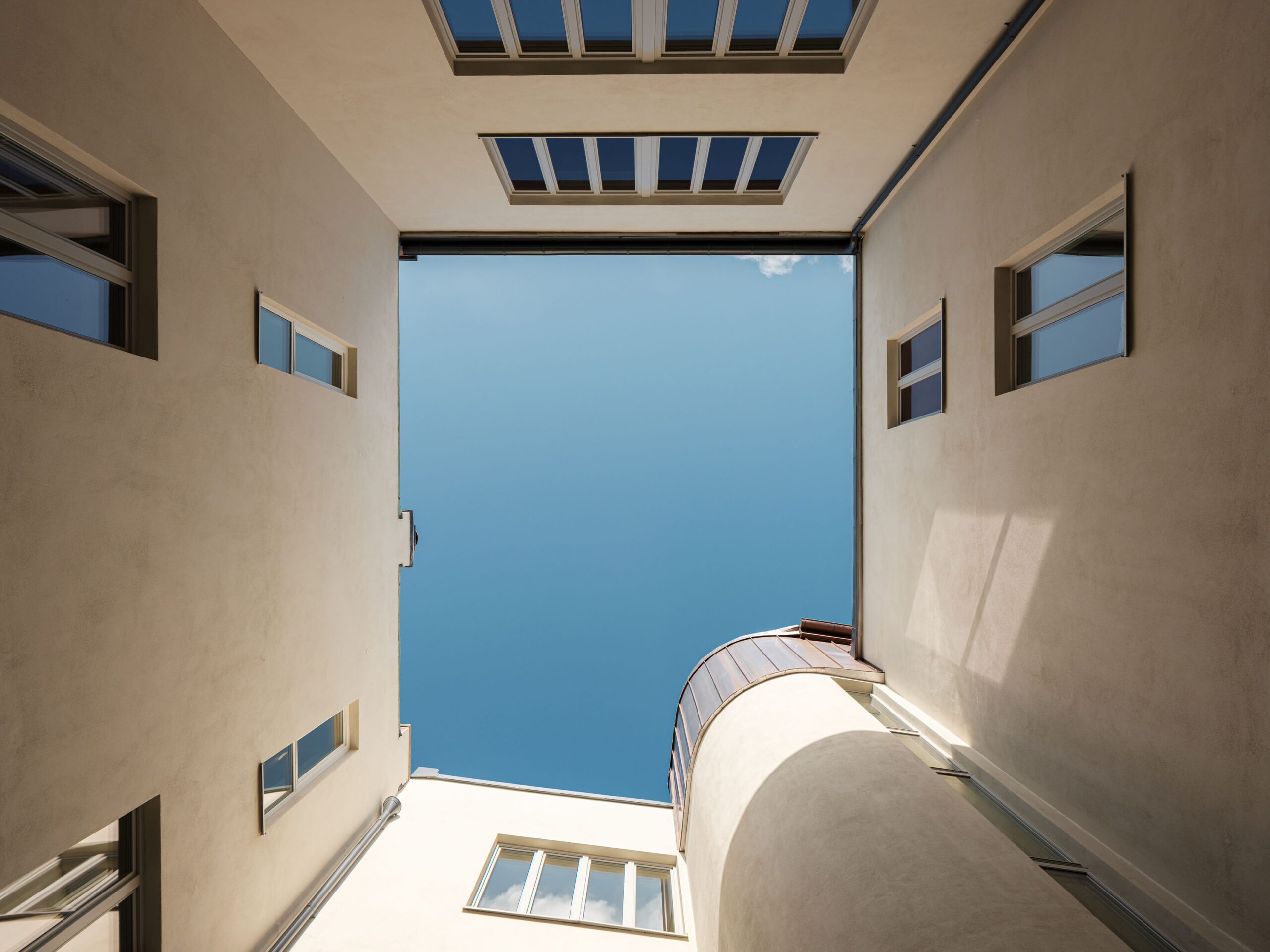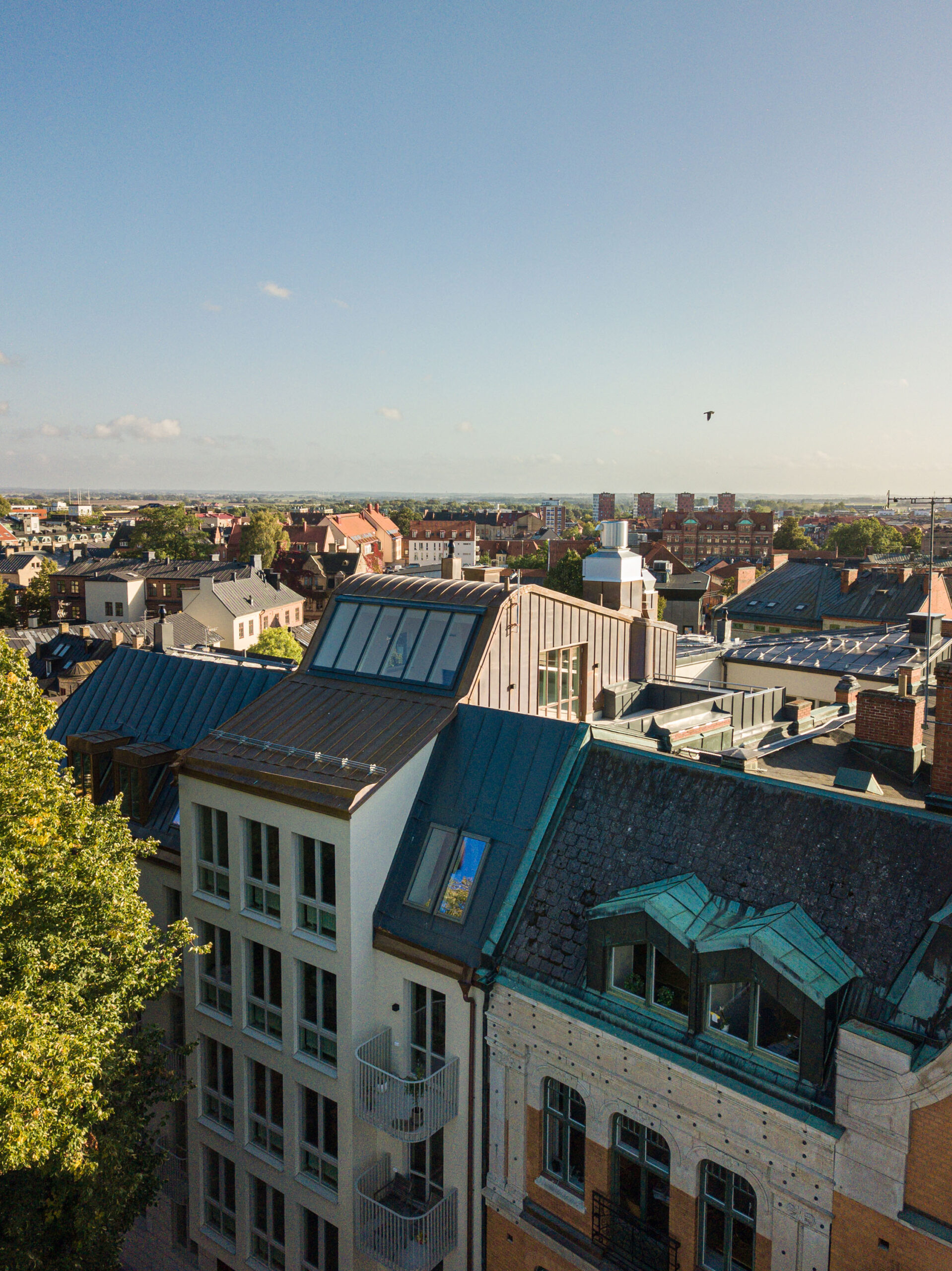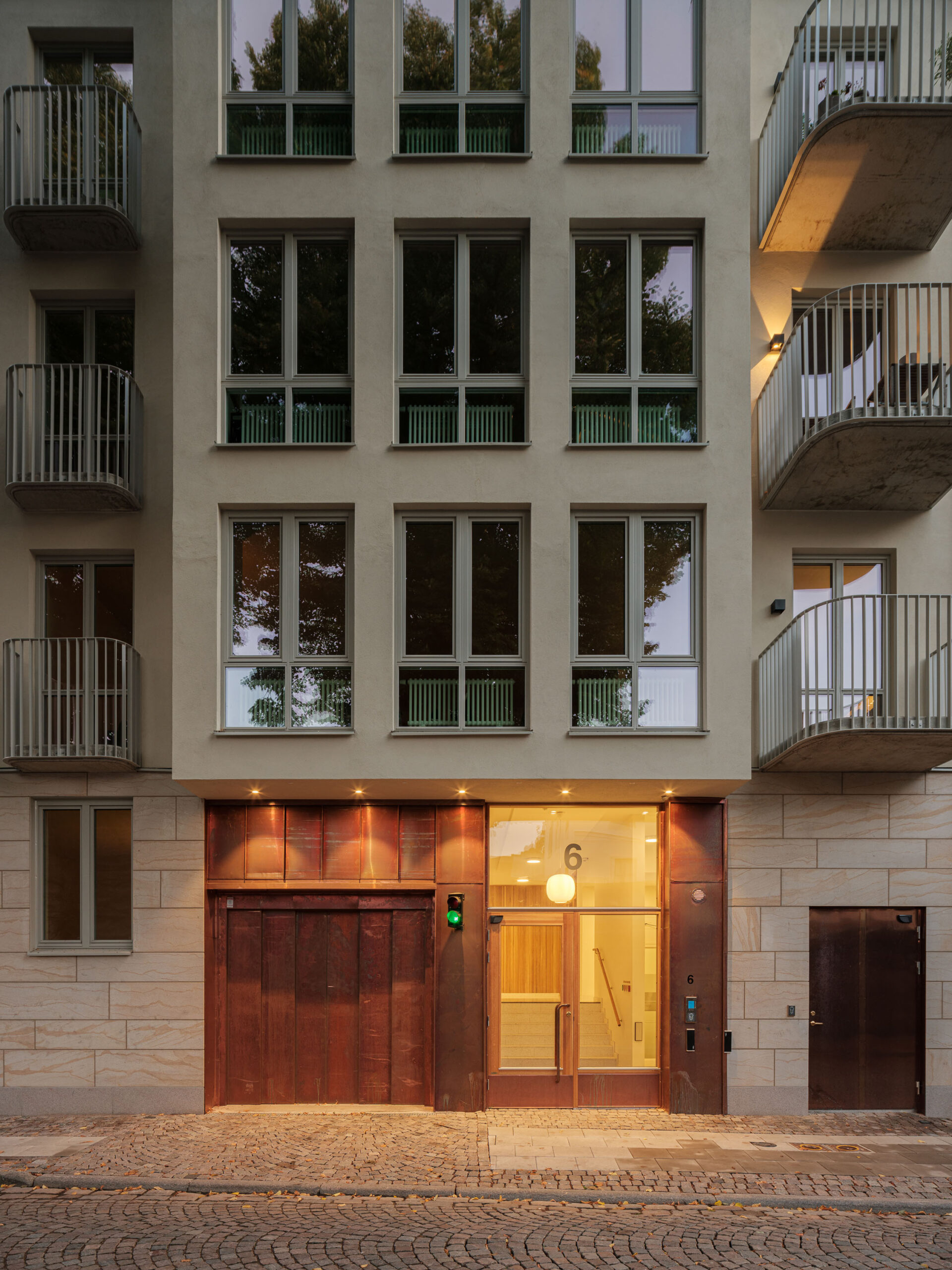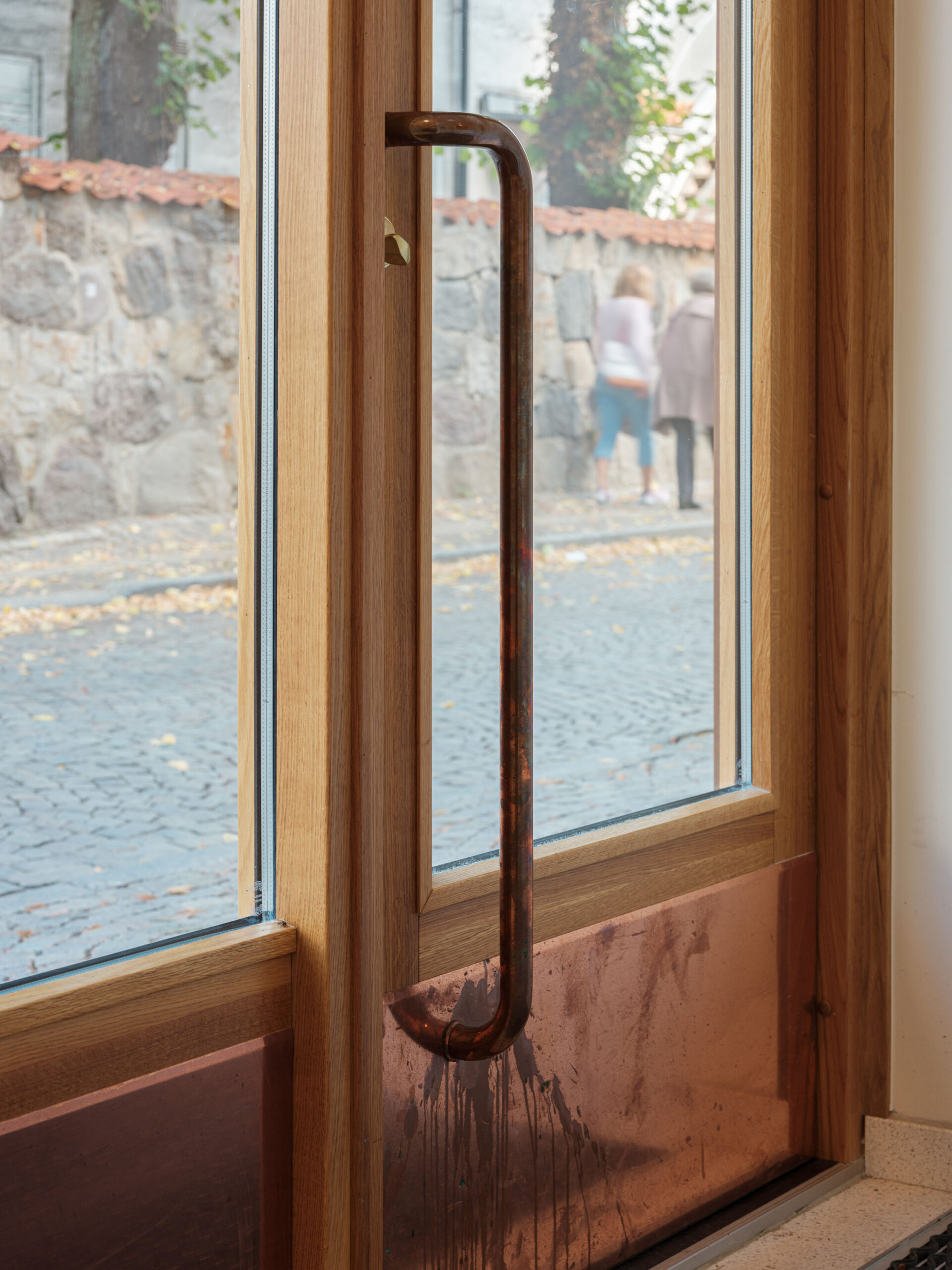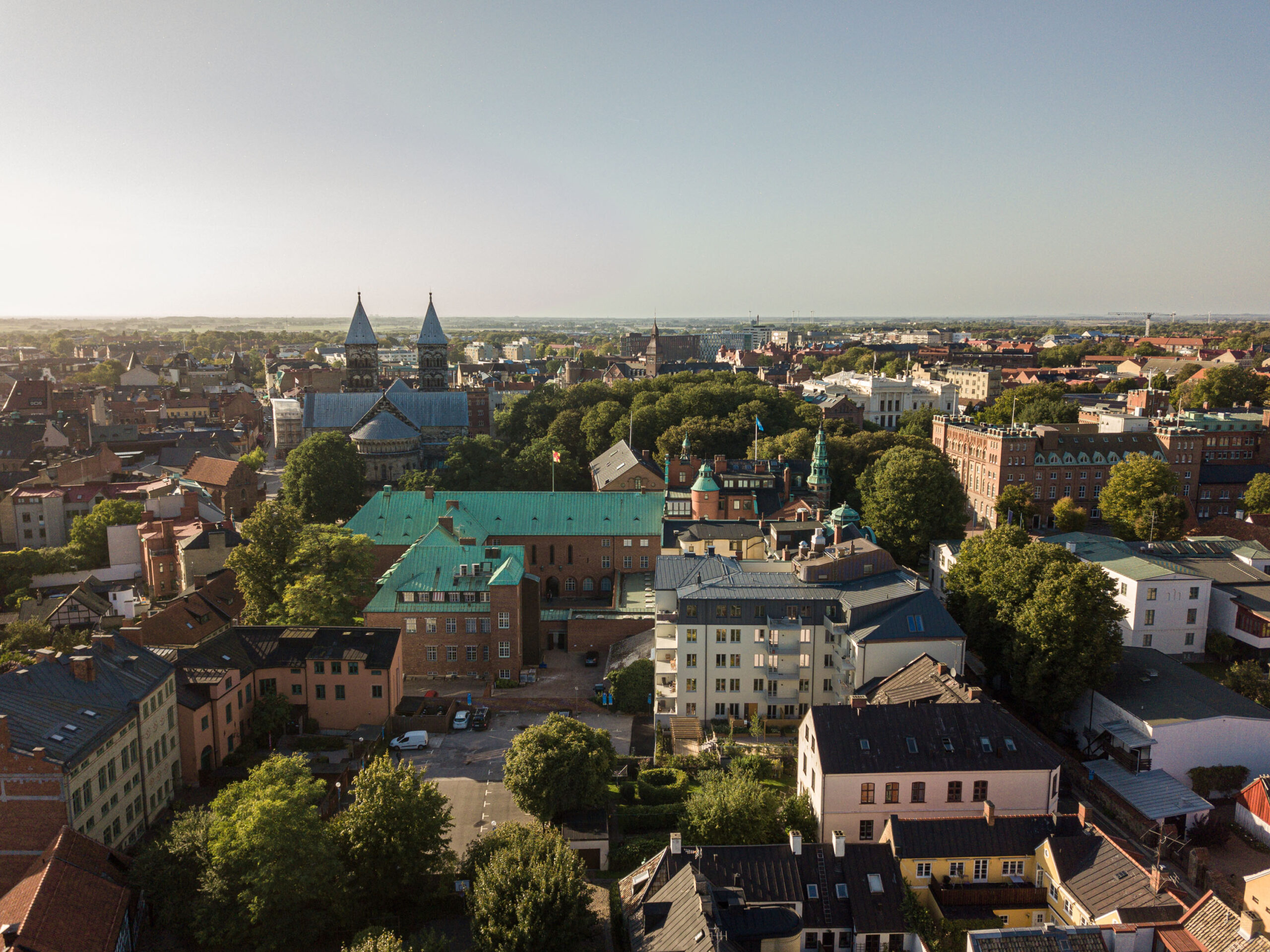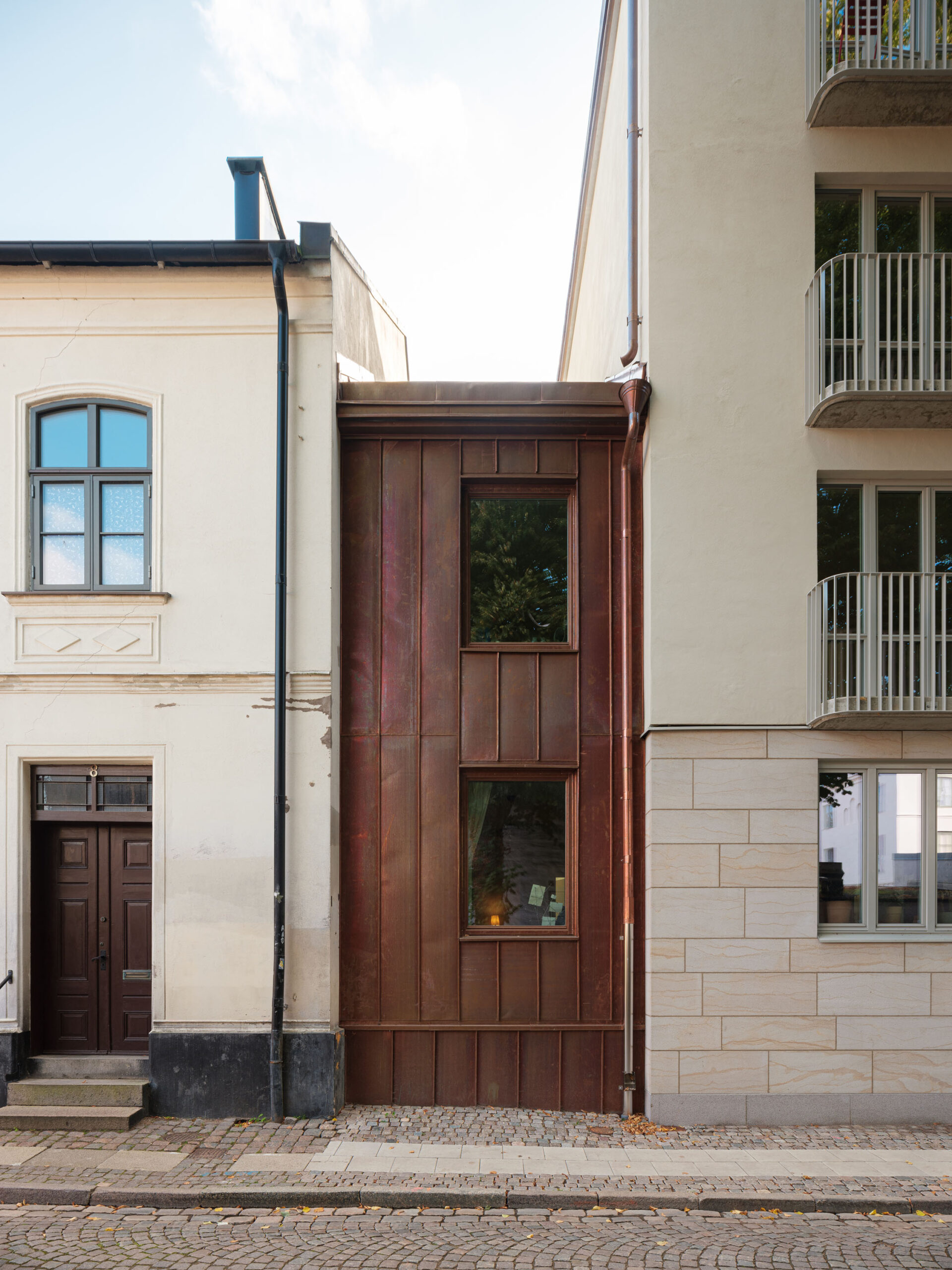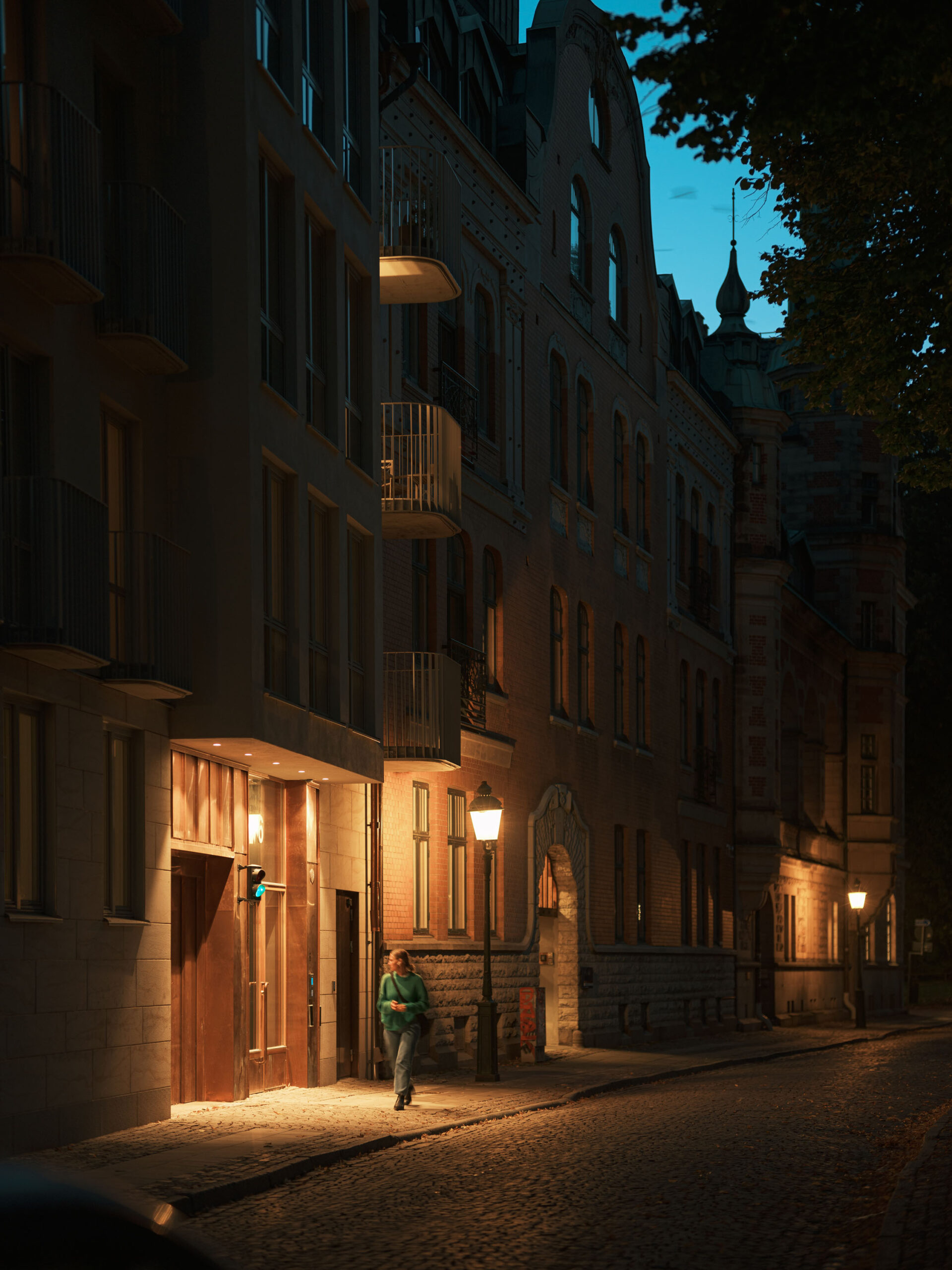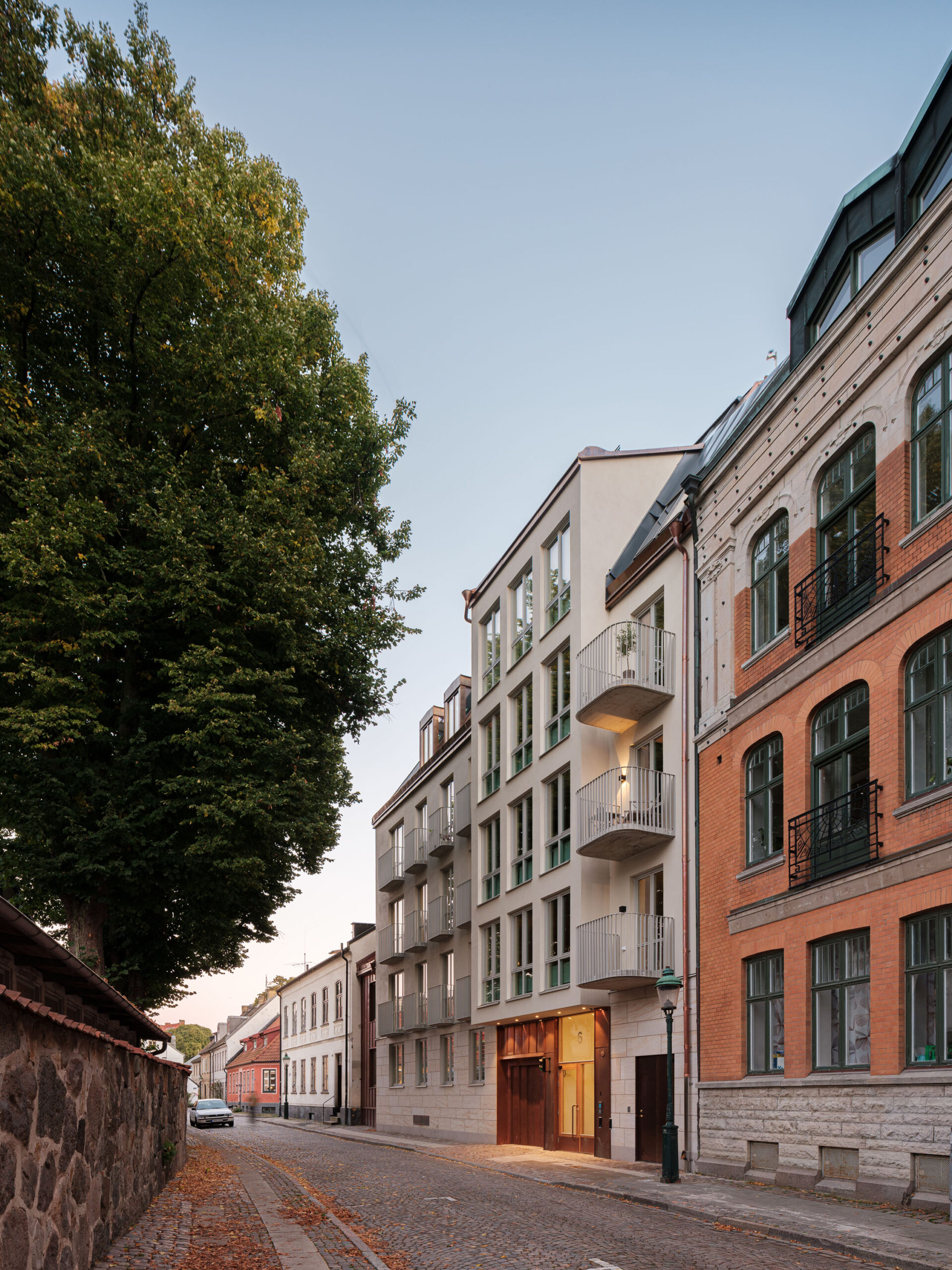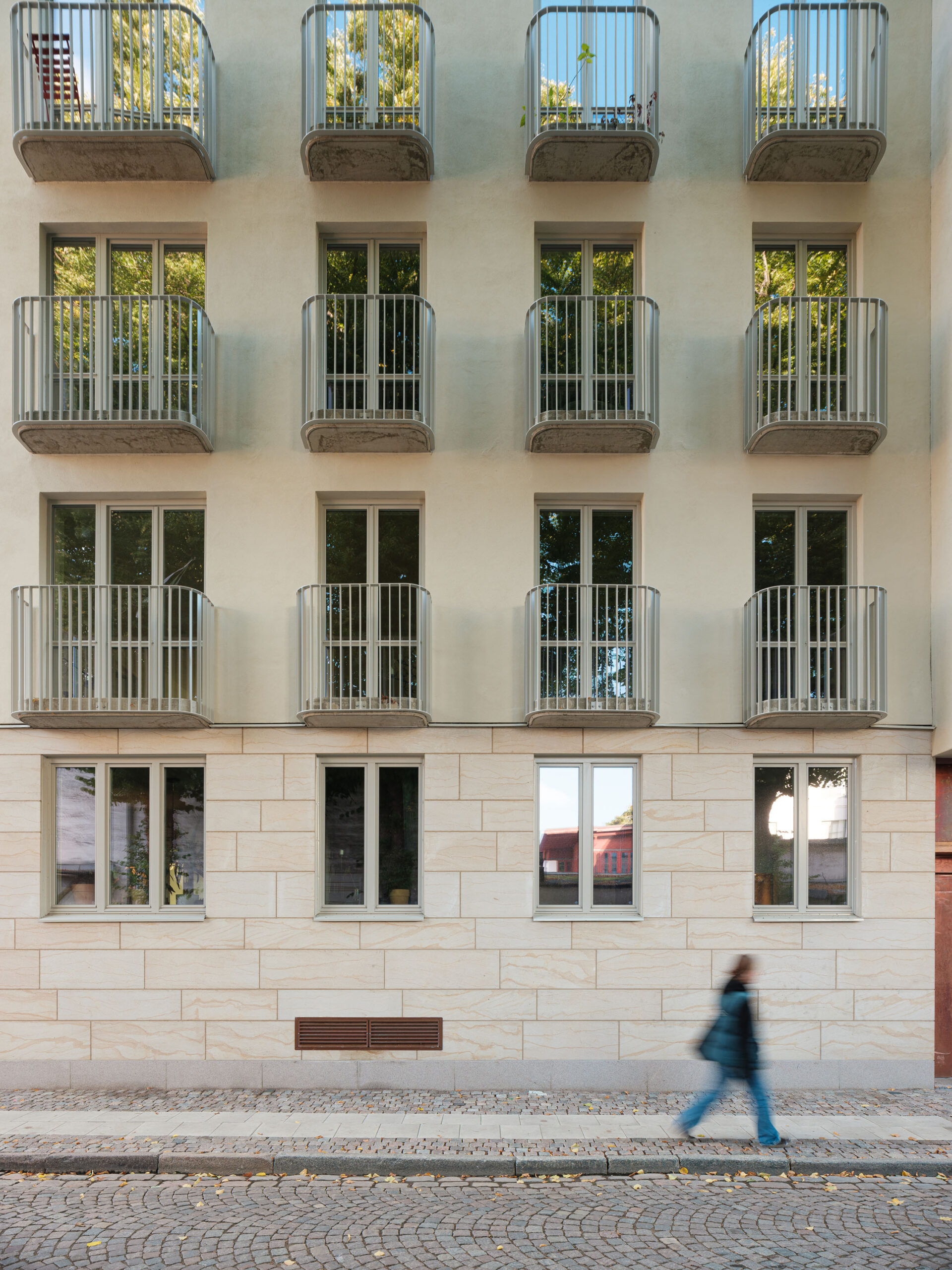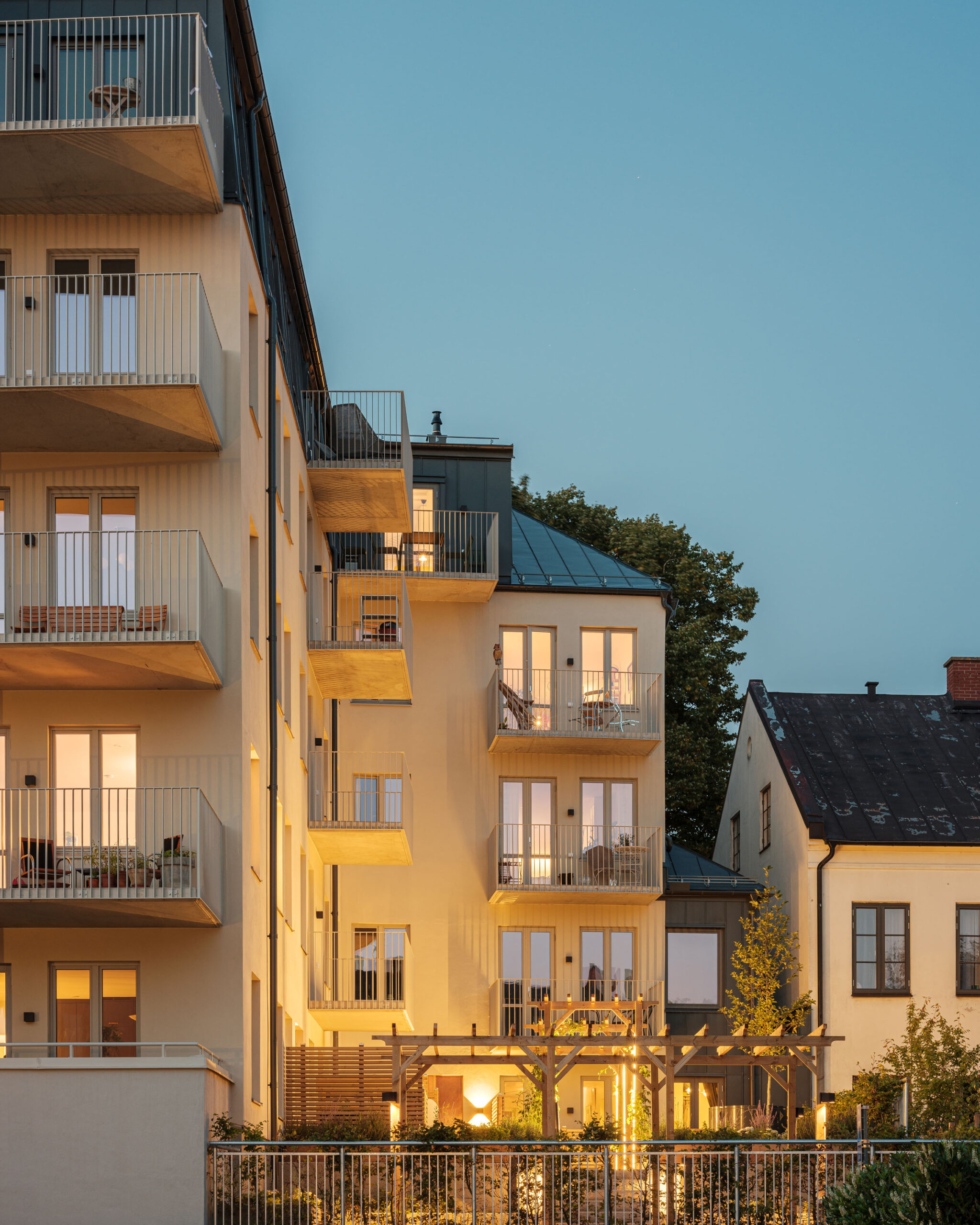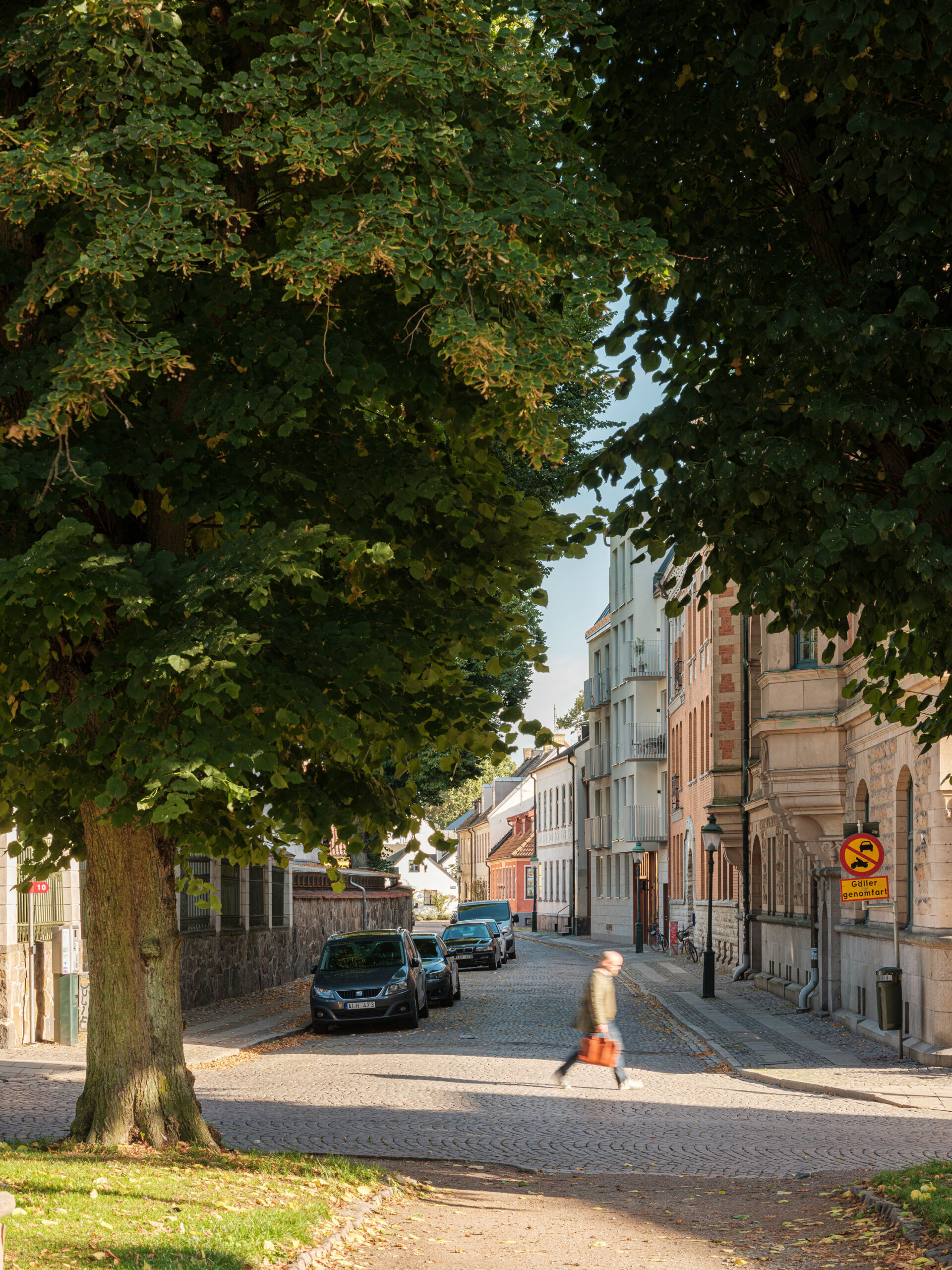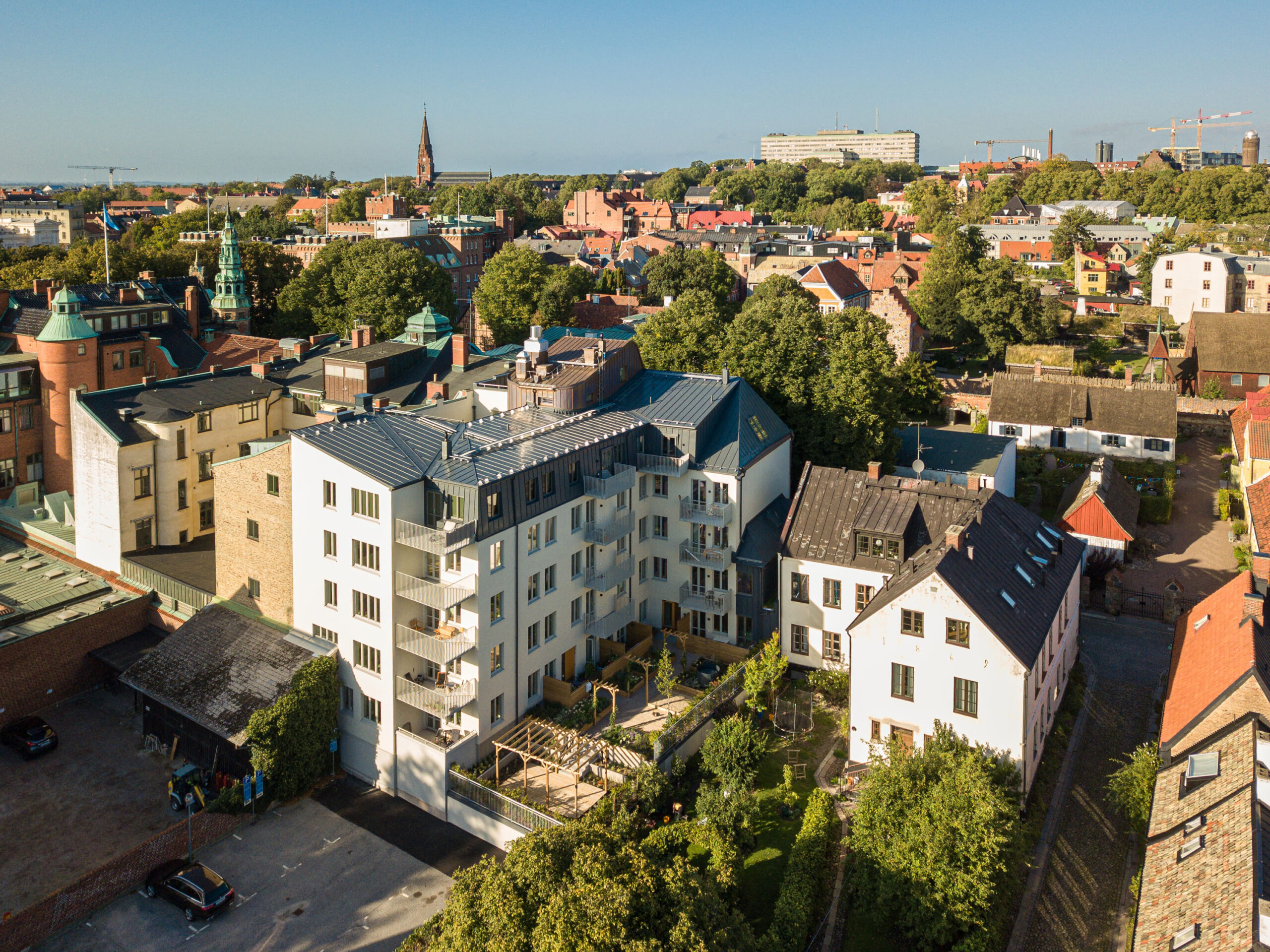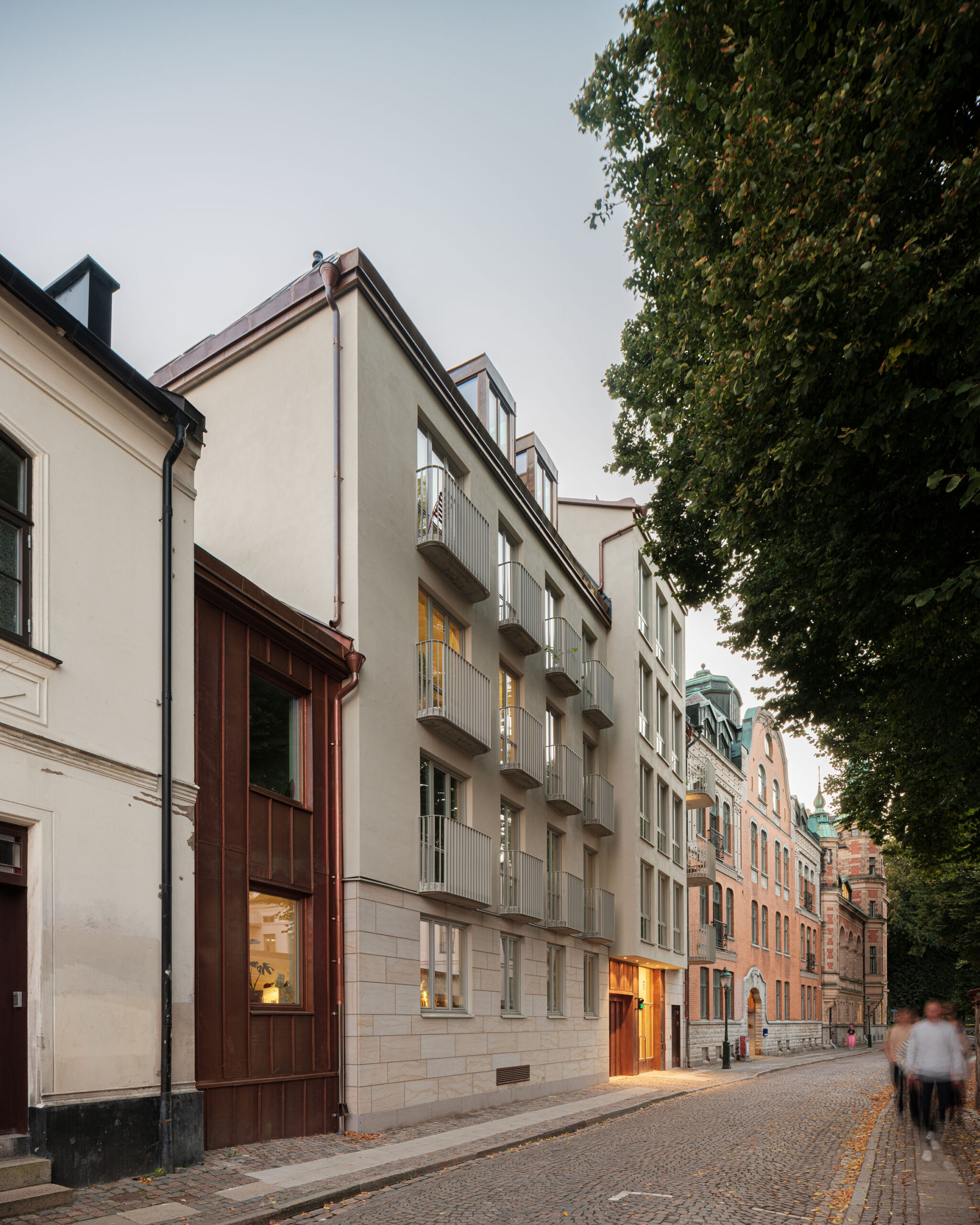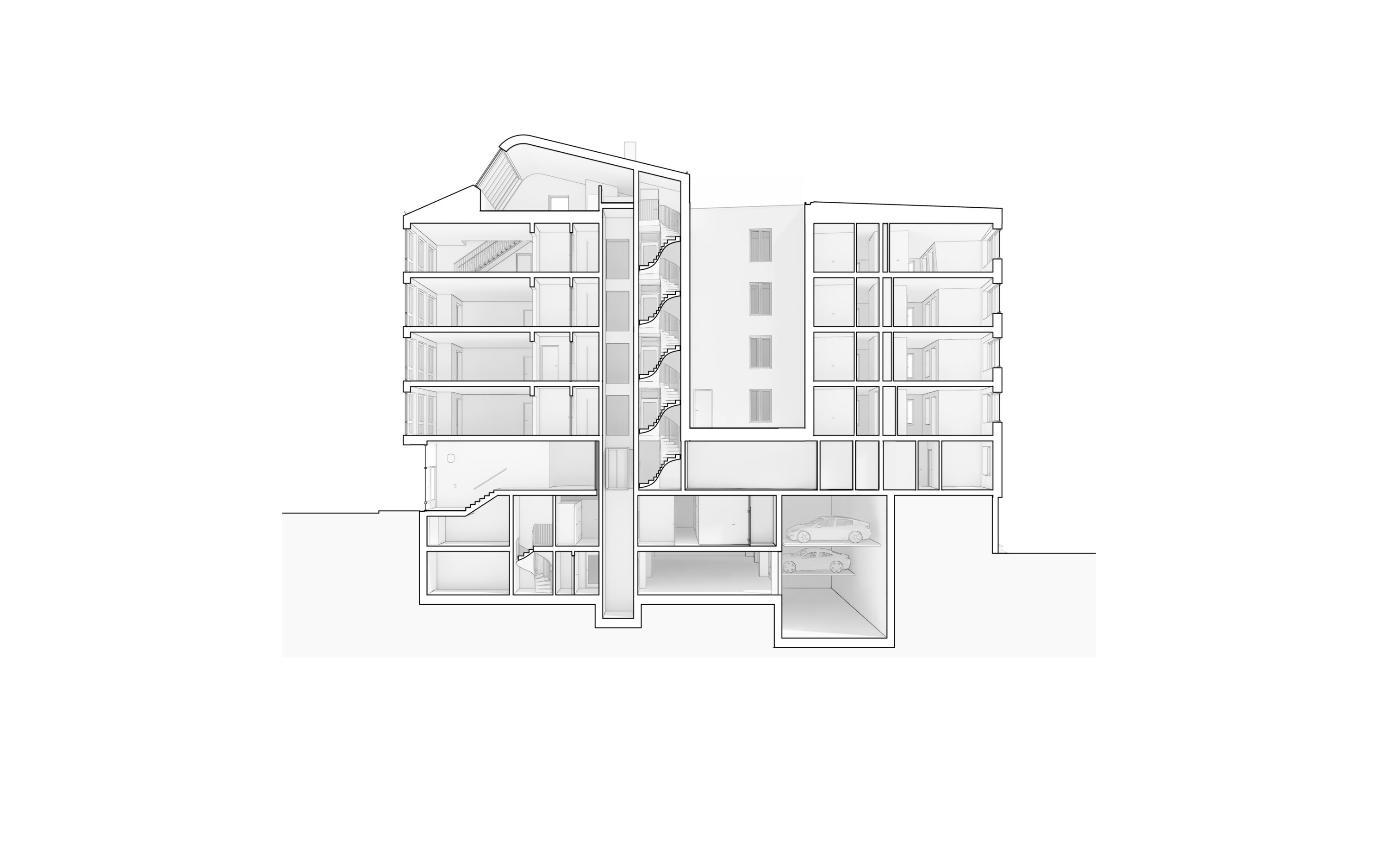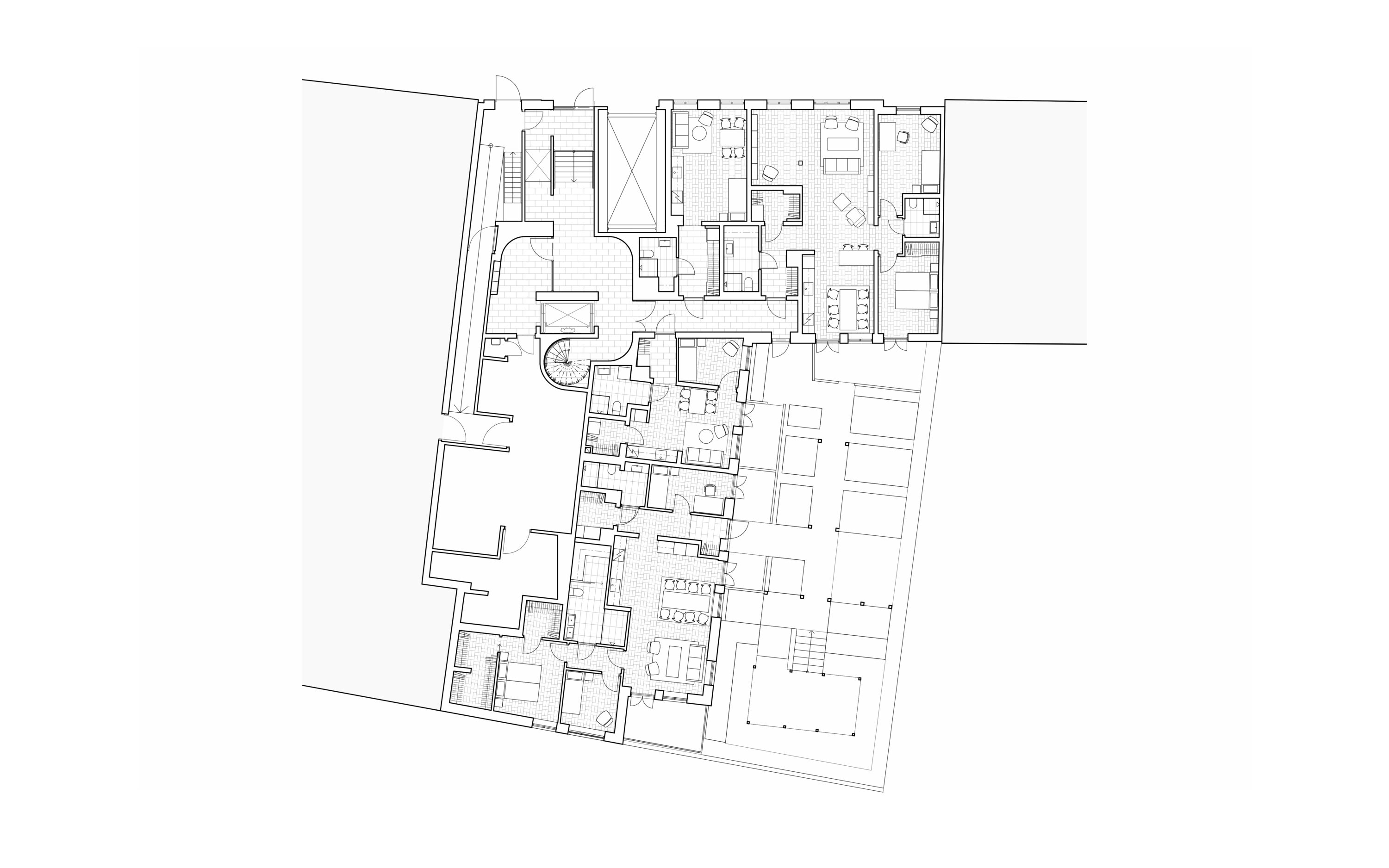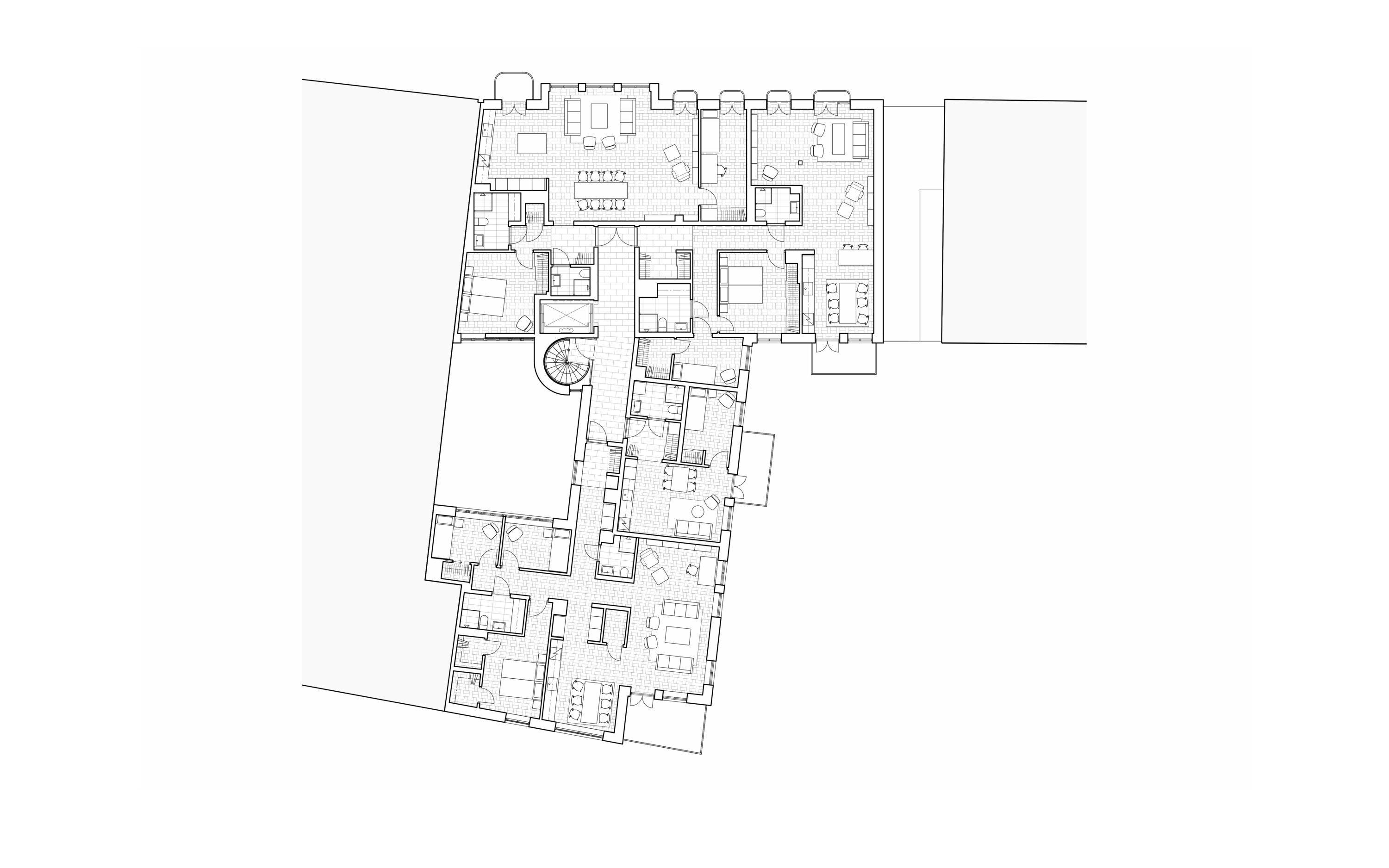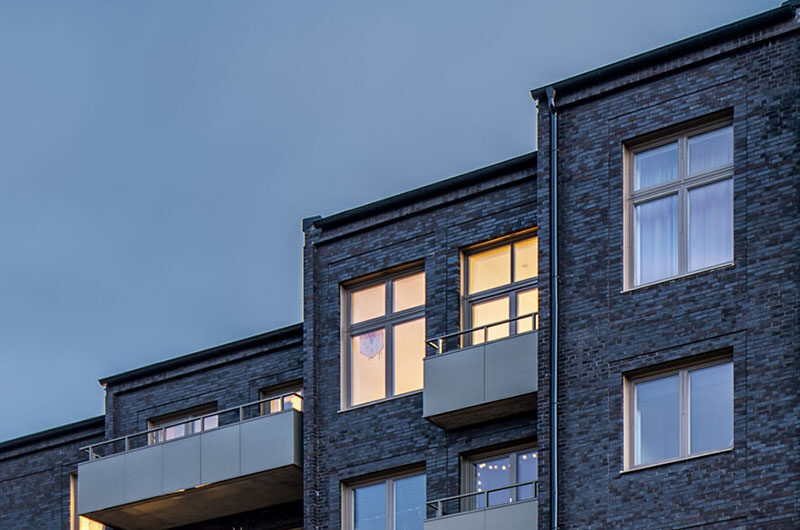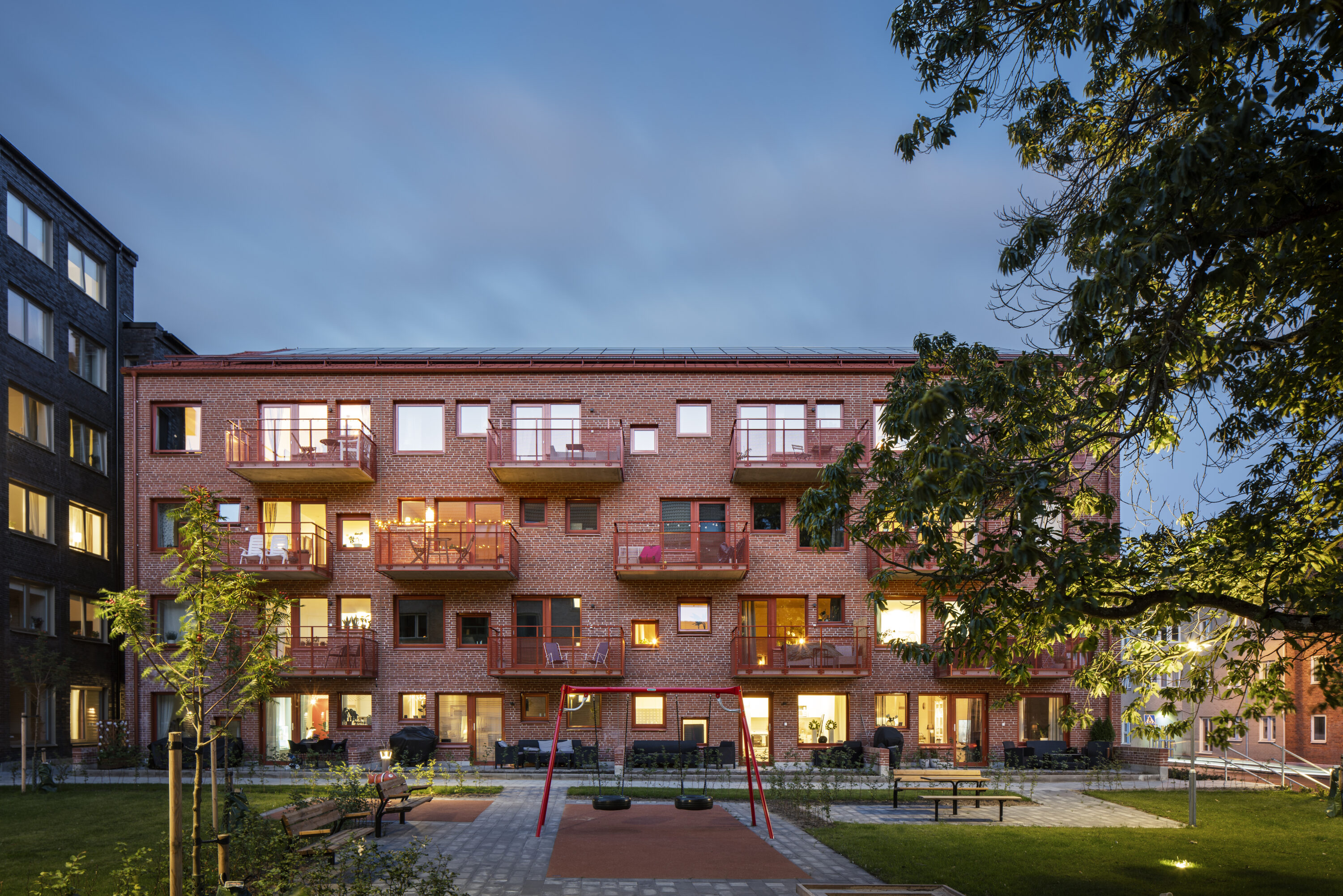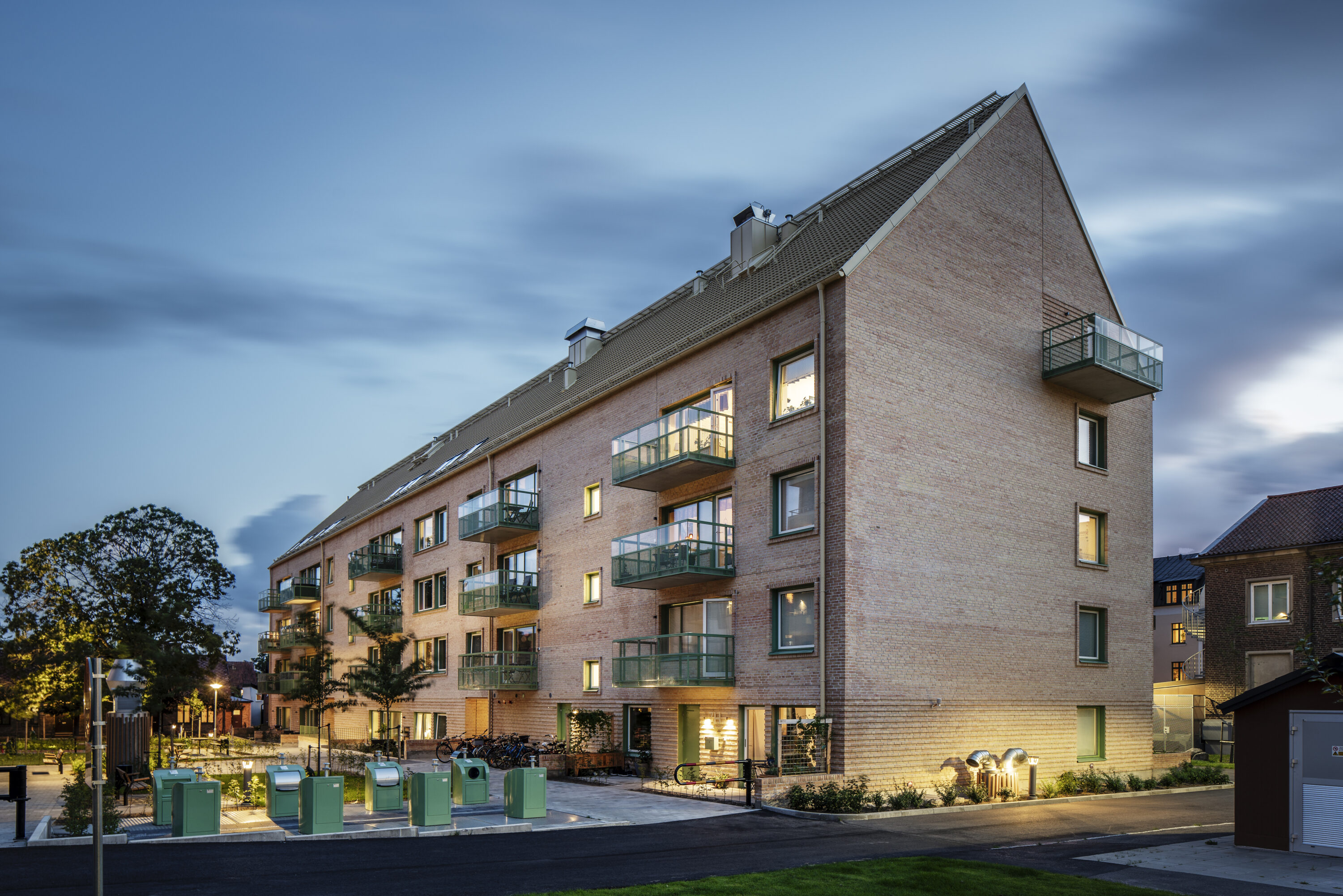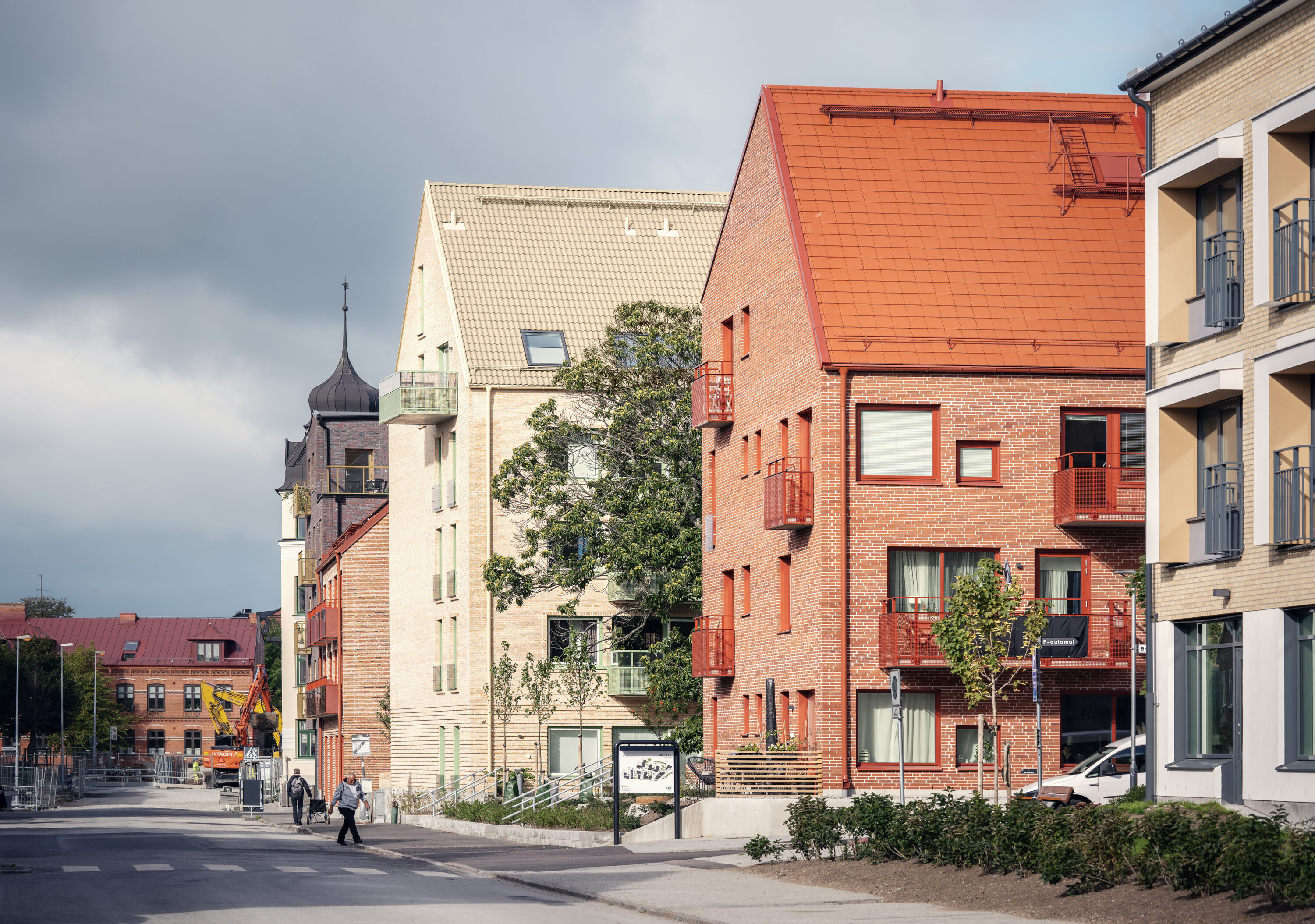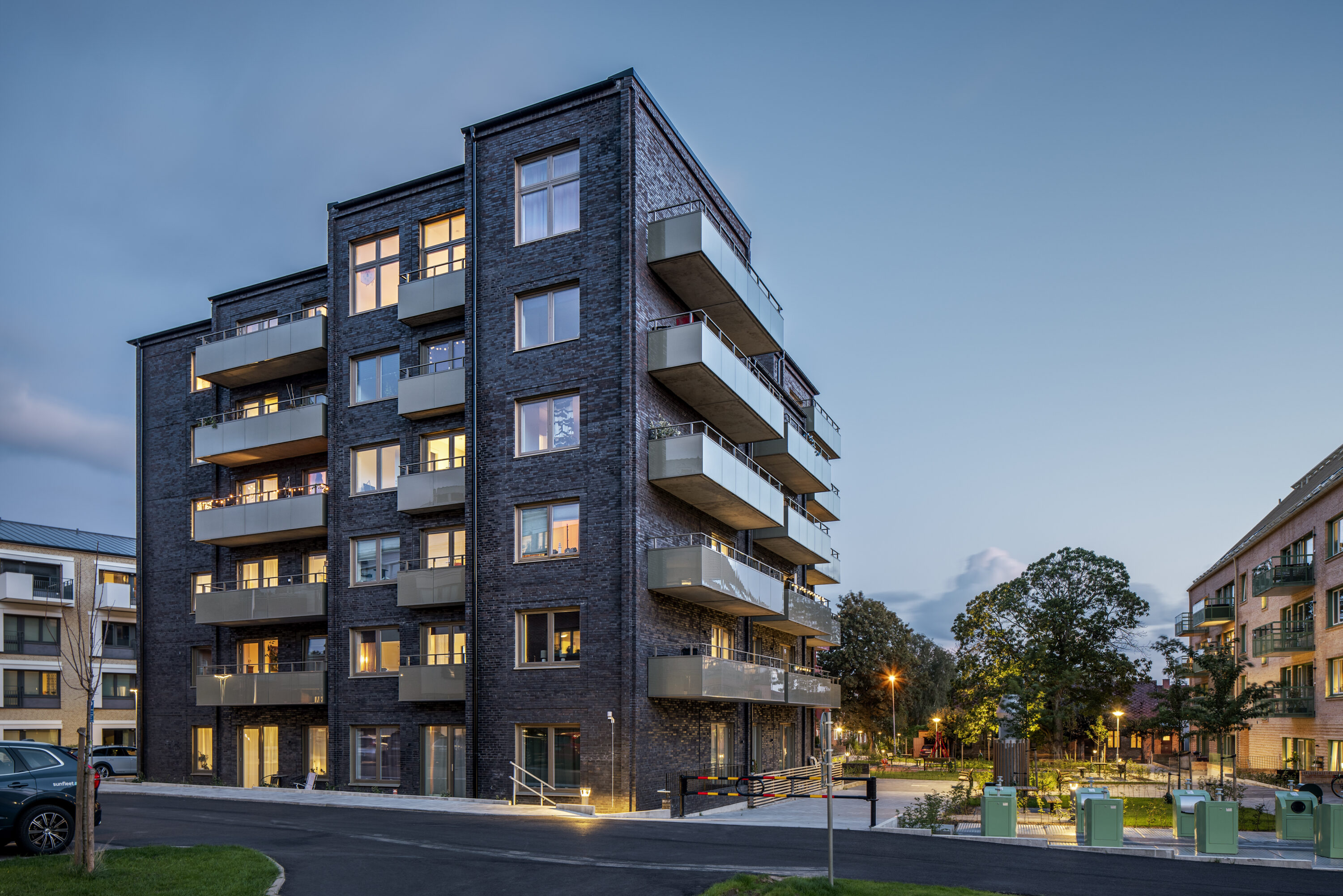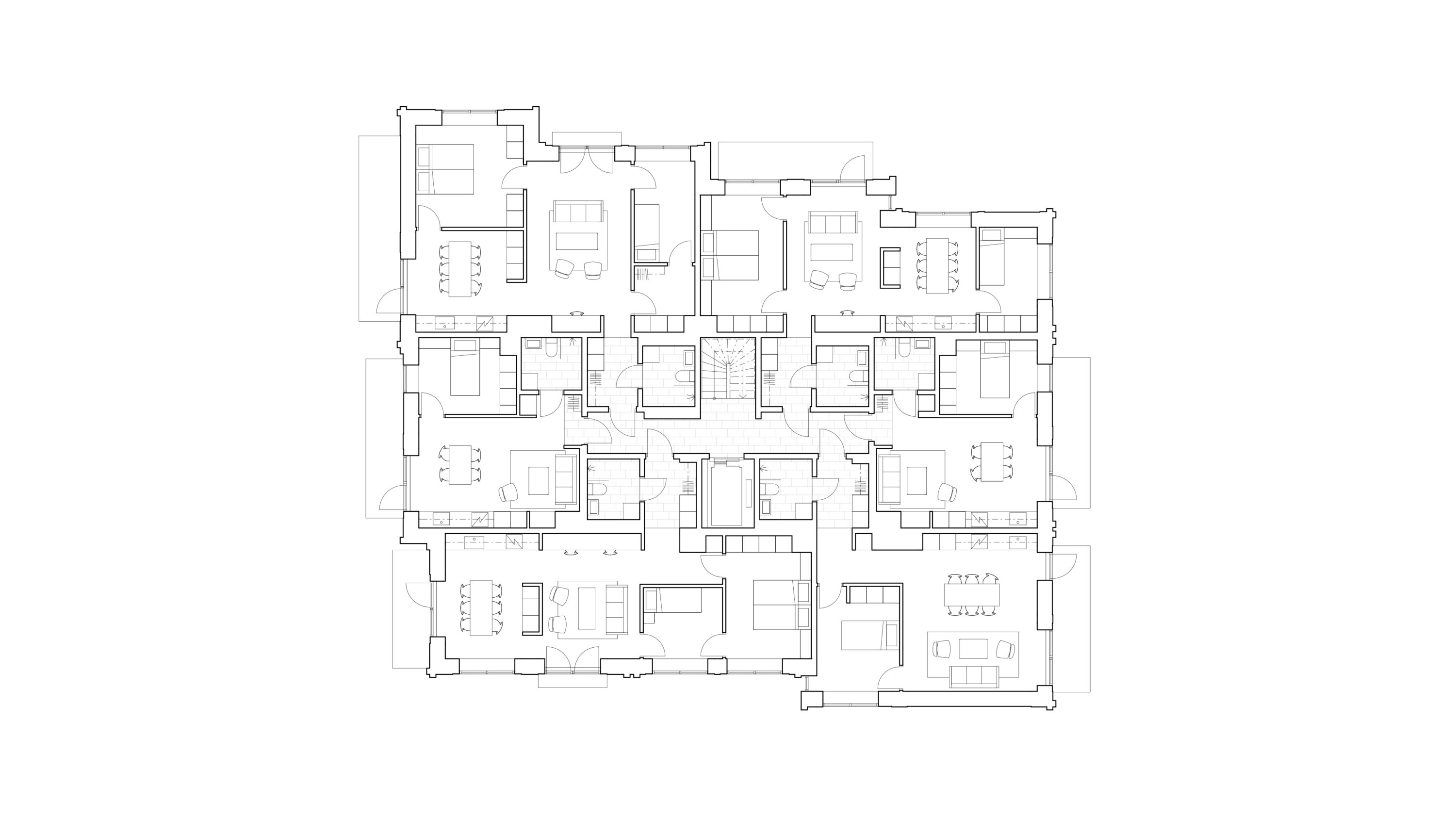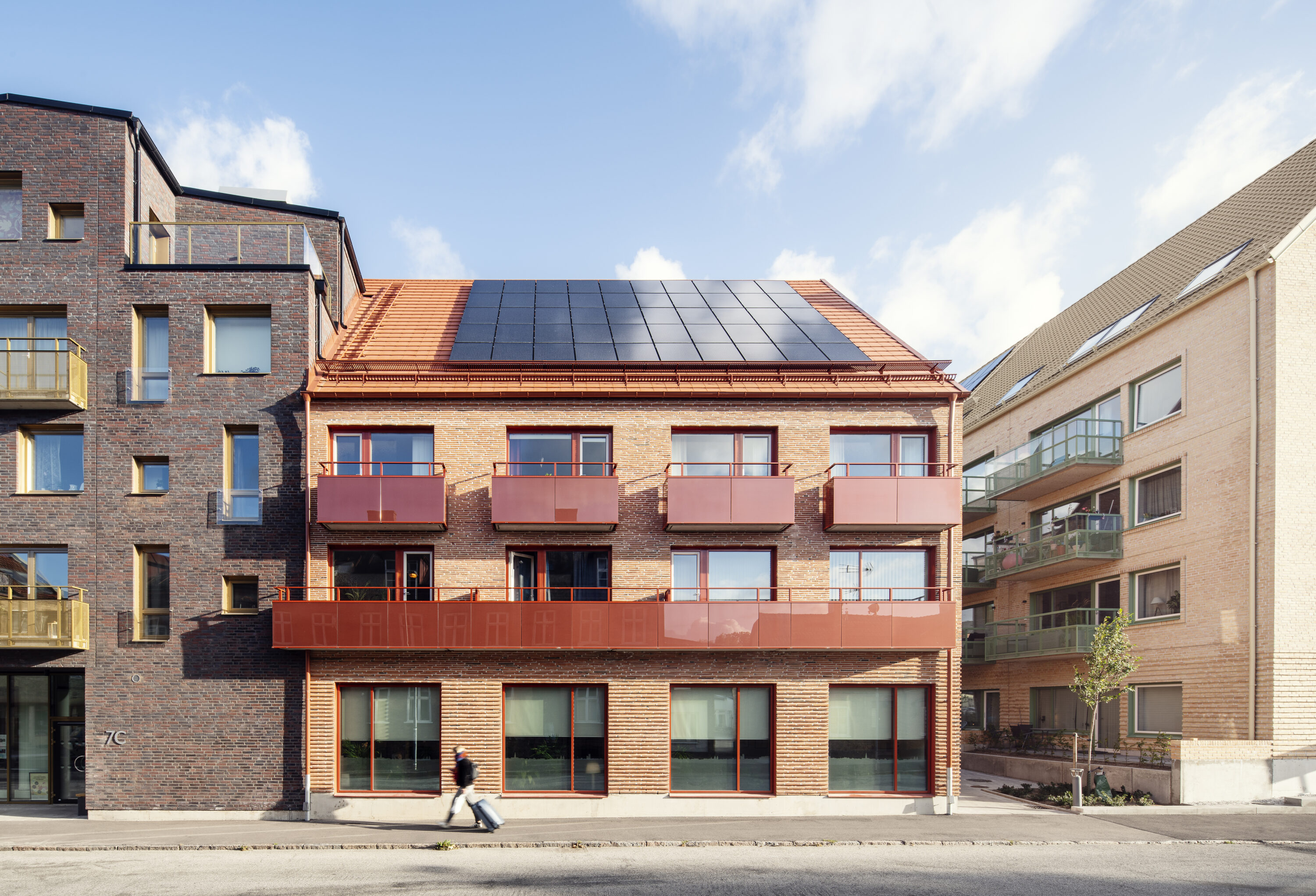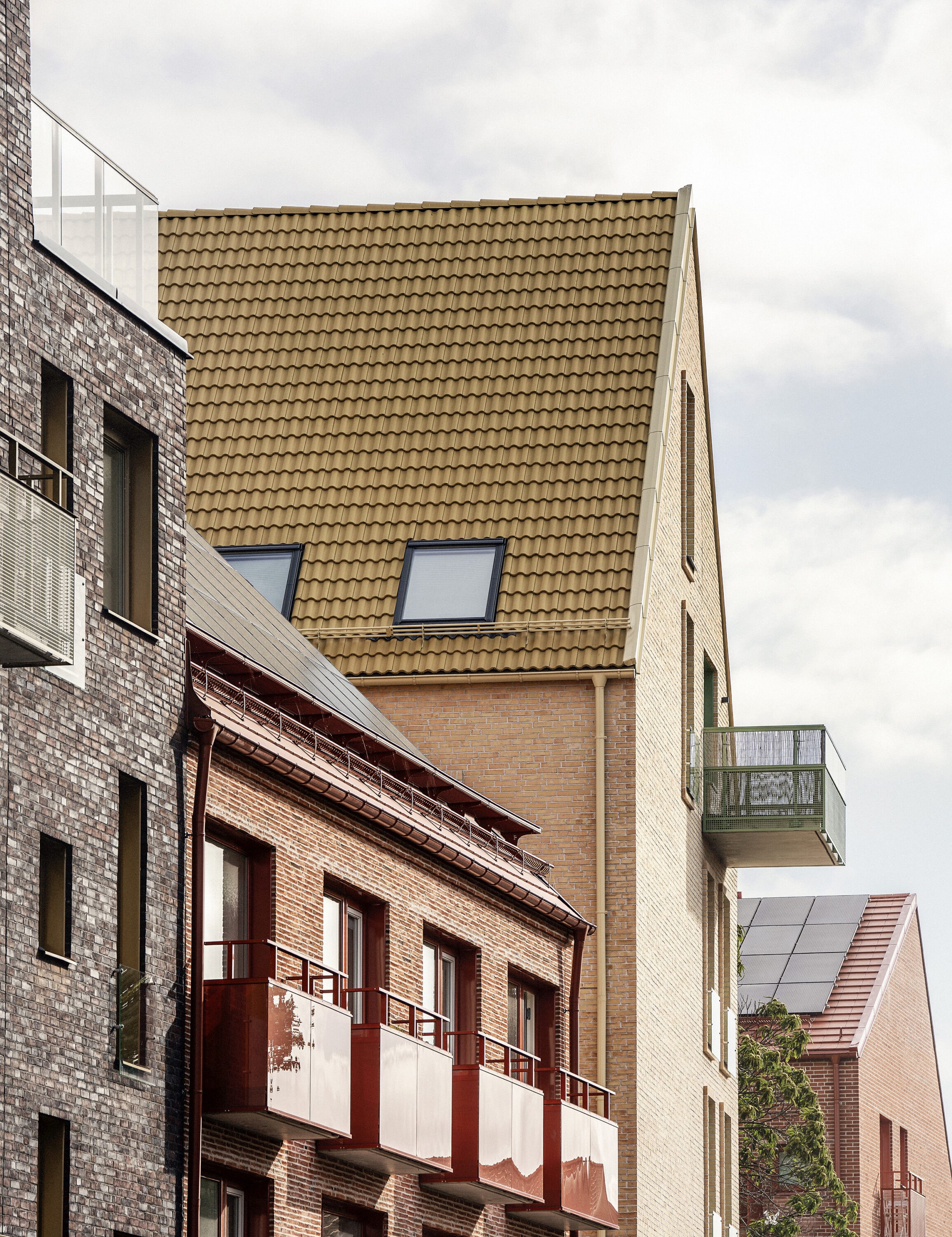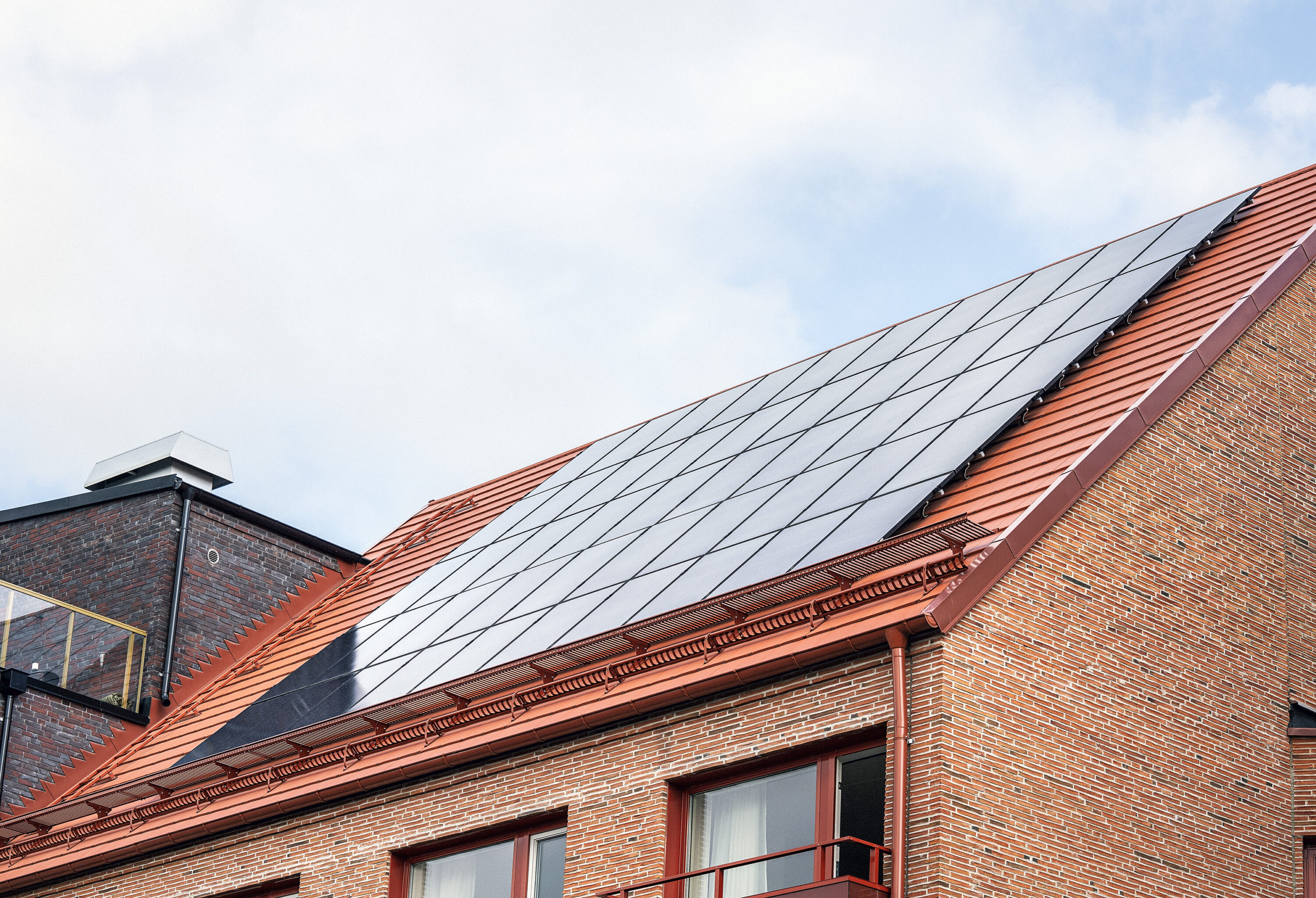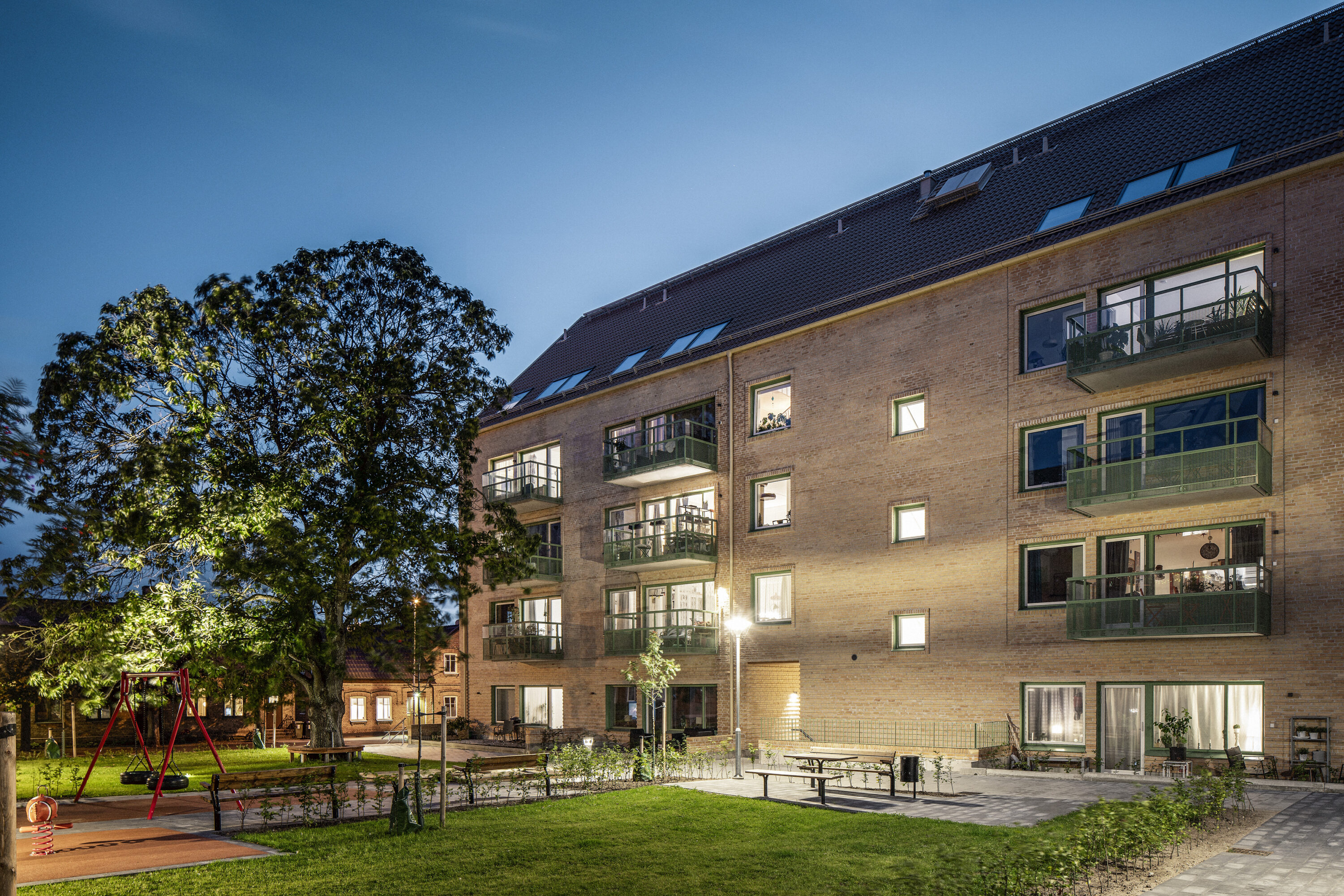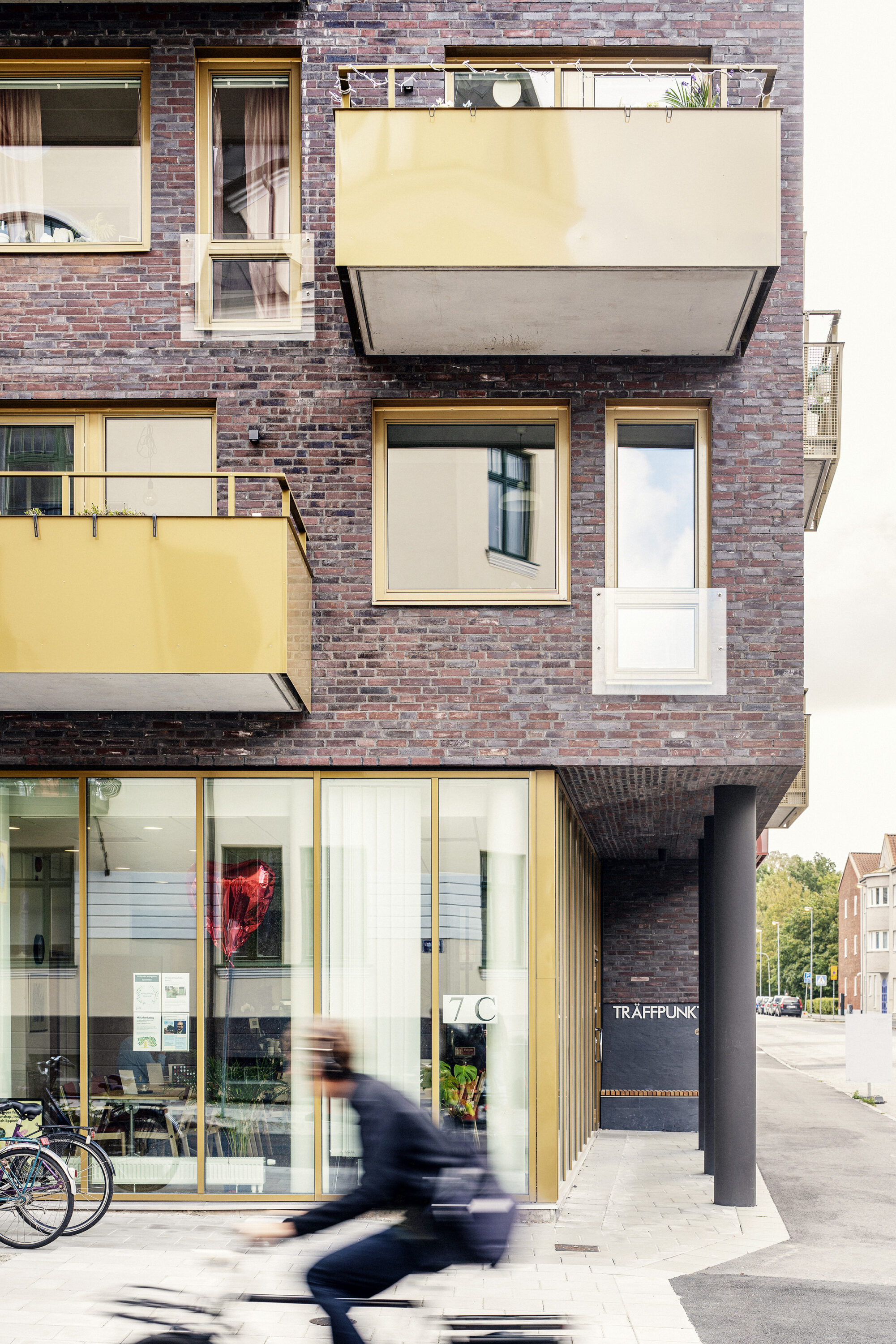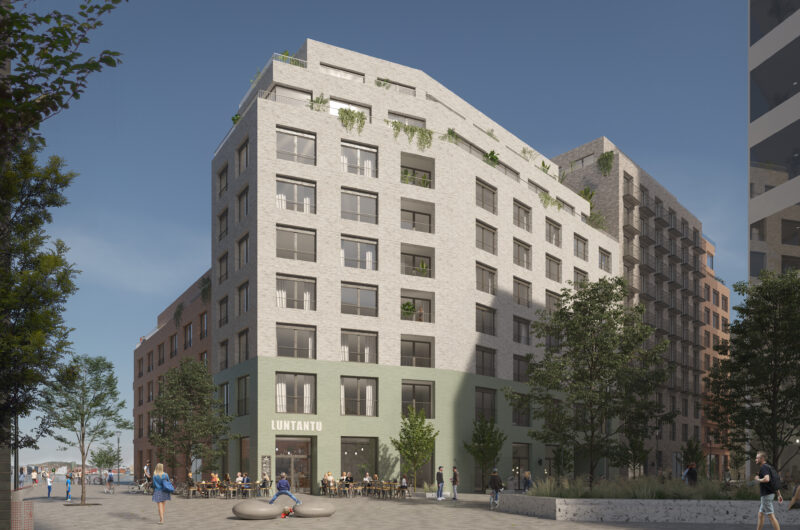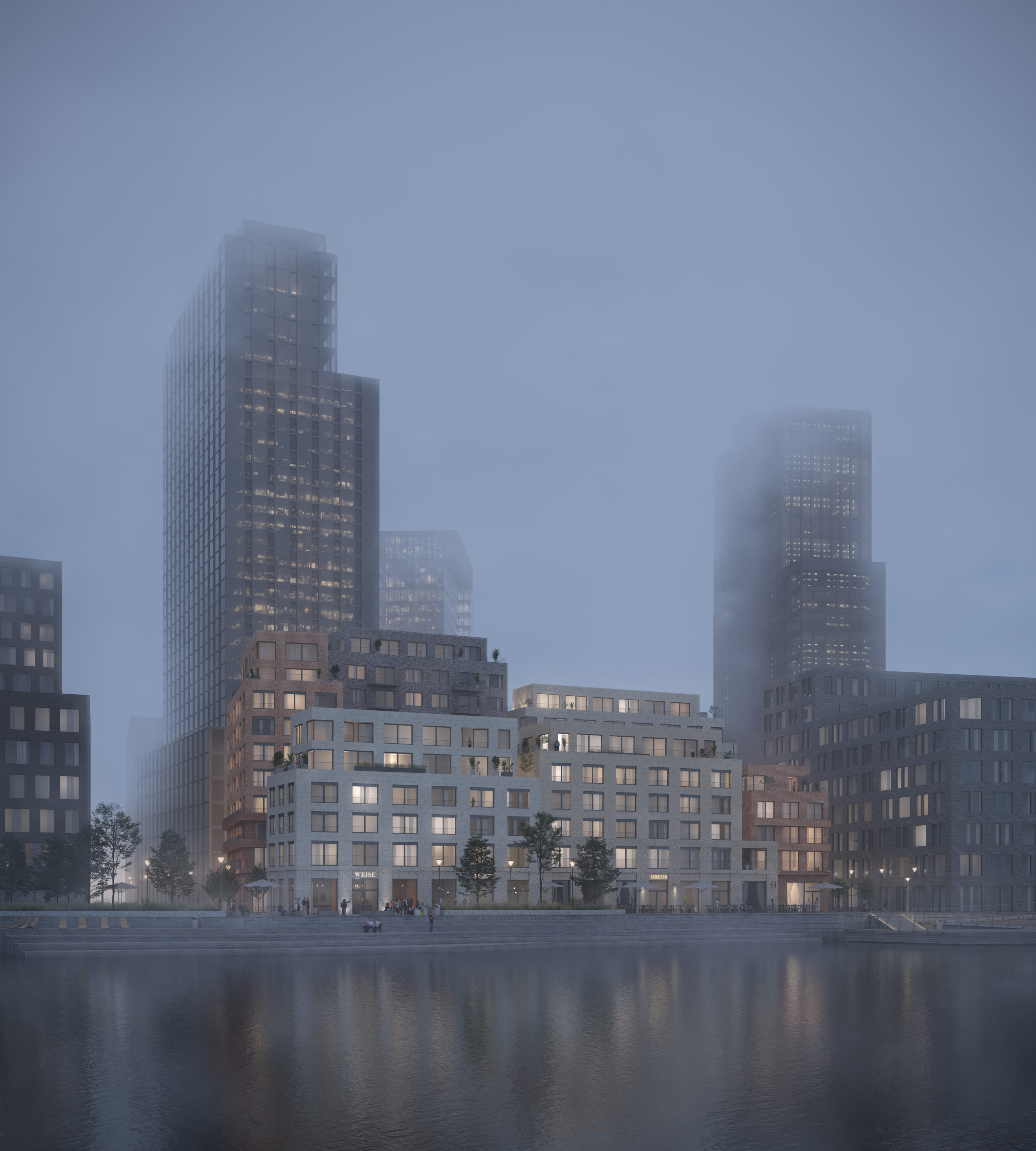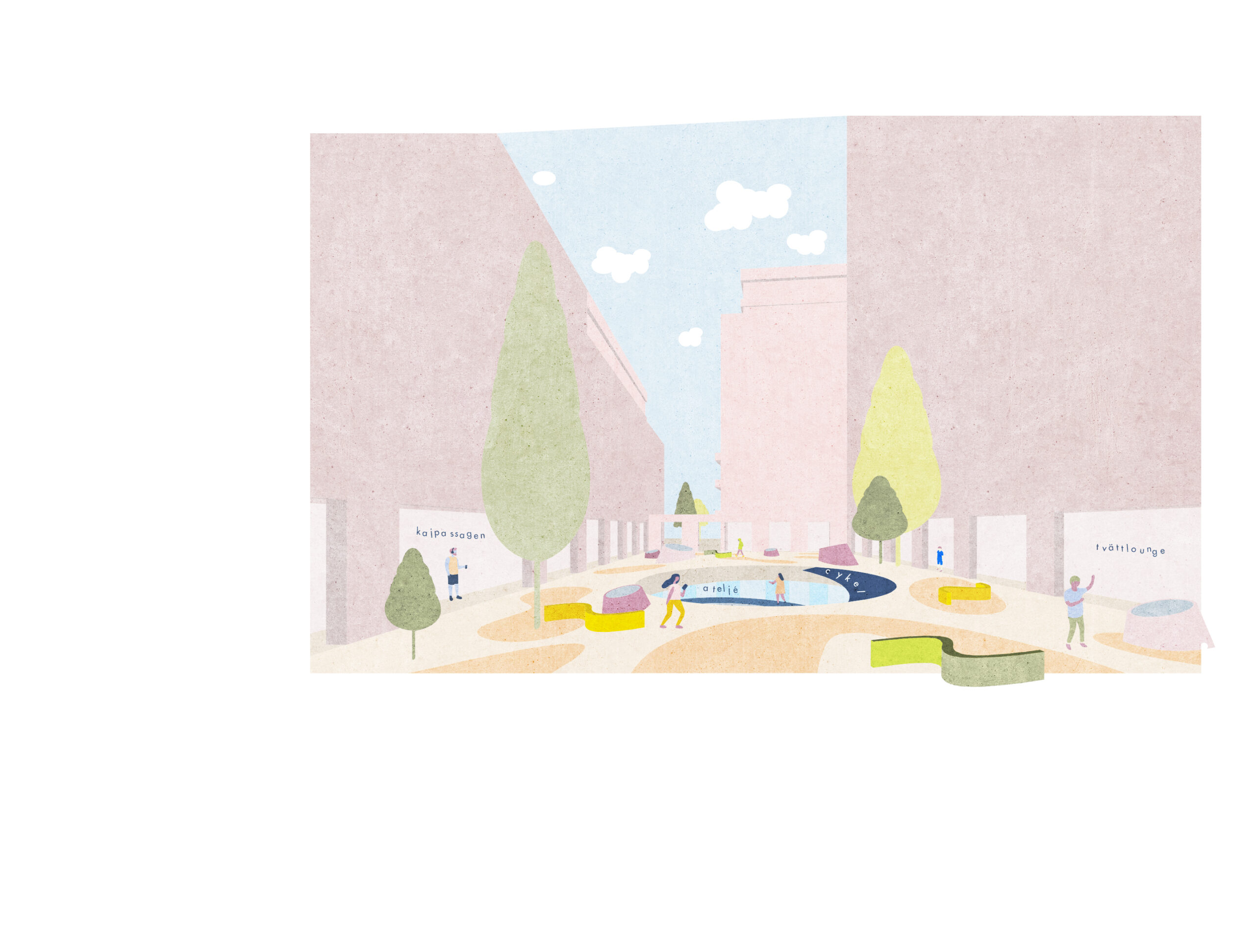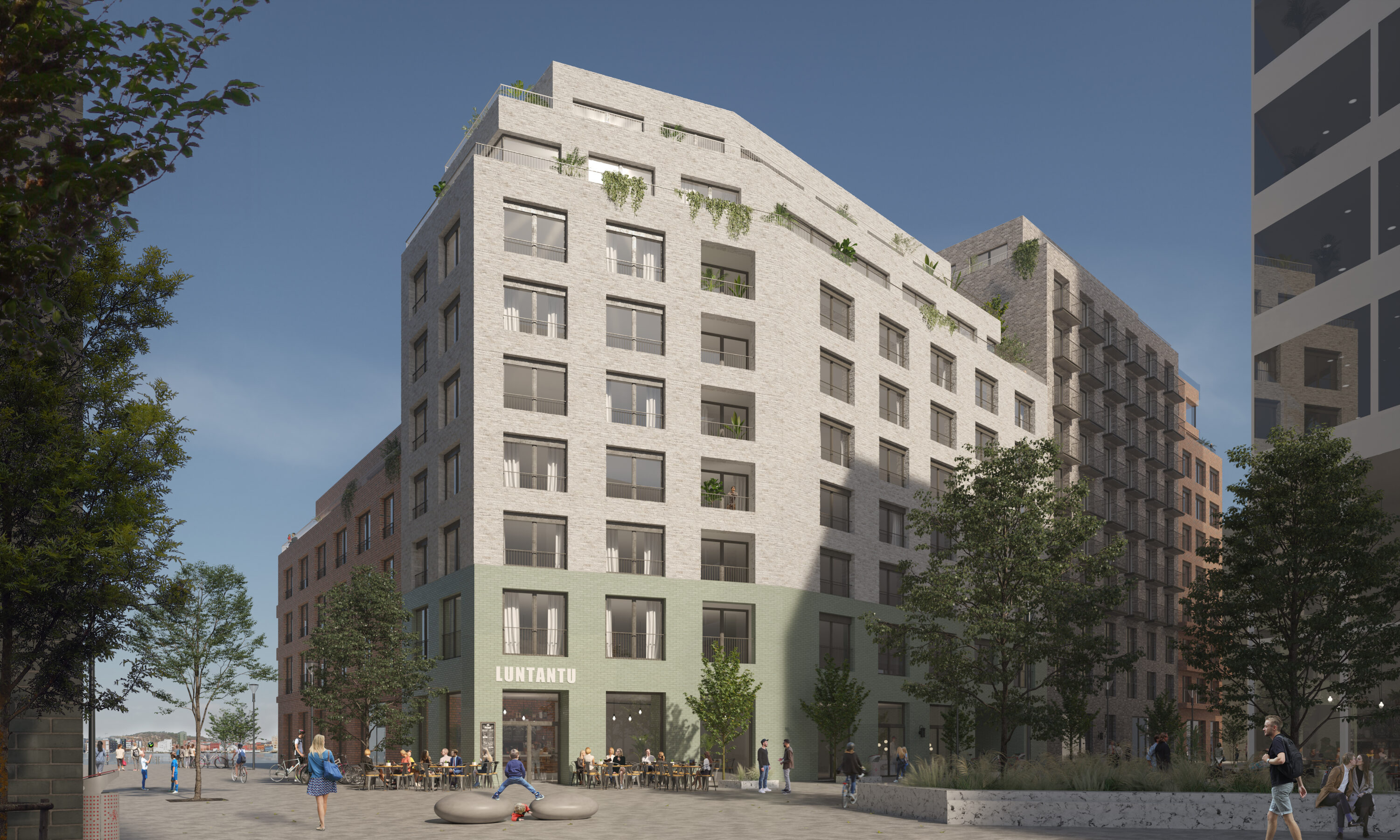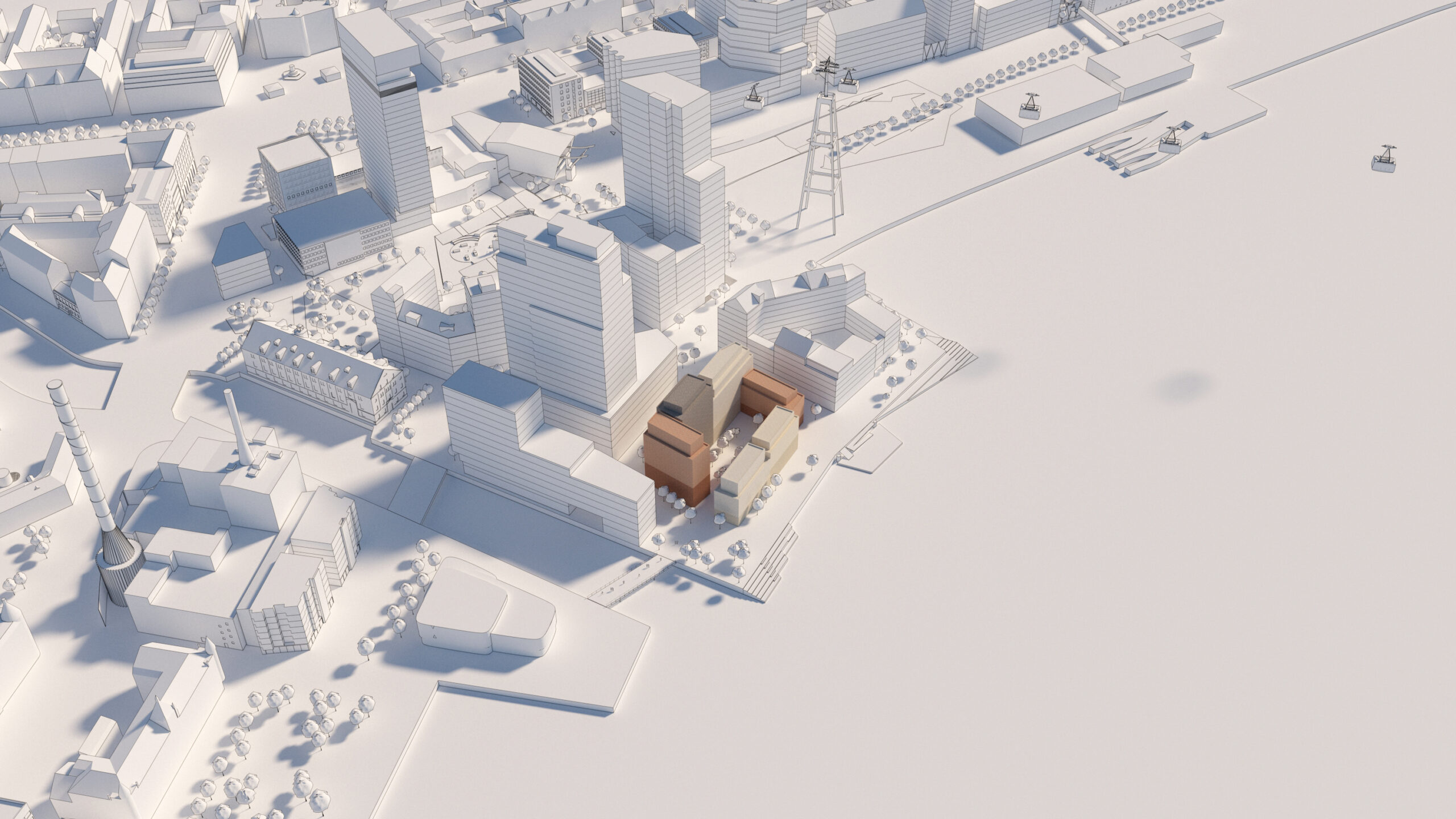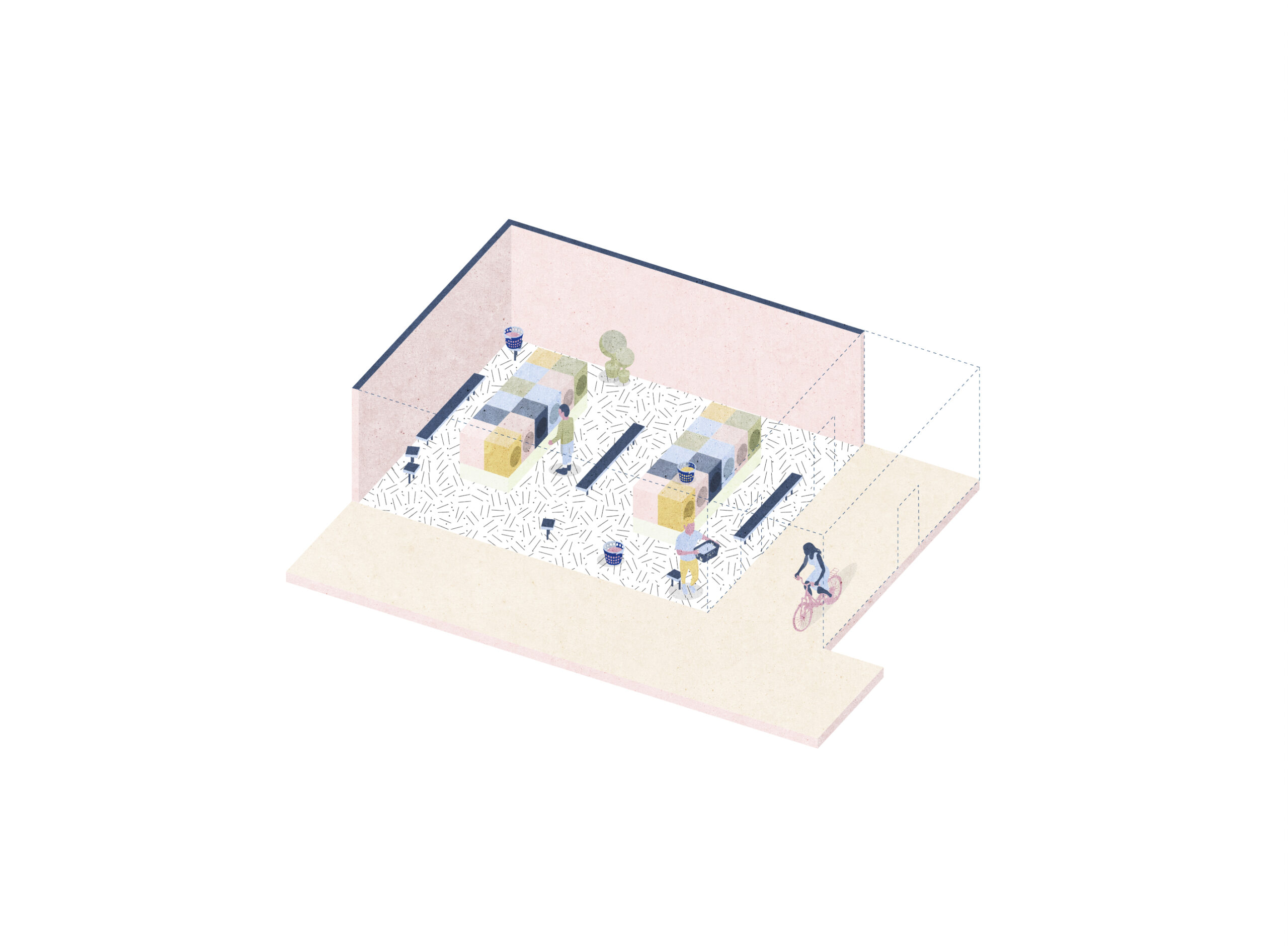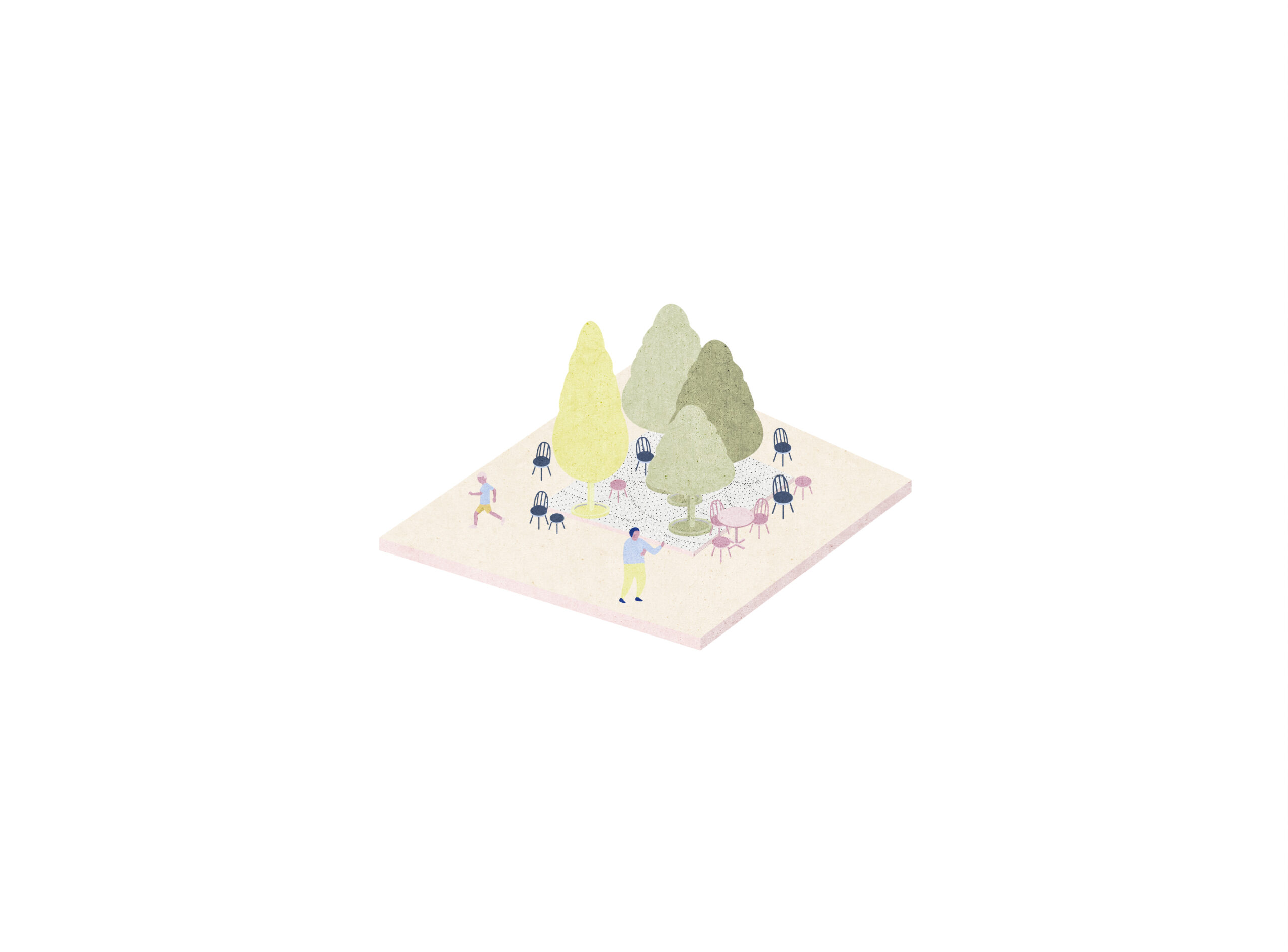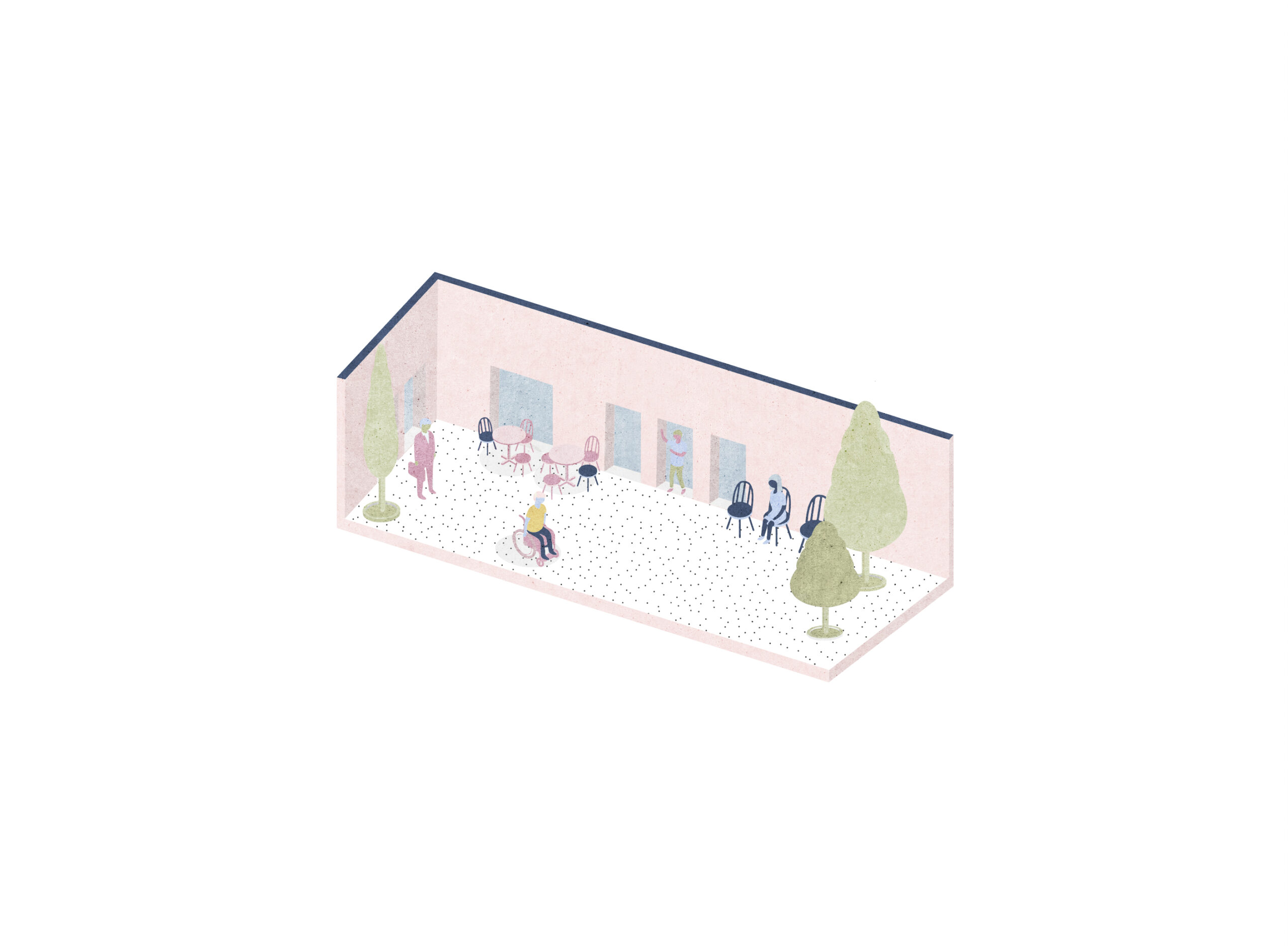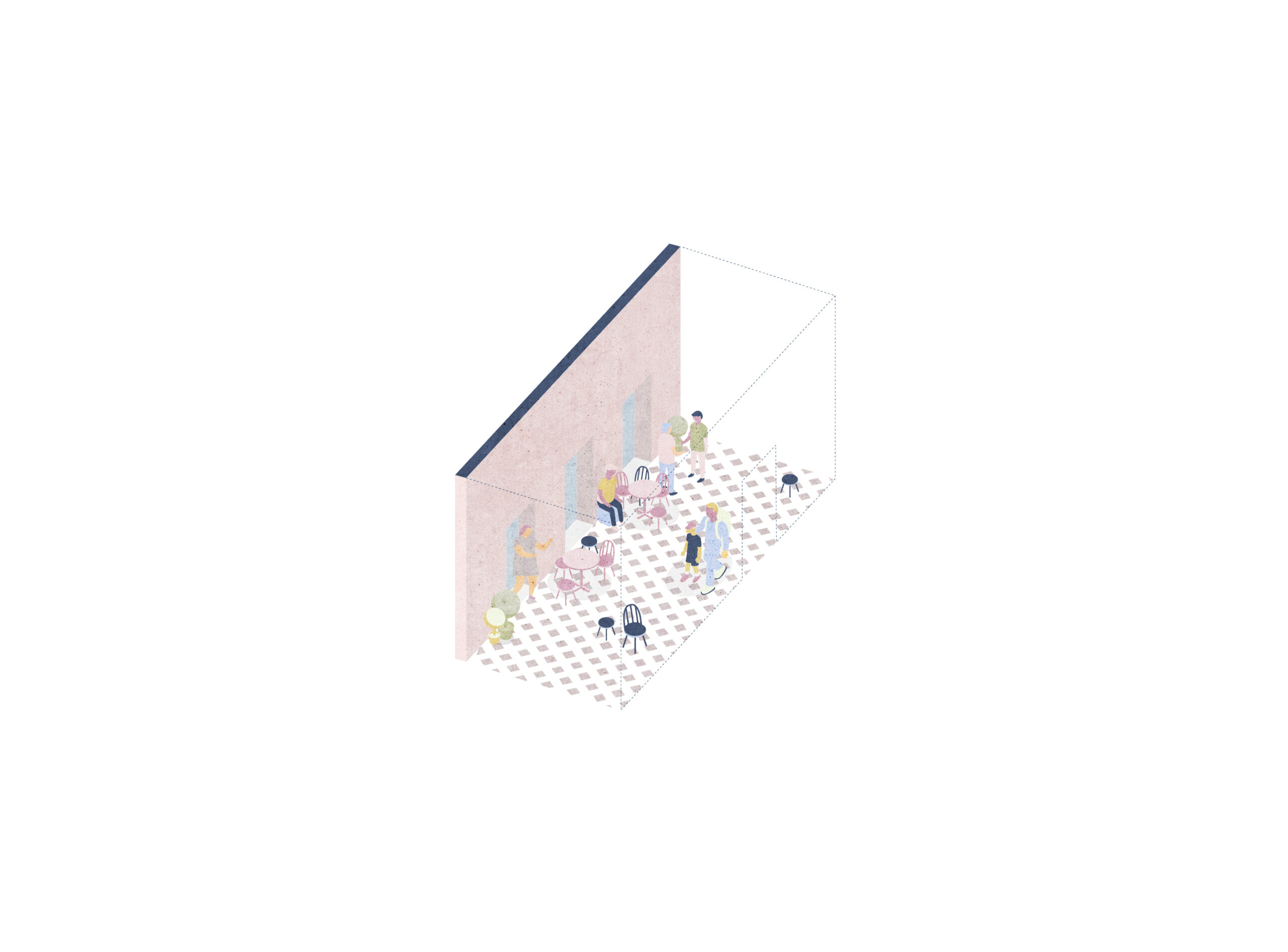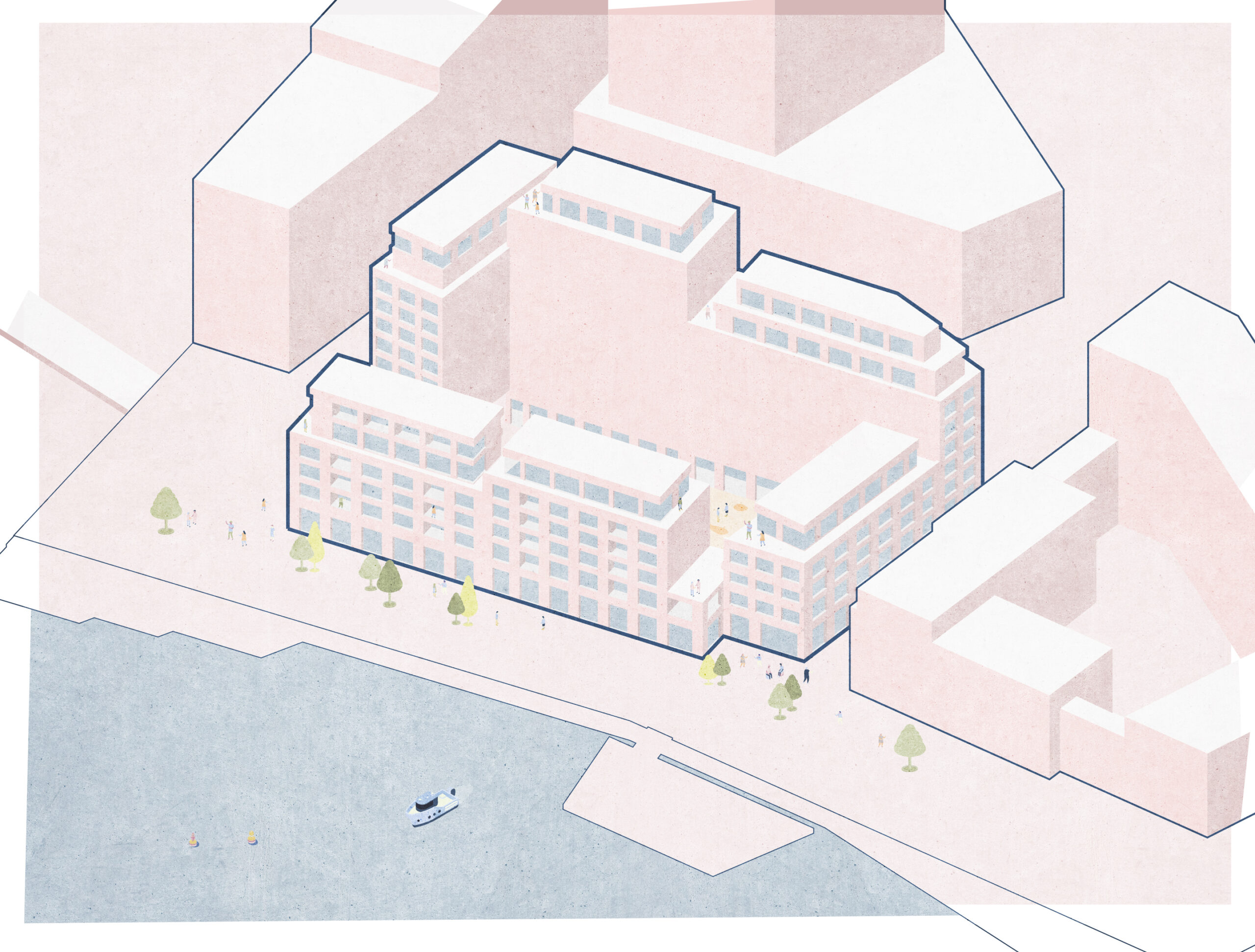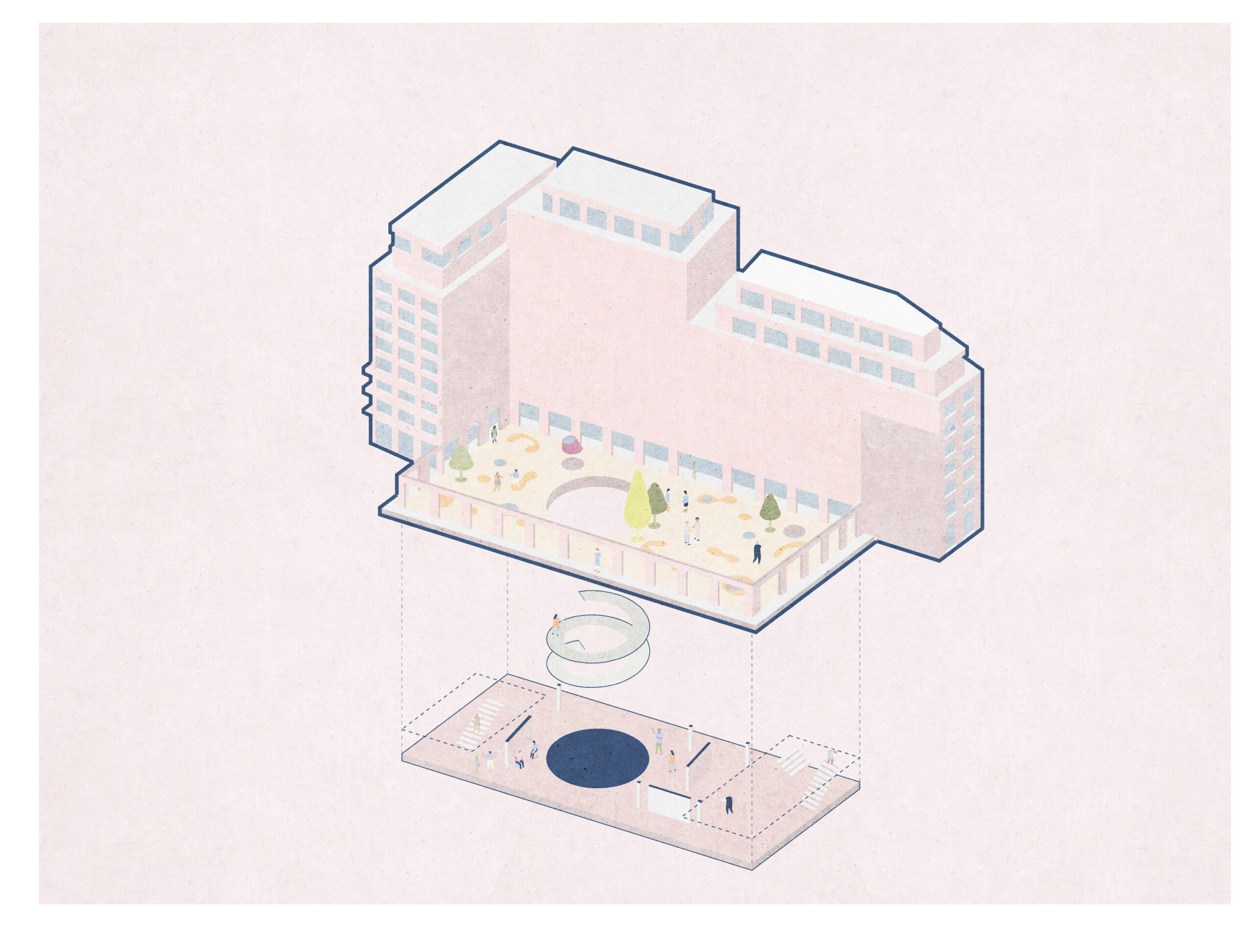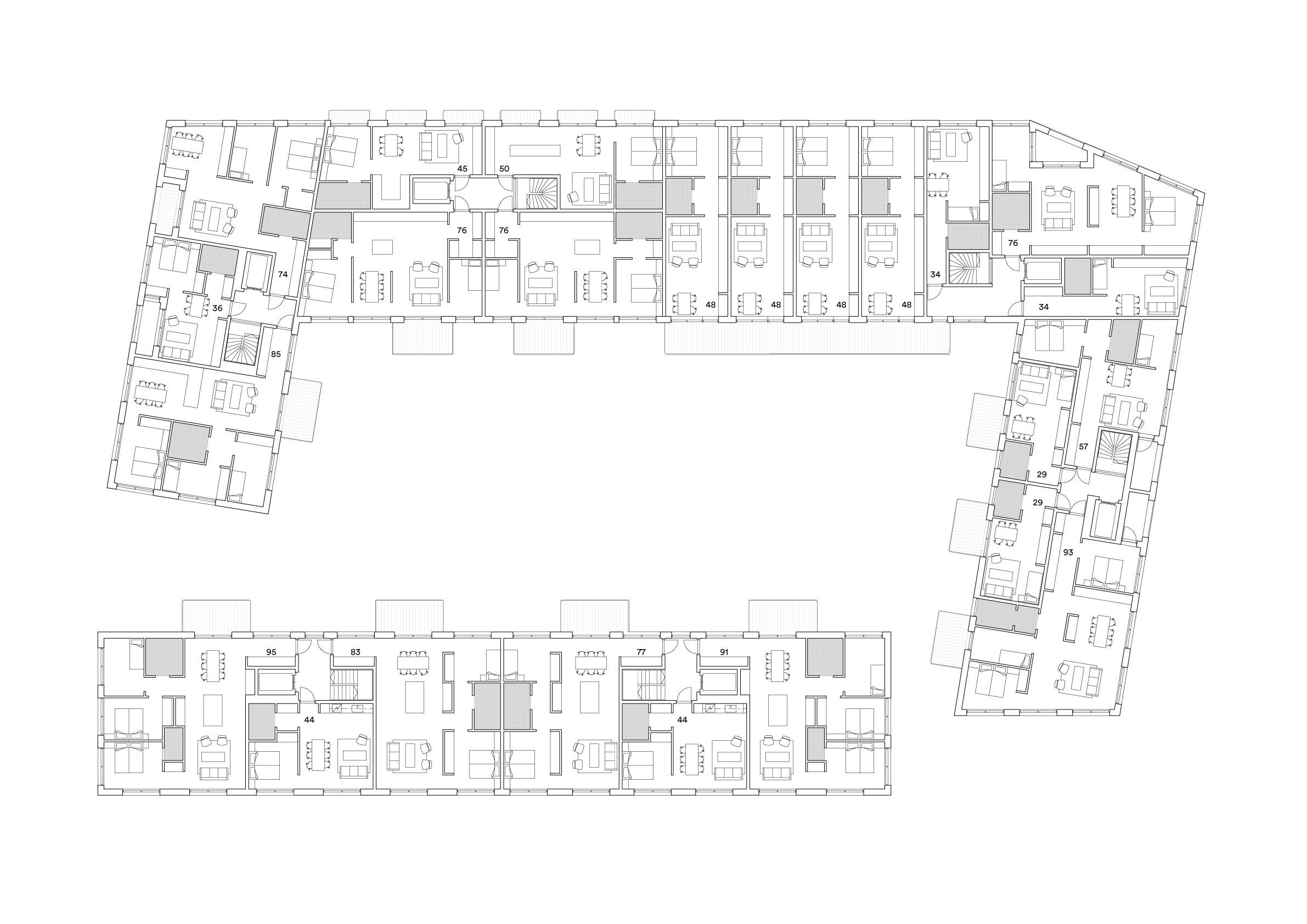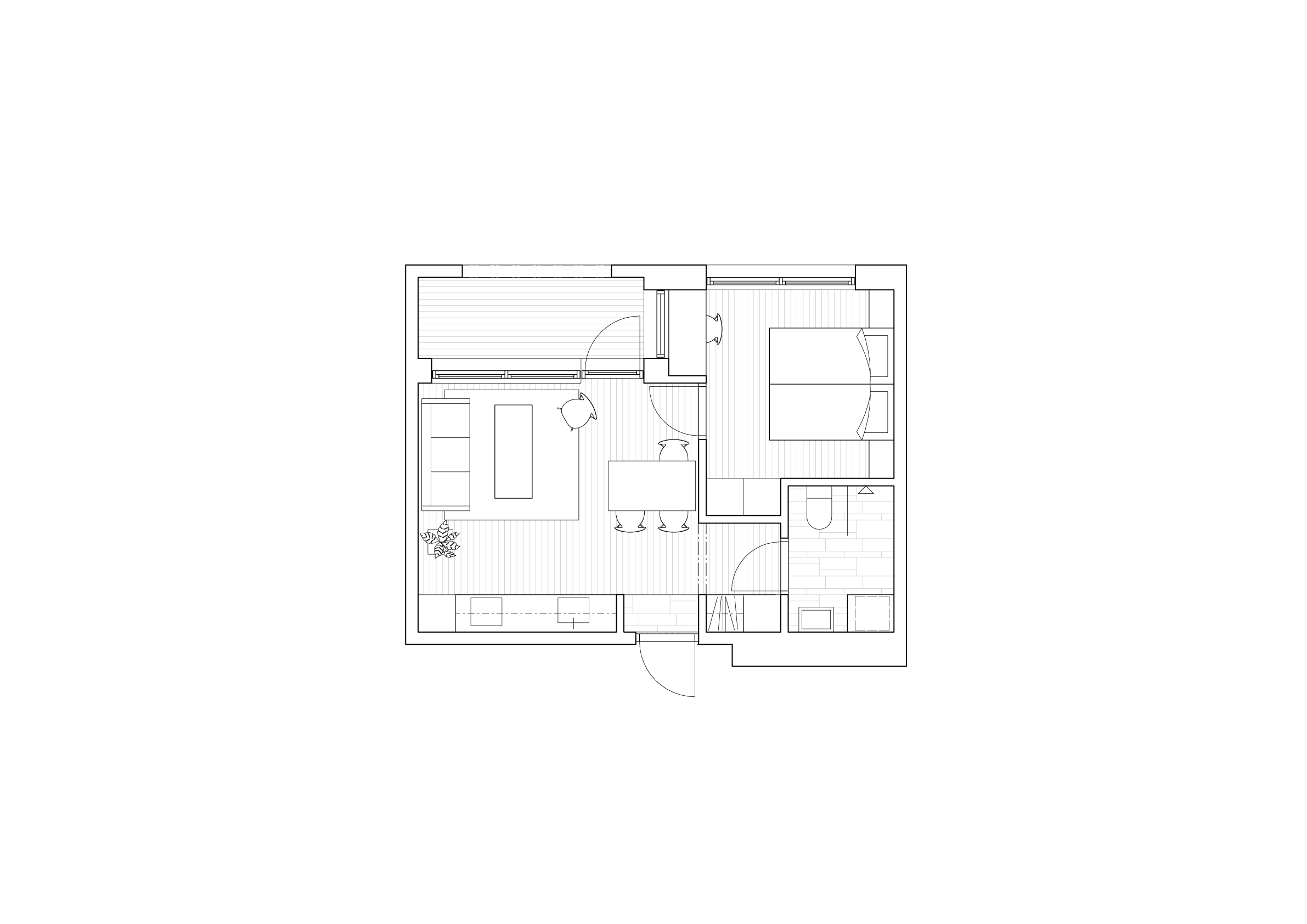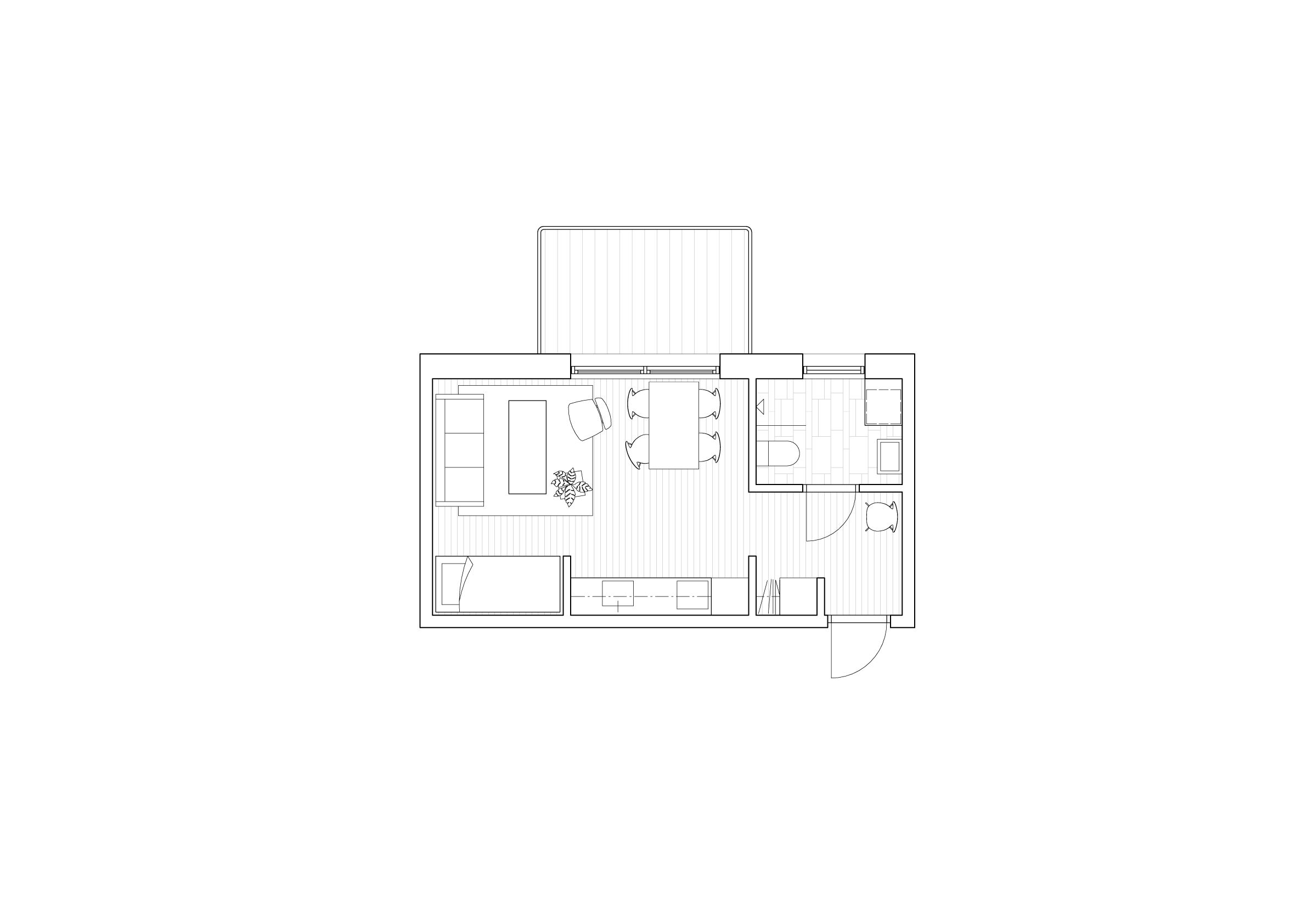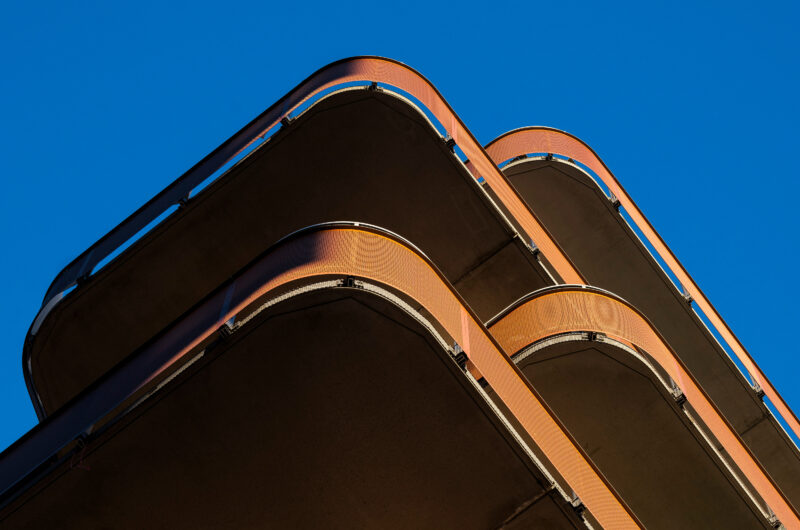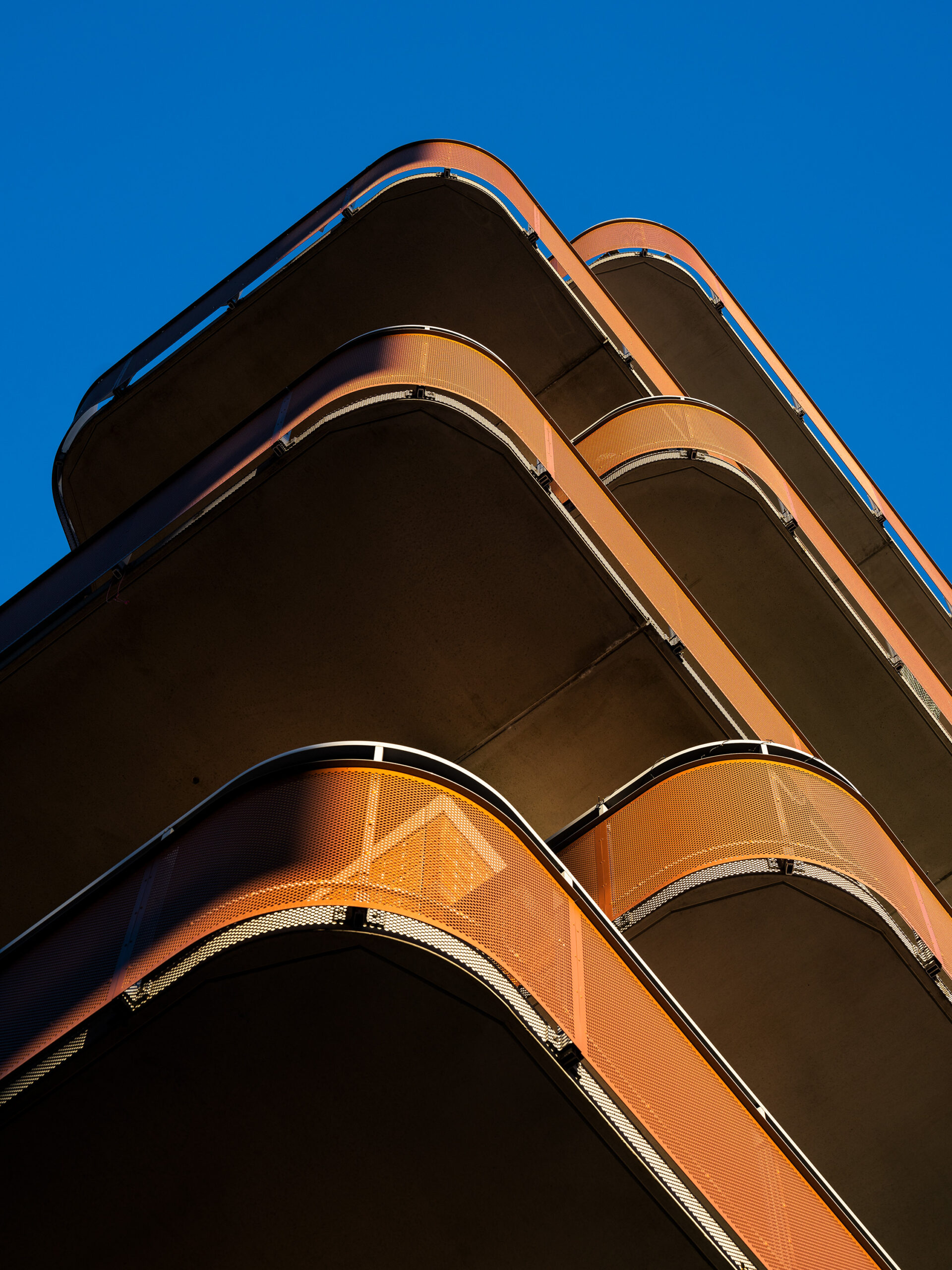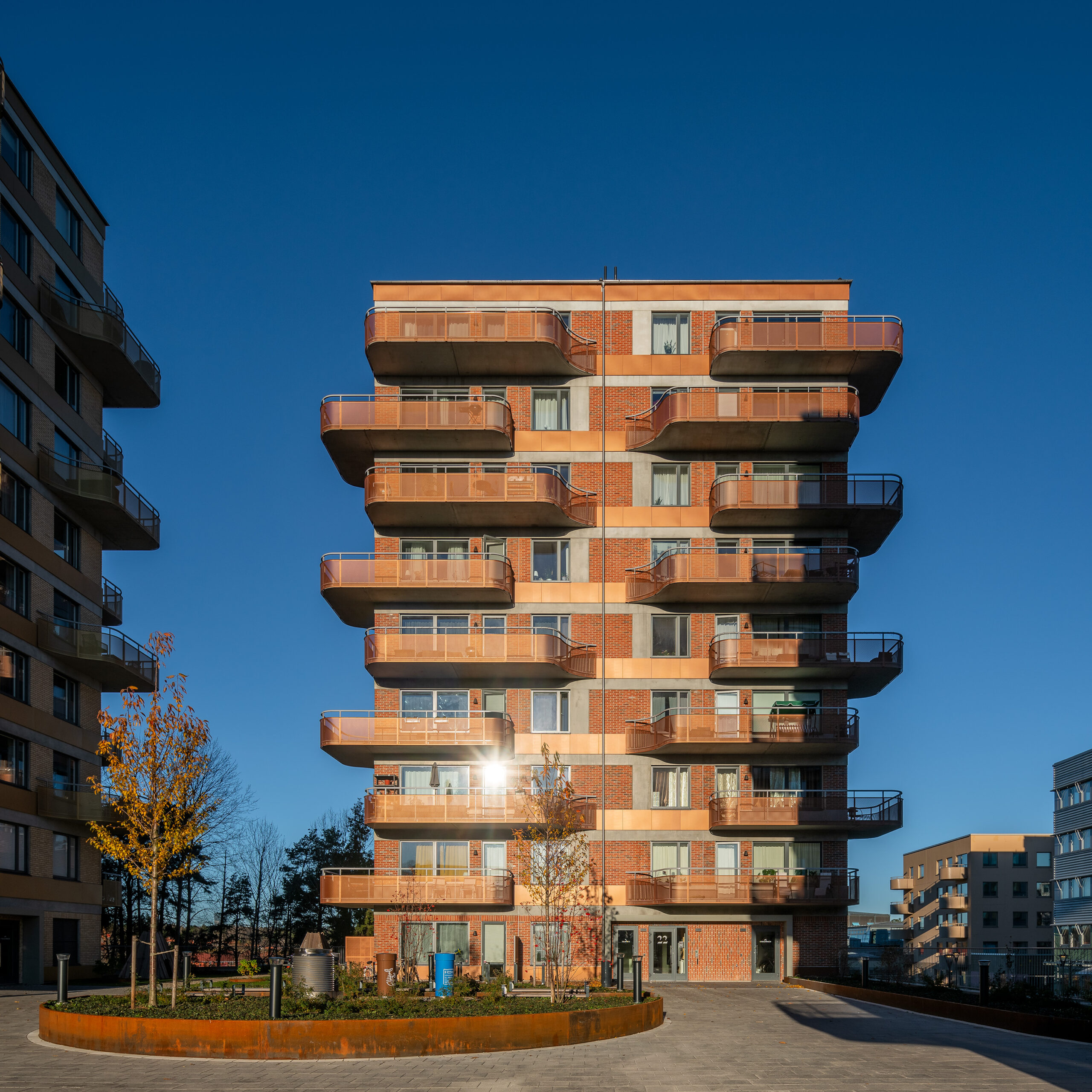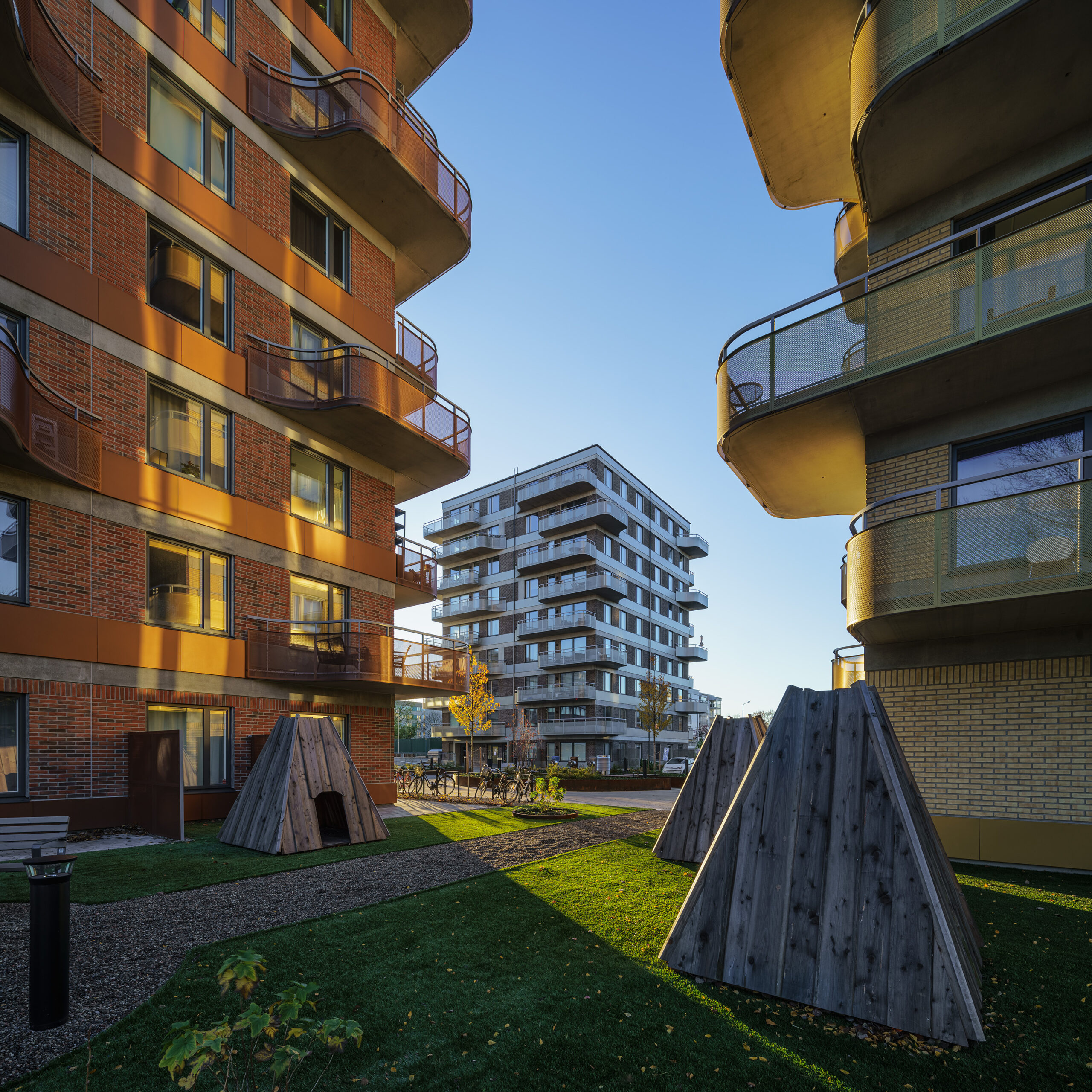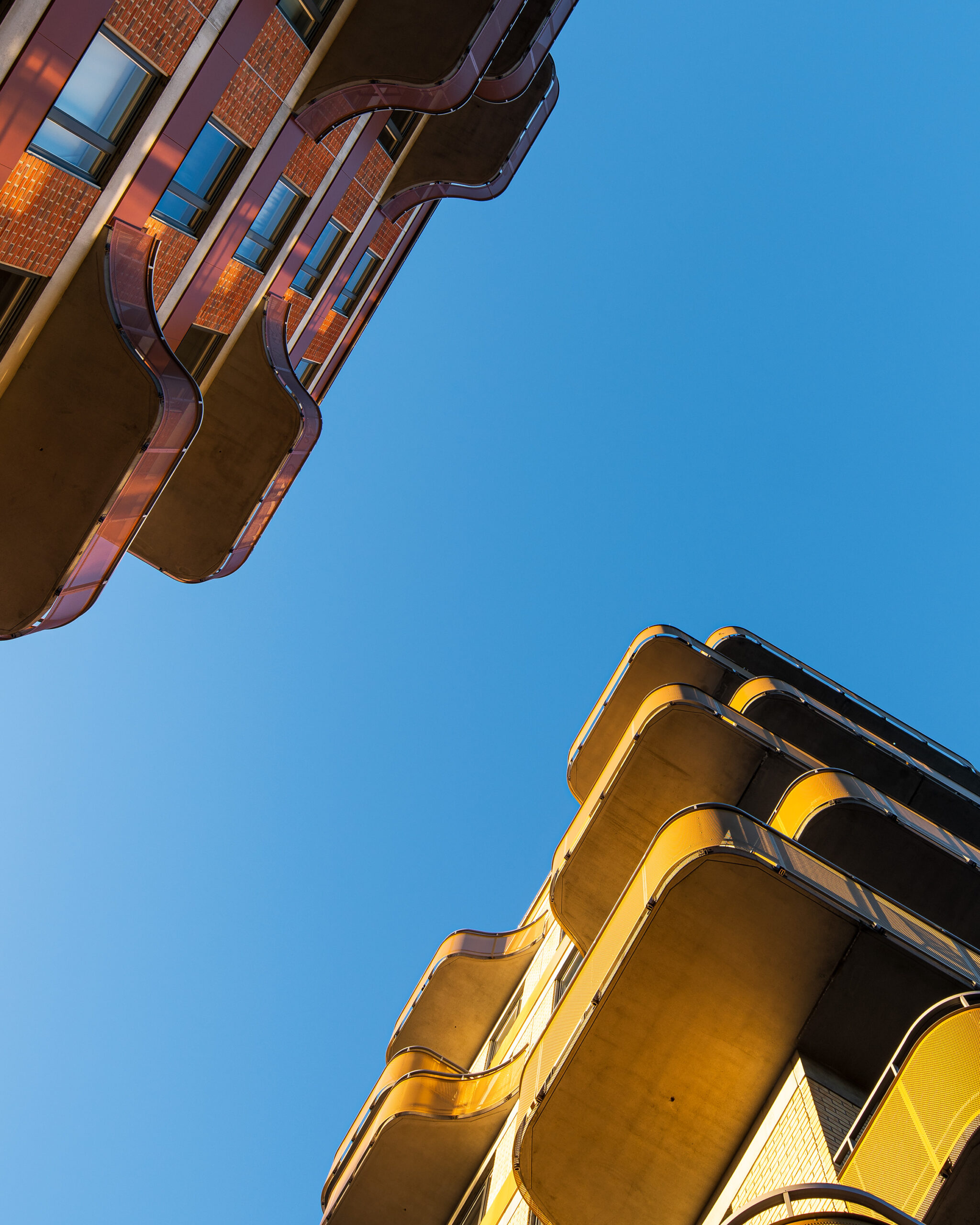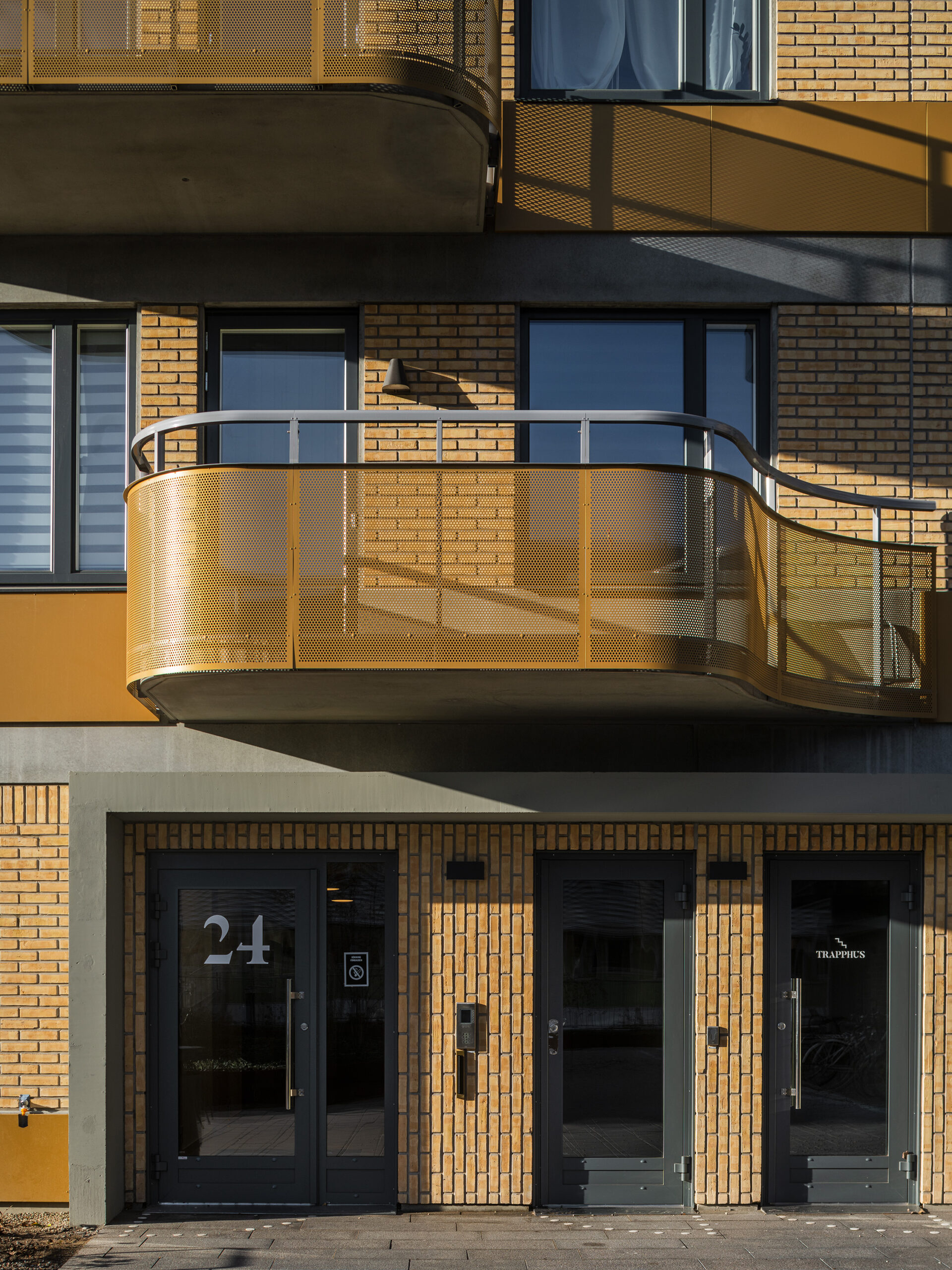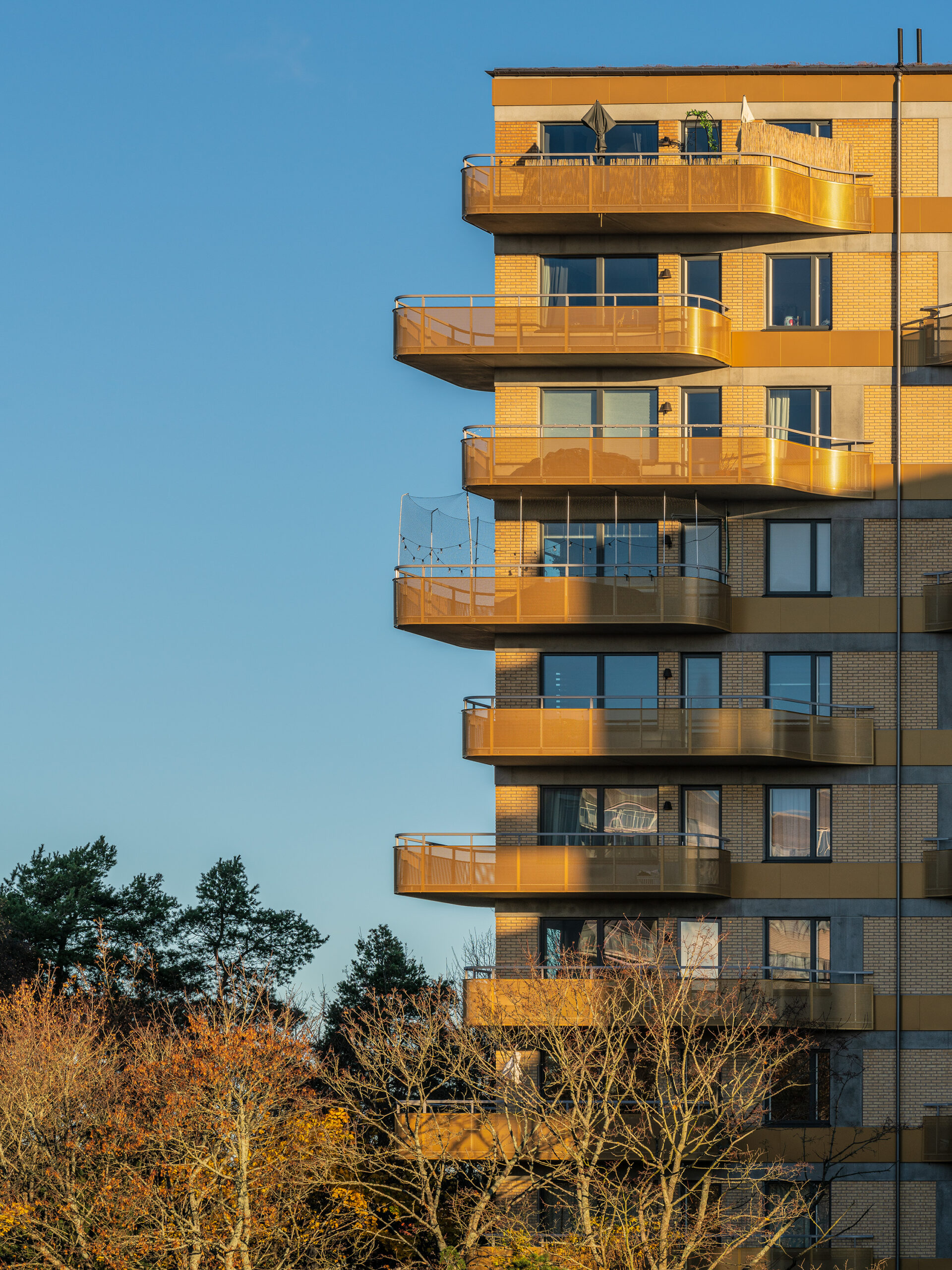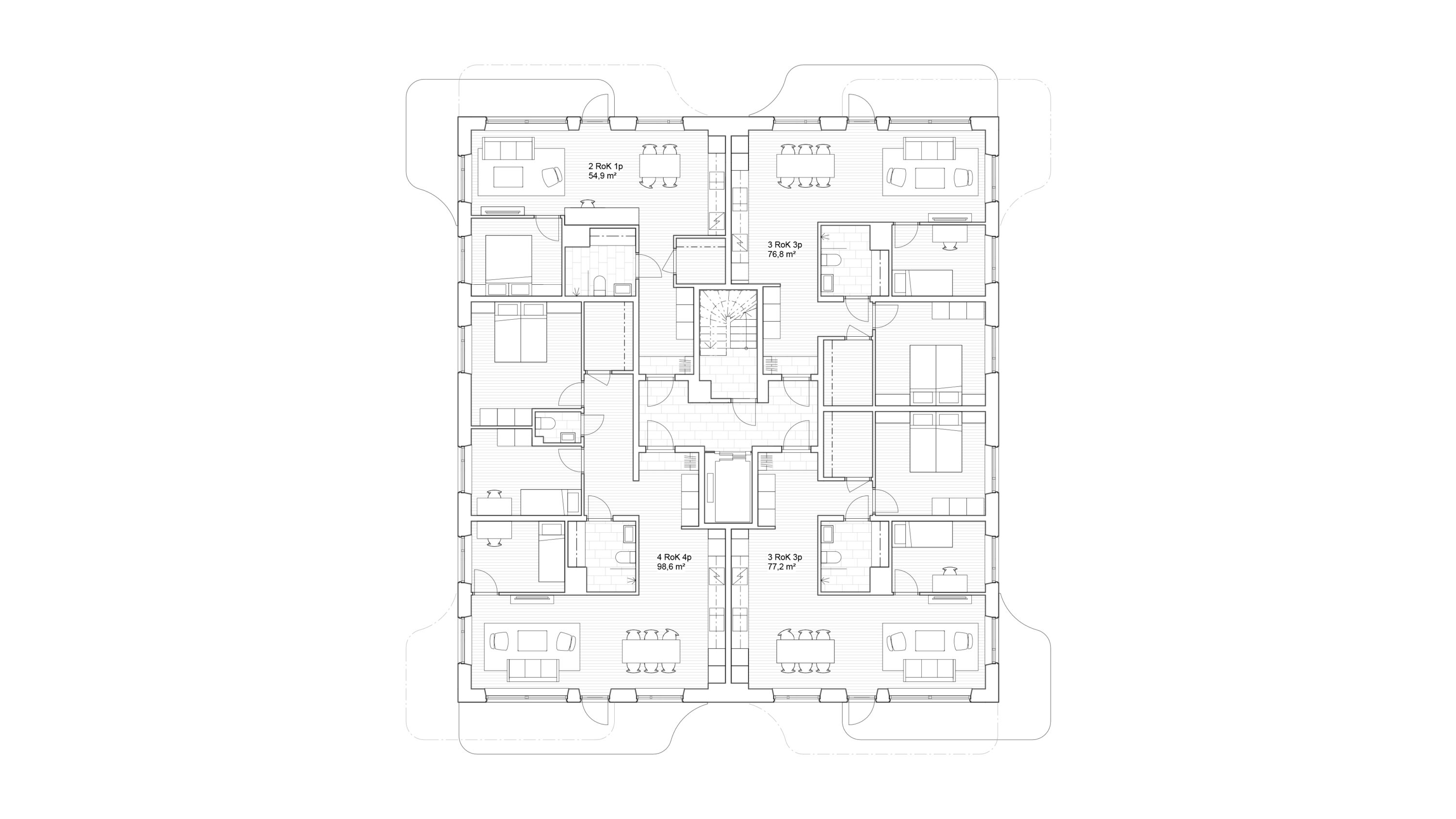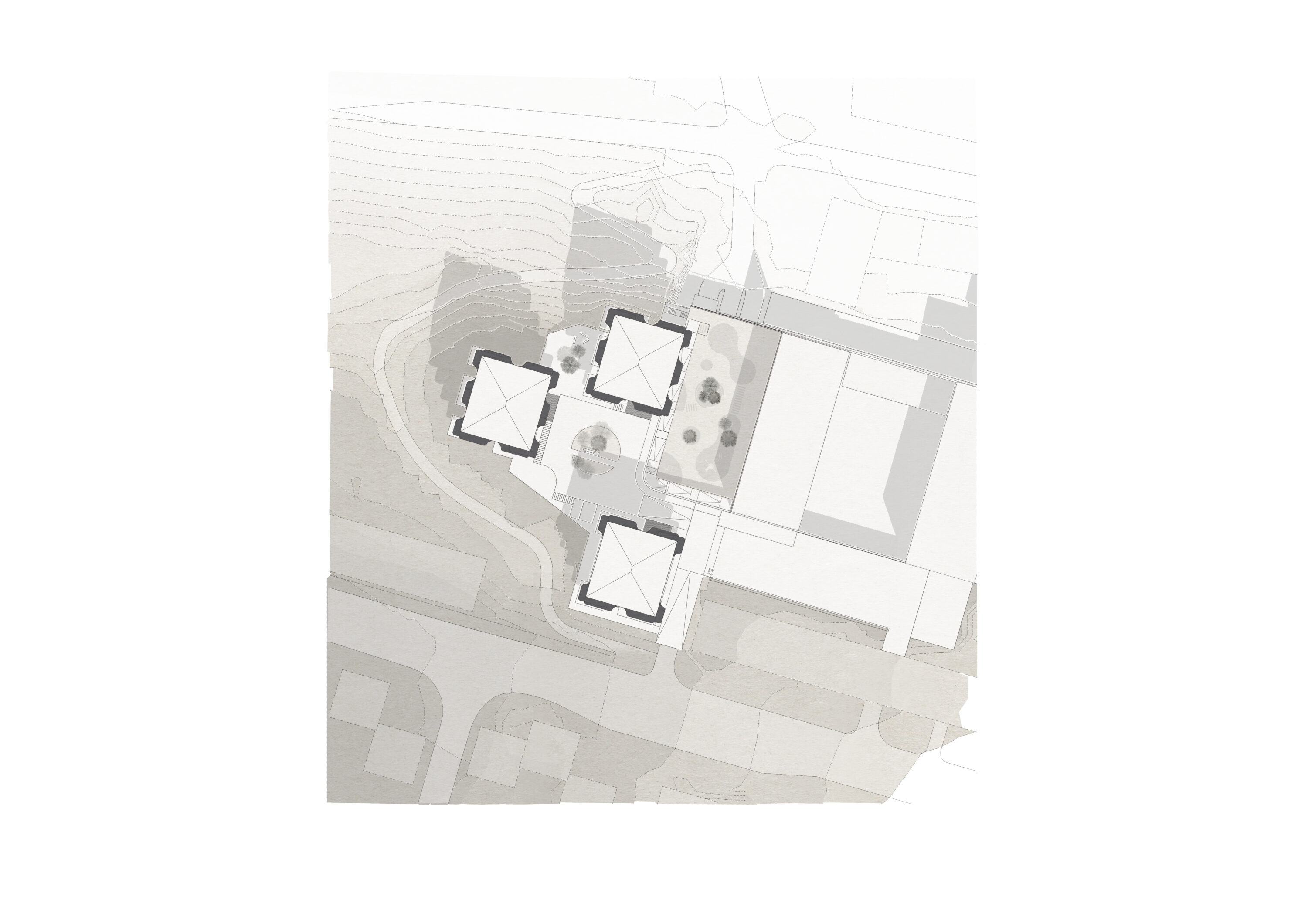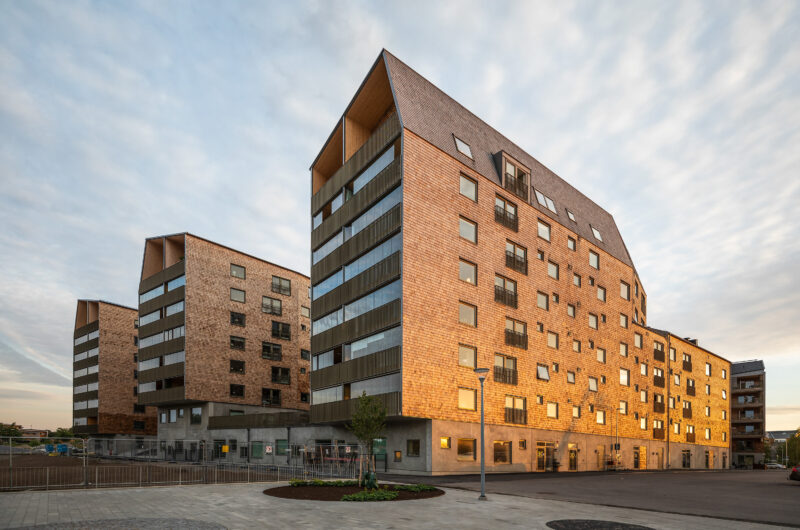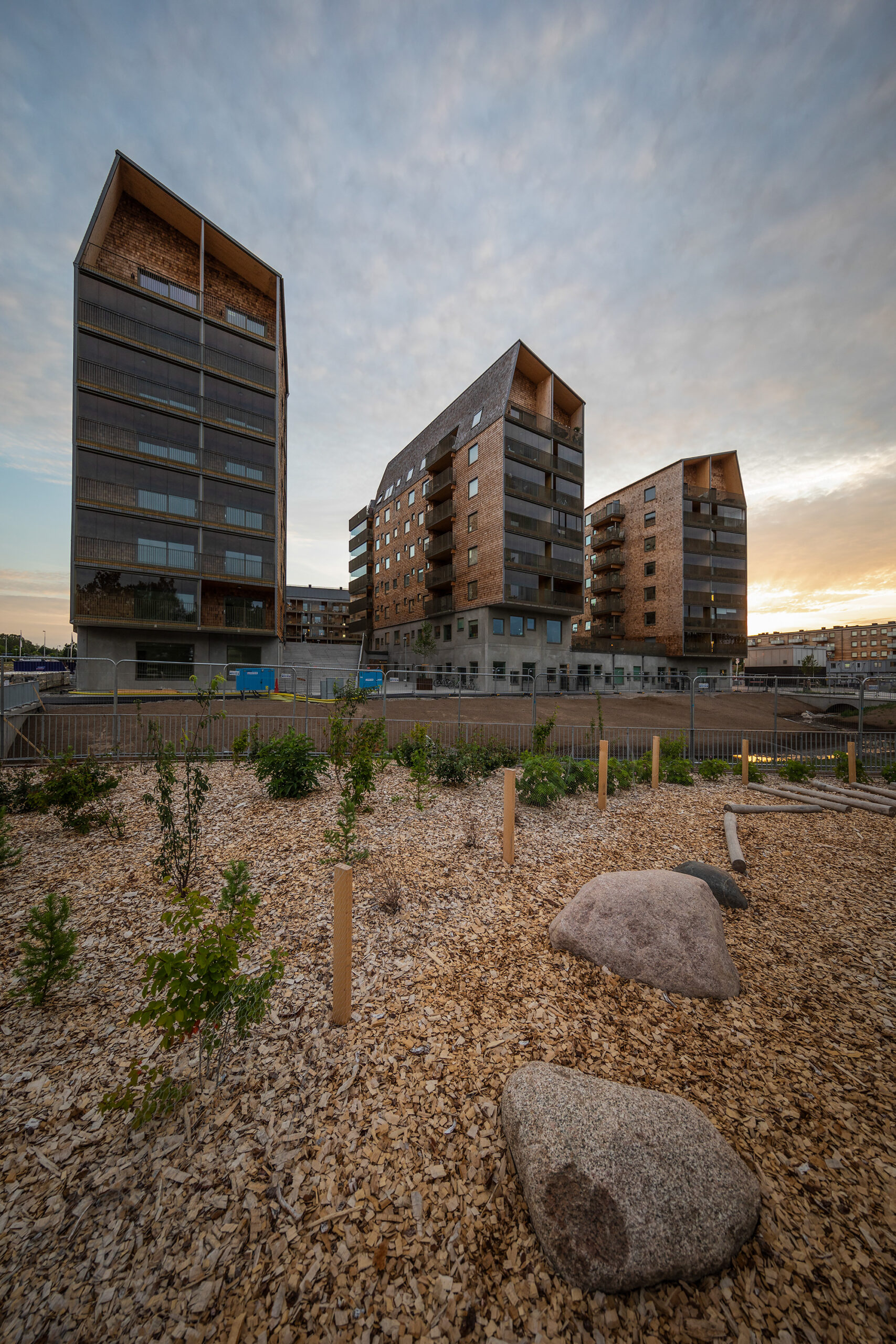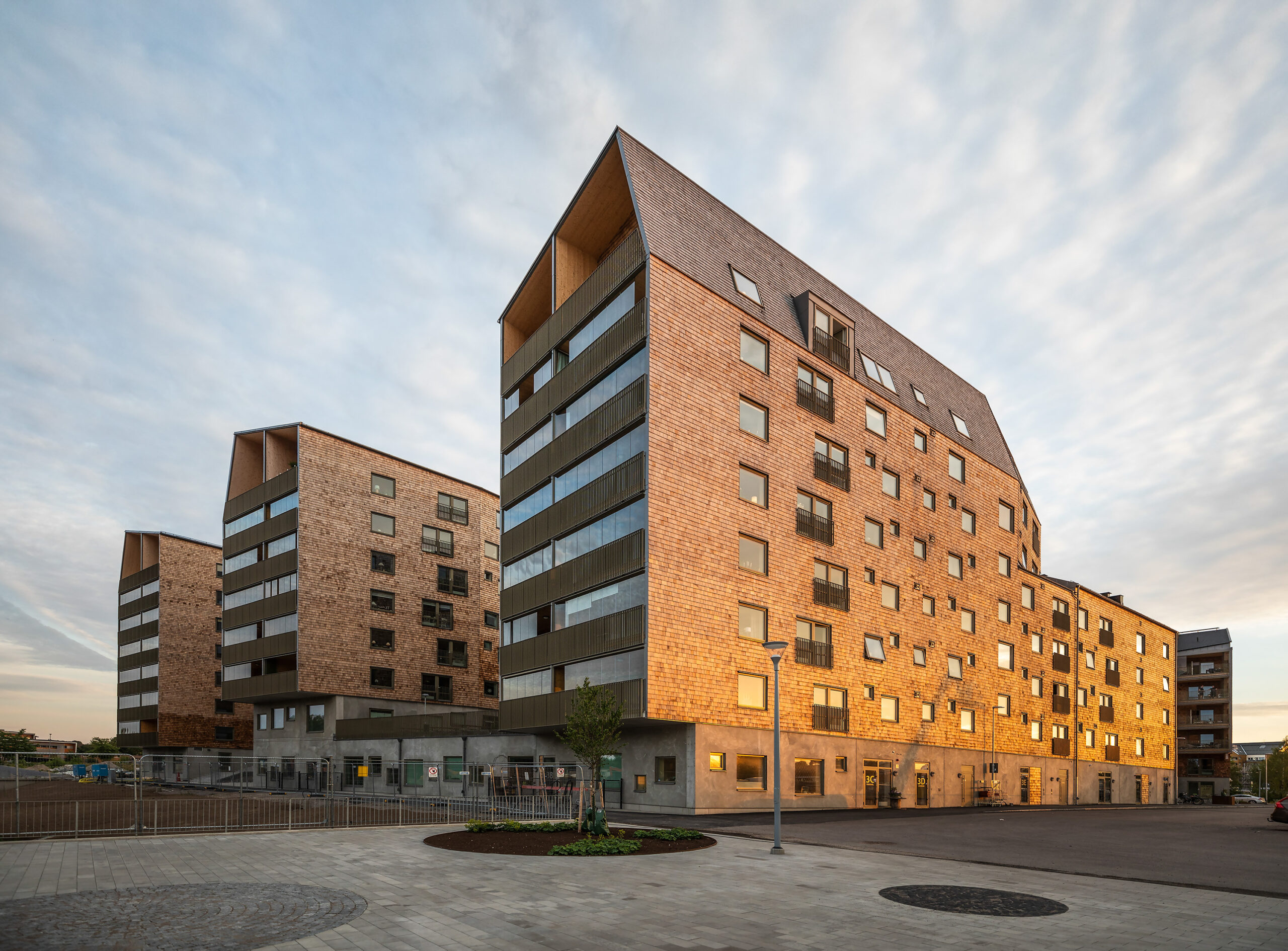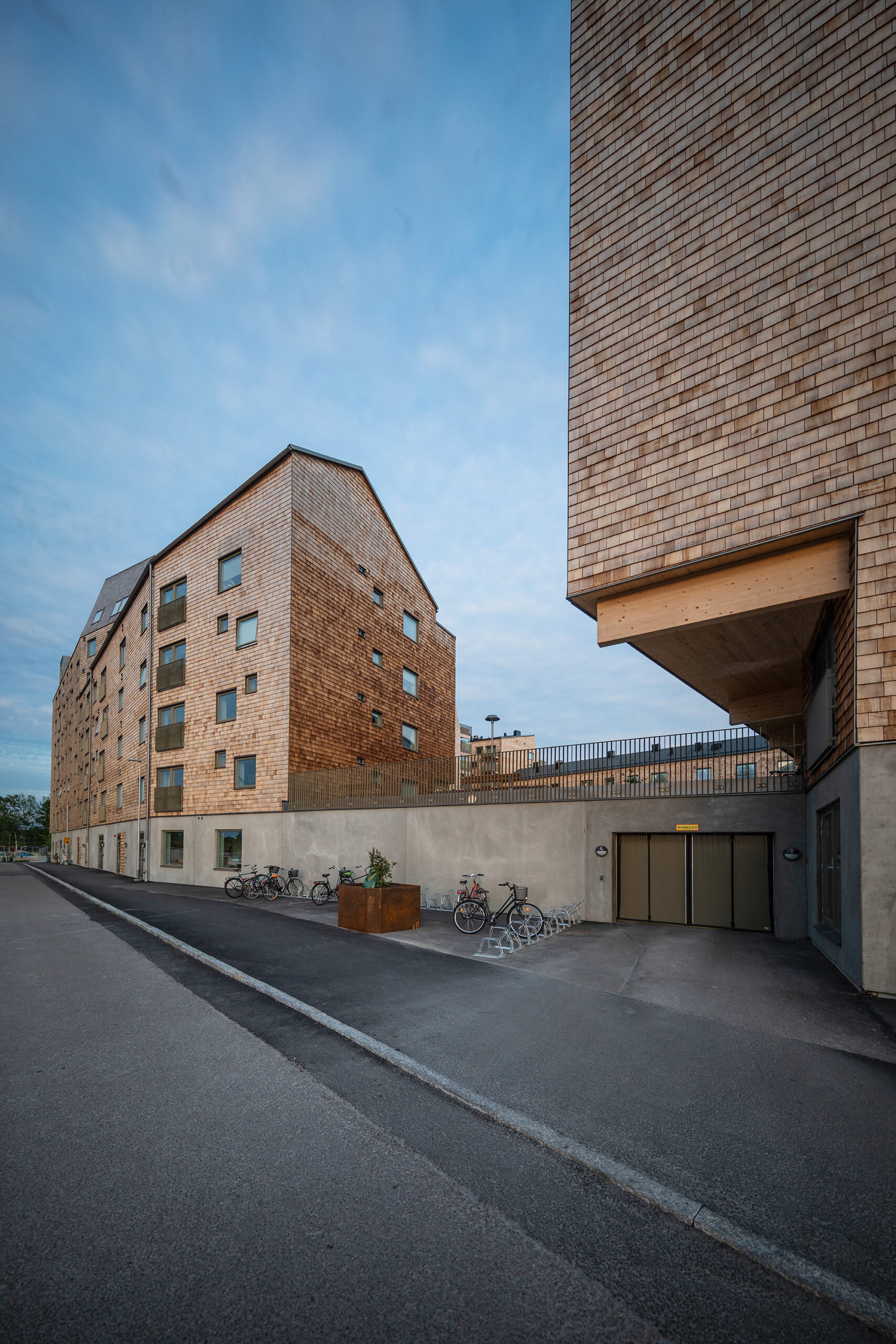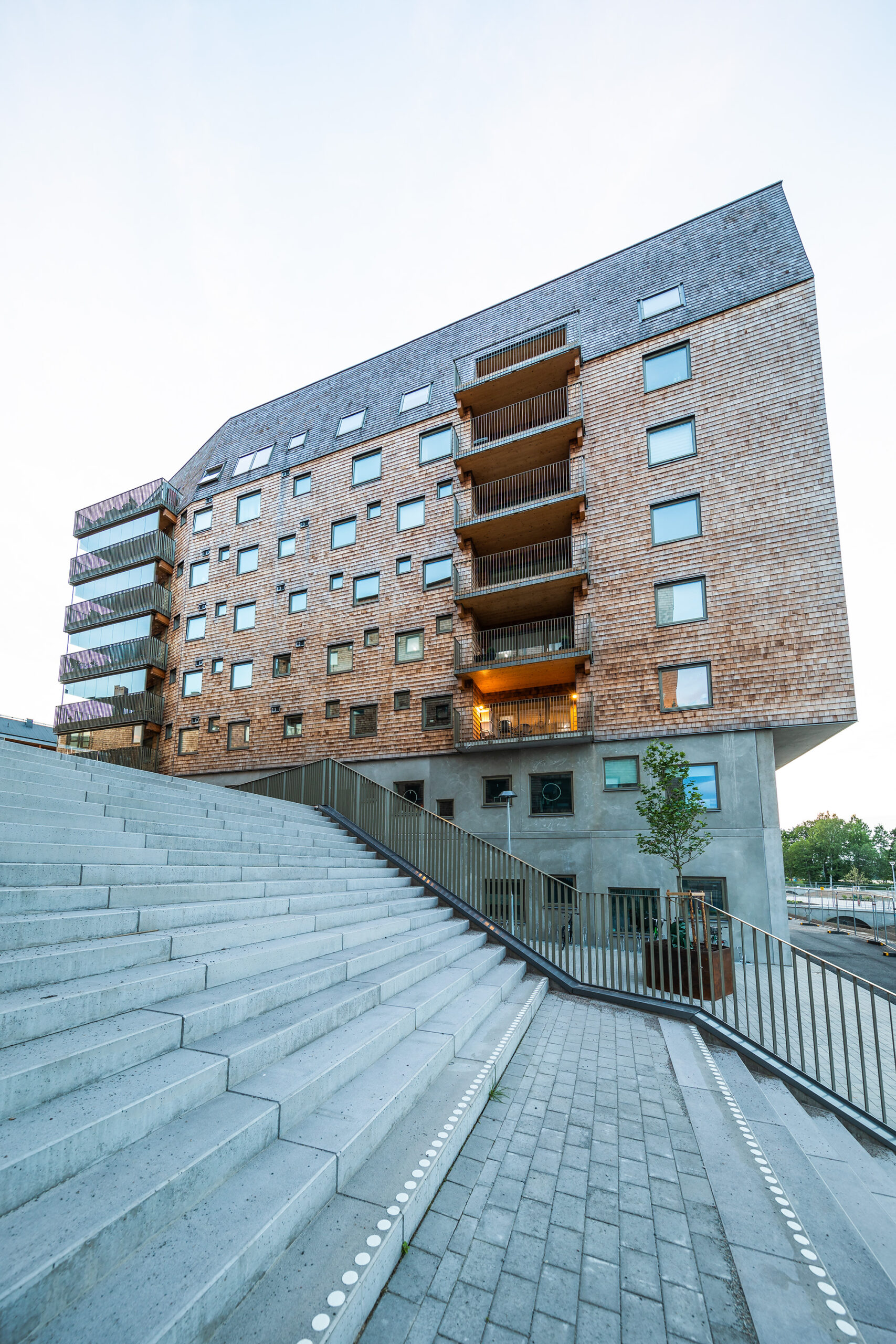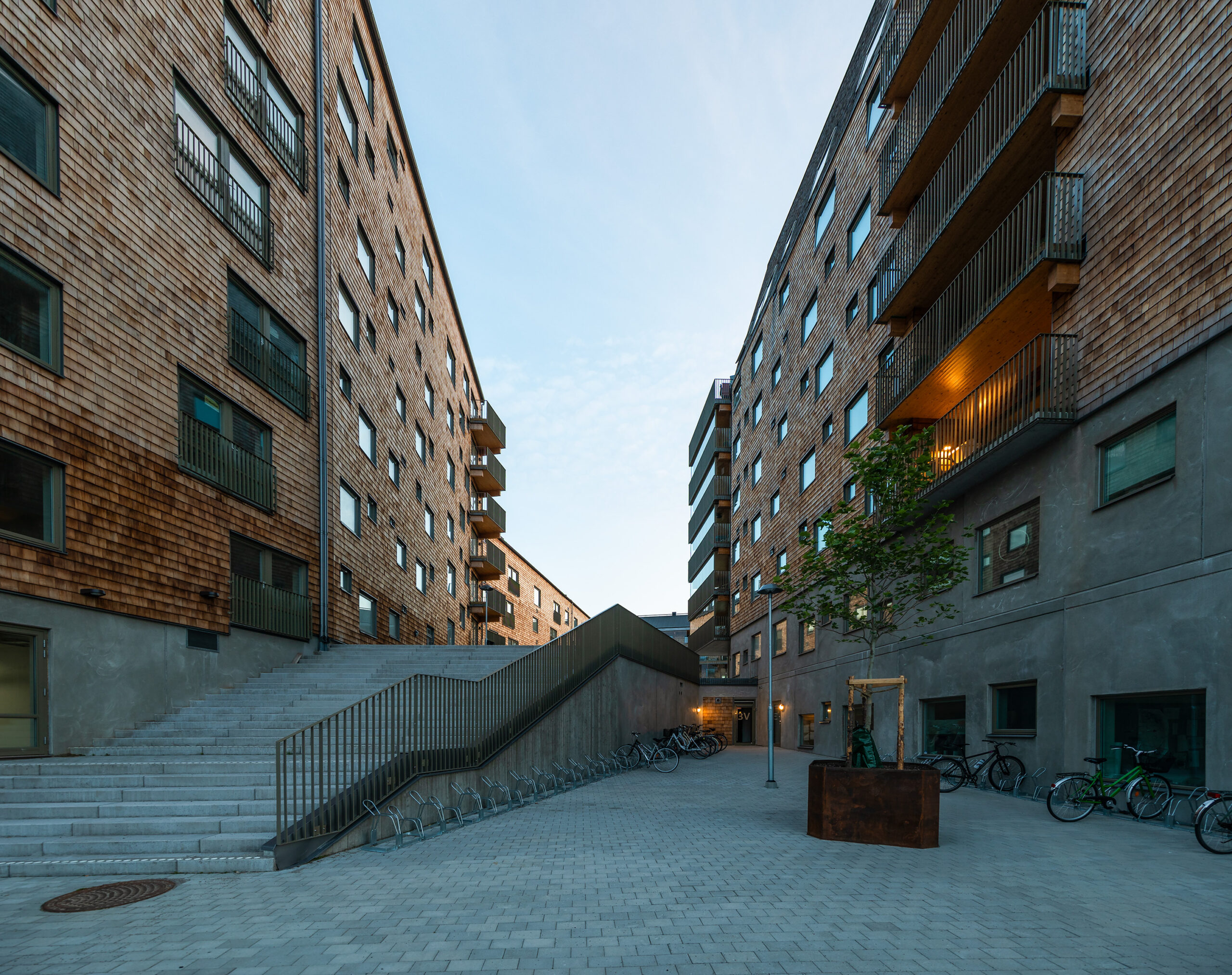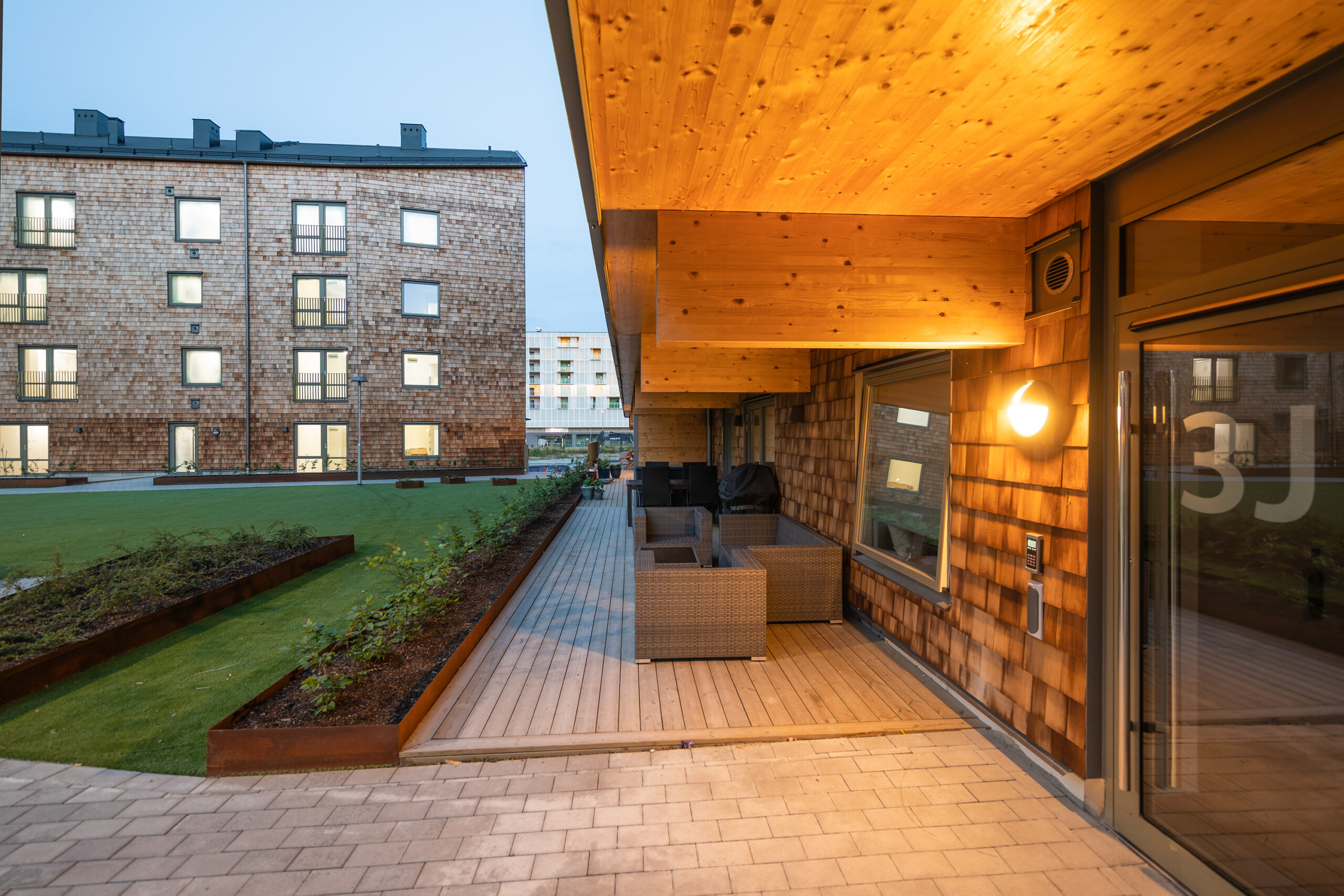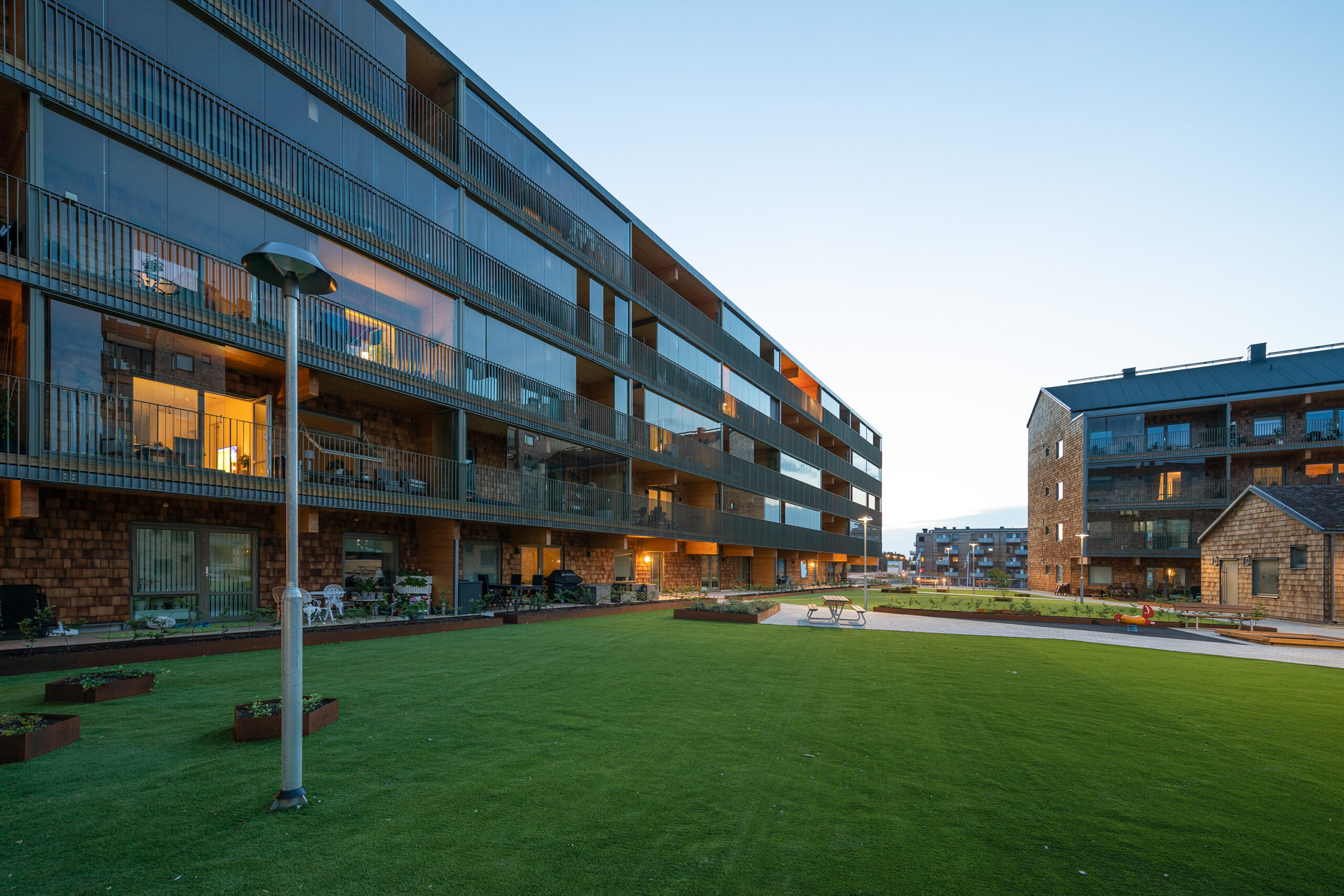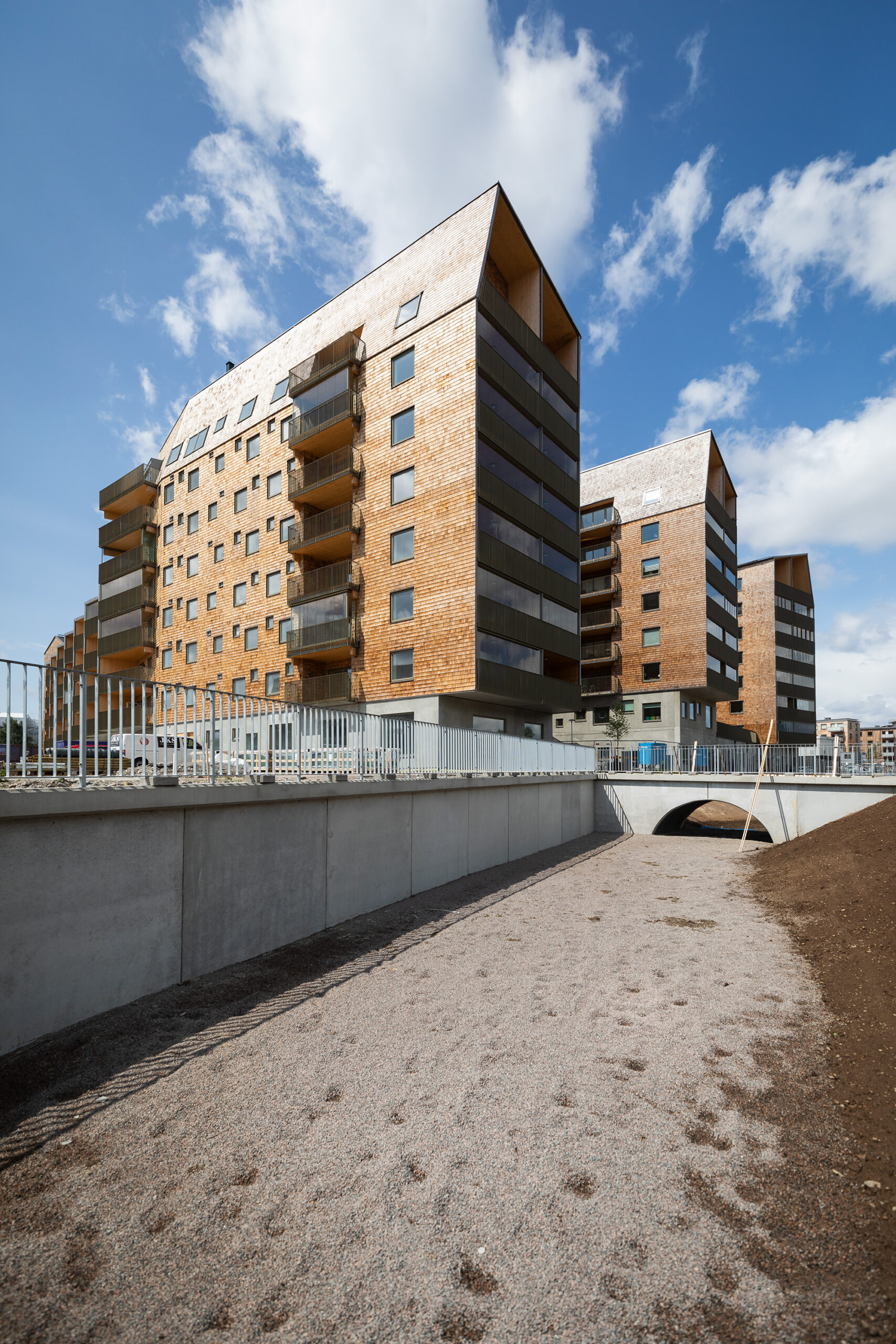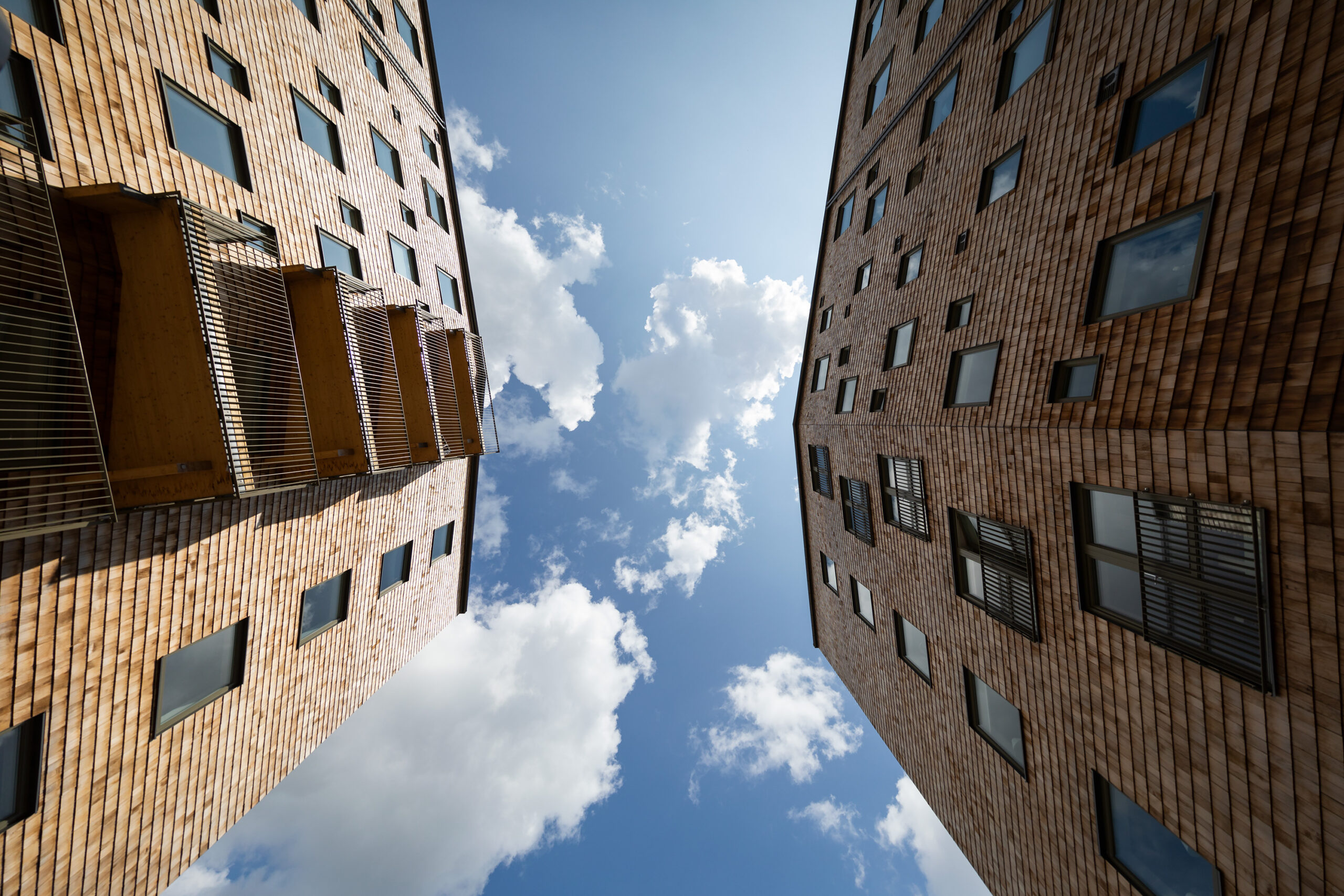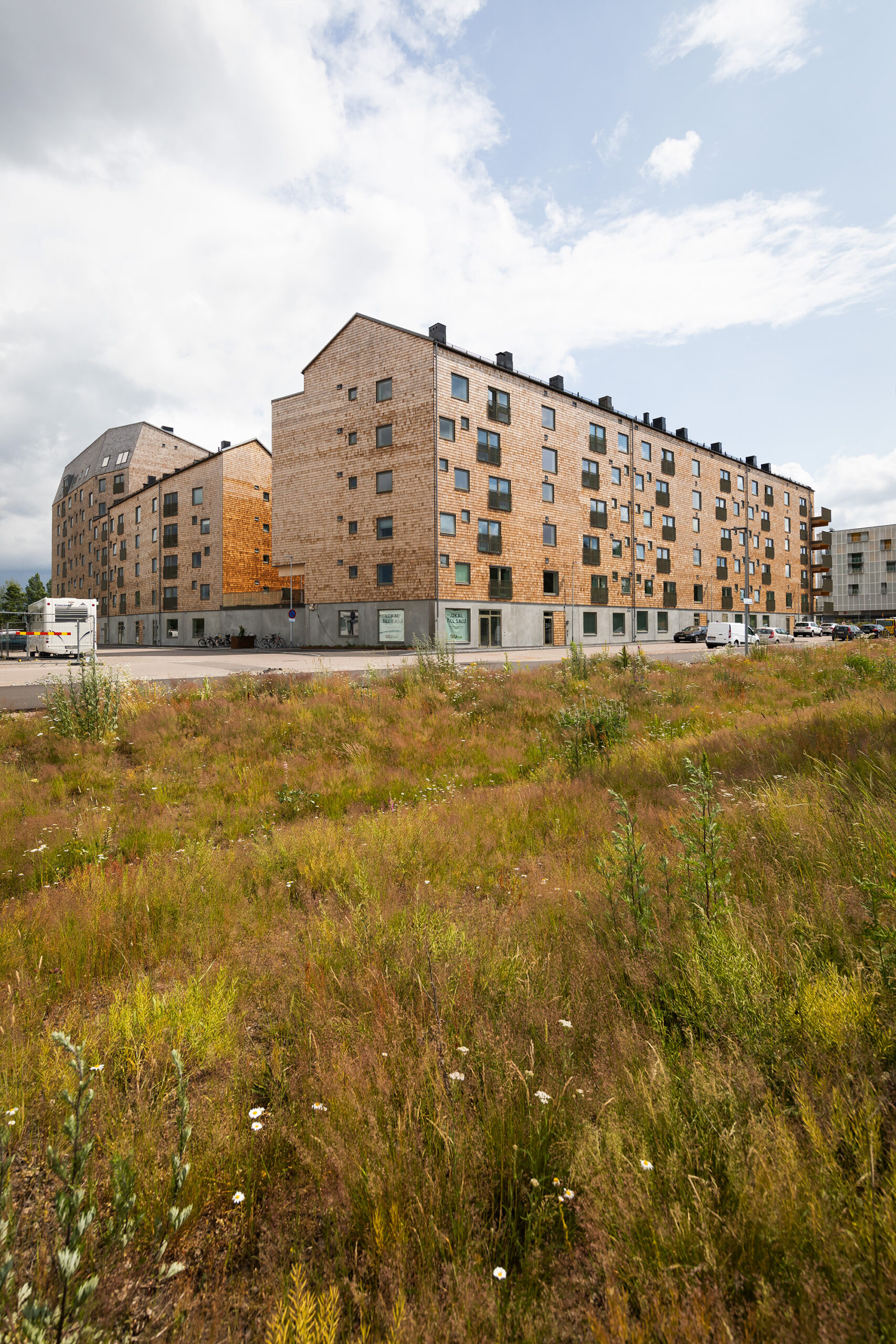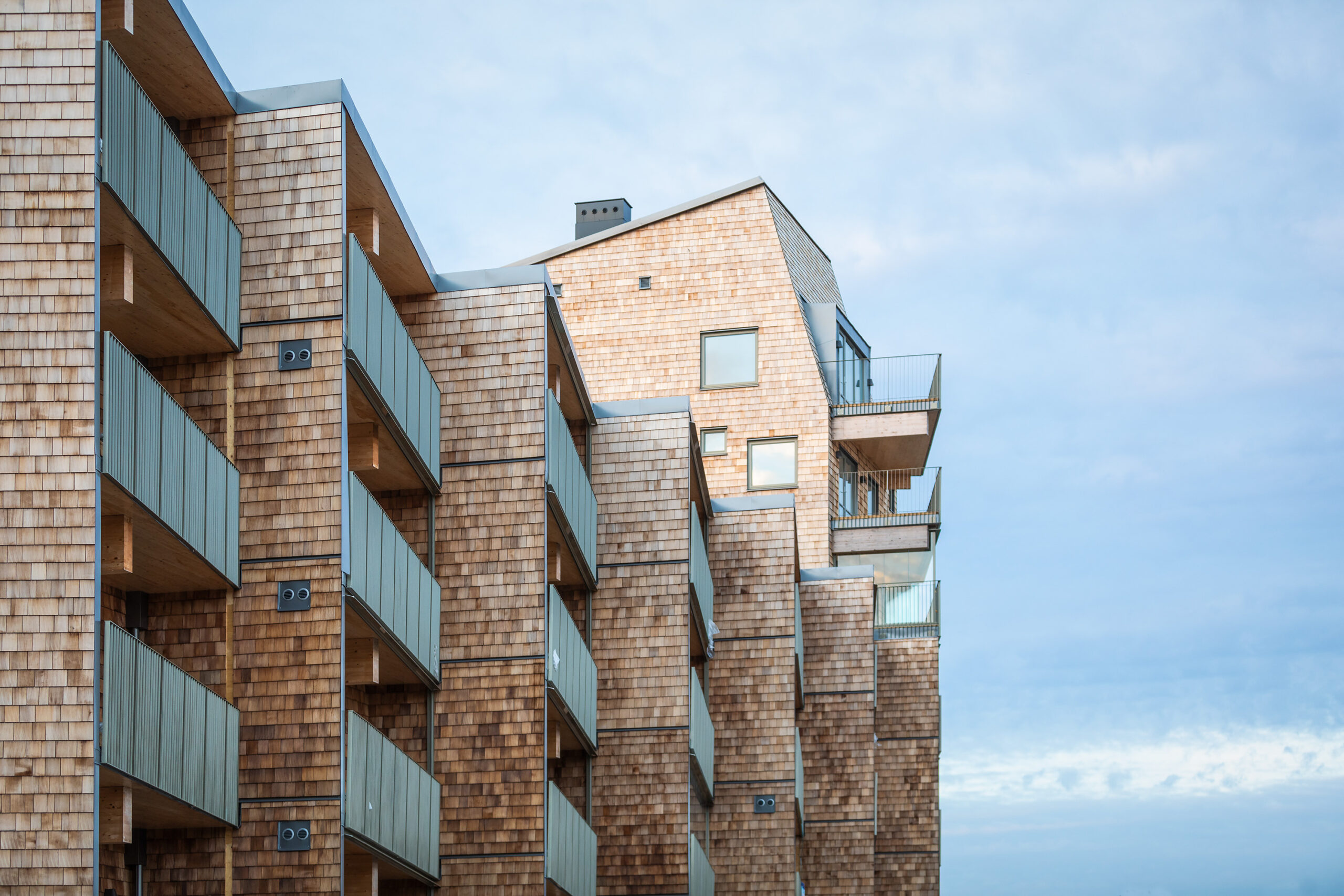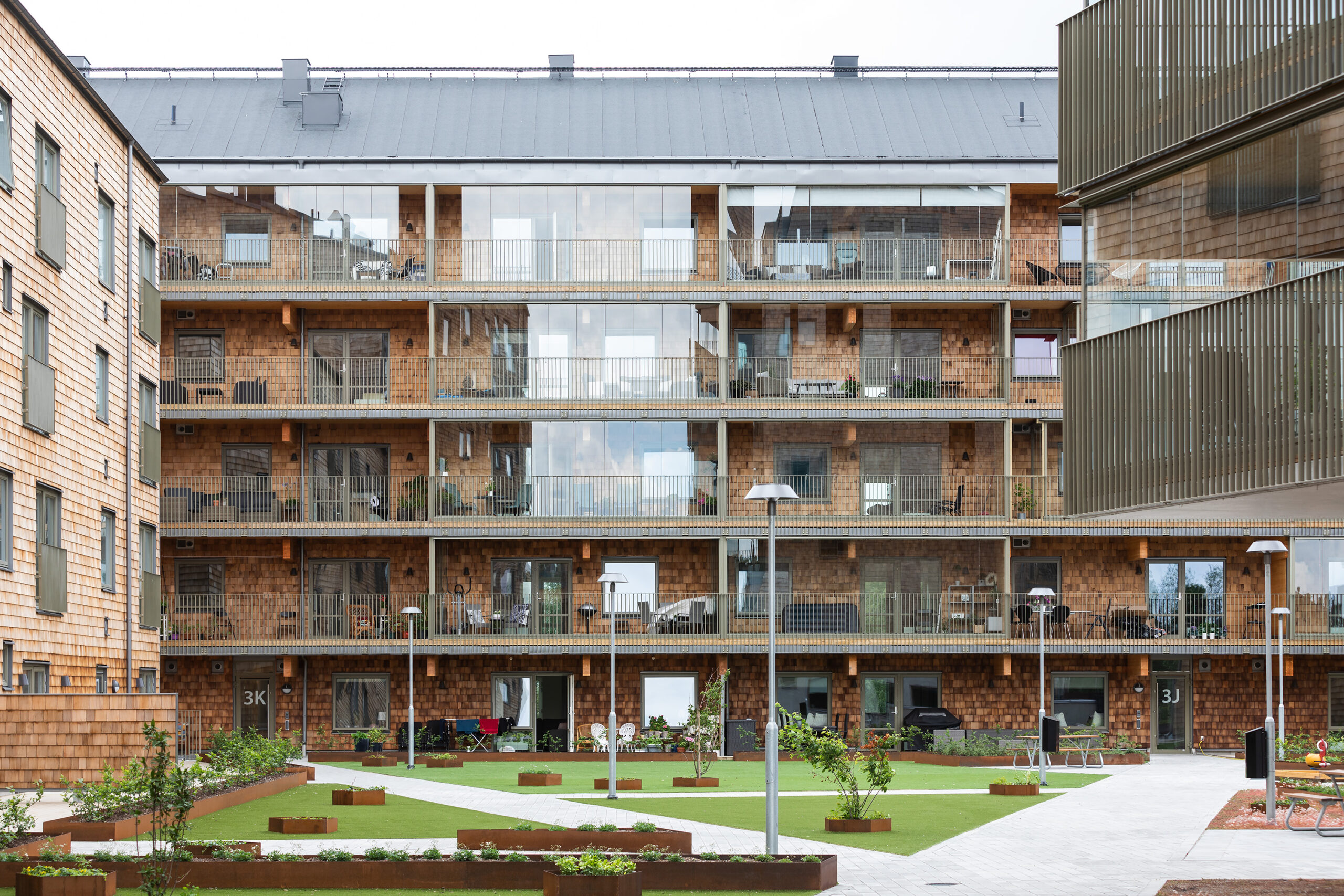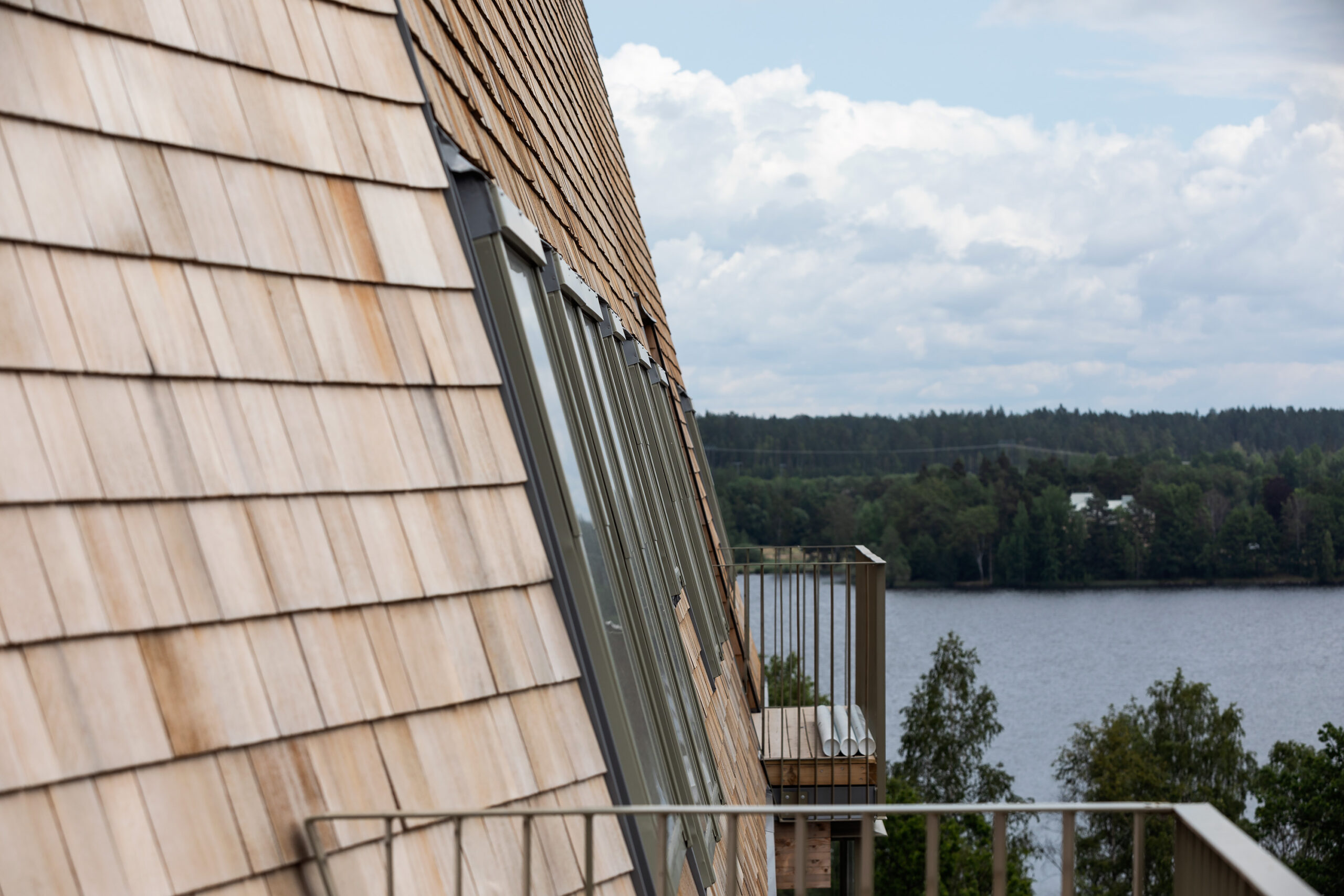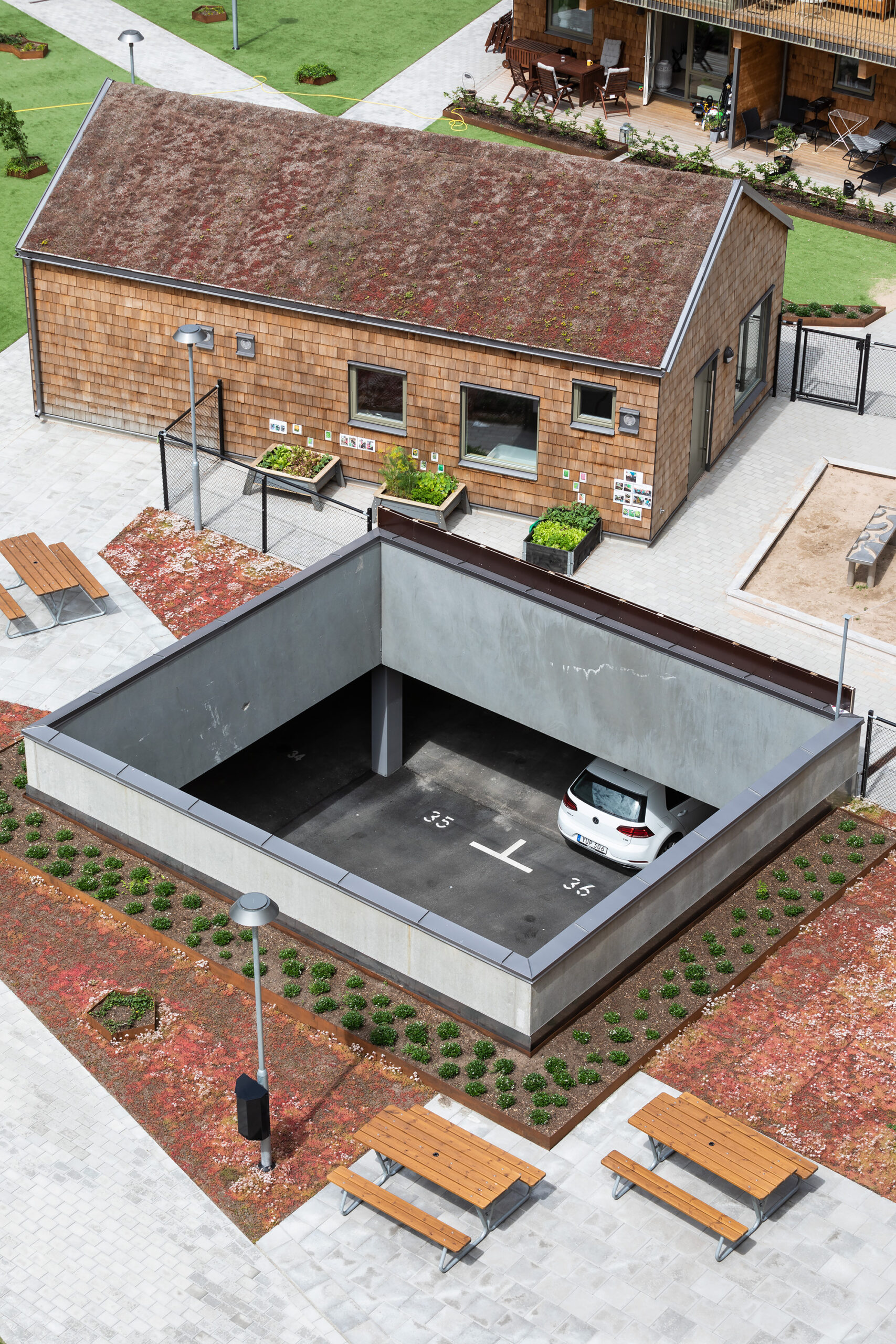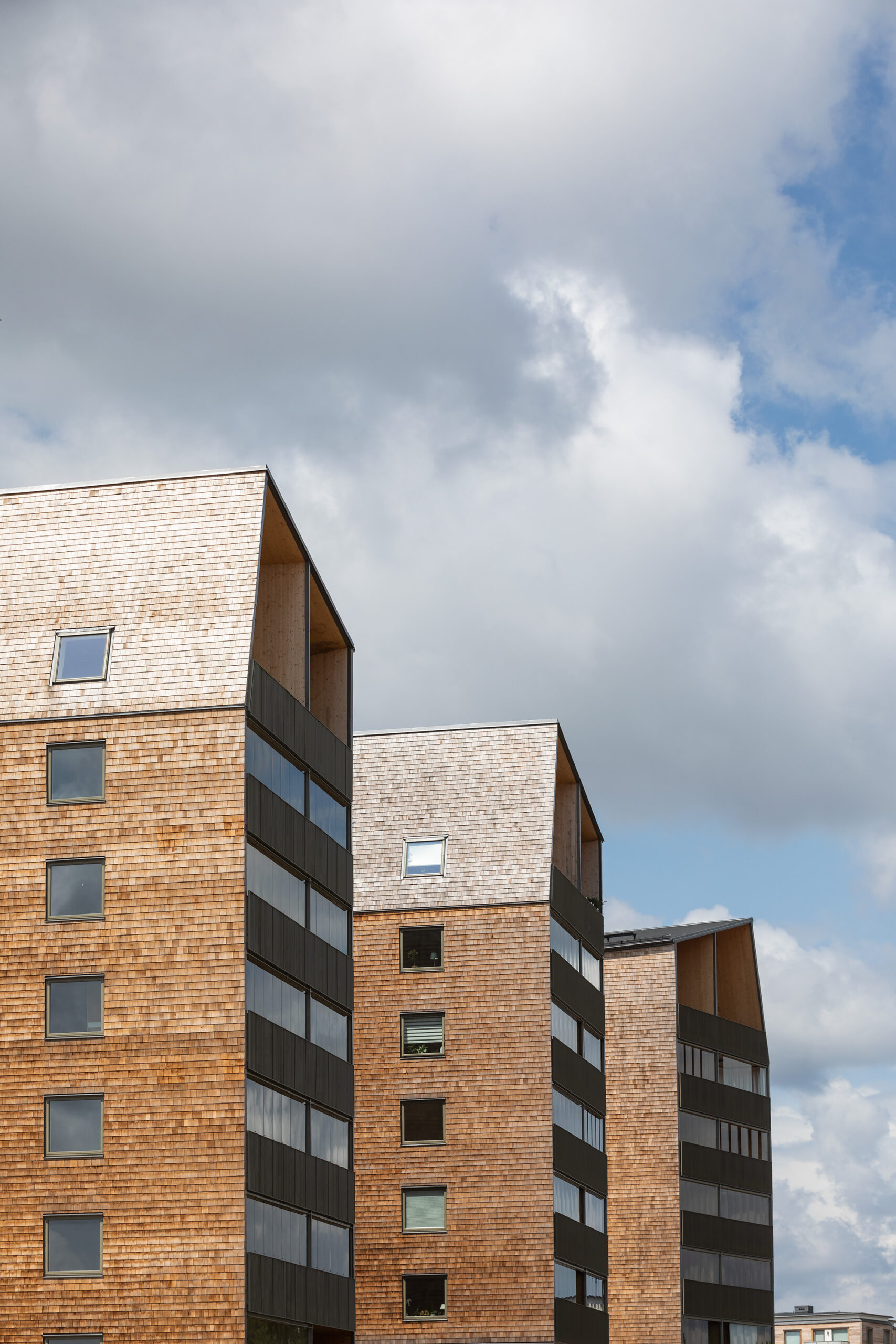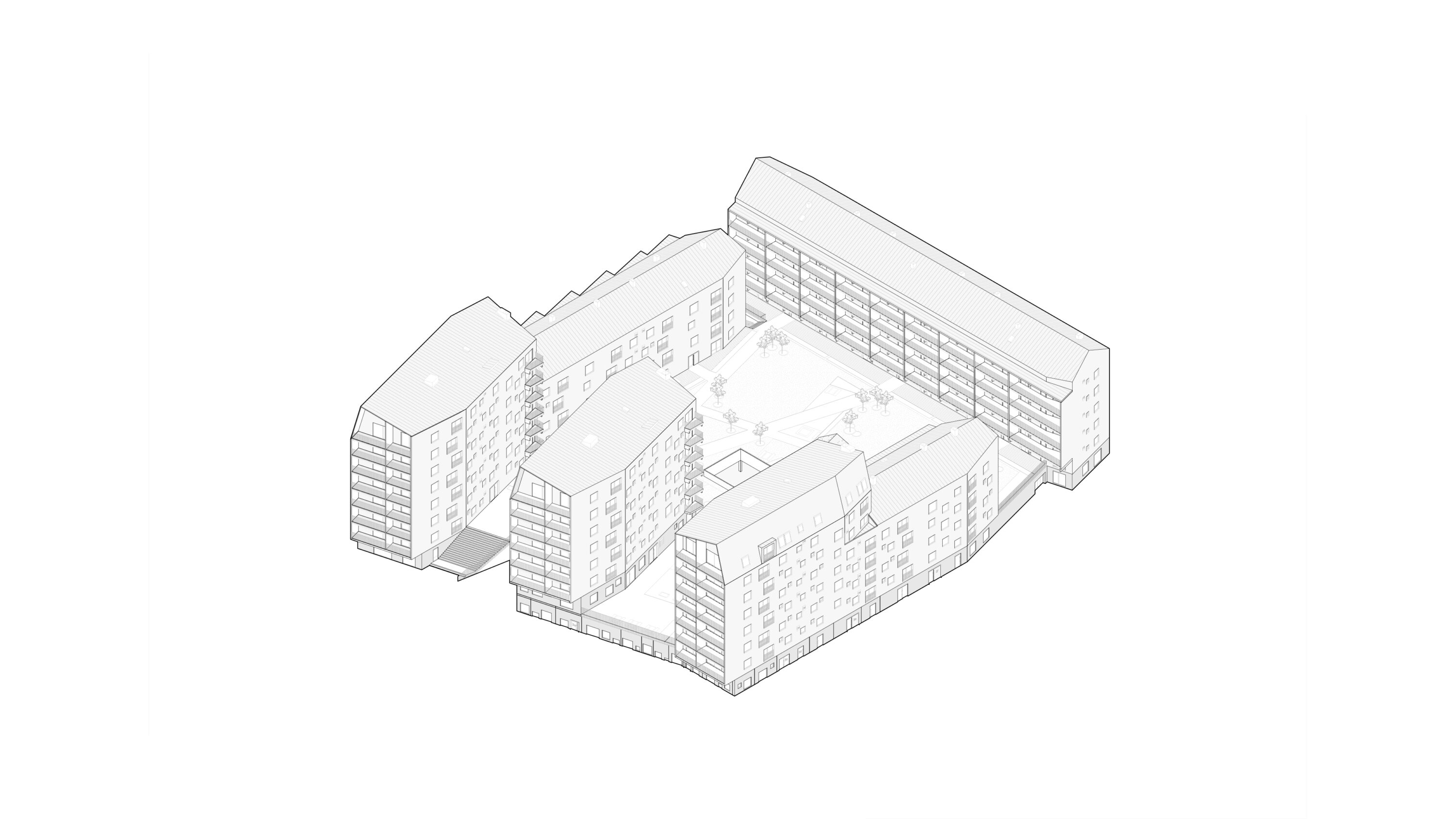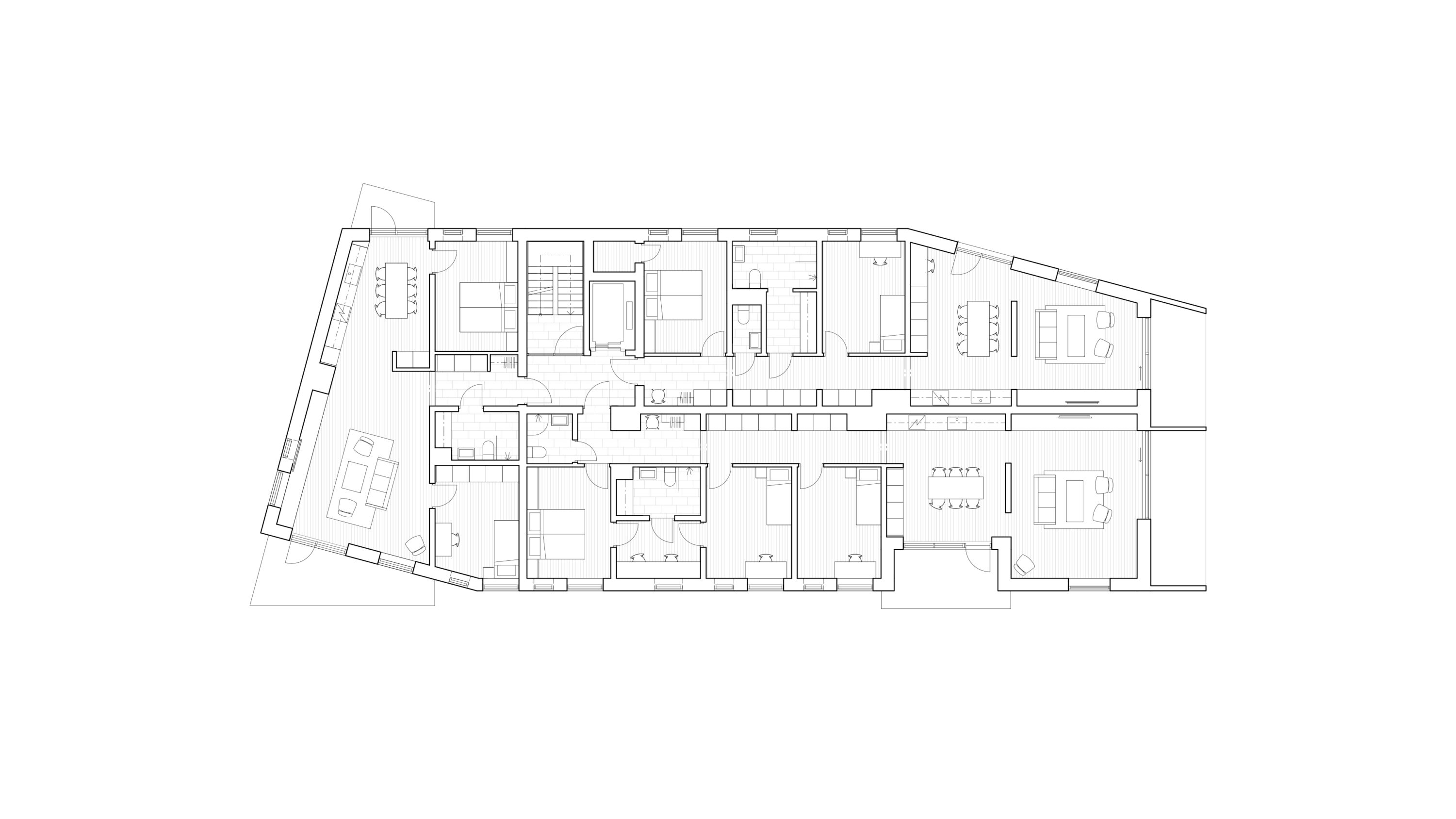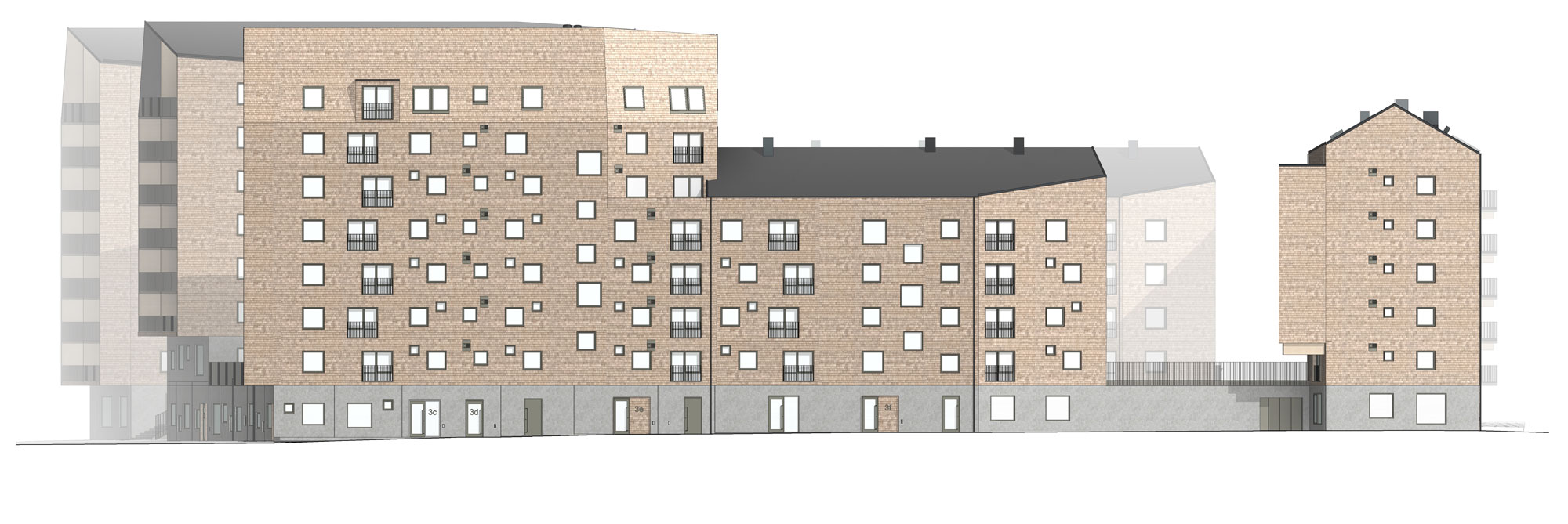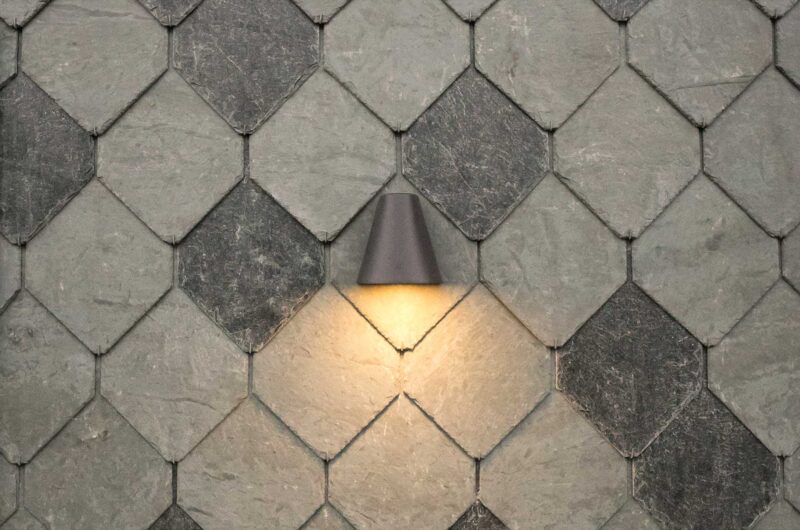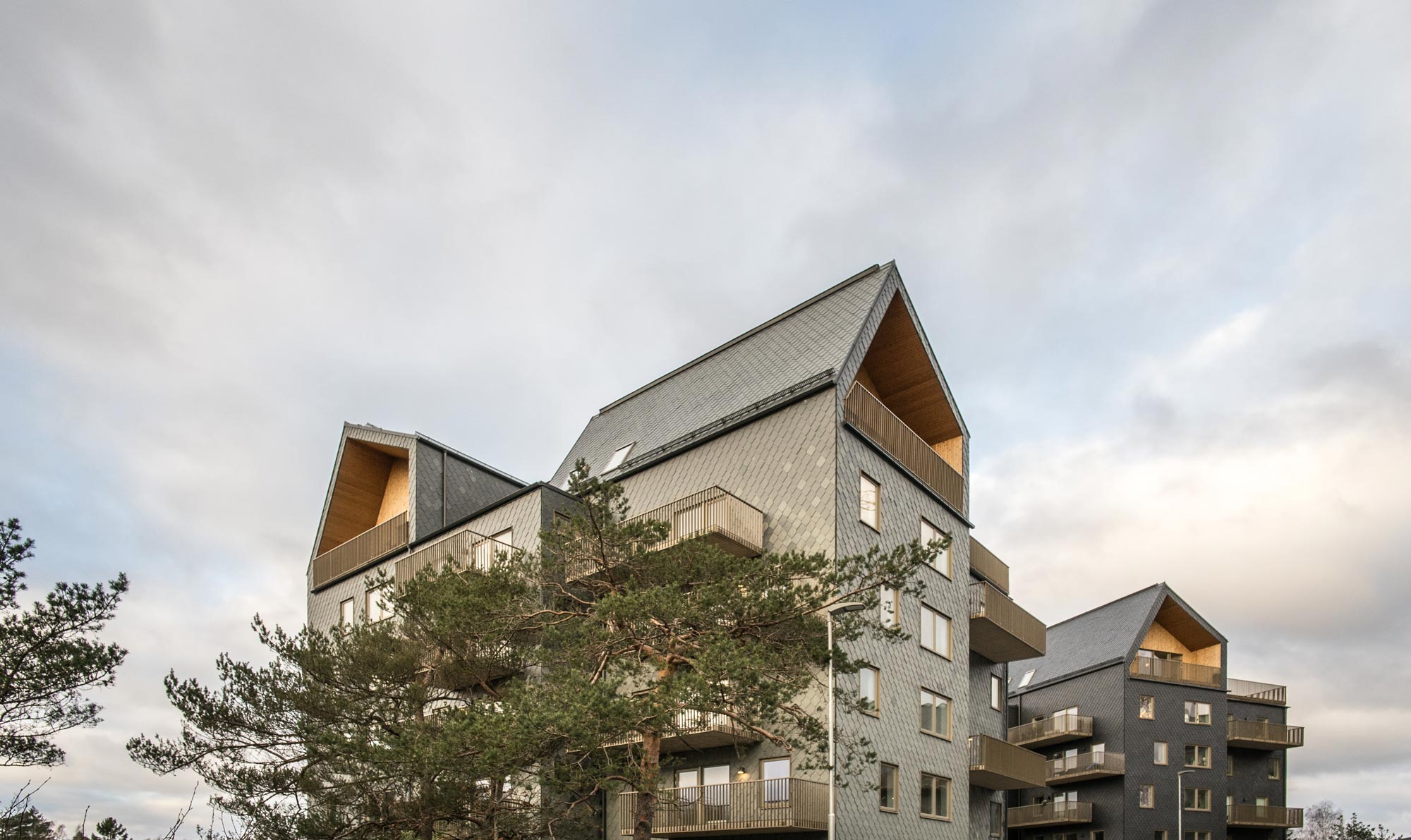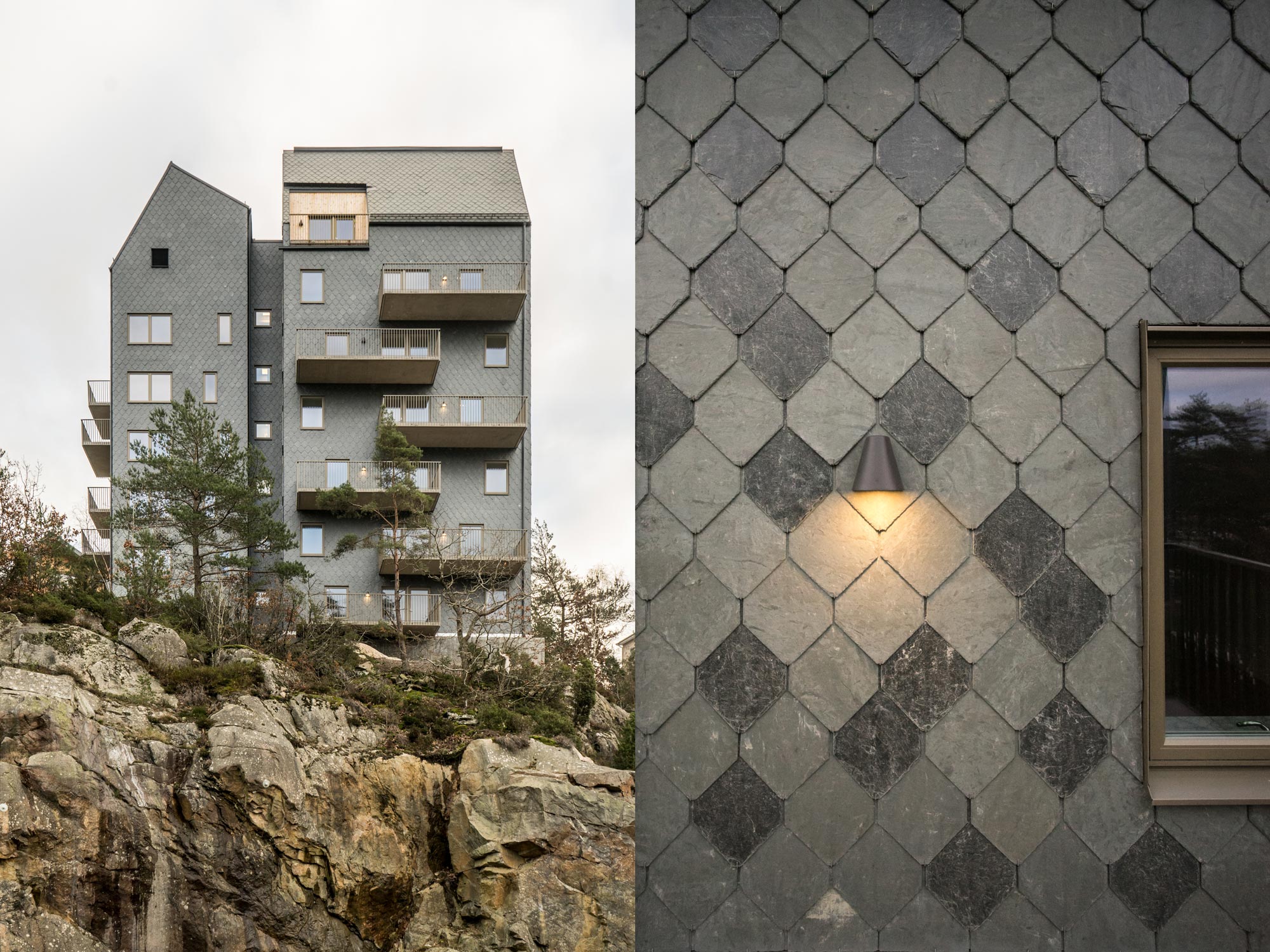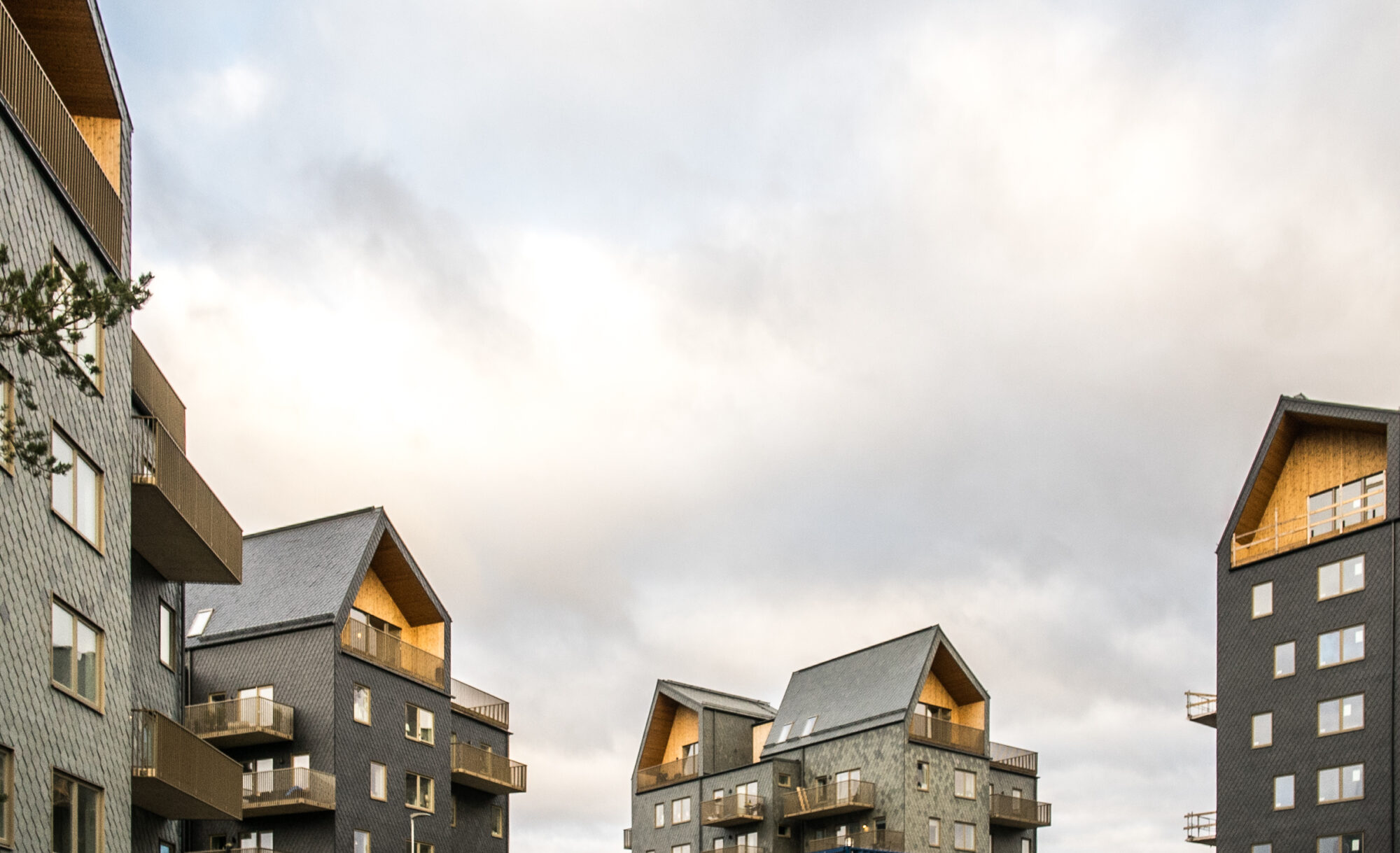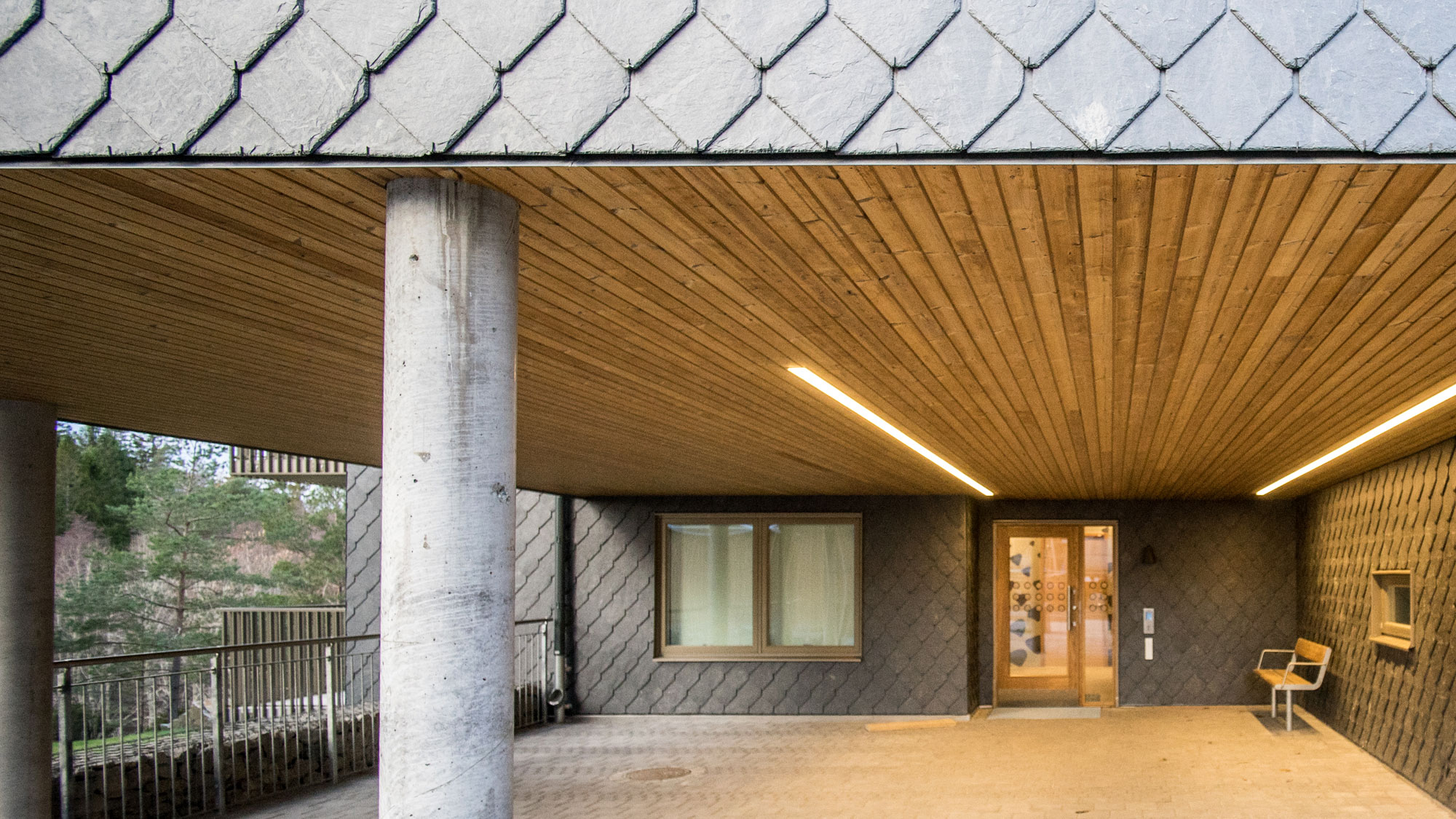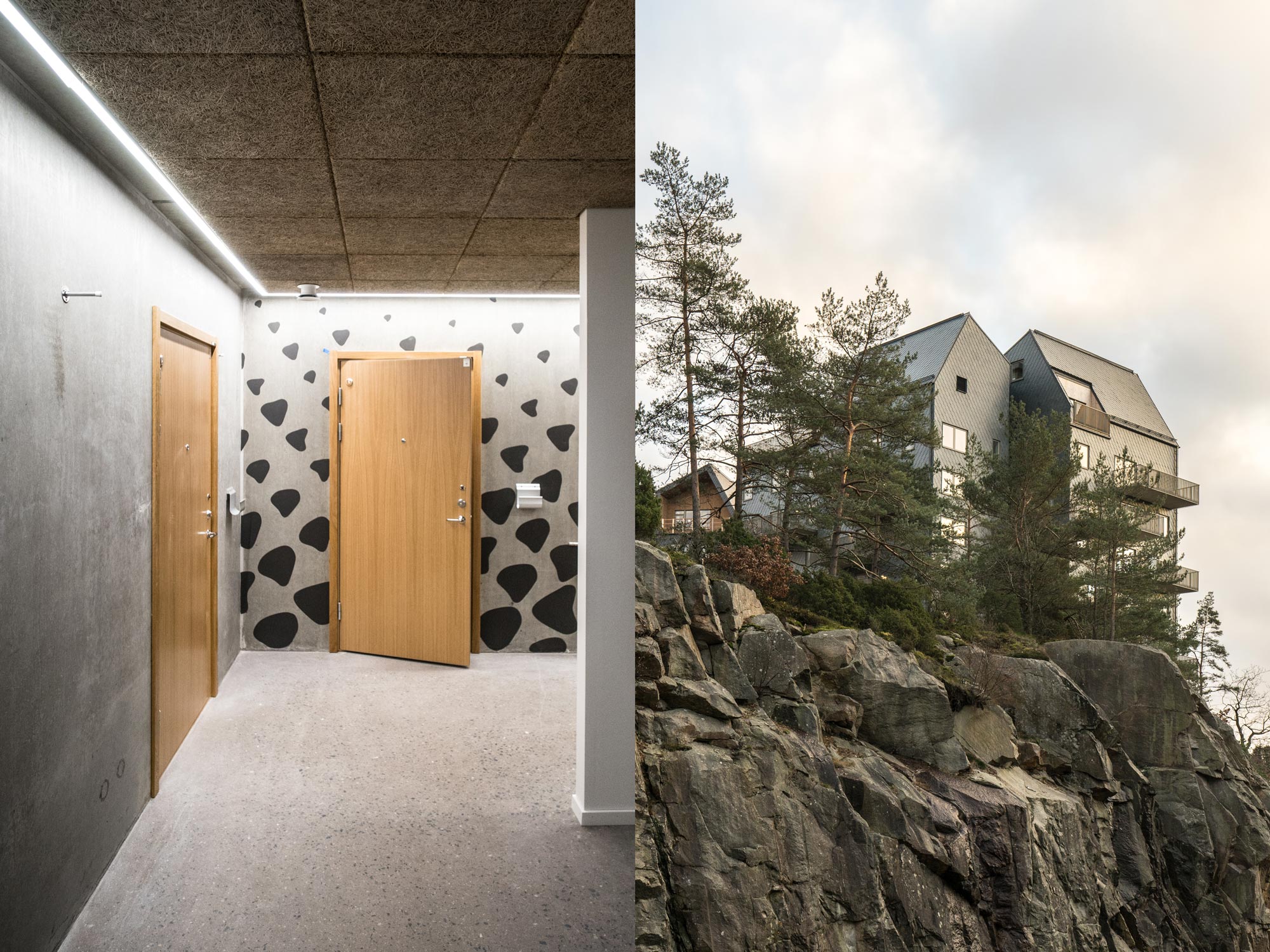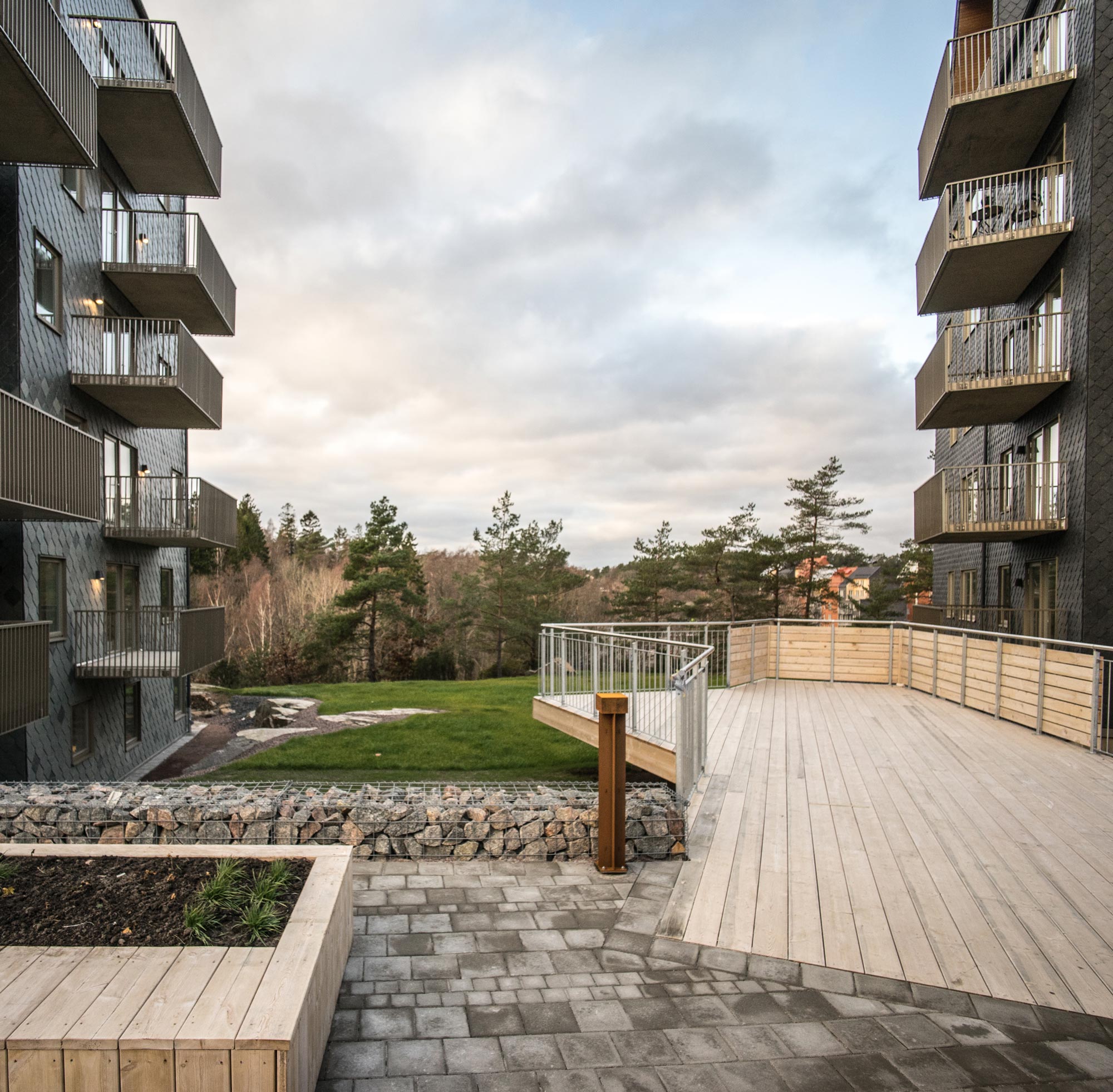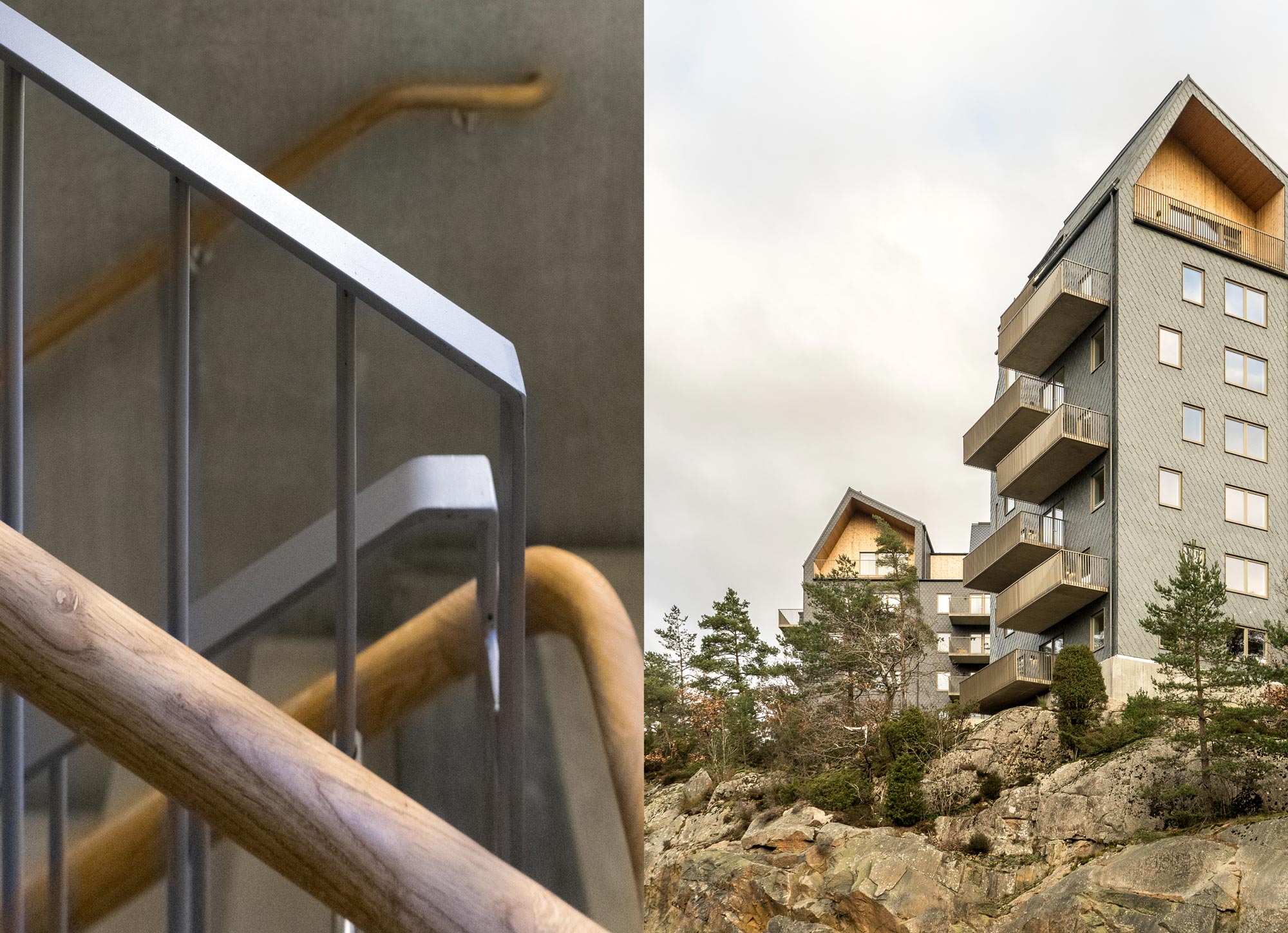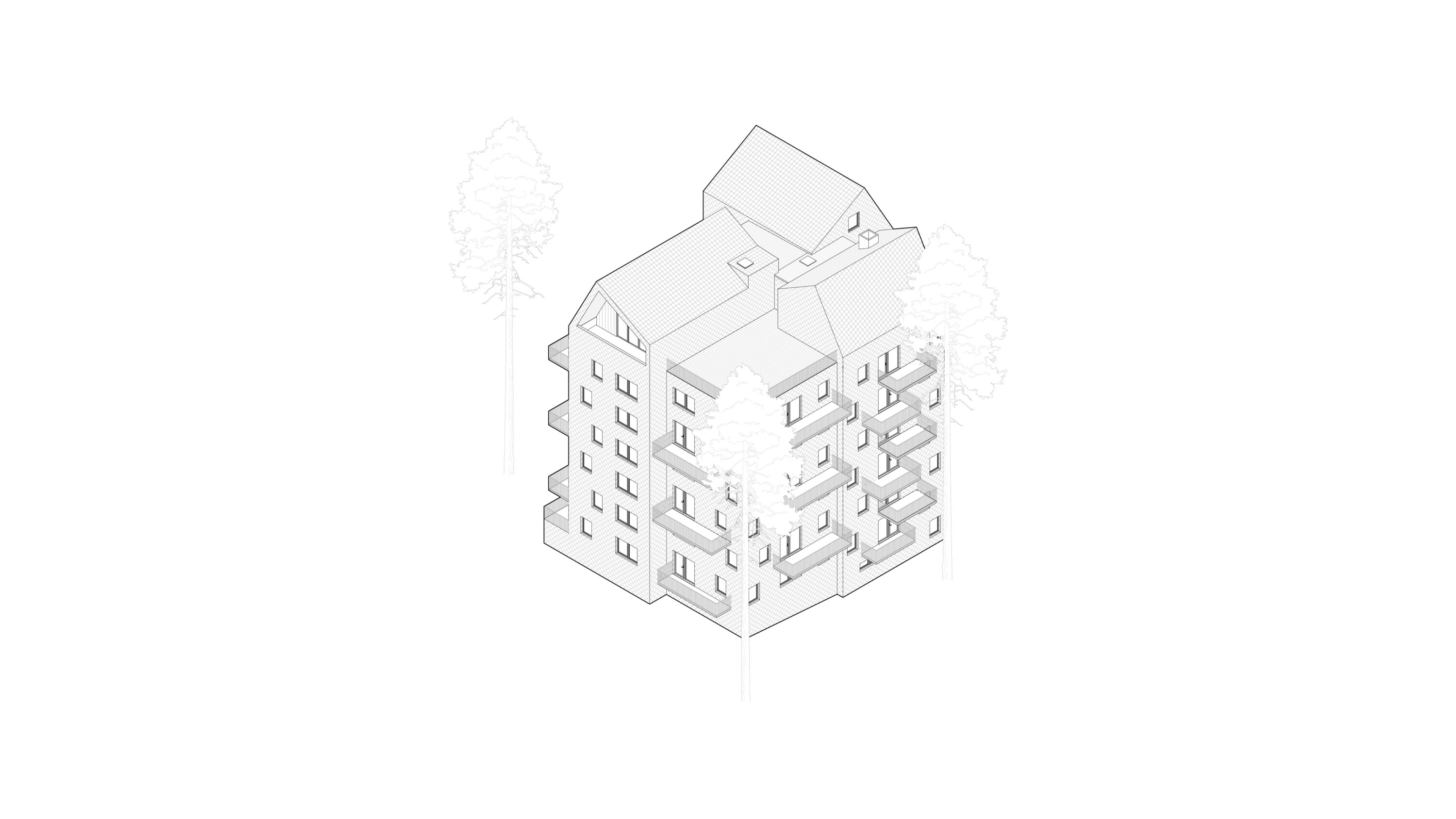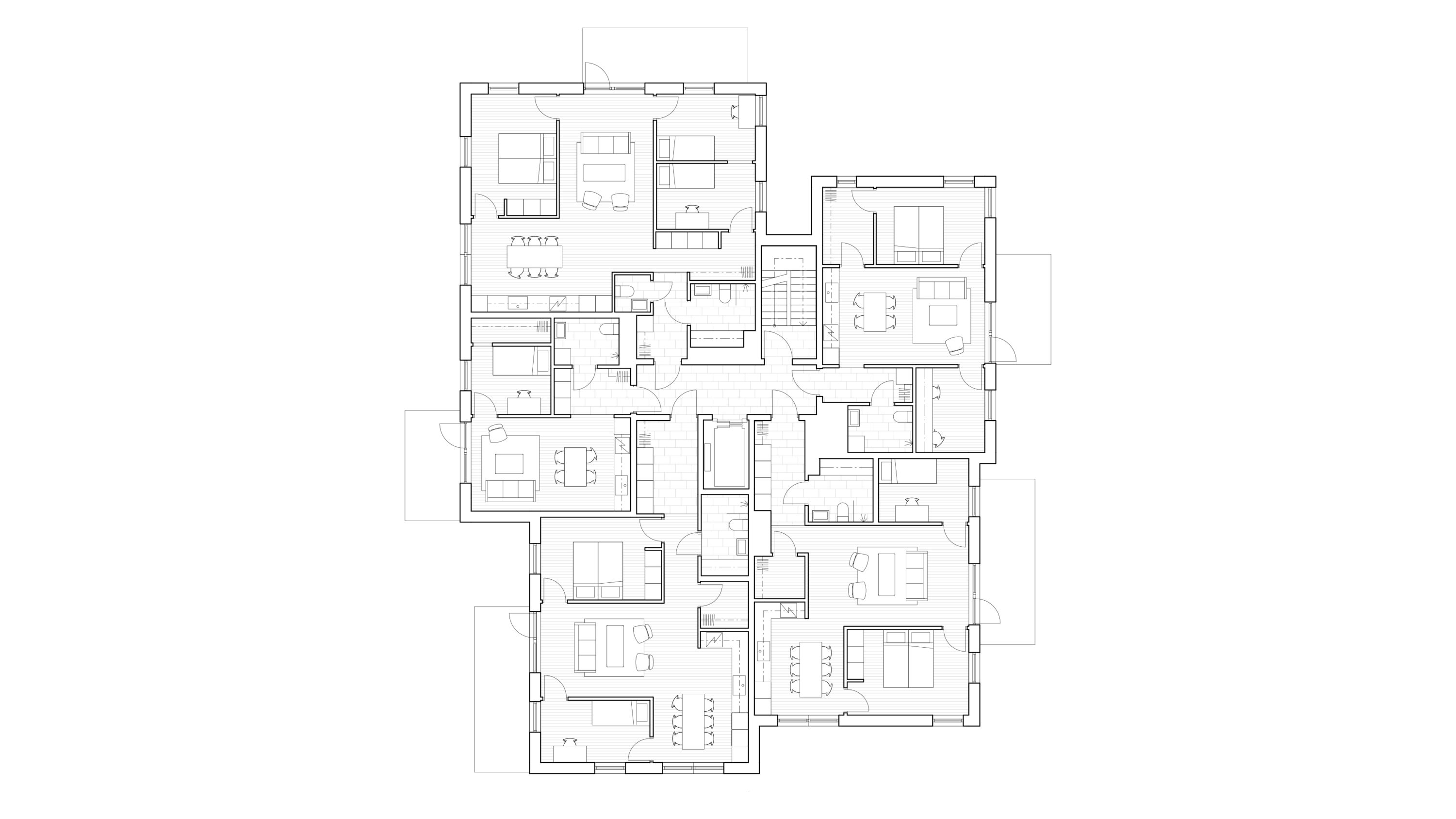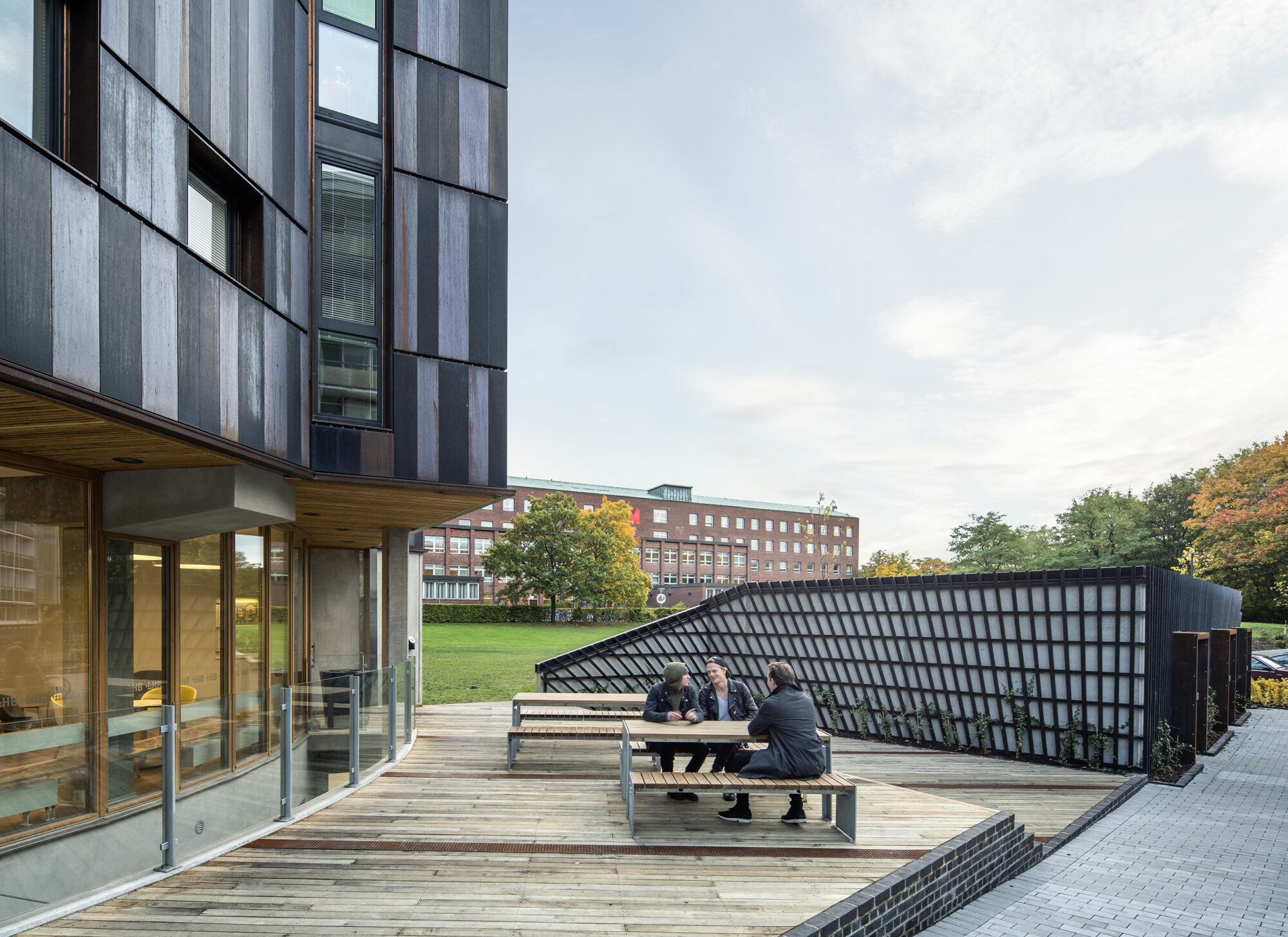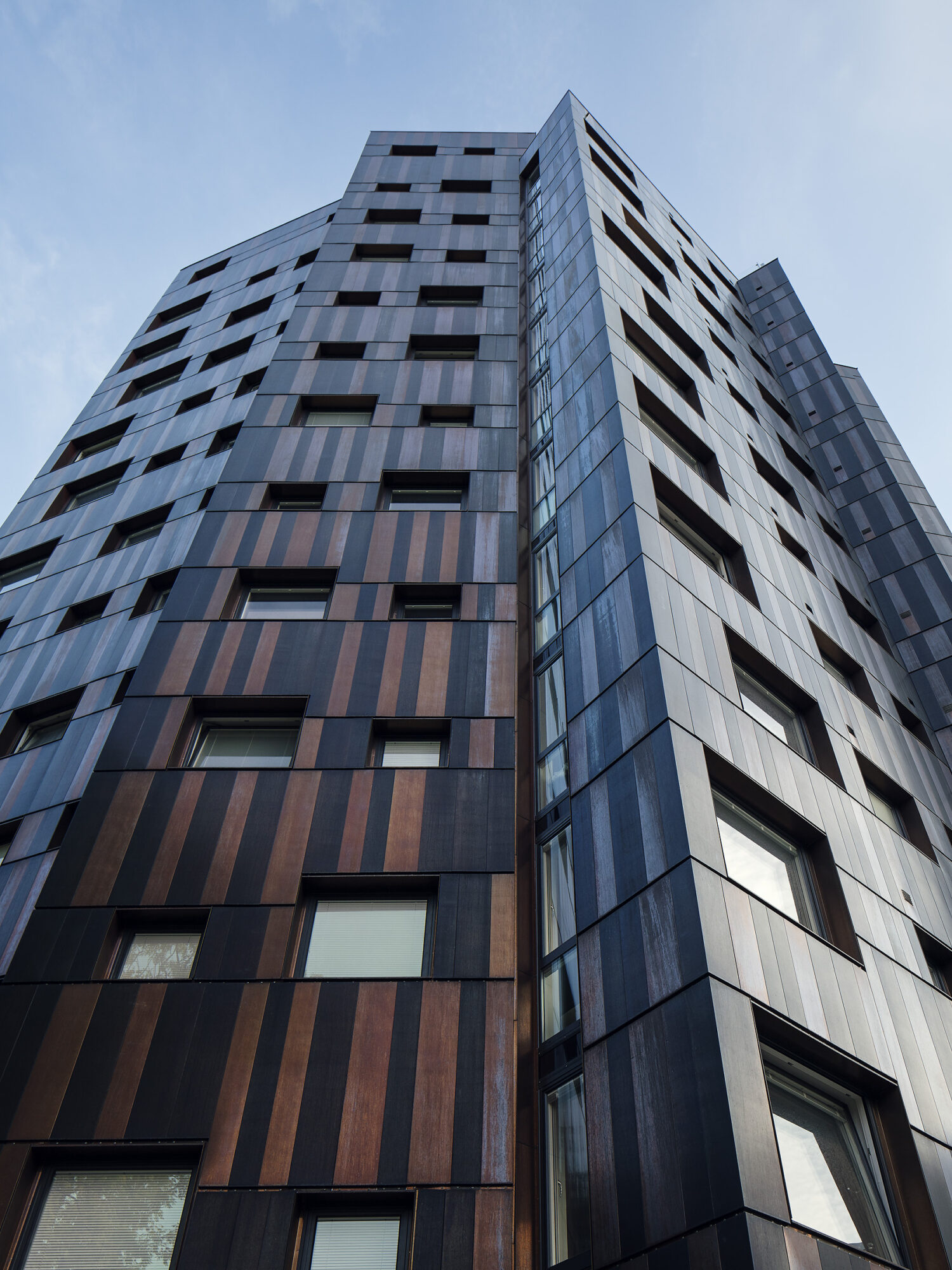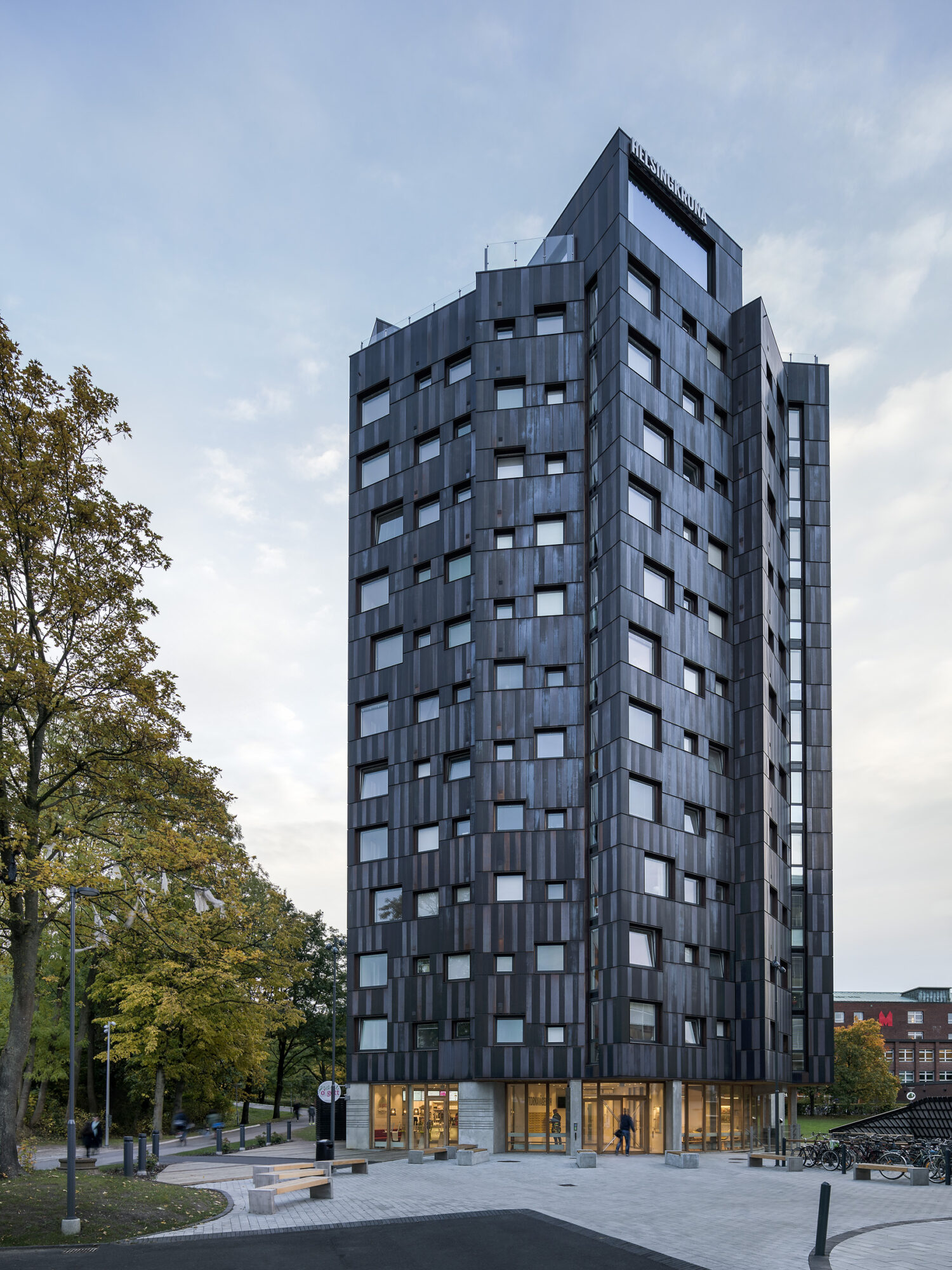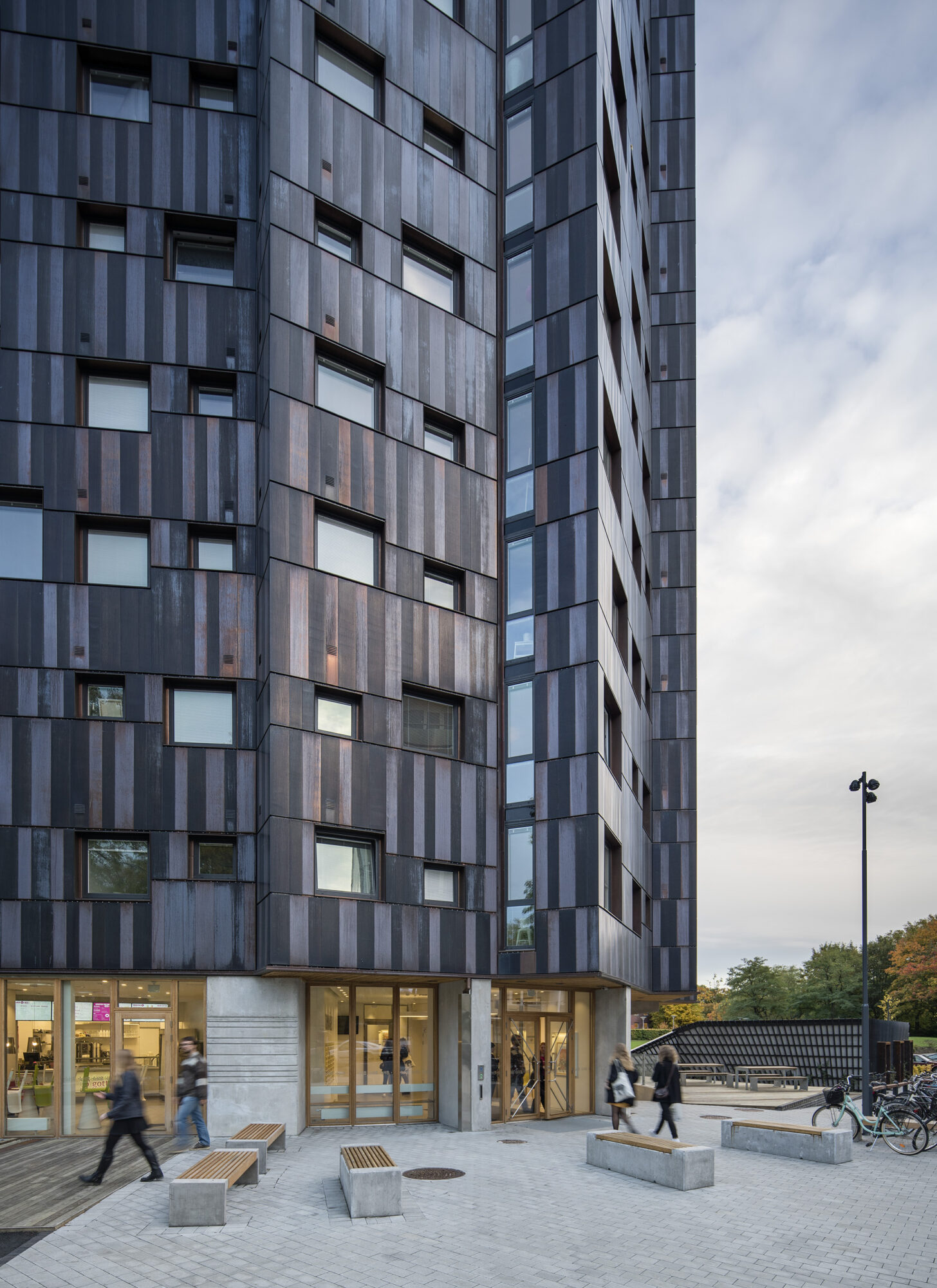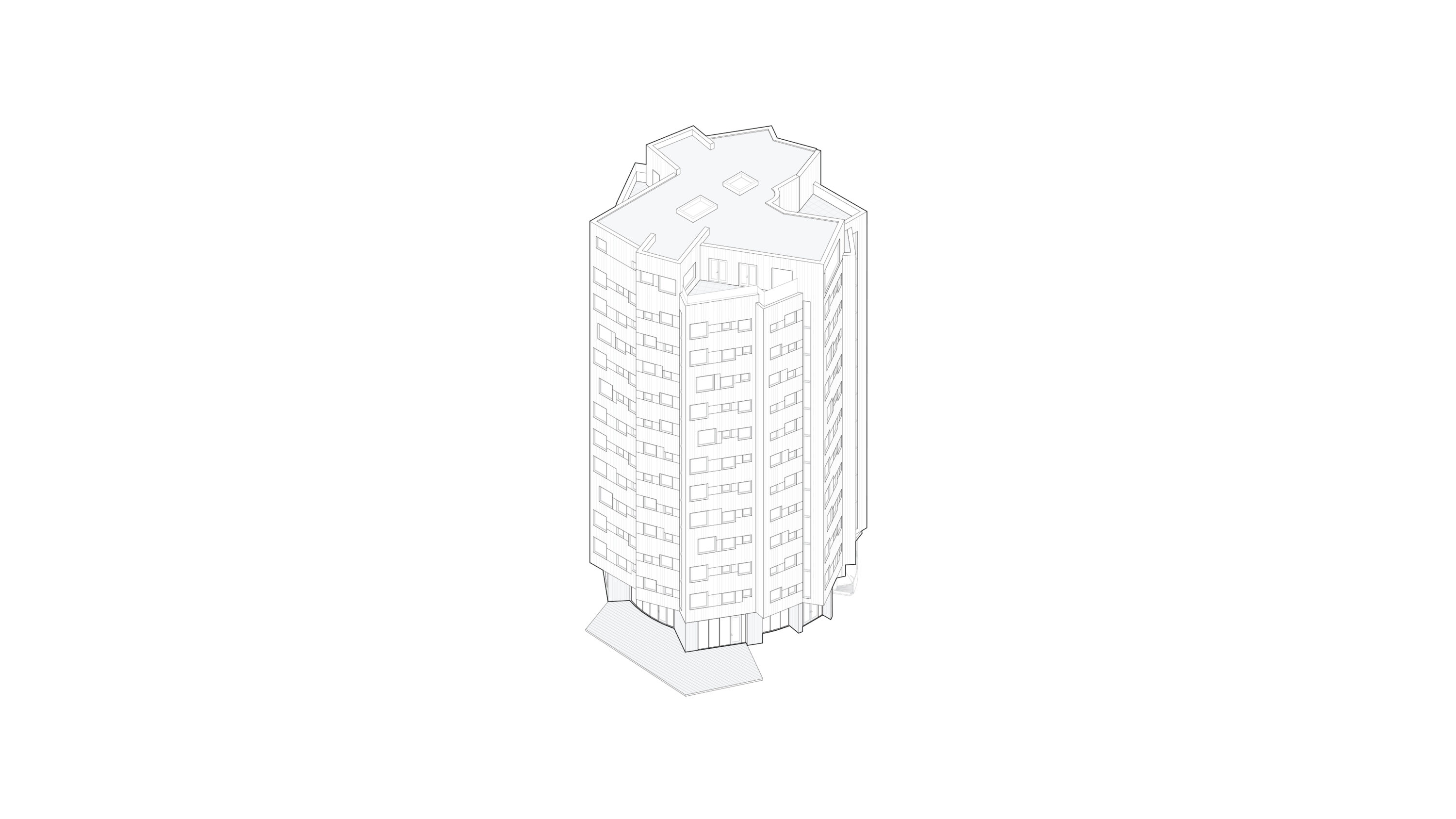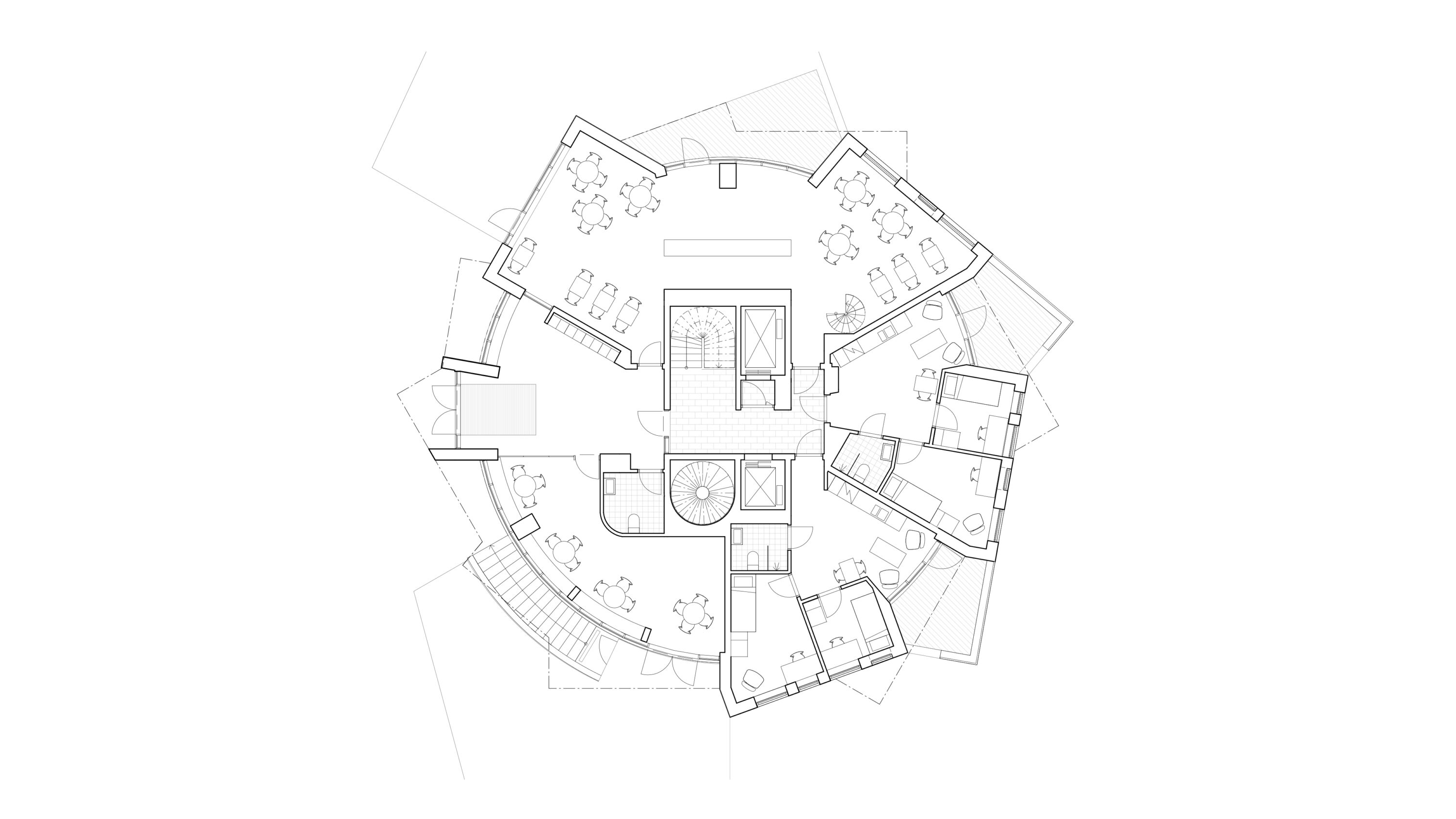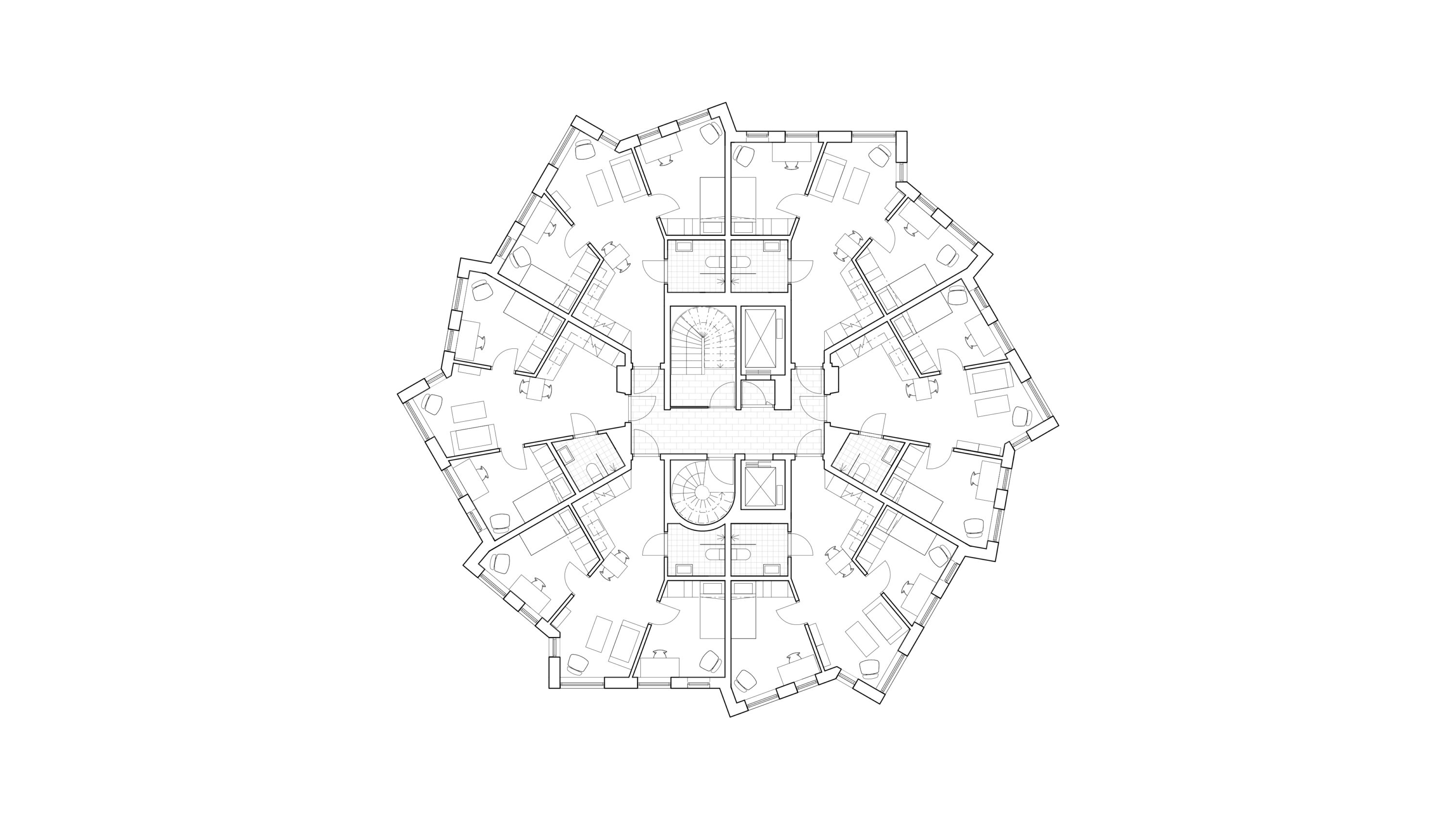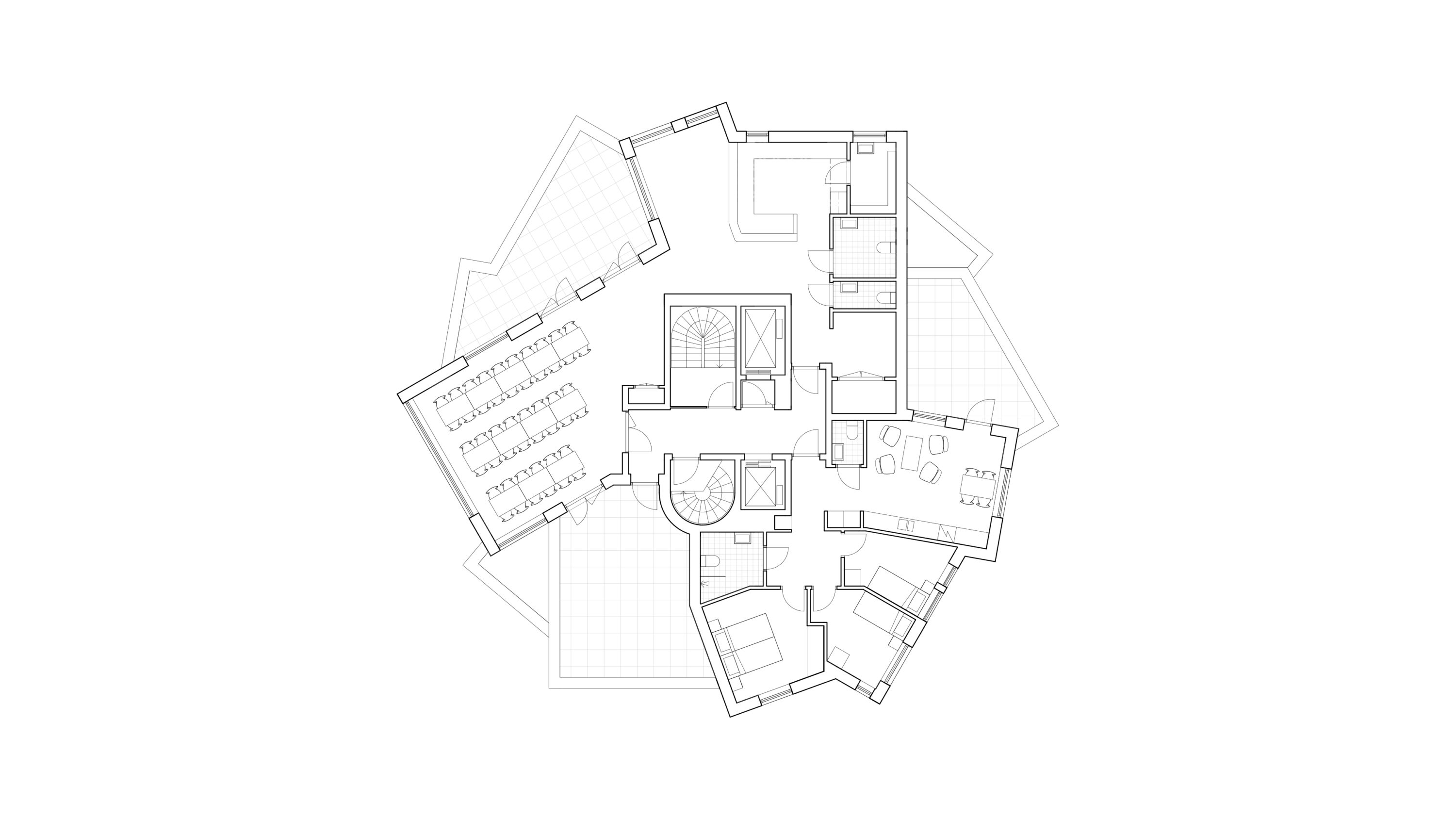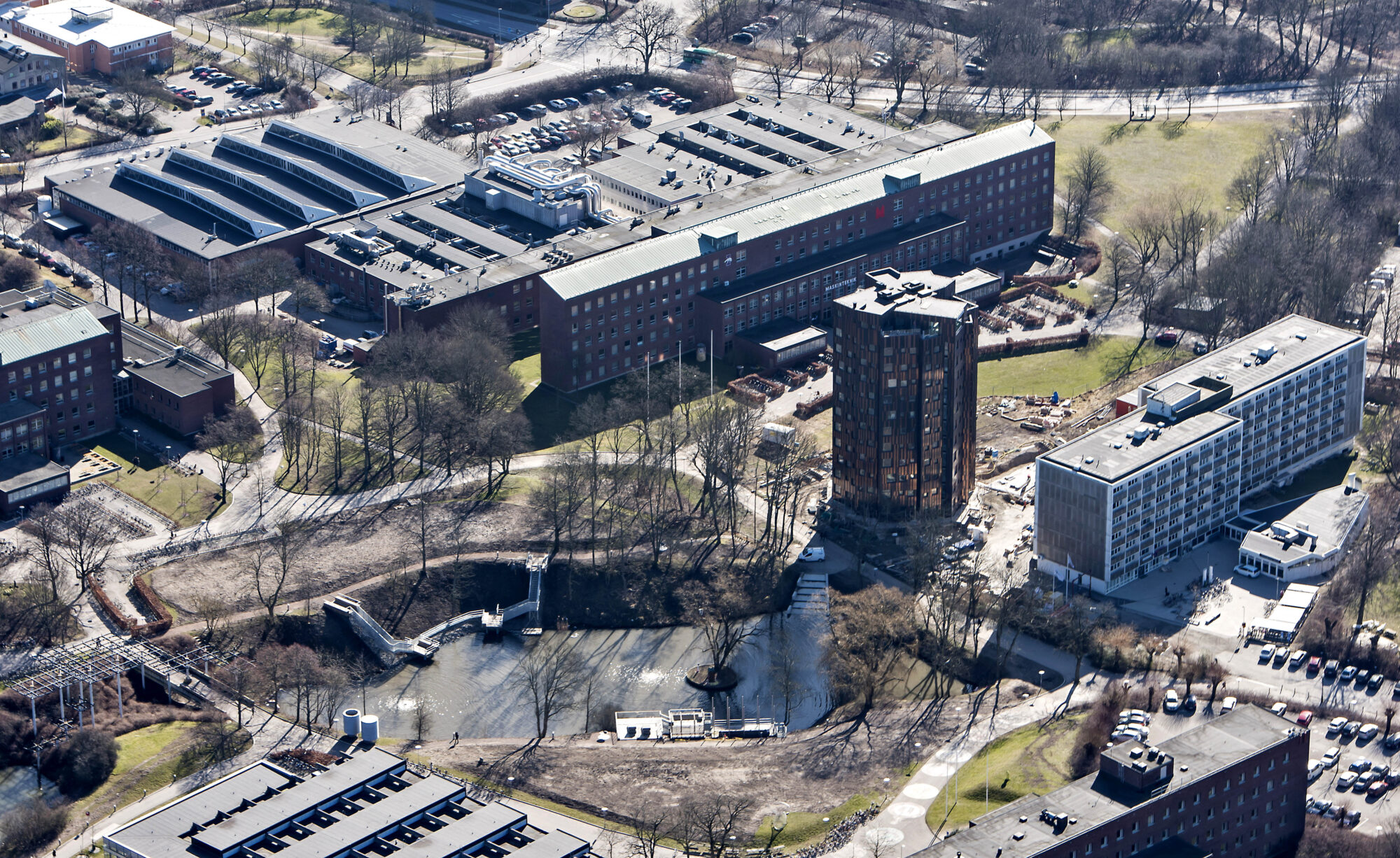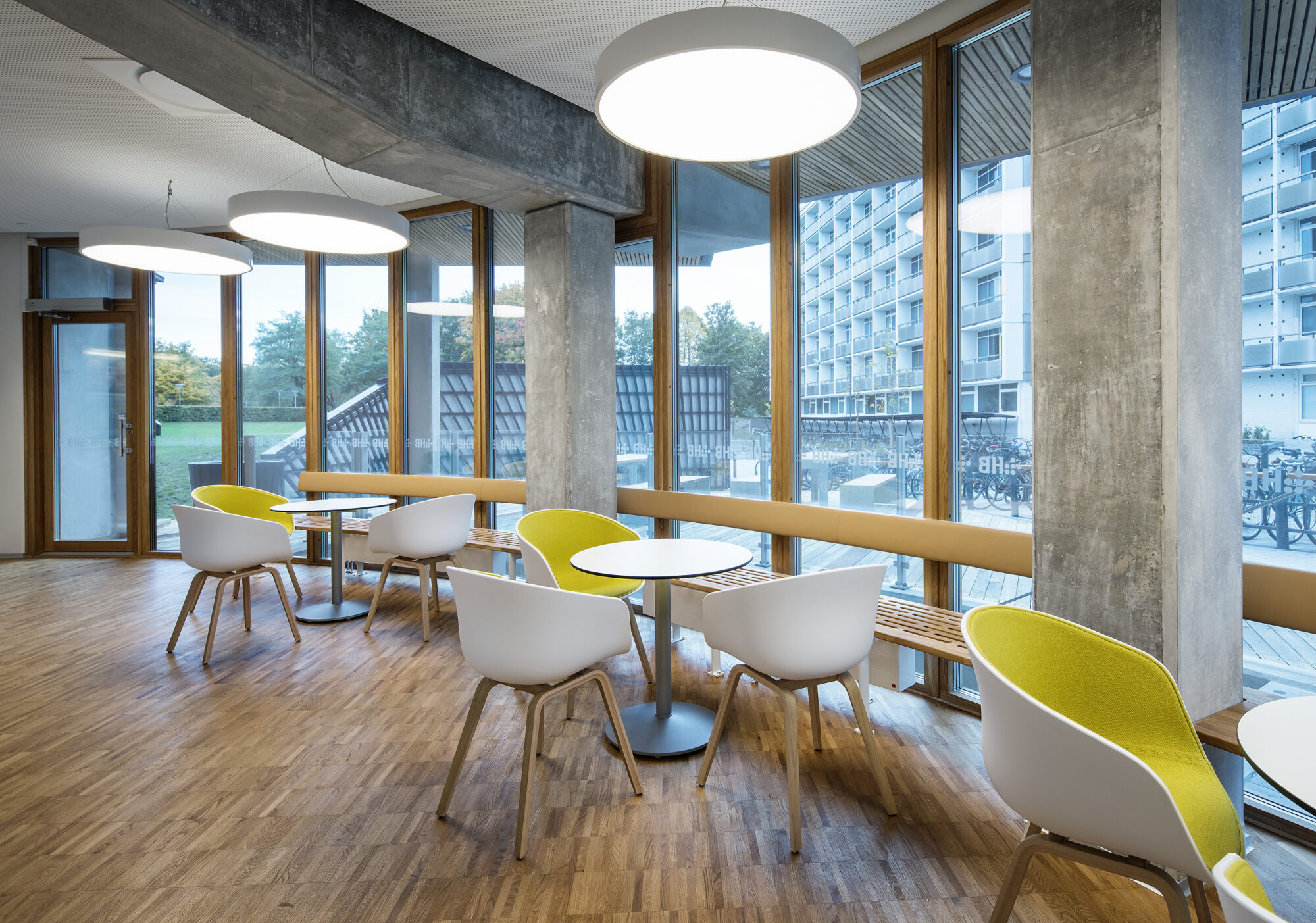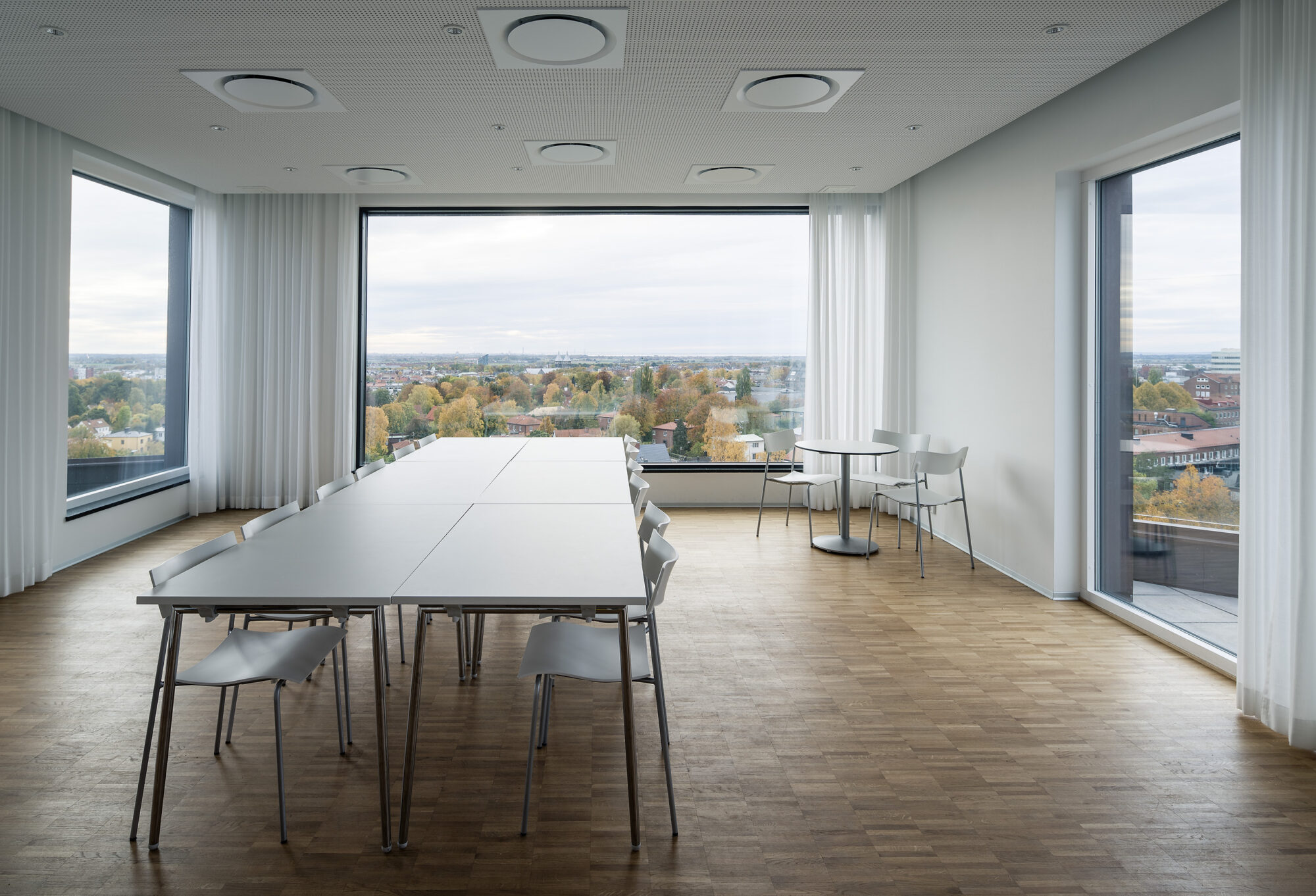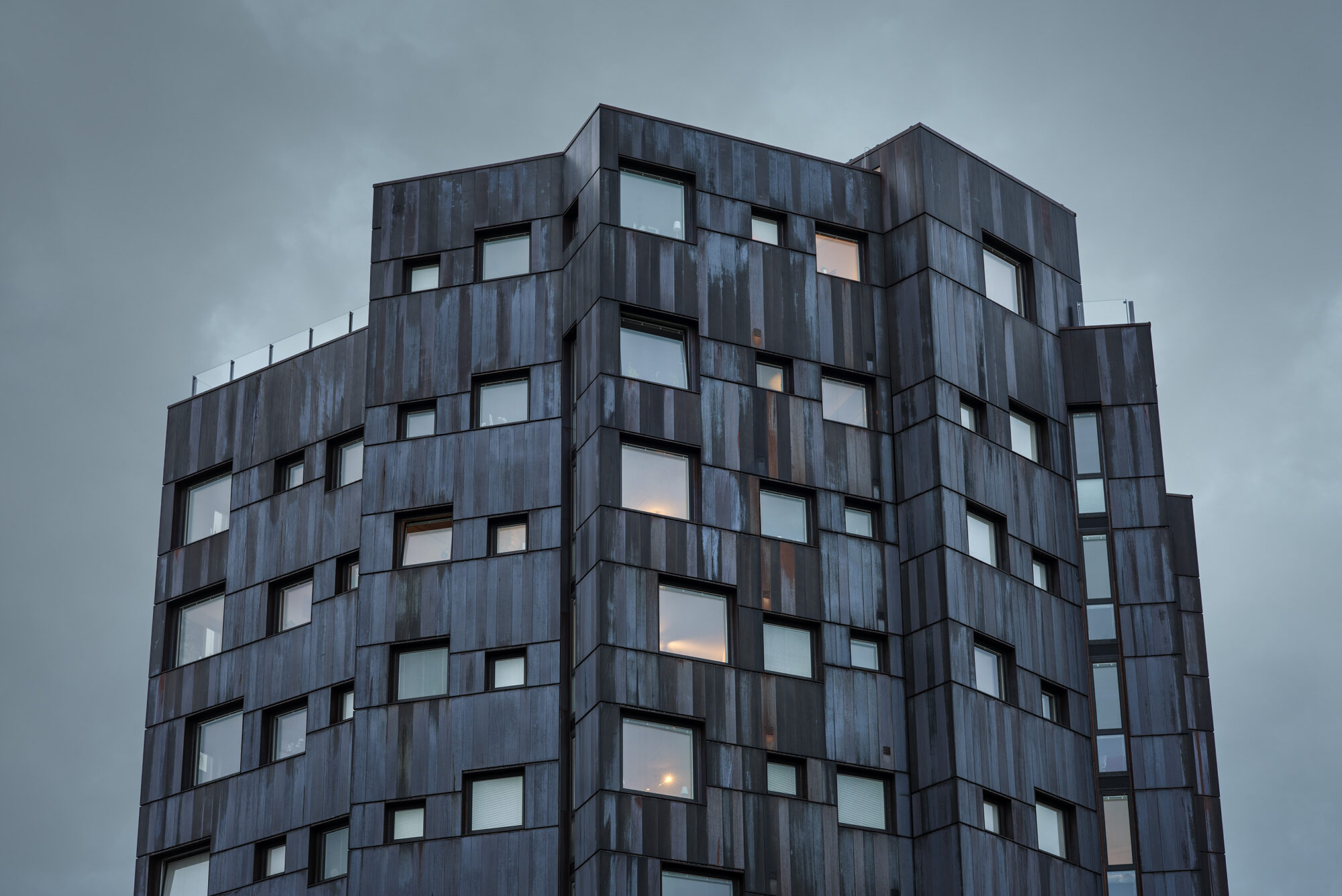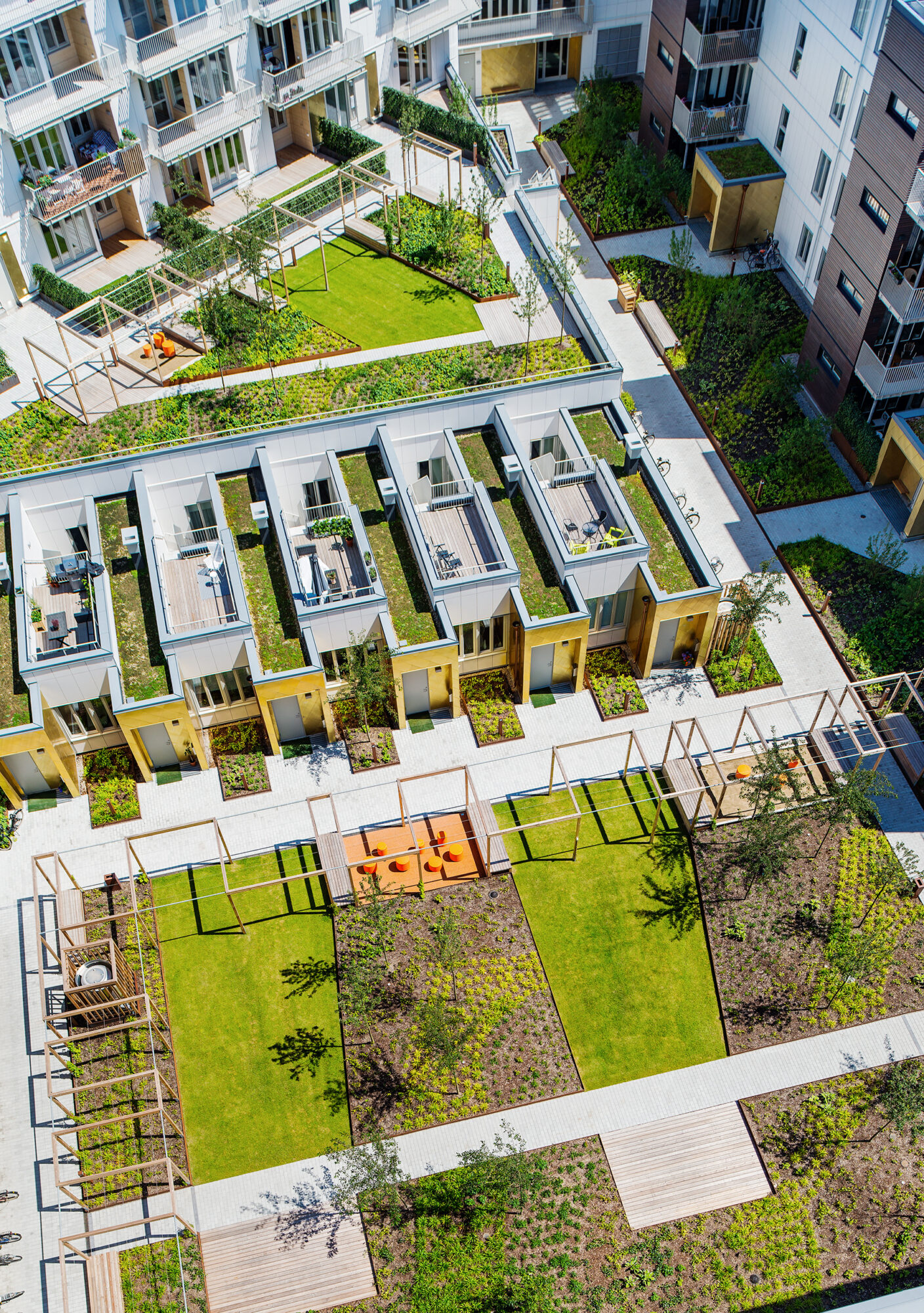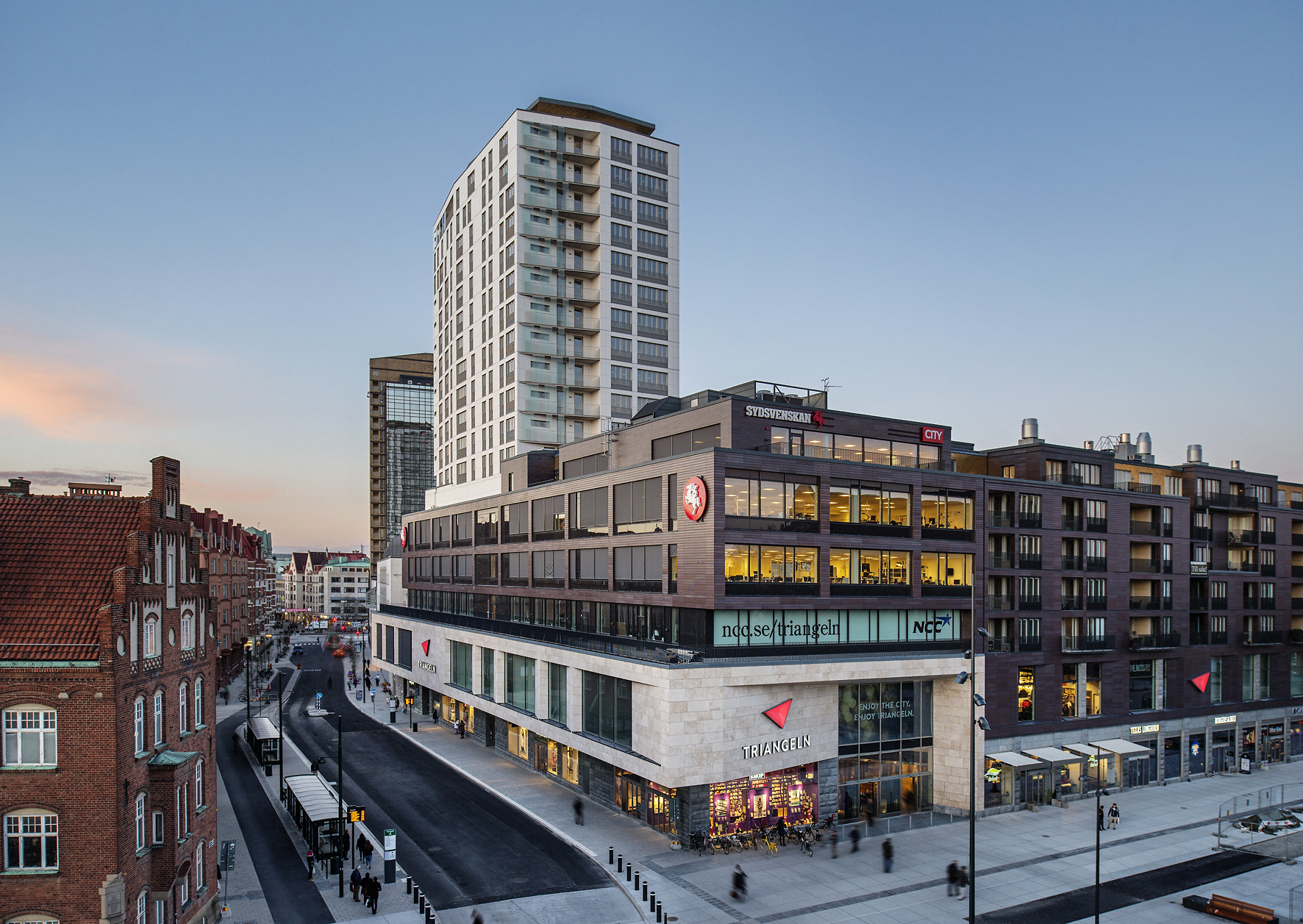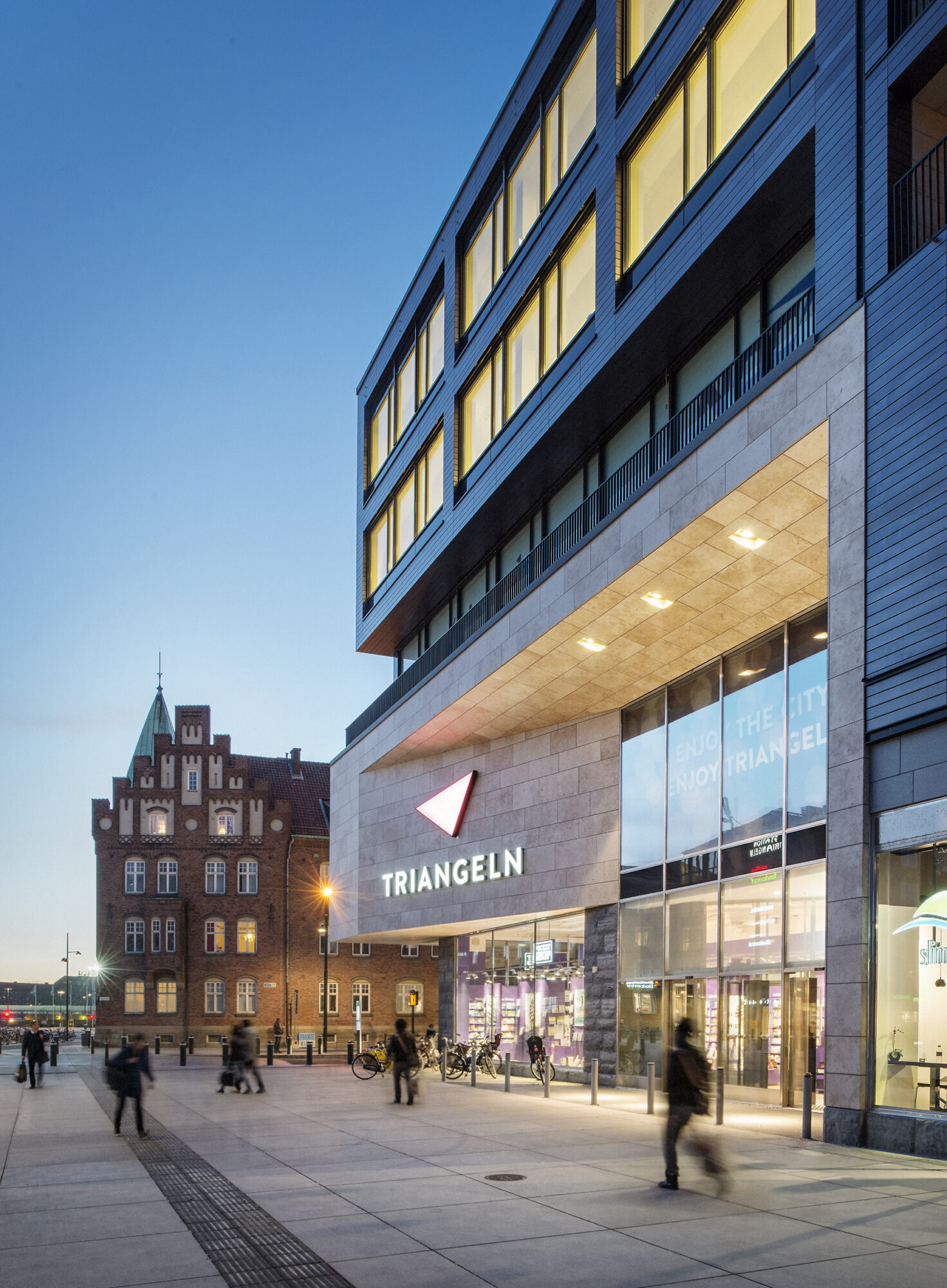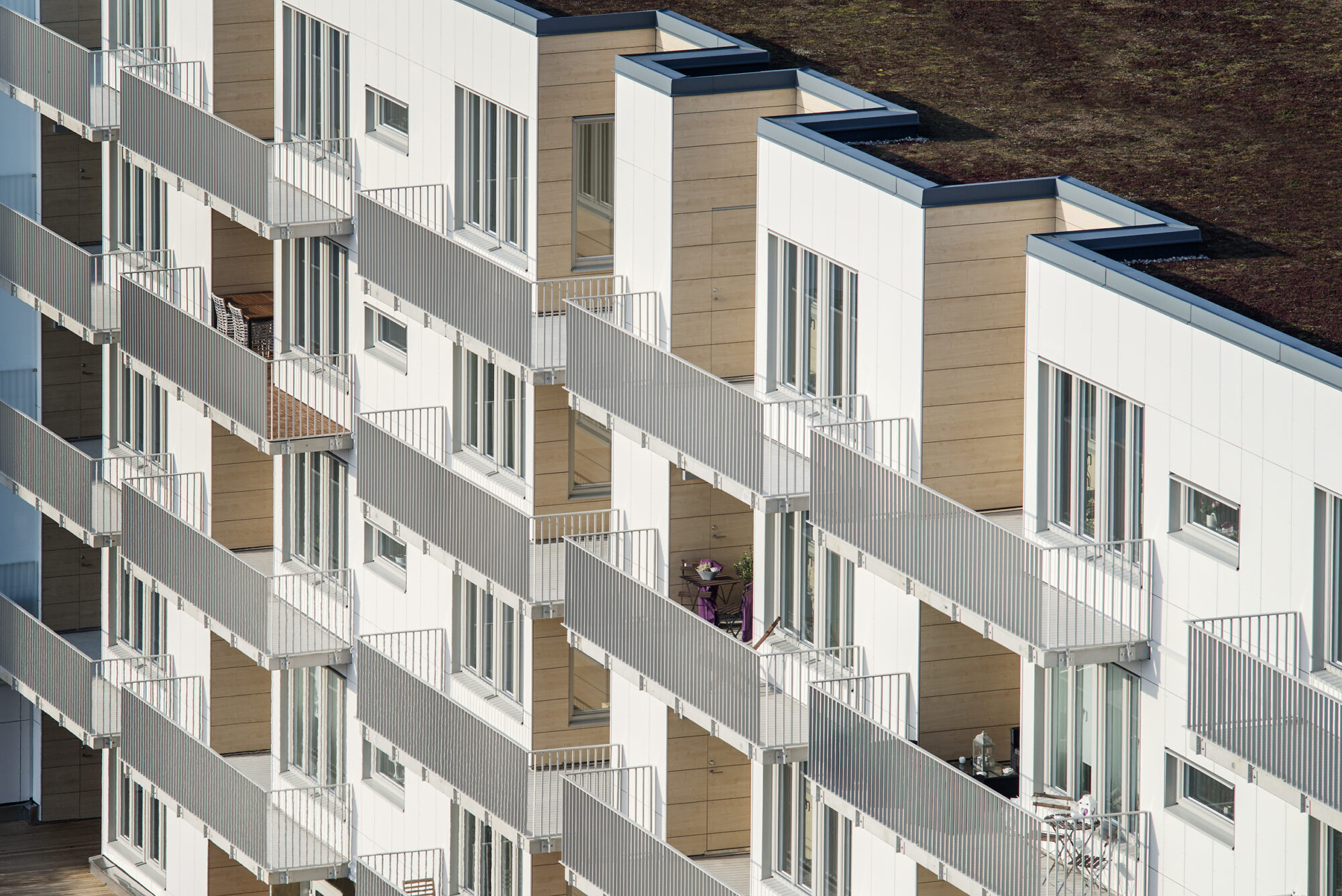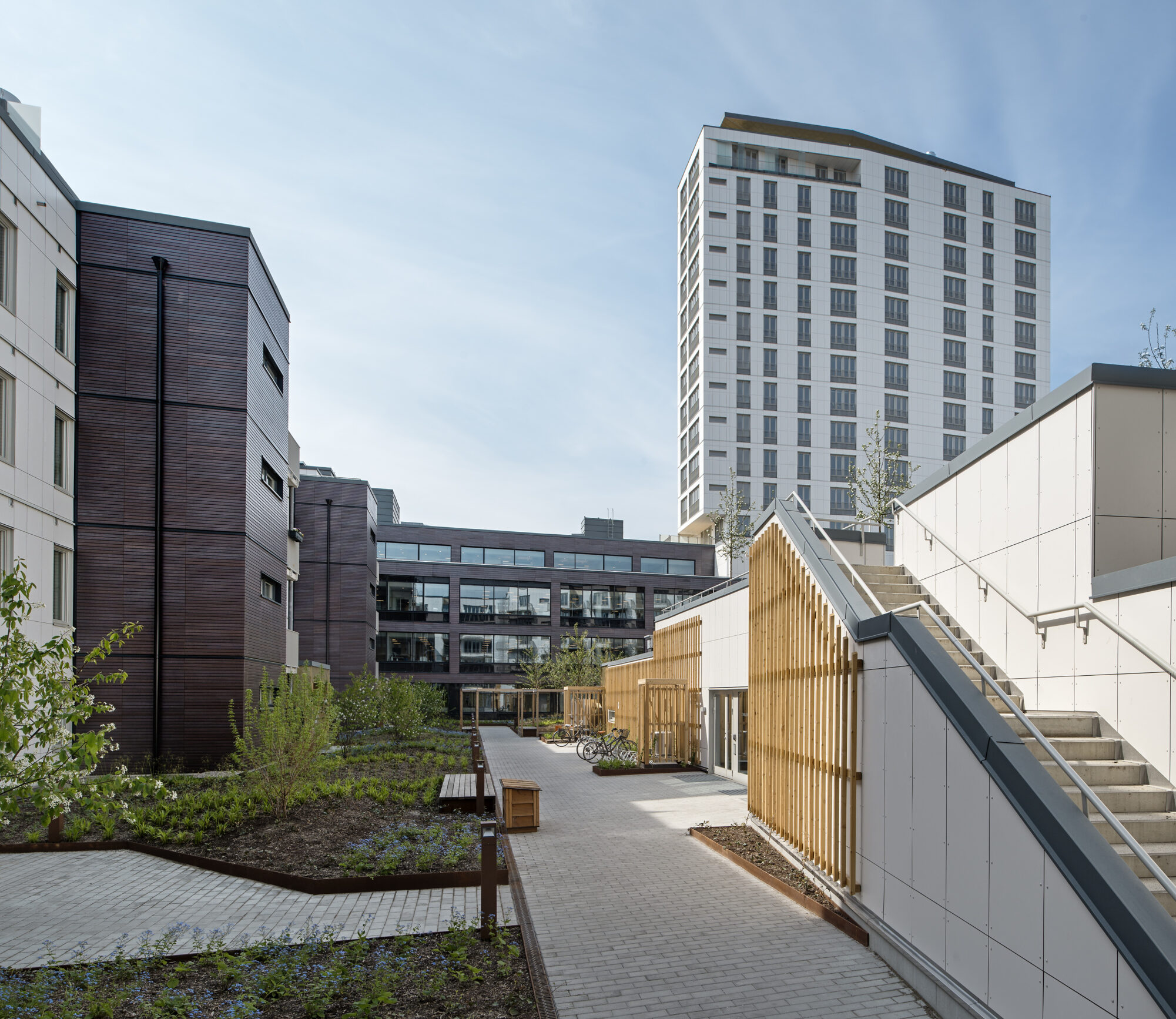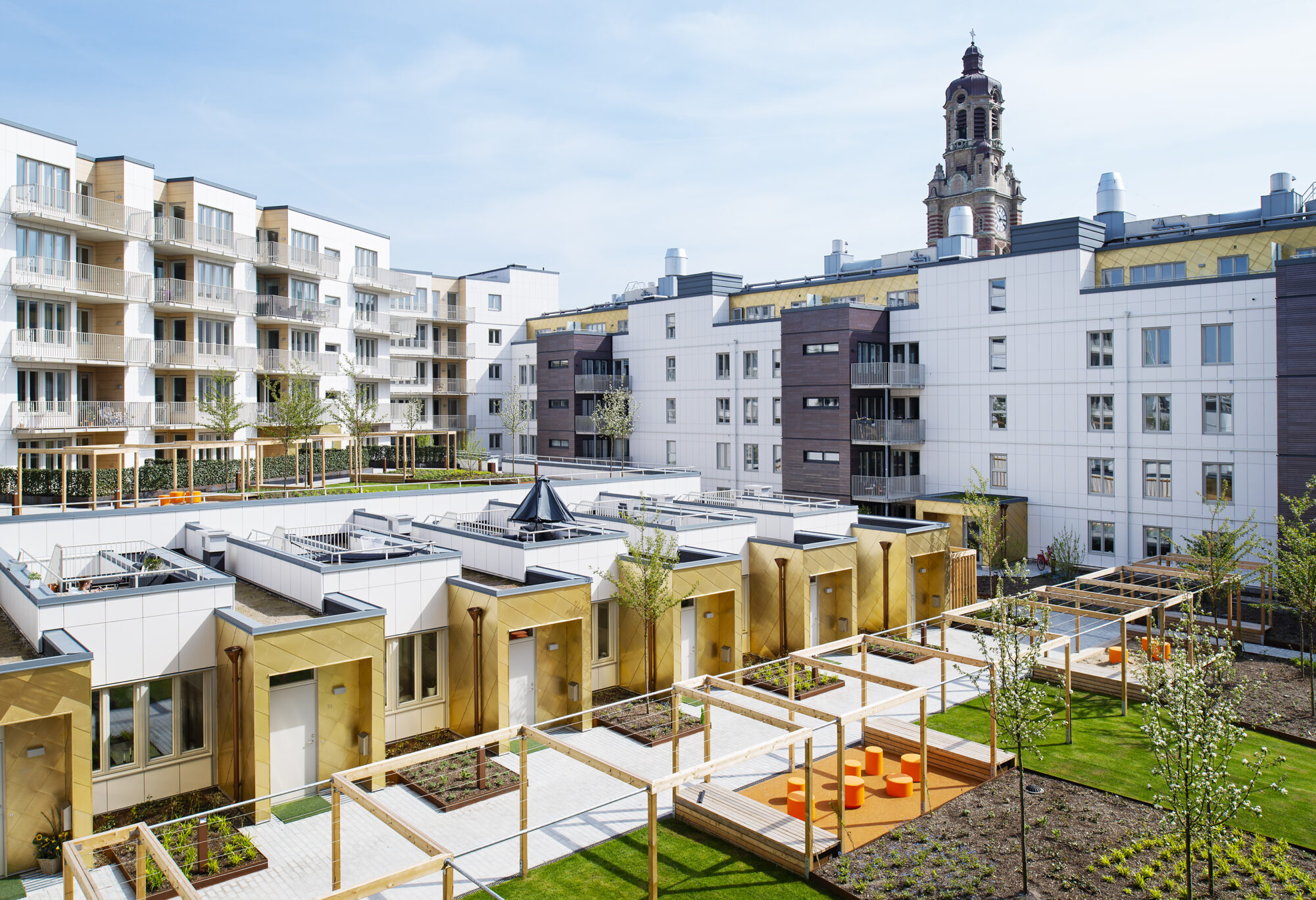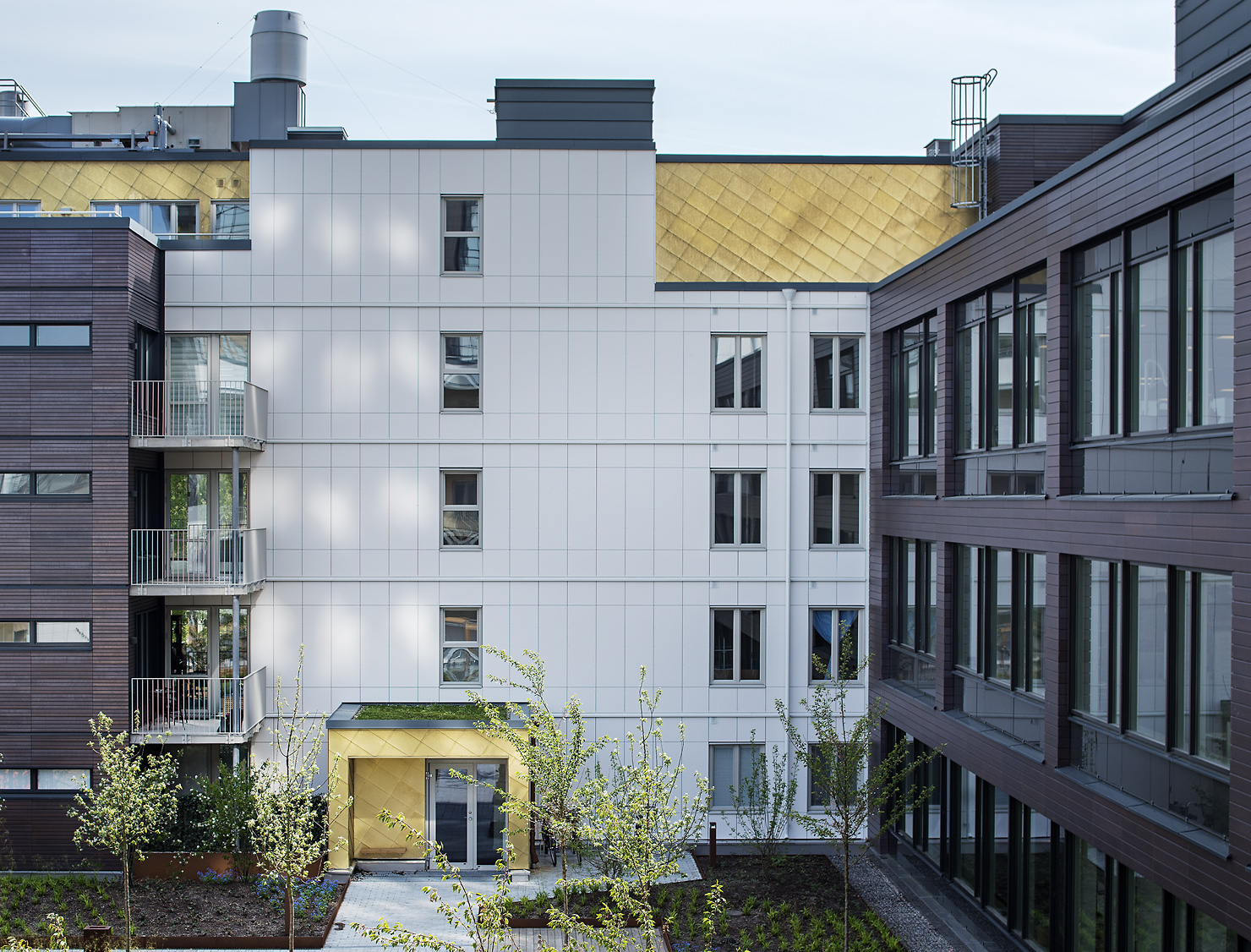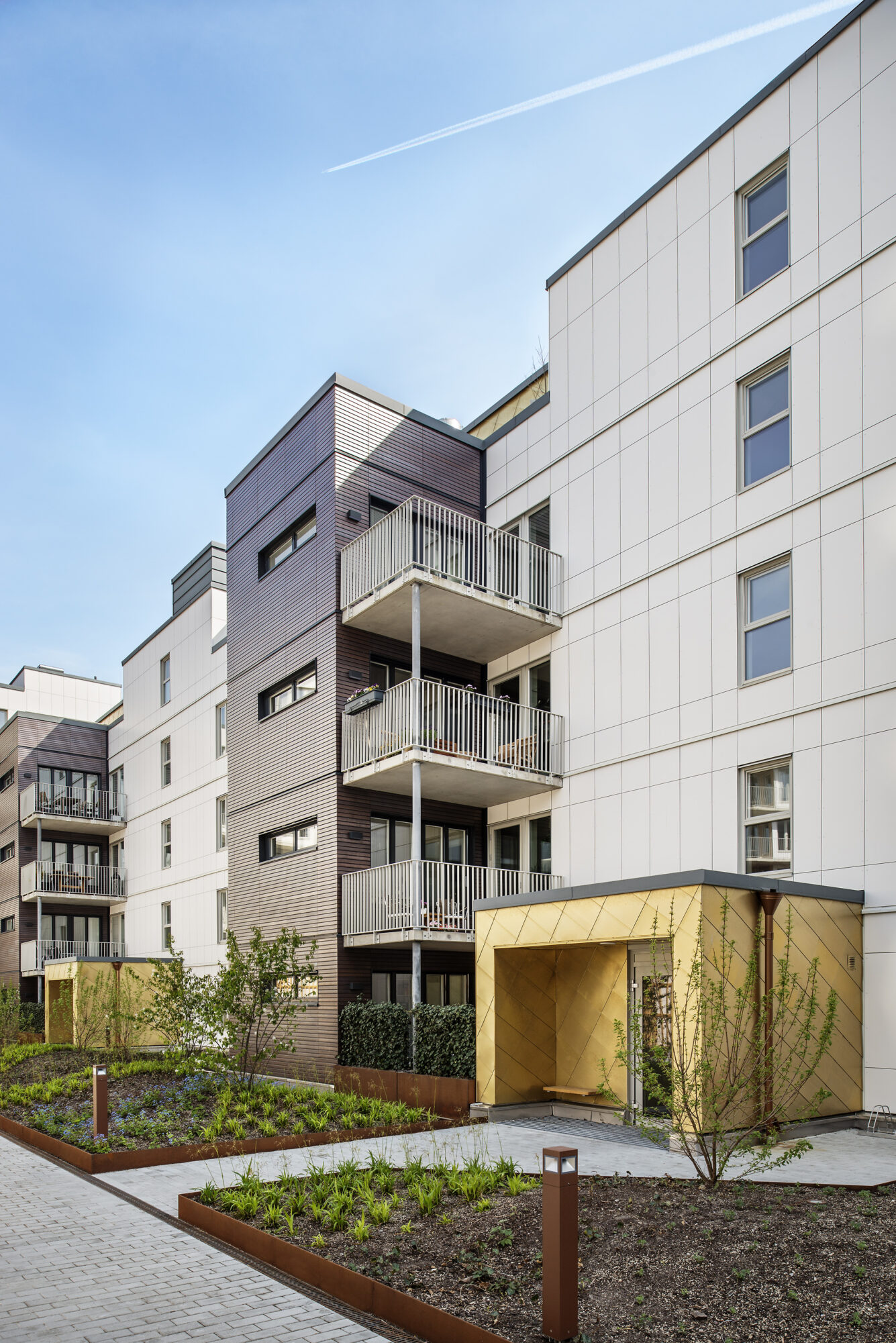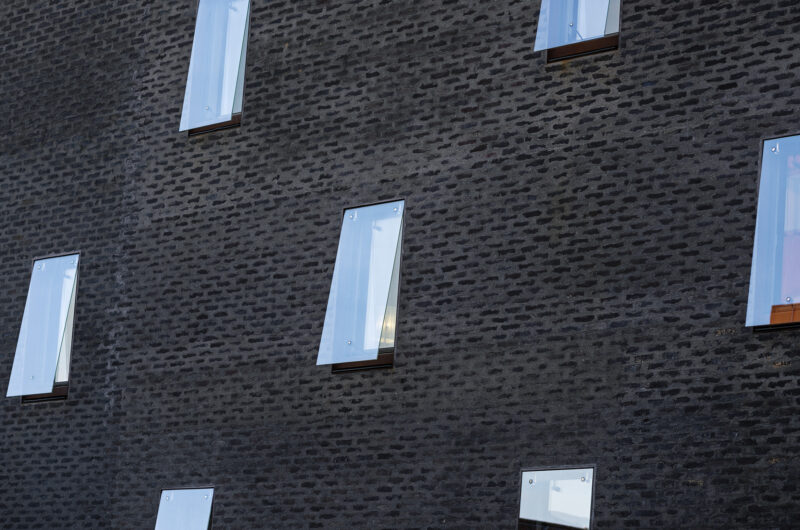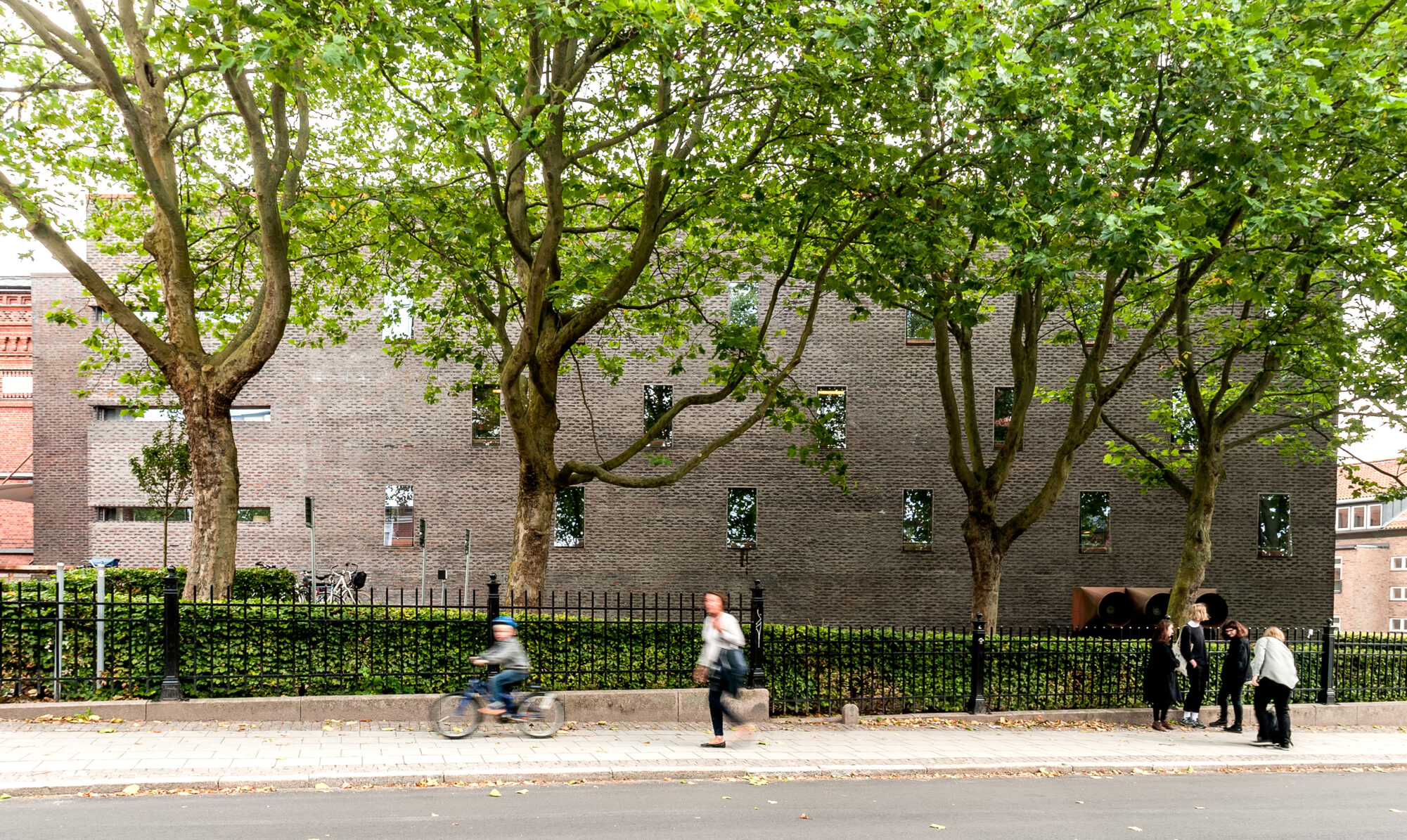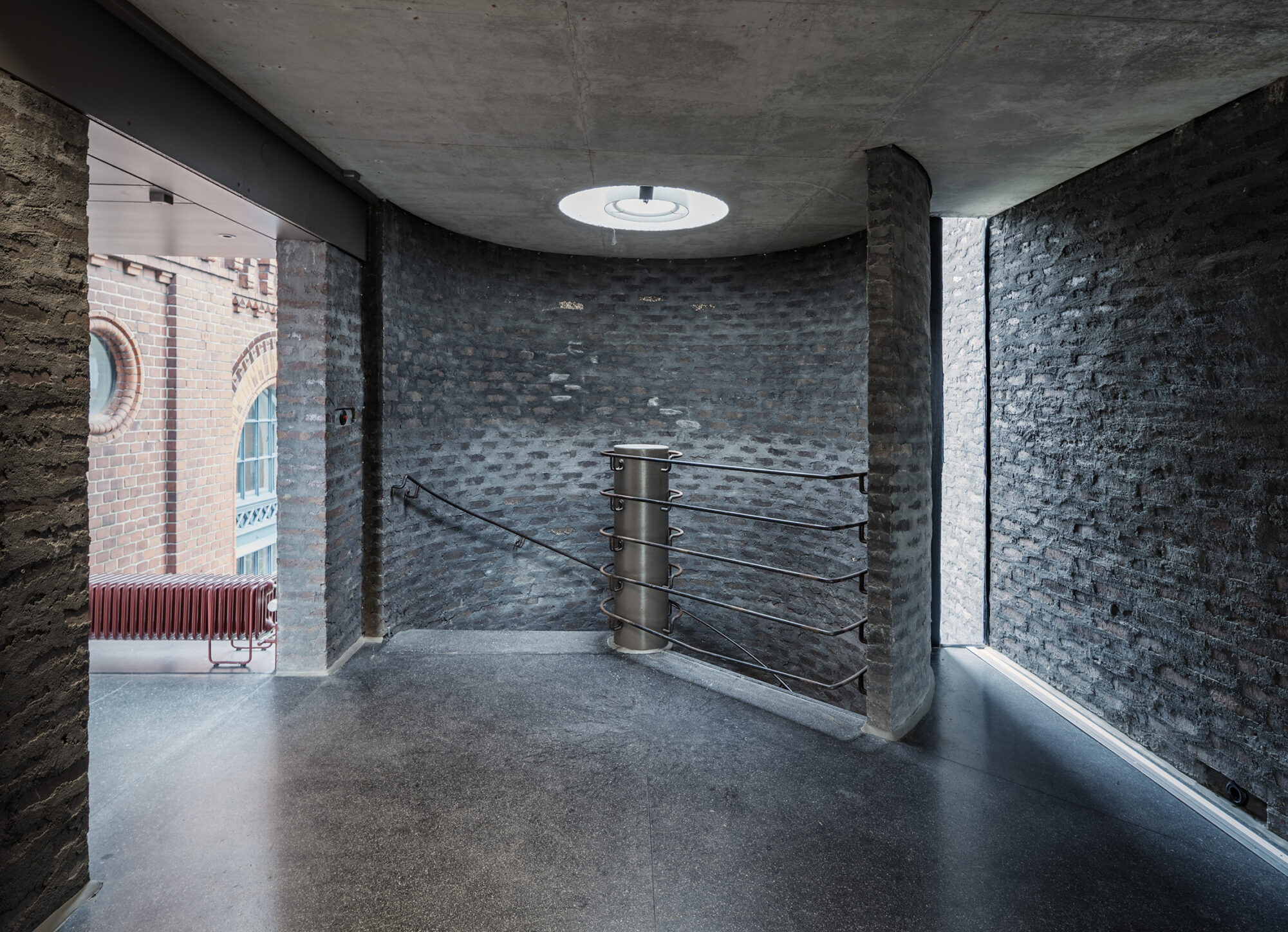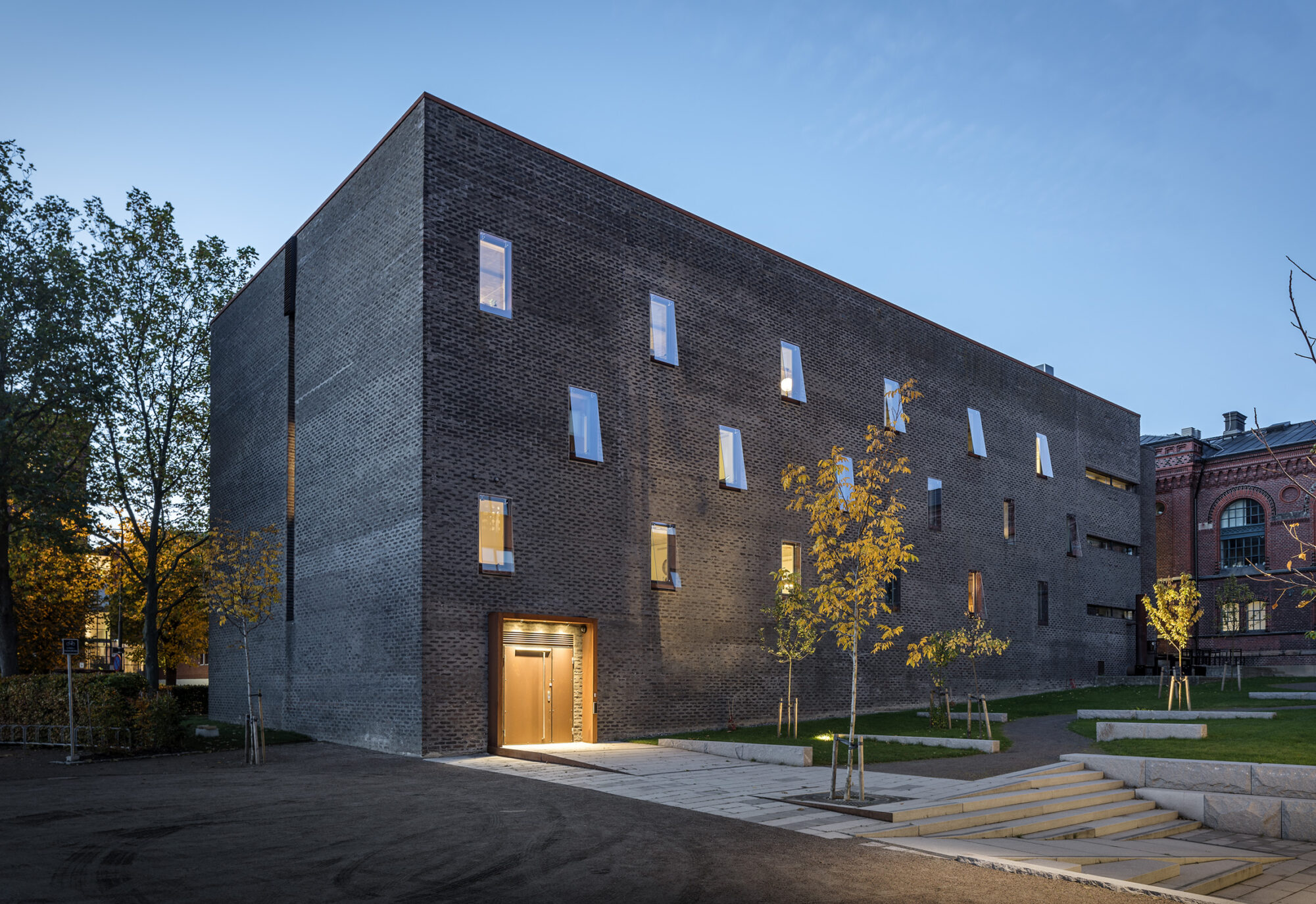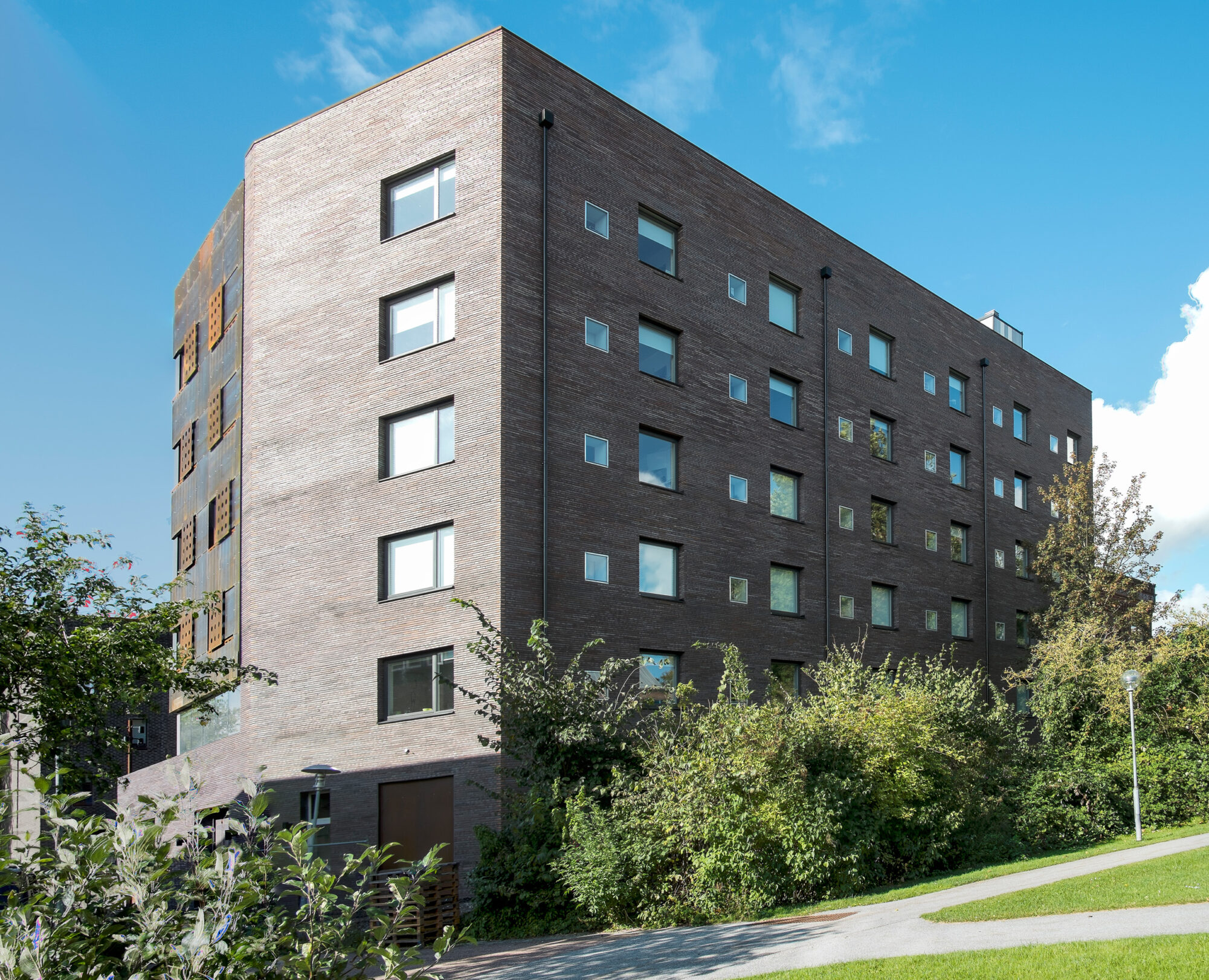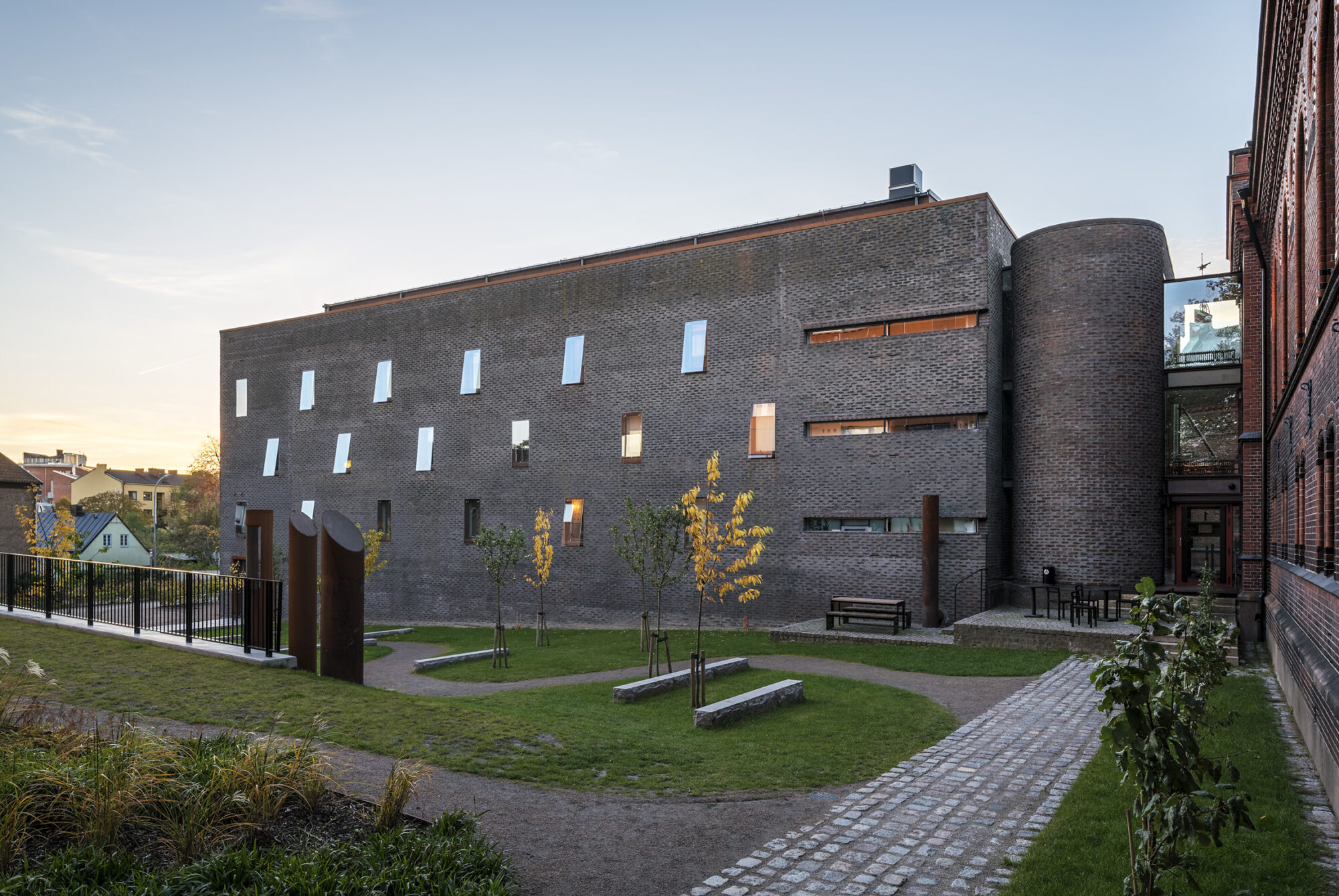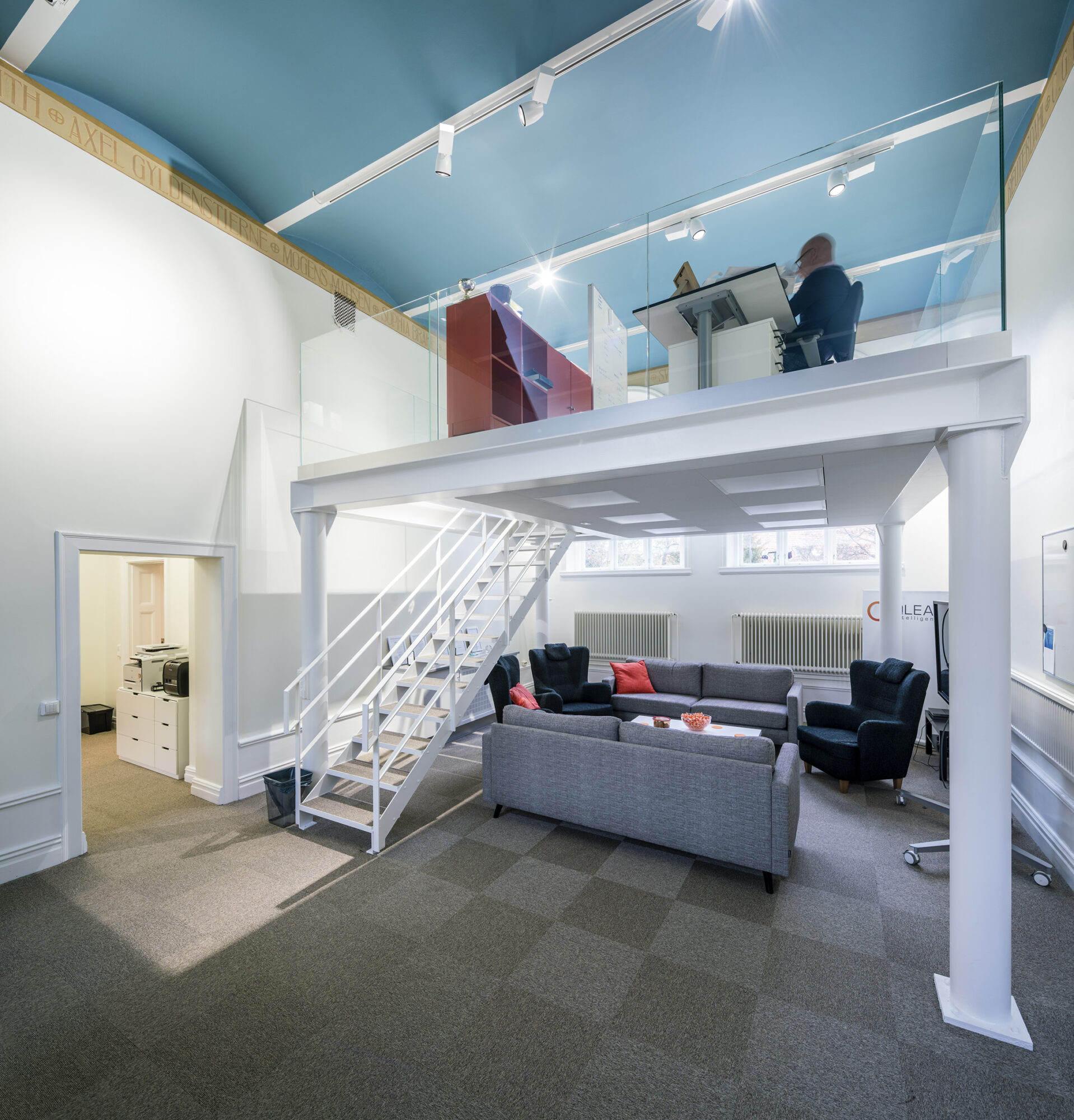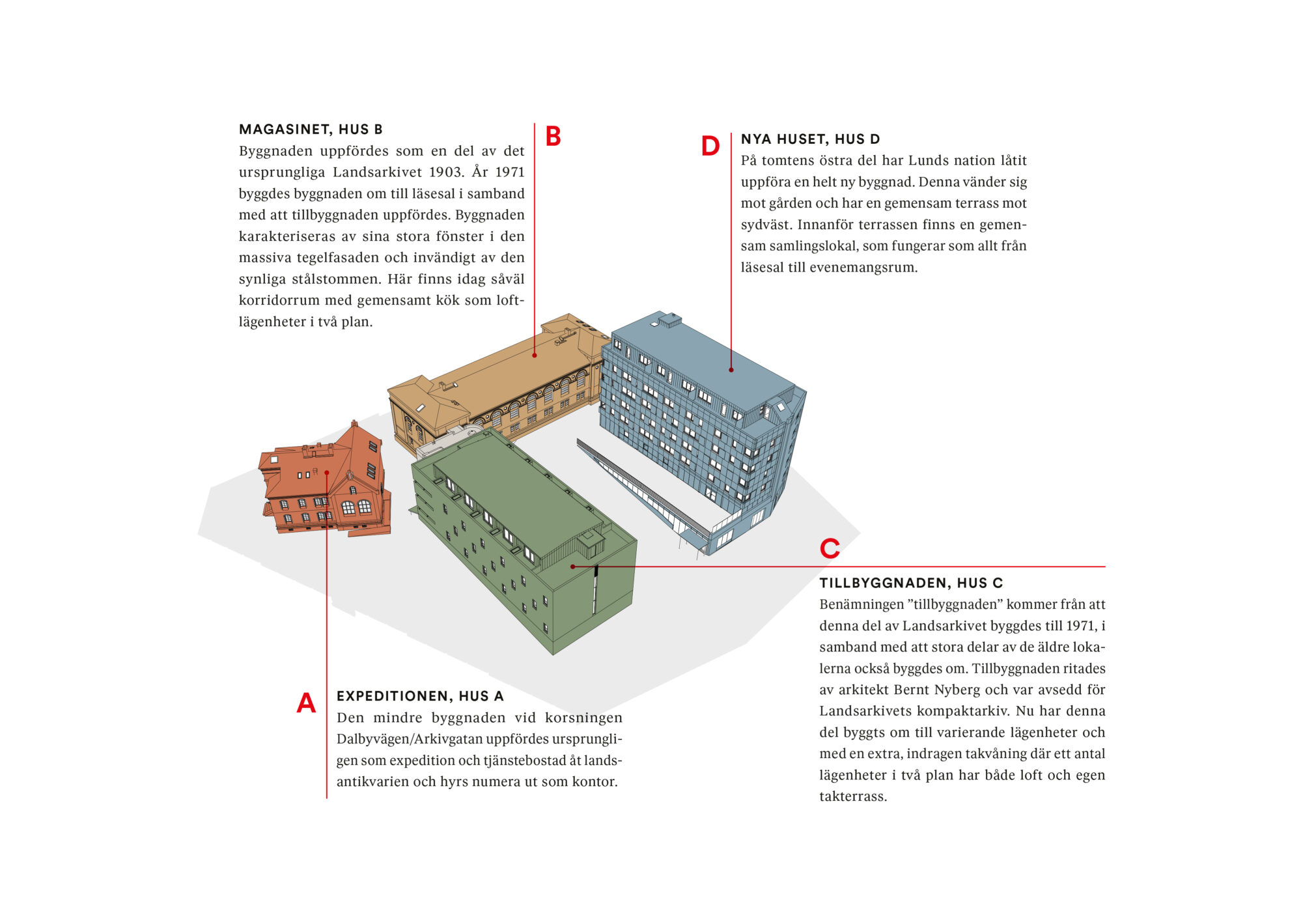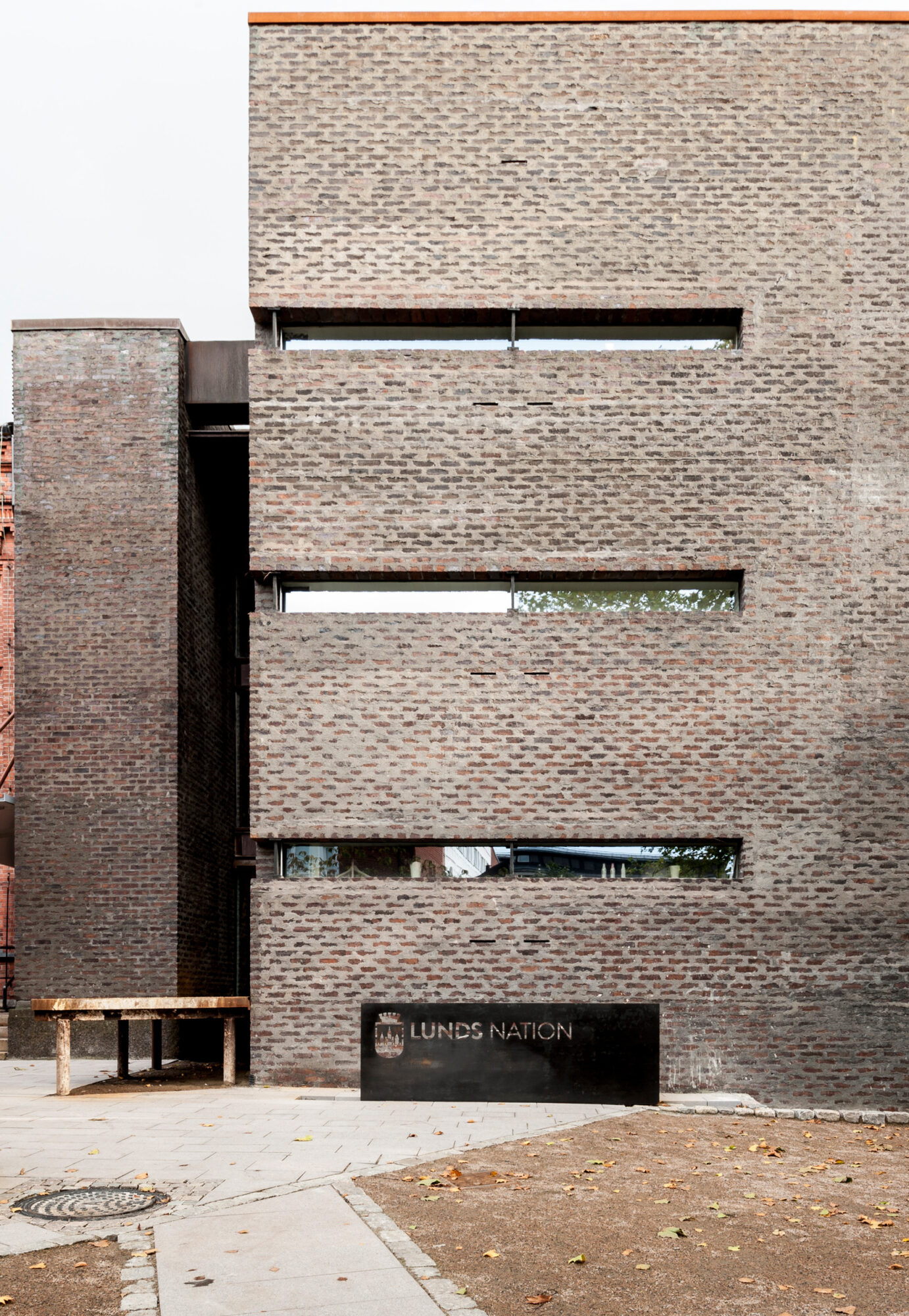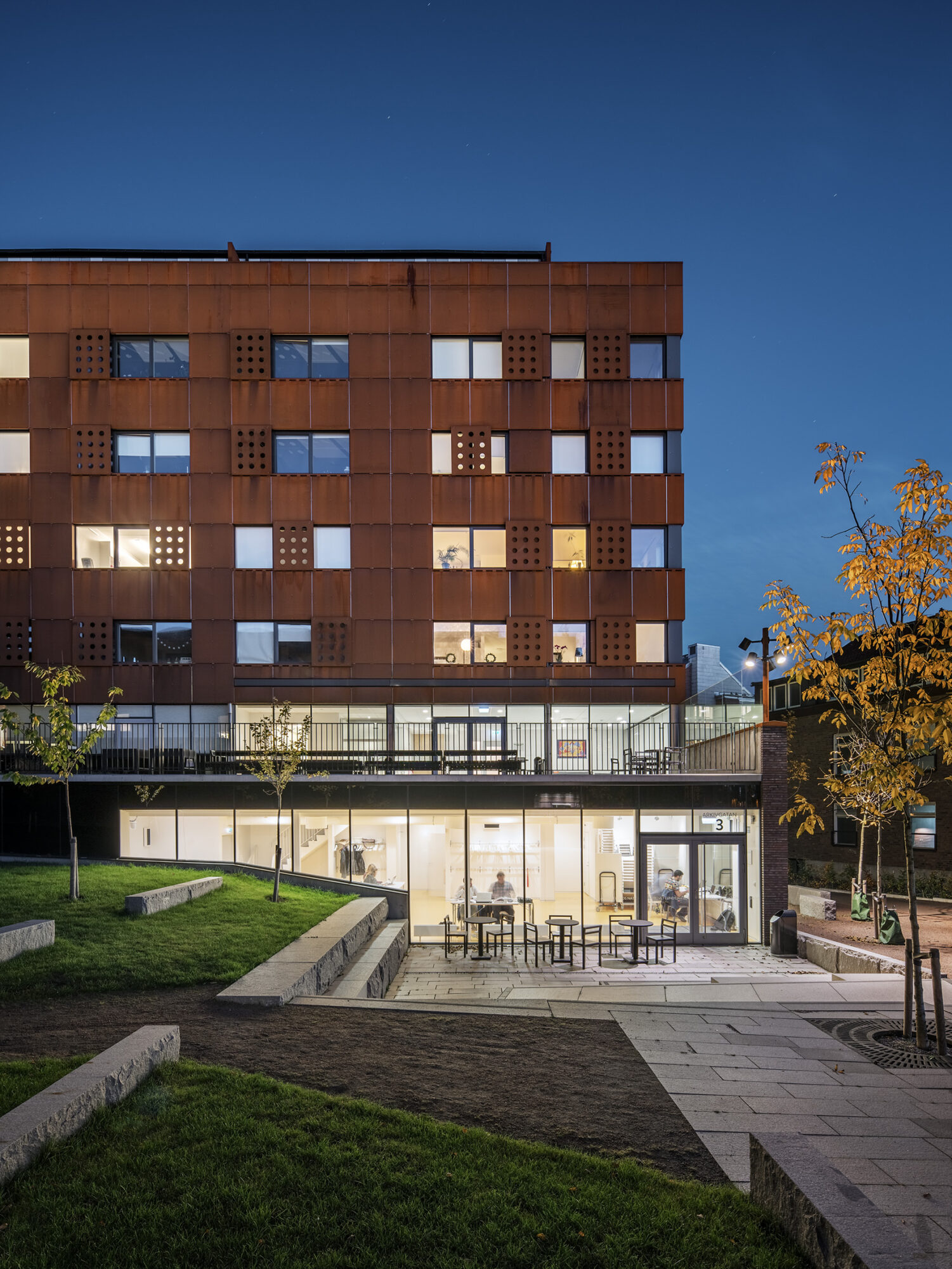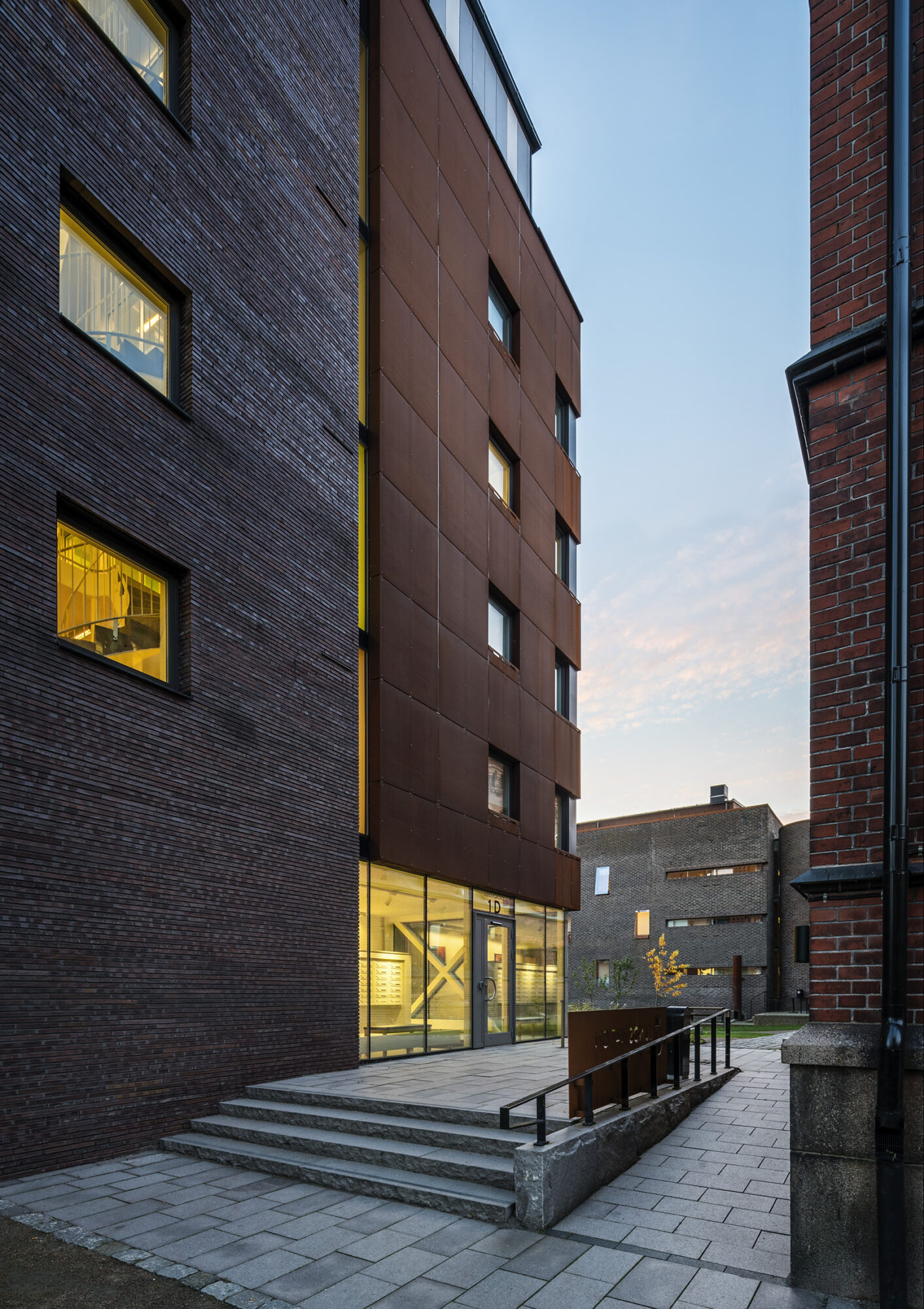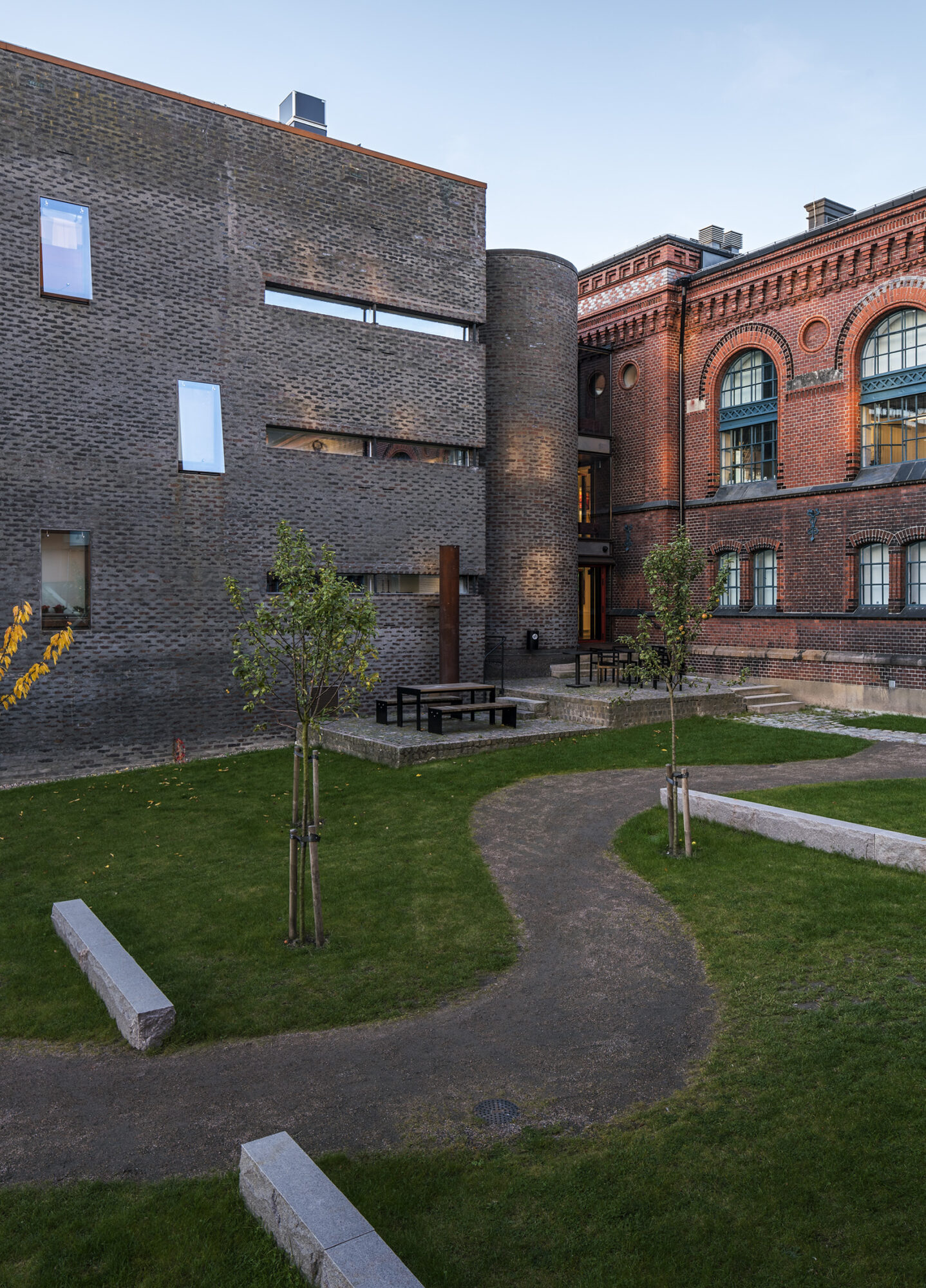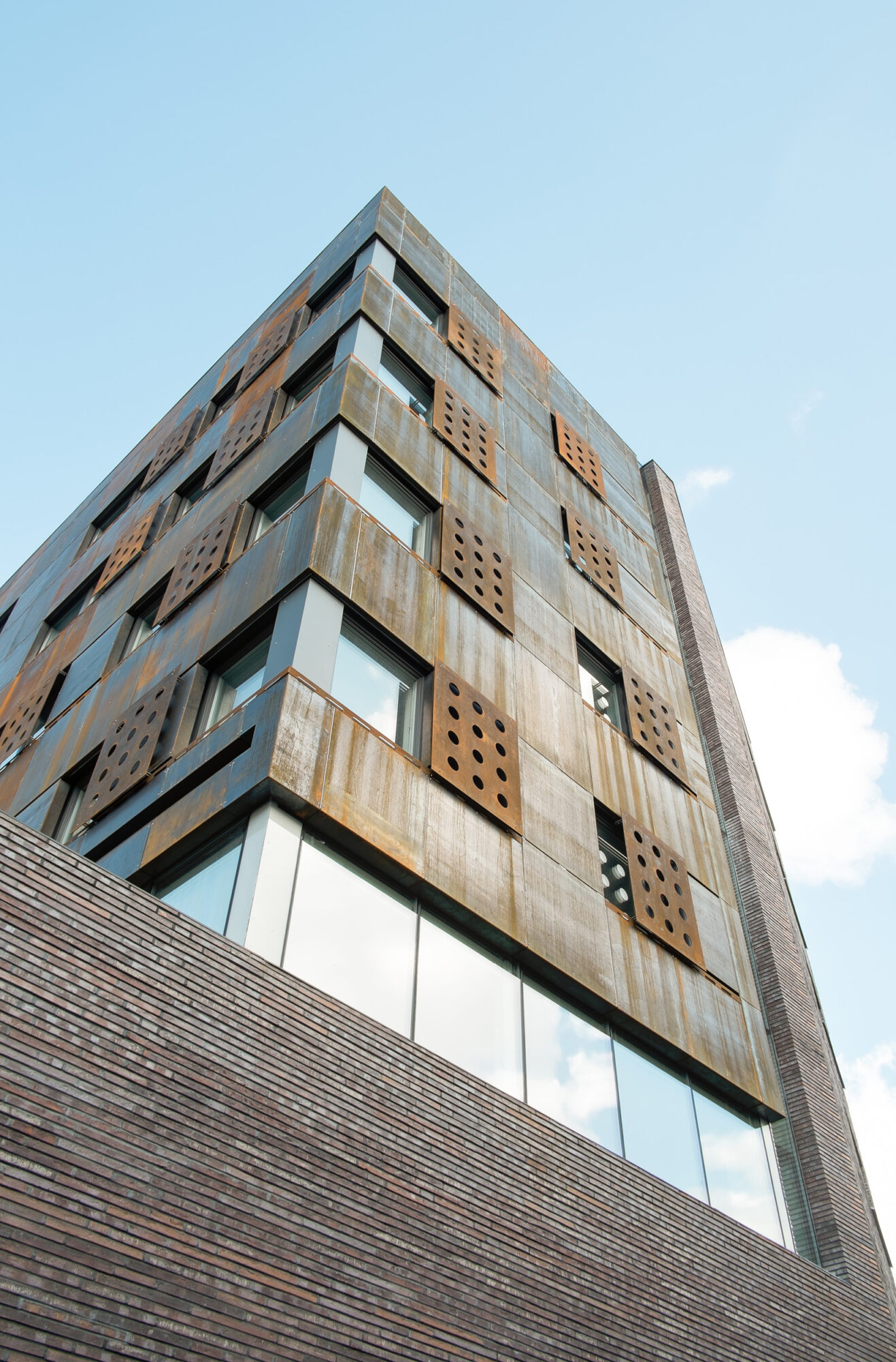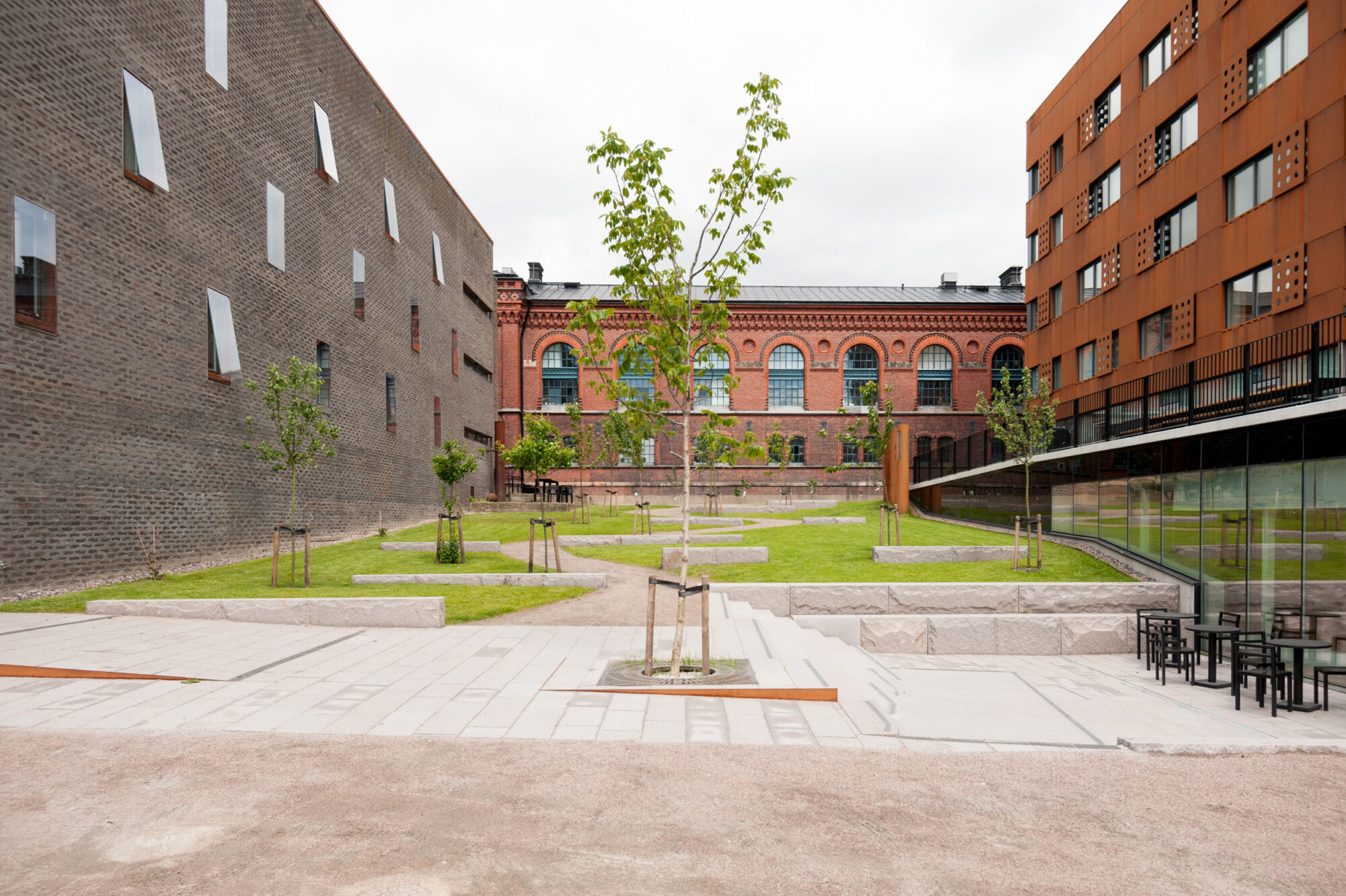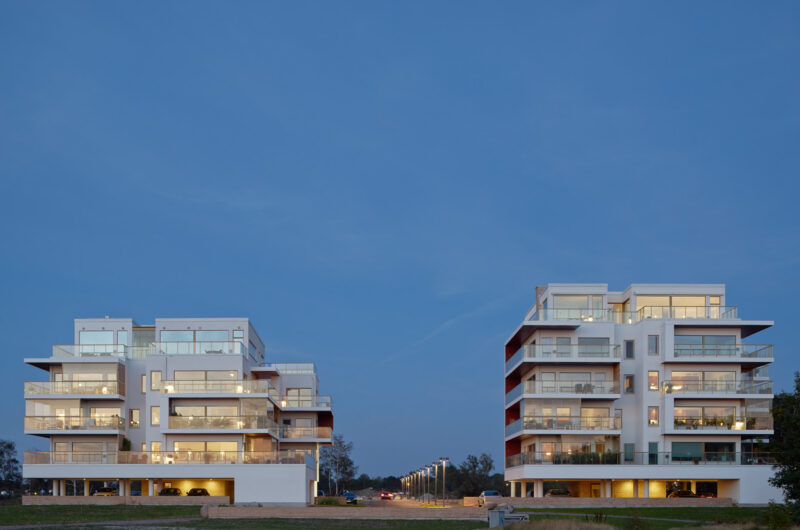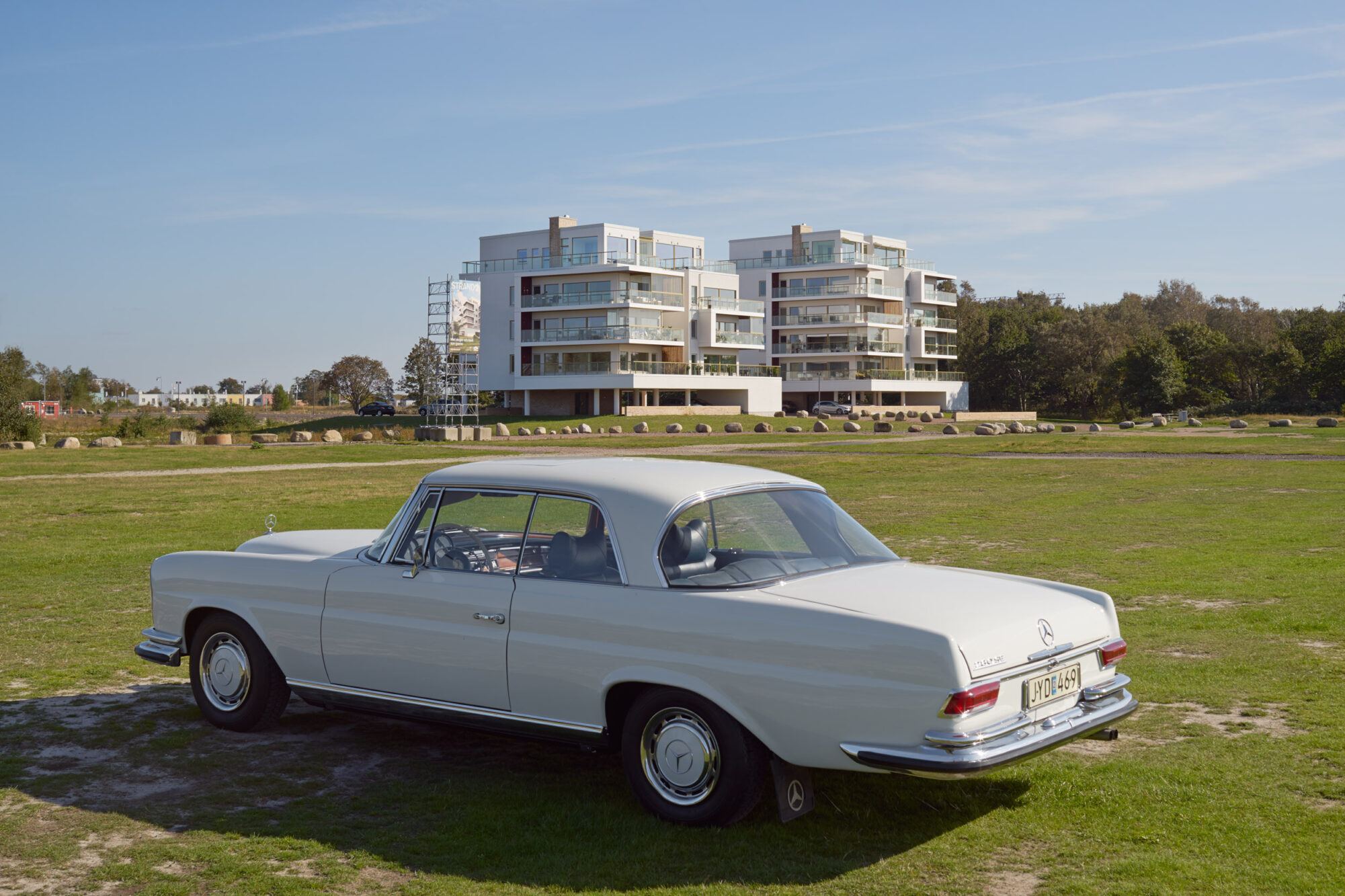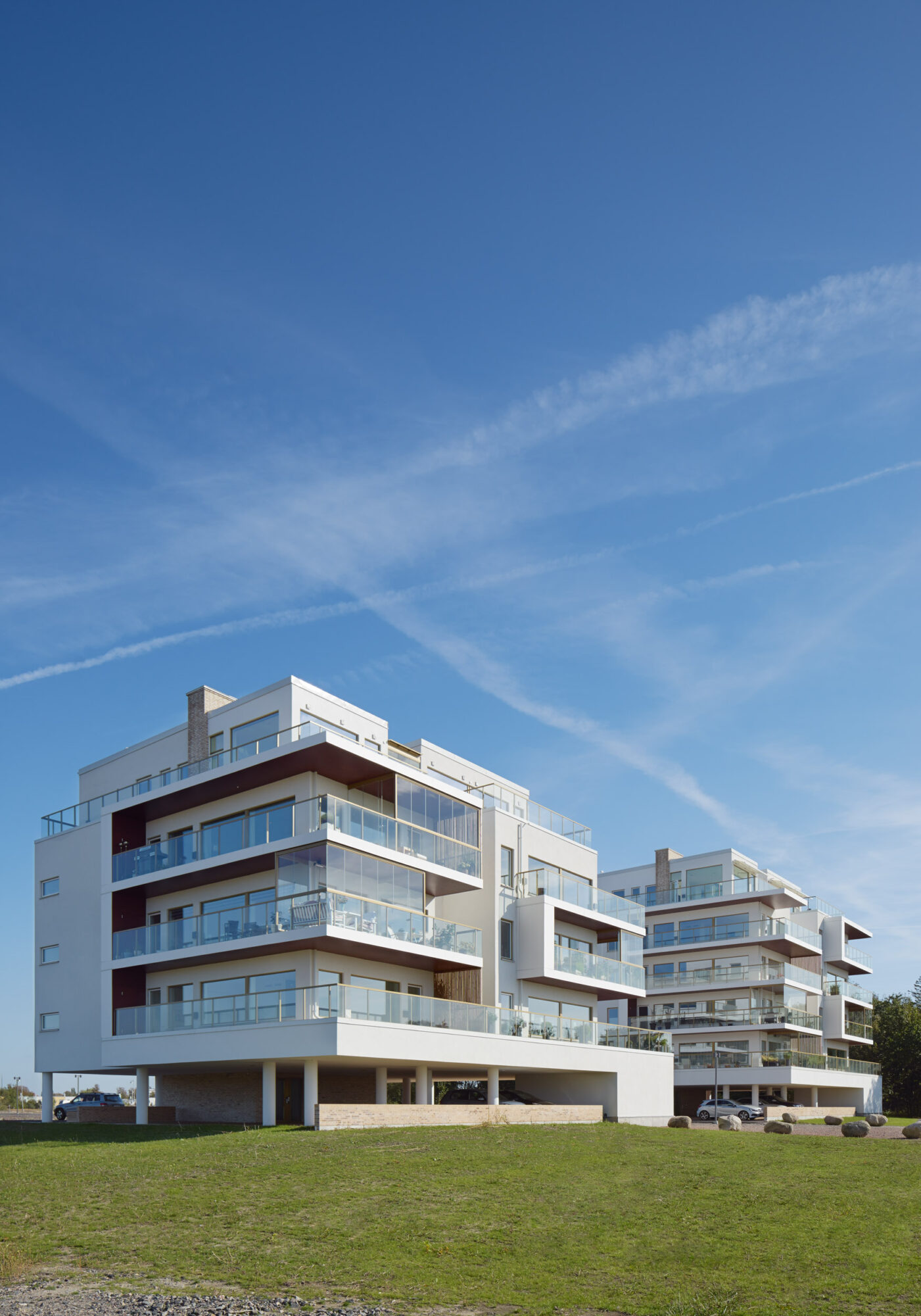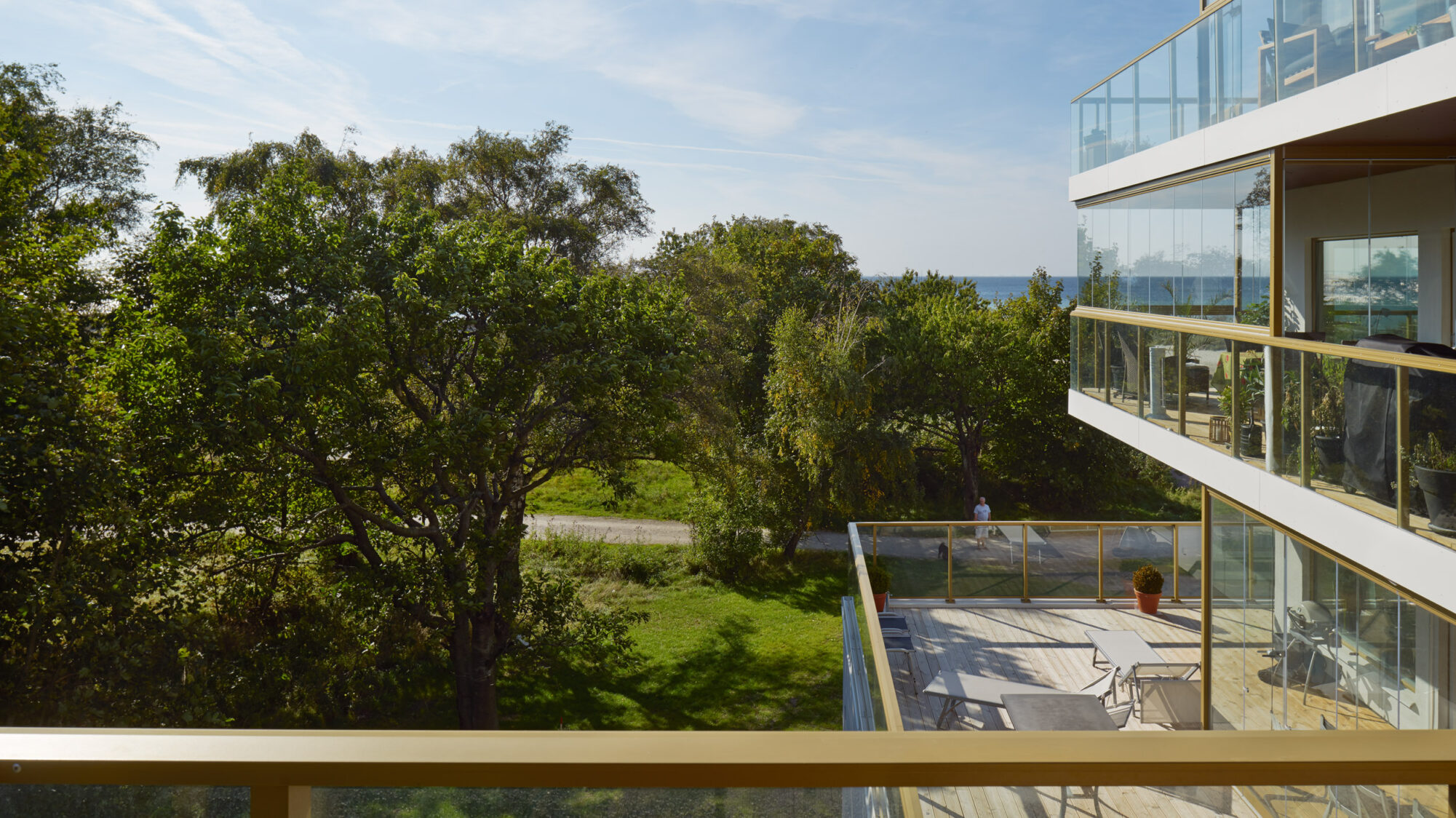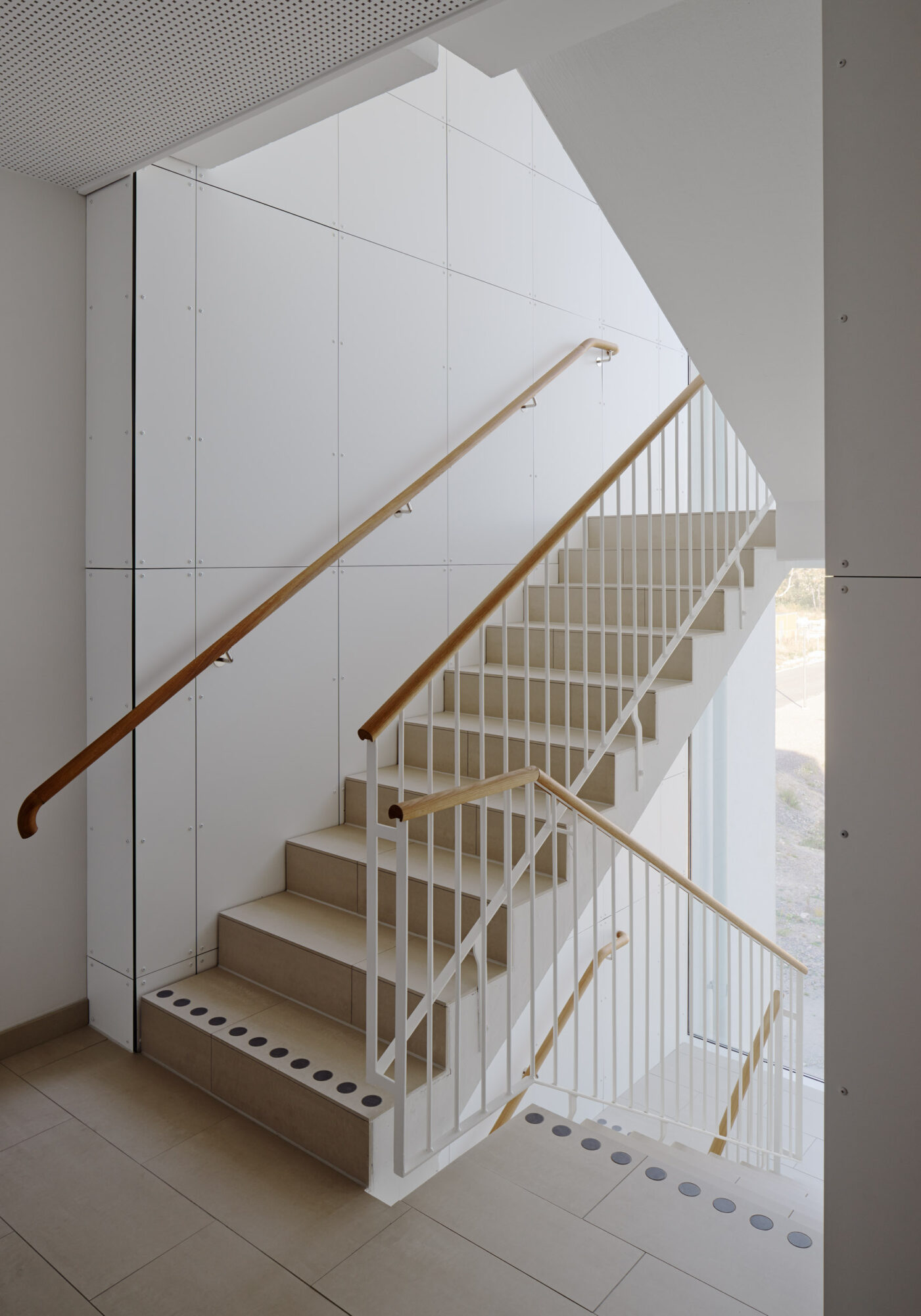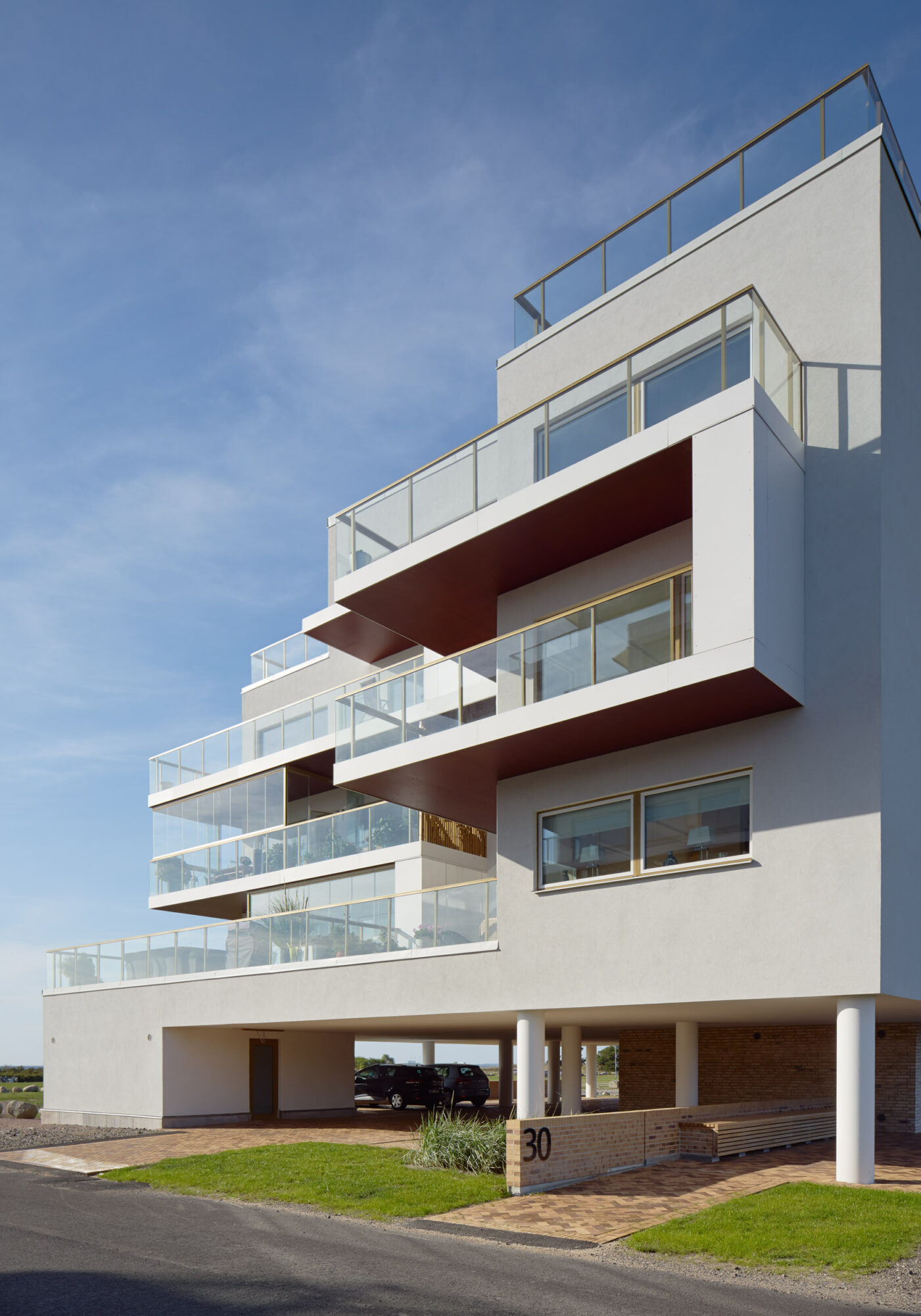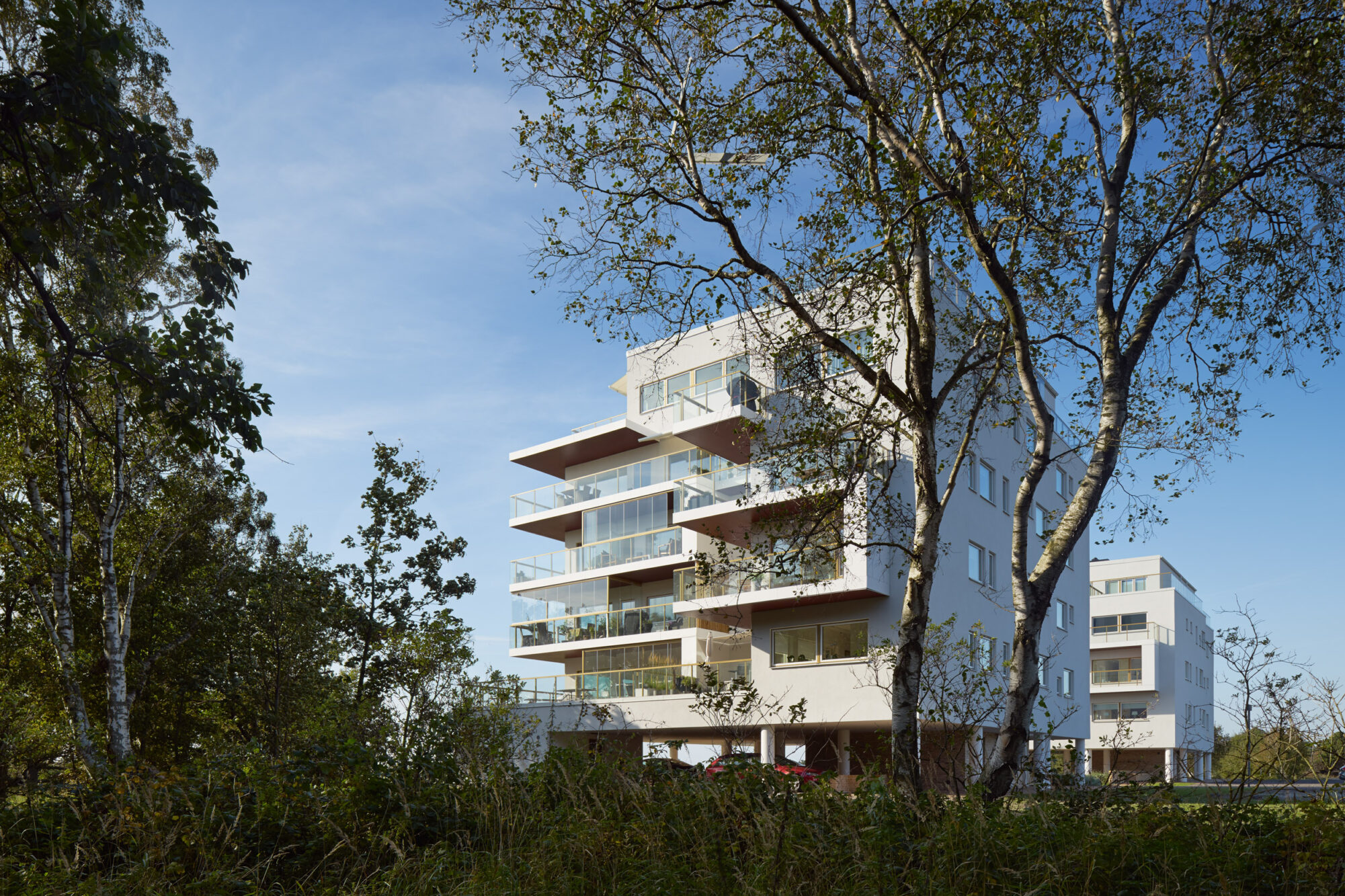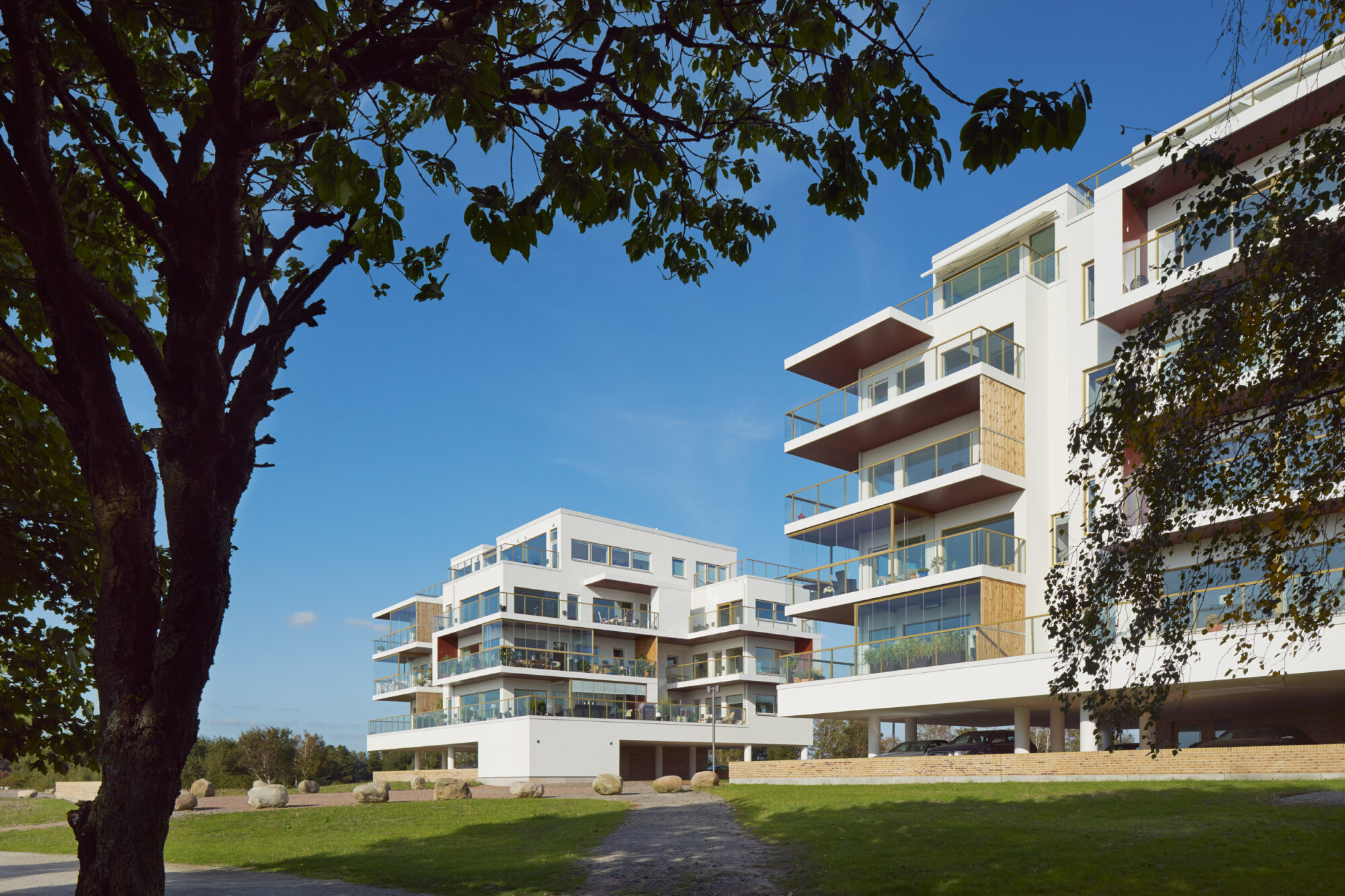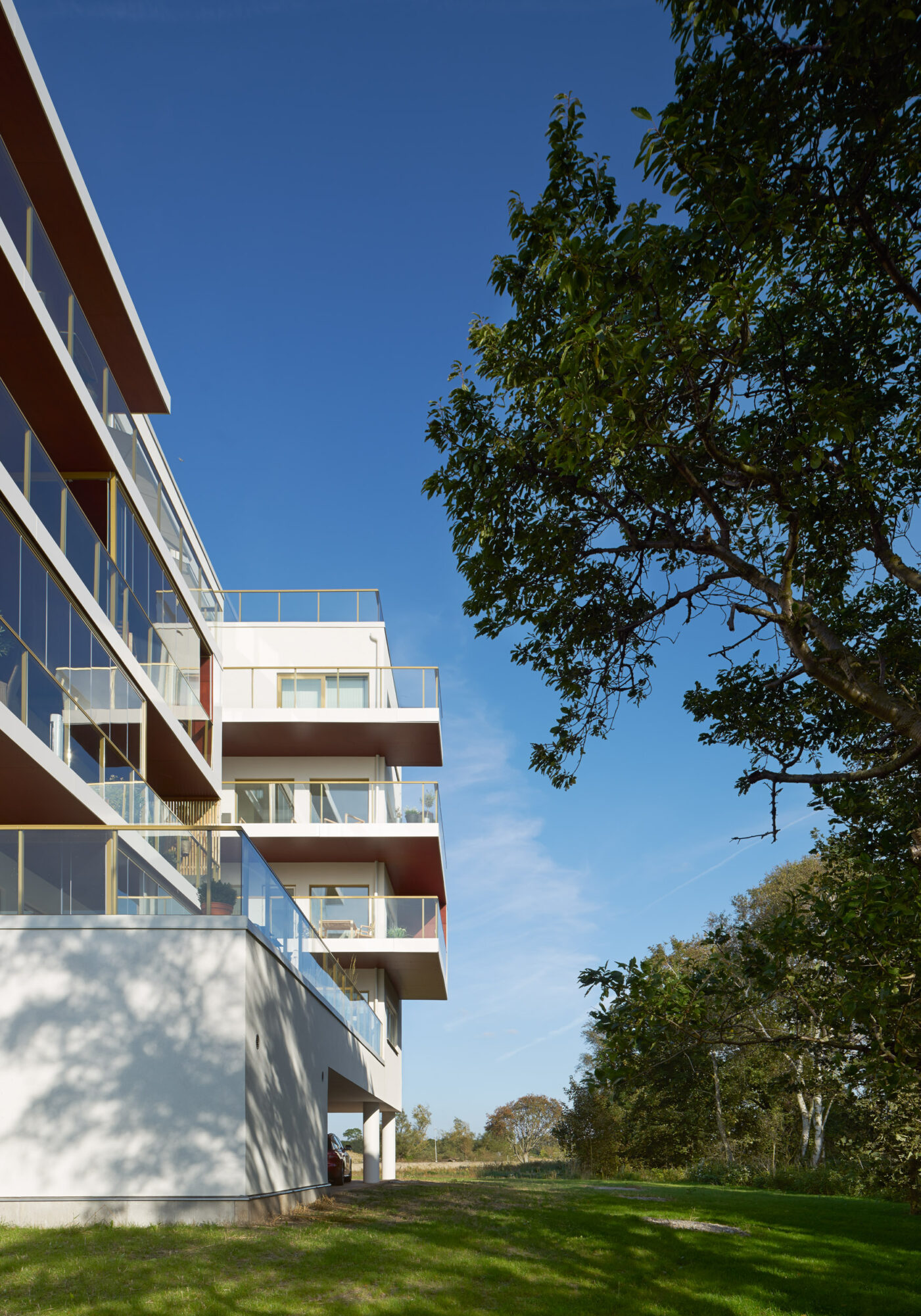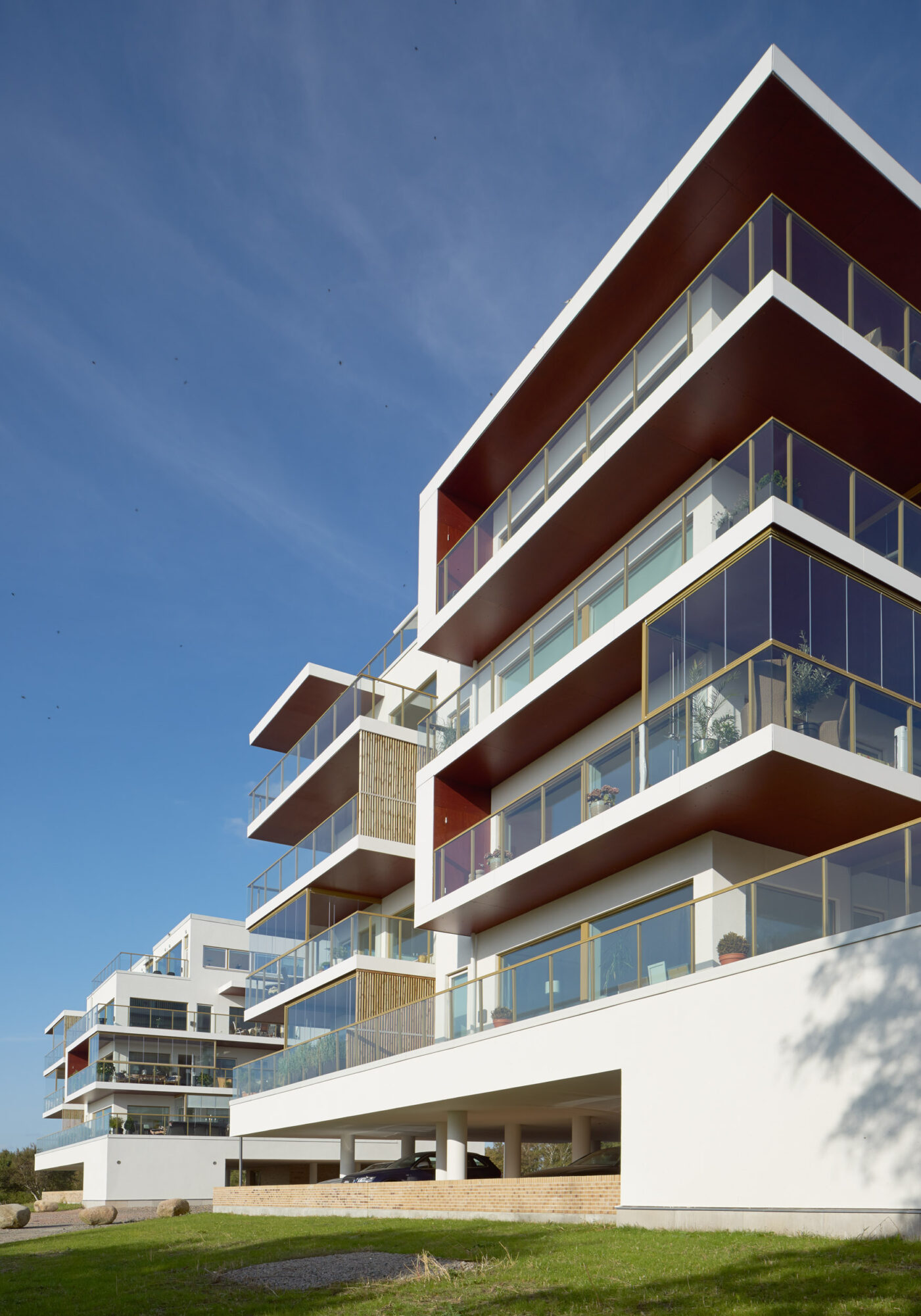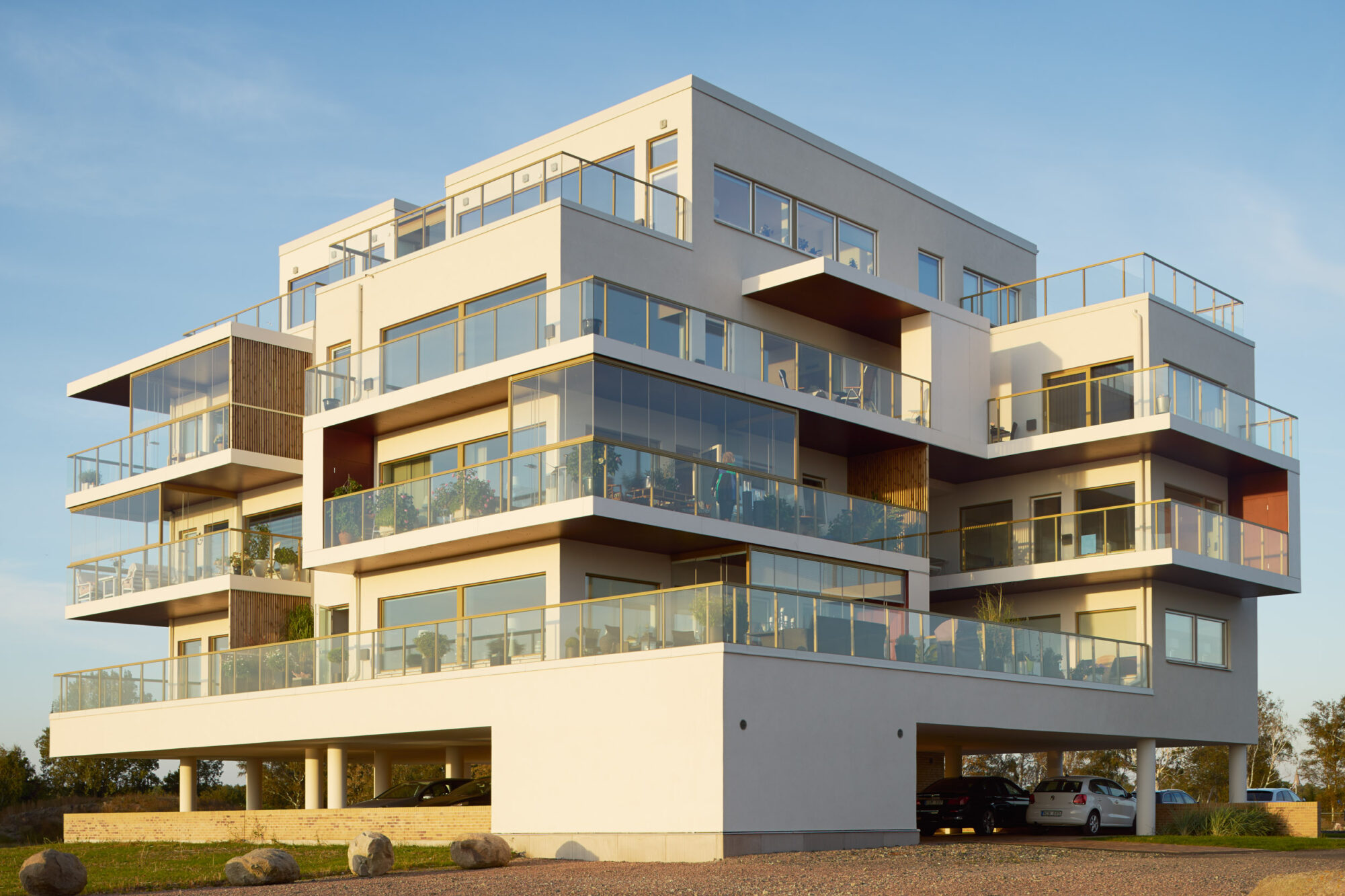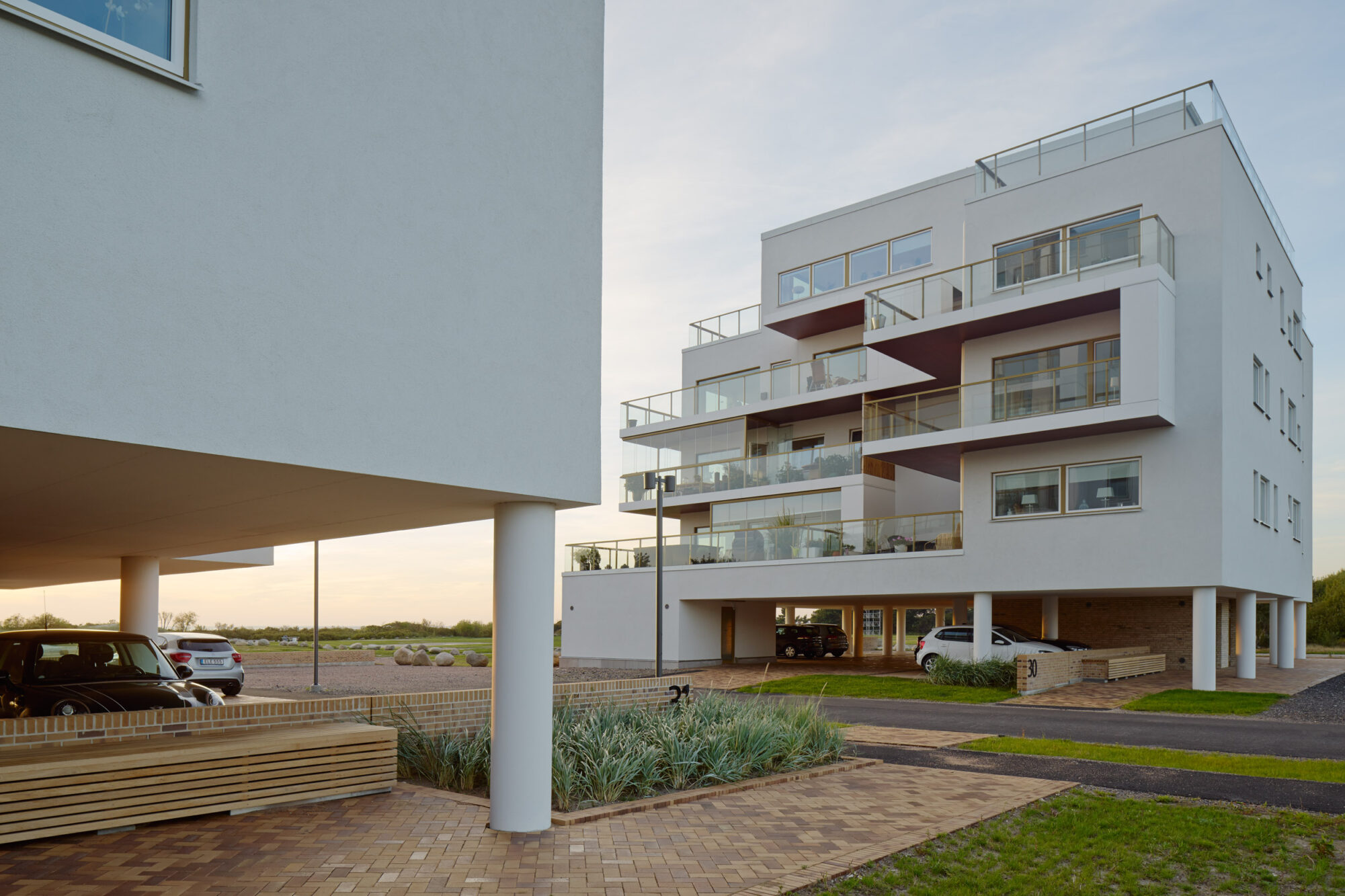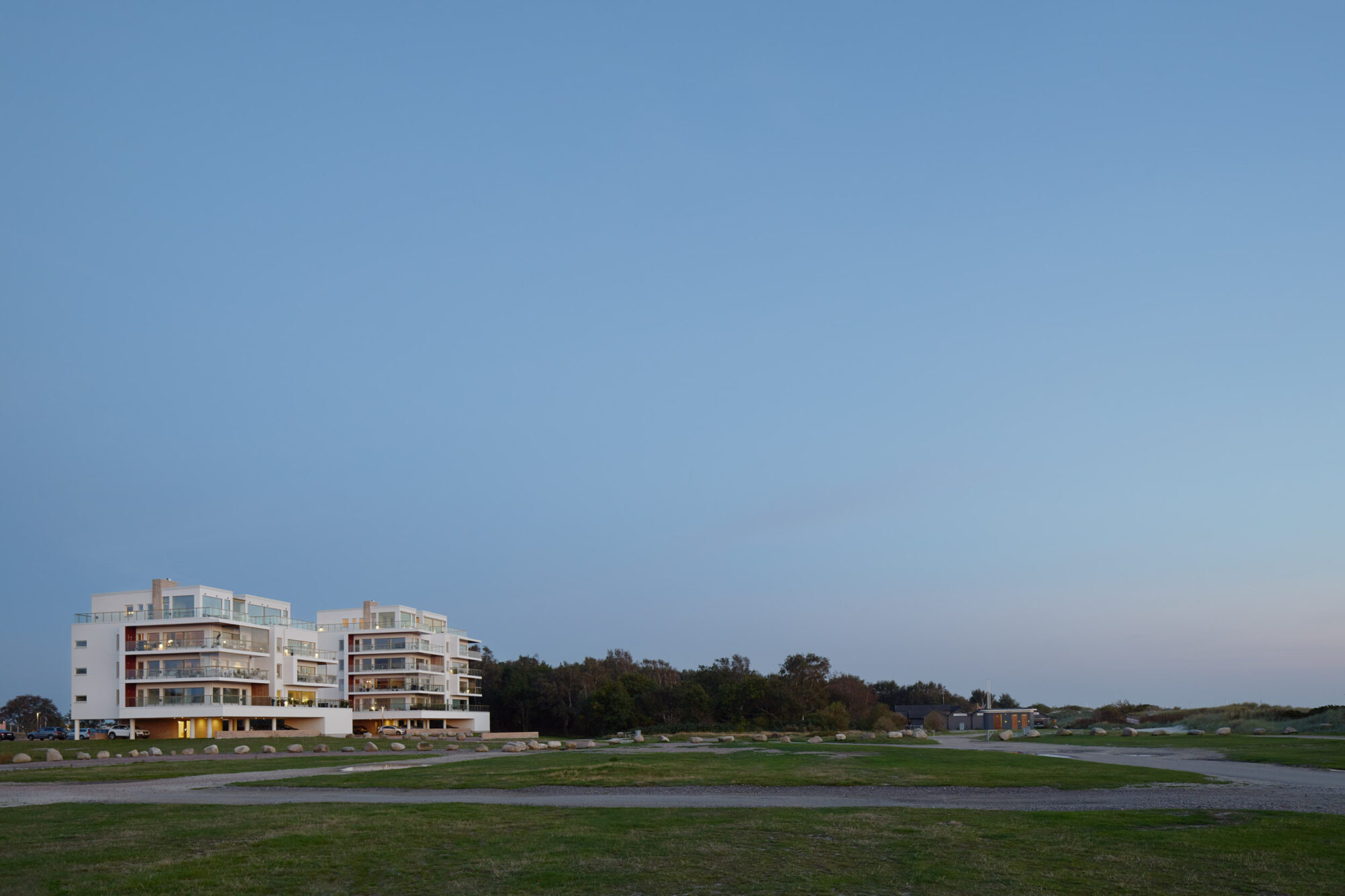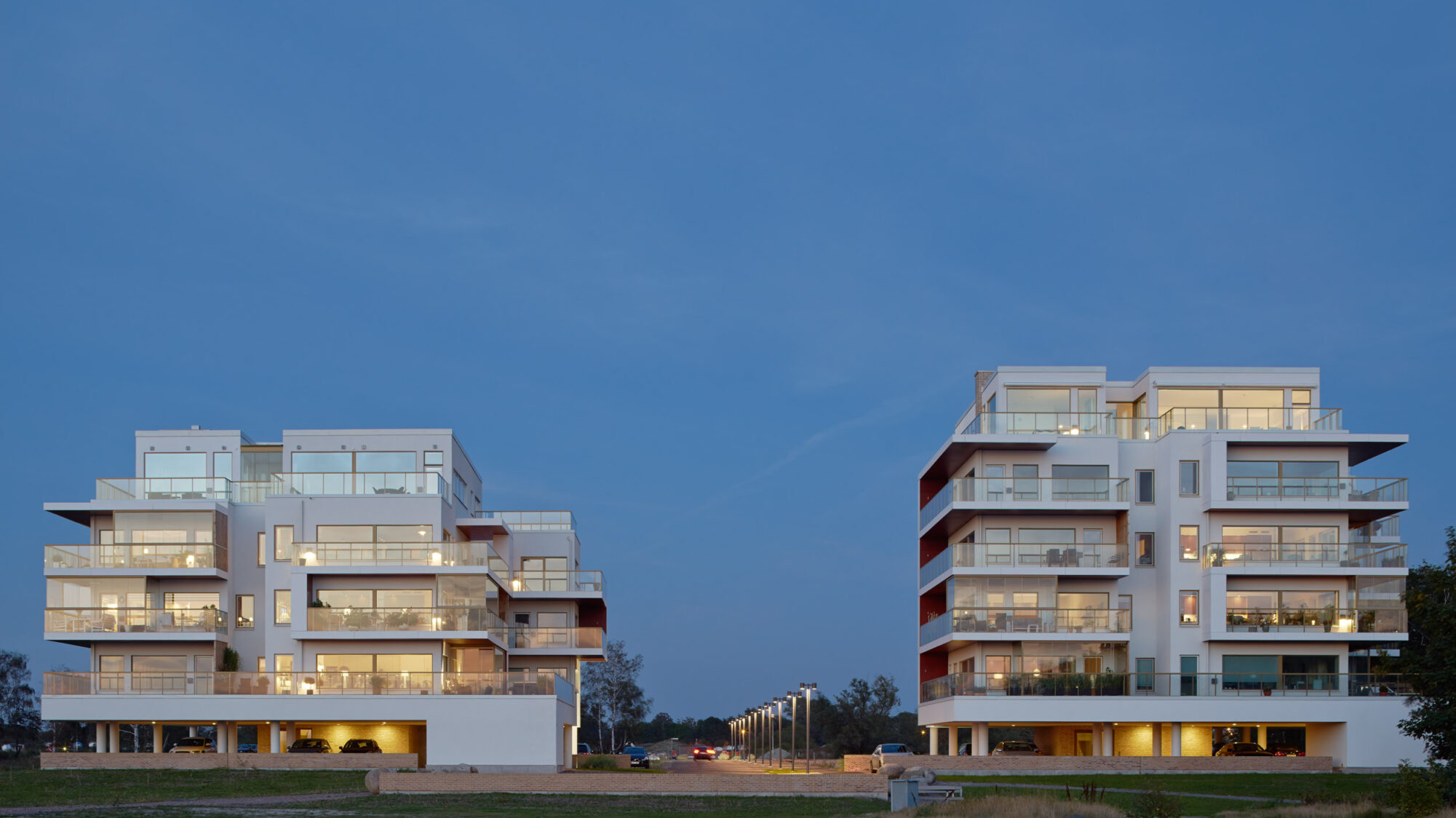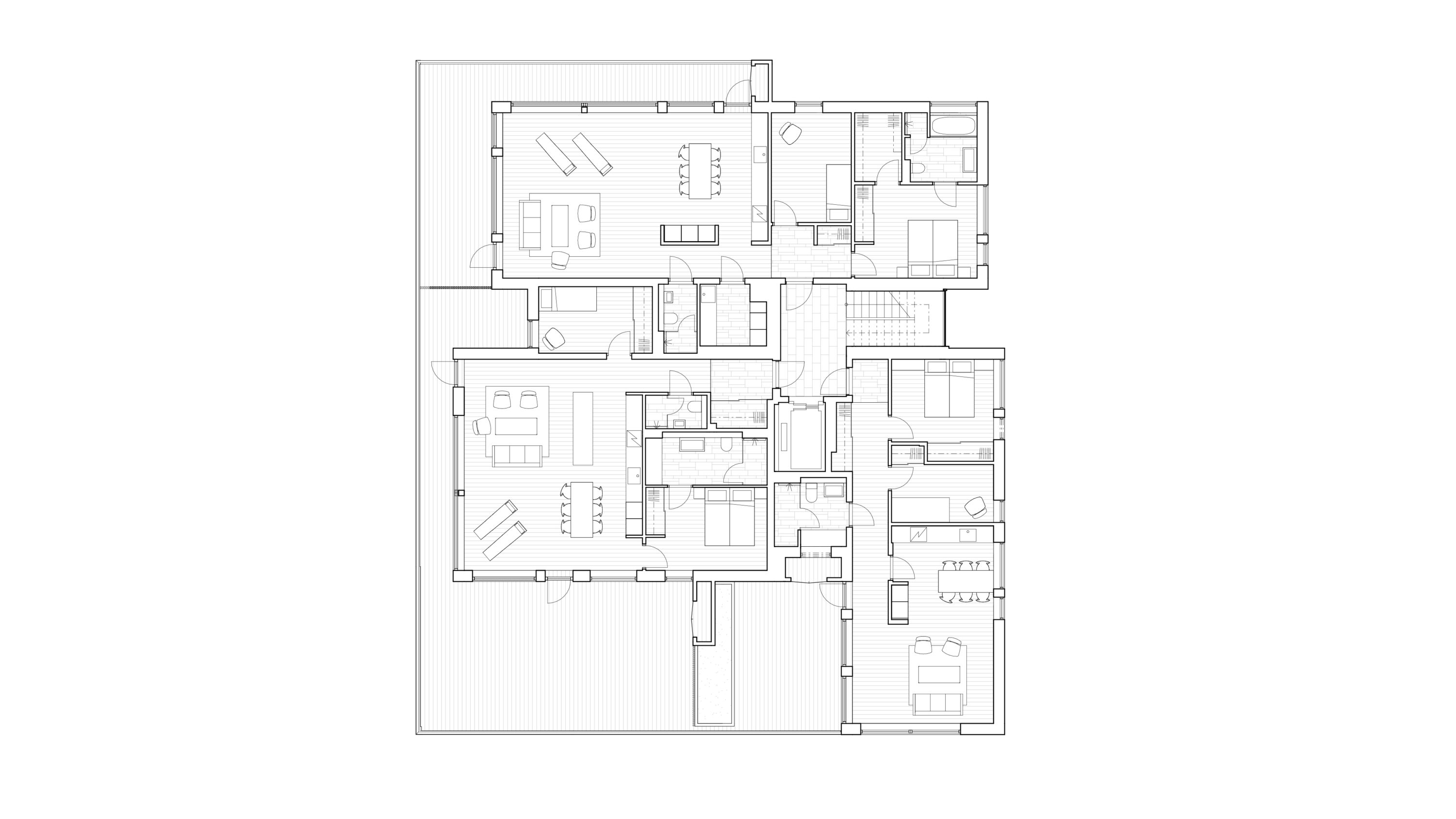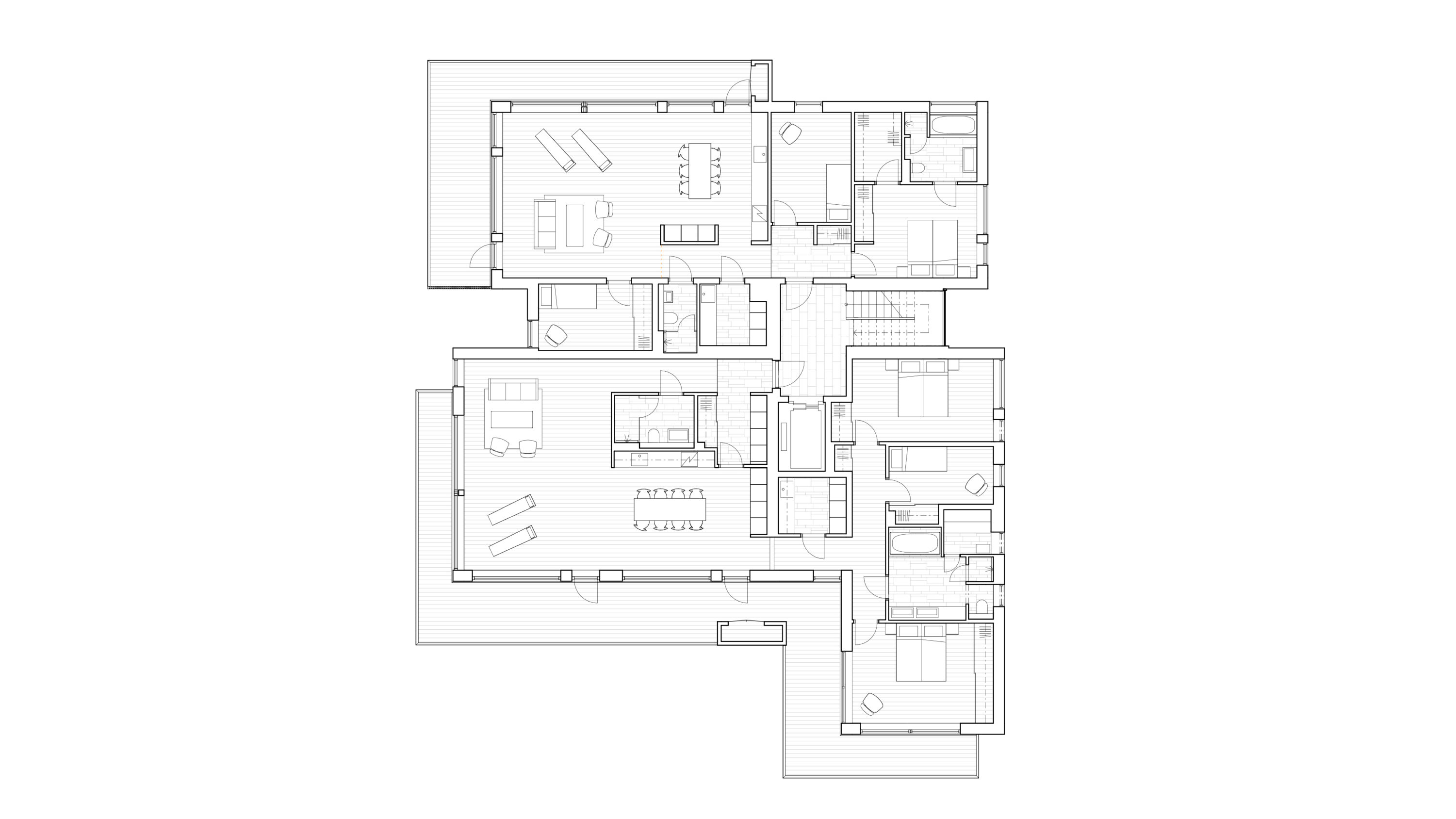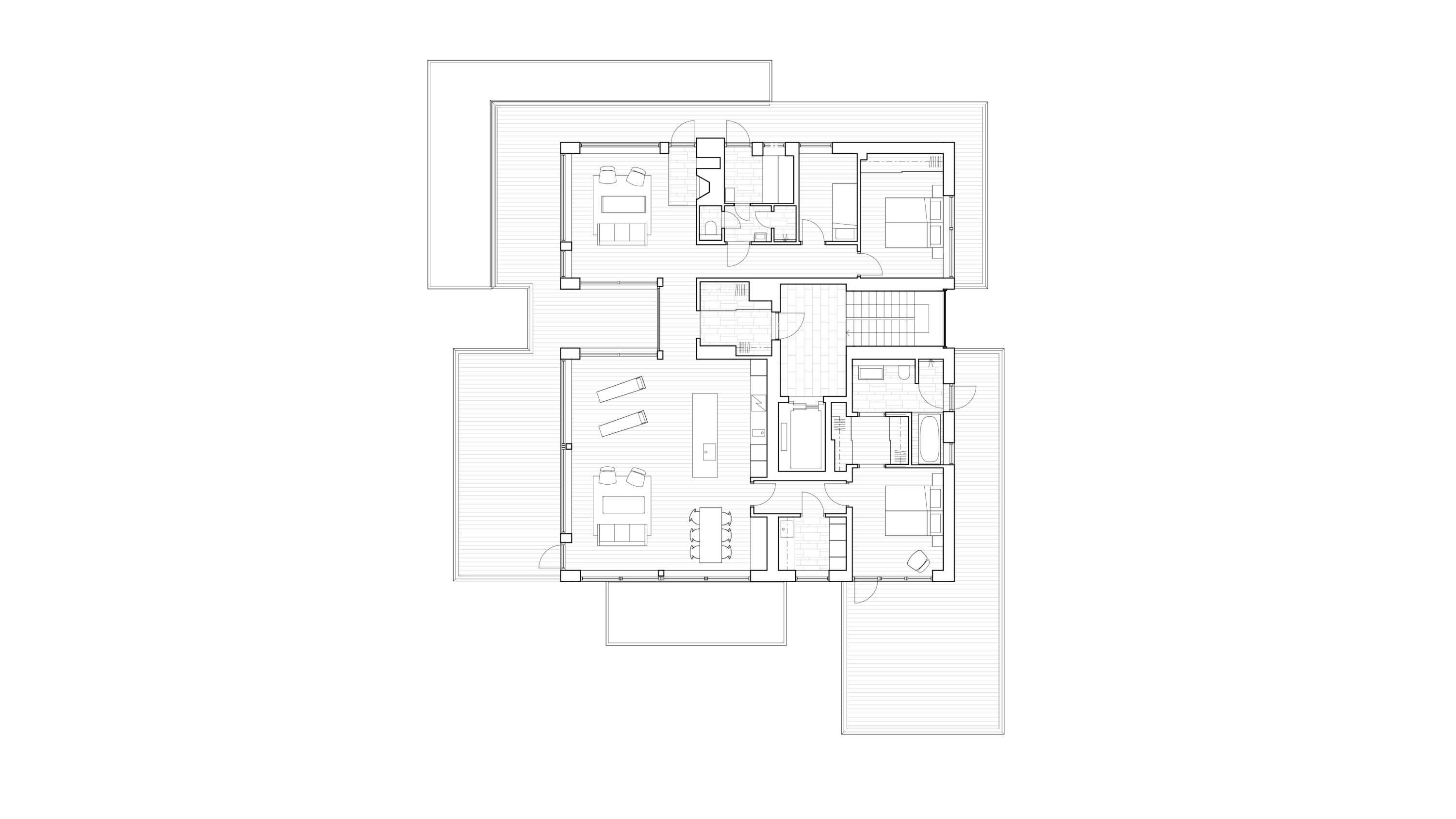Kv. Maria Magle
One of Lund's oldest institutional buildings has been converted into housing - carefully and on the building's terms.
In the middle of the Culture Quadrant in Lund, a stone's throw from the Cathedral, is the historic Maria Magle block. In the 13th century there was a church here, for several hundred years after the church was demolished there was a cemetery on the site and in 1863 the Department of Chemistry was built. In 1959 the building was handed over to the Department of History but since 2014 it has been empty.
The house occupies the entire block and is built around a green courtyard. With its yellow brick facade from Lomma Tegelbruk and sandstone plinth from Hardeberga quarry, the building is representative of the 19th century. The handmade brick, the regular window arrangement, and the sheet metal roof remain, as do the unusually many chimneys that are reminiscent of an activity where ventilation was particularly important.
In order for the house to last another hundred years, a thorough overhaul of the masonry has been done, windows have been carefully opened up to window doors and period attributes are recreated with respect to what the house and the Cultural Quadrant represent. The largest architectural addition to the exterior is the new exterior balconies, entrance staircases, railings and attic walkway, which are made of elegant black-painted wrought iron.
In the courtyard, components from the site's various cultural layers reappear in a new form. For example, there used to be a well in the courtyard, which is picked up and redesigned in the form of a water mirror. Traces of a church wall are visible as a rougher line in the paving. The paving stones are reused in a new stonework inspired by motifs on the flooring of the church, sun crosses, found during a previous archaeological investigation. The sun cross is also repeated in the plantings.
Hyllie hybrids
The Hyllie Hybrid is a pilot project that pushes the boundaries of flexibility and multi-use to increase the lifespan of the building.
Today, our buildings basically serve a single function. A residential building is a residential building. An office building is an office building. Planning legislation and building regulations make it difficult to mix functions in the same property. As needs shift and the market changes, property owners find it difficult to adapt their building - with the climate being the big loser.
Hylliehybriden is a pilot project that challenges current regulations, economic models and the detailed planning process in order to increase the life of the building and thus its sustainability. The multifunctional building is the result of research and development work between the architectural offices FOJAB and smogstudio and the real estate developer Fler bostäder.
The building is exceptionally flexible thanks to a simple modular structure and rooms that meet all the requirements for housing, offices and hotels. The building can have multiple functions - simultaneously. Rooms can be assembled into larger or smaller units and easily changed over time and as needed. When the children have moved out, part of the apartment can be split off and rented out as an office, for example.
The building's framework is a strict and repetitive modular division for residential units of 55 sqm or office use with one or more merged modules. The dynamic of the hybrid concept lies in the interaction and variation over time between these functions. The idea is based on a more sustainable and flexible use of building structures both in new construction and in existing structures. The units are accessed from the attic corridor and can be joined together through prepared openings in the partition walls. In this way, the change of function between residential and office can be done in a controlled and predetermined way, always following the same principle.
At the same time, the Hyllie Hybrid adds new qualities to the site. The ground floor has high transparency with premises for trade and gastronomy. It also accommodates passage from Hyllie Boulevard through the building volume to more clearly connect to the city's neighborhood alleys, promote the flow of movement and counteract a closed neighborhood character.
The mix of activities provides good conditions for a vibrant neighborhood and meetings between people. The corner space has been designed as a public meeting place, a node in the city that creates identity and can be used by everyone. The ground floors have been designed to support a living city, sight lines and levels open up and create curiosity. The urban dimension of the building contributes to a robust and multifaceted community building.
The boogie cars
The Boogie cars were designed by Jaenecke Samuelson and built in the early 1950s and 1960s respectively. The two apartment buildings got their nickname because of their unusual roof shape. FOJAB has supplemented the block with two more buildings that blend into the area's cohesive environment.
The new houses are located close to the existing buildings, which placed high demands on the architectural adaptation and design. The Boogie wagons are considered important modernist buildings in post-war Malmö, but other residential buildings in the vicinity also have a strong and contemporary character that the two new additions relate to.
The new development consists of Paviljongshuset and Kronborgshuset with a total of 57 apartments. The pavilion house stands on top of an underground garage, in the middle of the two older boogie car houses, is five stories high and with a sixth floor under the arched roof. The pavilion has a contemporary look but is clearly inspired by the originals in terms of volume, fenestration, roof form and brickwork. The location of the new building, set back from the street, has given the neighborhood a carefully managed and more clearly defined entry point.
At first glance, Kronborgshuset is a traditional four-storey lamellar building with a gable roof. However, its volume is angled and to the northeast it extends over an existing single-storey building. With its location, Kronborgshuset helps to define the street space and shields the courtyard from noise. Fine detailing and simple materials - wood, concrete and brick - give both houses a sensual and human expression, inspired by the ideals of the 1950s.
Kv. Twilight
A clear identity and pronounced environmental profile characterize the new headquarters of Lund's municipal real estate company. It has created innovative workplaces for LKF's staff and attractive housing in an expansive context where both people and the environment are in focus.
LKF's new headquarters is located in the Brunnshög development area, a district that aims to be the world's leading research and innovation environment and a model of sustainable urban development. In the future, 40 000 people from all over the world are expected to live and work here.
FOJAB has been involved from initial detailed planning to final design and has also designed the floor plan and interior design for LKF's own office. The property is classified Miljöbyggnad Gold and contains, in addition to offices, also 49 rental apartments and a gym.
The building consists of a continuous brick volume that wraps around a raised, glazed atrium courtyard with greenery that visually appears through the building's facades facing the street. A playful interplay of volumes in symbiosis with solid materials and elaborate brick details creates a dignified end to the block facing the busy Solbjersvägen in the north. From a distance, the building creates a clear silhouette.
Difficult conditions such as large height differences, noise, high environmental requirements, construction logistics and the relocation of existing office operations have resulted in a highly site-adapted building with unusual and activity-promoting solutions. Both offices and homes have technically innovative solutions, including a newly developed ventilation system in the facade and creative indoor and outdoor environments.
The office contains multiple environments that are flexible and designed to inspire and support a modern and creative way of working. Materials, colors and lighting are chosen to be durable and create a comfortable working environment that can withstand change. Three important parameters define the basic ideas of the concept developed for the interior environment: LKF 75 years, activity-based workplace and reuse.
LKF 75 years: The starting point is LKF's long history, where the design of the loose furniture follows a timeline that extends from 1945 to 2020. The furniture in the concept should represent the different decades that have passed, but should also show a modern and attractive office for both employees and visitors.
Activity-based workplace: The design and furnishings have been tailor-made for LKF's operations. Different types of furniture and environments support different types of work tasks. The balance between the different functions, such as traditional workplaces in open solutions and rooms for separate work, open meeting places and meeting rooms, etc. is well balanced.
Recycling and sustainability: LKF had a clear goal that the loose furniture should be reused as much as possible and has been procured according to LOU for reused furniture. By referring to the timeline of LKF's 75 years in Lund, we were able to ensure that quality and durability in materials as well as durability in layout and design would be included in the final result.
Gränden
Offerkällan is a popular Million Program area in northern Lund with apartments in two-story buildings designed by Sten Samuelsson. FOJAB, on behalf of Lund's municipal real estate company, LKF, has developed Offerkällan with eight new buildings called Gränden.
It has been important to take advantage of the fine qualities of the area and at the same time improve what does not work as well. With well-balanced placement, strong form and high quality materials and detailing, the new houses have become a boost for the whole area.
In classic sixties fashion, the road through Offerkällan was lowered into a ditch. Traffic was kept separate from the residents, but it also meant that the area was effectively split in two. To heal the two parts, six of the new houses have been placed along the previously submerged road. What used to be a desolate asphalt ditch with garage entrances for cars has been transformed into a safe and pleasant urban street for pedestrians and multiple modes of transport with more and different types of entrances, windows and porticos.
The new development is higher than the existing one, but connects to the lower buildings through a two-storey arm at one end of the street. Townhouses on the ground floor provide nice micro-environments and an increased variety of housing qualities. Porticos across the buildings create new sight lines, increase transparency and open up the area.
The houses are built with solid, genuine materials that will age beautifully and last a long time. The level of detailing is consistently high, for example with roll changes on the cold walls, which means that no sheet metal coverings are needed. The high quality can be seen and felt, these are houses that can be approached.
Named the best new construction project in the public sector in 2023.
Finalist for the CBA Housing Award 2023
Barkarbystaden, block 3
In the heart of Barkarbystaden, a distinctive urban quarter is being built, inspired by grandiose urban environments and the remnants of the airline operations on the site.
Barkarbystaden is emerging as a new regional city center in the metropolitan area. Block 3 is located right next to the new metro station and fronts the central Sveatorget square. The block is divided into eleven staircases with public premises on the ground floor. The apartments are efficiently planned with furniture, views and large balconies as keywords.
The design concept is based on three different characters that together create a varied but coherent whole. Common to the entire block is a vertical division by stairwell and a horizontal division in the form of a plinth, body and crown. The block varies in height and is manifested by three "towers" that emphasize the two rounded corners and the central location by the square.
Towards the square and the main street, the building has a metropolitan character with a clear structure and relief. Representative facades and recessed balconies provide a pleasant rhythm that contributes to the life and movement of the city. The high plinth floor contains retail premises and around the residential entrances the influence of Barkarby airfield can be seen in the form of hangar-shaped arches. The shape is repeated in the crown, but the arches are then turned upside down.
The second half of the block has the character of a small town with classic facades in rich colors. Here, the detailing is simpler, with varying coarseness of the plaster and work on the base floor, around entrances, windows and crowns.
FOJAB's proposal was selected following parallel assignments.
Saint Michael 16
A new apartment building has been added to Lund's thousand-year-old urban fabric in the middle of one of its oldest neighborhoods, Sankt Mikael. The new building connects well with the turn-of-the-century Art Nouveau house on one side and the 1860s two-storey house on the other, while the new building has its own unique character.
In the St. Michael block, one of Scandinavia's first Dominican monasteries was located in the Middle Ages. Over the centuries and until the 1950s, there were other buildings on the site. Then the last house was demolished and the area became a parking lot. On the other side of the street is the Museum of Culture with a beautiful stone wall and three tall trees facing the street.
The history, the unique urban environment and the central location have meant high demands from the municipality, authorities, organizations and the public regarding architectural design, detail and material qualities and adaptation to the surroundings.
Meeting the volumes of neighboring houses
The new building at Stora Algatan 6 is 2440 m² GFA above ground, spread over six floors, and has 610 m² GFA basement and underground parking, spread over two floors.
The building connects along Stora Algatan on one side at the height of the eaves of the Art Nouveau building and its steep roof slope. On the other side, the building meets its two-story neighbor with a narrow two-story building section. The latter subordinates itself to the volumes of the neighboring buildings while at the same time asserting itself well through its materiality.
The building's material and color palette is very much in keeping with the surrounding buildings, but the combination of these materials has given the building its own unique character. Facades are mainly plastered in light smooth plaster, but also have elements of cross-hammered granite and sandstone, copper, and oak in the entrance areas. In addition, there are painted wooden windows and tight wrought iron balcony railings whose rounded corners towards the street tie in with the soft Art Nouveau forms of the neighbouring house. On the roofs and in their detailing, there is more copper and dark, banded sheet metal.
Two different farm environments
The project includes two different courtyard environments. On the ground floor is the larger courtyard, which contains common areas for the building's residents and patios for three of the apartments. The courtyard has a good sun position and - inspired by the history of the monastery - contains a large number of different types of herbs.
The smaller courtyard is located one floor up at the intersection of the Art Nouveau house and the new building. This courtyard serves as a courtyard of light, but also as a quiet and green oasis to gaze at from the windows of the four surrounding facades. The ground is covered with shade plants planted around a cross-shaped walkway - again inspired by the history of the site.
Light housing
The homes are characterized by light and views. Already a few floors up, there are wide views of Lund's roofscape and the surrounding plains. Of the building's 19 apartments, 14 are large apartments with three to six rooms and kitchens of 100-137 m². Three of the largest apartments are located at the very top of the roof with sometimes extra high room volumes. One of these apartments is also on two levels and has a large roof terrace on the upper level with views for miles.
The remaining five apartments are space-efficient one- and two-room apartments of 32-40 m². All of the building's apartments except the one one-bedroom apartment have at least one private balcony or patio.
Underground parking
It was clear early on that car parking was a challenge for the project. The solution was a car elevator combined with a semi-automatic parking system that stacks the cars on up to three levels underground. Parking for around 60 bicycles is located in the ground floor interior and is accessed via a ramp from the street.
The document
The block is located at the crossroads between the dense inner city block structure and the sparse institutional and residential buildings, which has characterized the design of the block. The building consists of five buildings, each with its own identity, to reflect the context of an urban structure that has developed over a long period of time. The corner in the southwest is accentuated with both the height of the building and the public entrance and activities on the ground floors, while the eastern building body stands with its gable towards Brunnsgatan and extends into the park.
The buildings consist of simple, buildable volumes of 3-6 floors based on the neat brick architecture of the area. Each building volume will have its own individual design with brick color and joint, roof shape, balcony and window design to counteract repetition and instead achieve clarity and a site-specific variation. The separate building bodies provide good opportunities for a phased implementation.
All apartments have balconies or generous terraces in good directions, clearly separated from the public space. The apartments are compact without sacrificing well-proportioned rooms, good lighting conditions and functional dimensions. Throughout the project there is a variation in both apartment sizes and variants of a particular apartment type. The advantages of repetition in the production phase are weighed against the individual wishes of the tenant.
In addition to apartment buildings, the block contains a nursing and care home integrated into one of the residential buildings, premises for LKF and a meeting point for seniors in the corner of the ground floor facing the city.
Masthead quay
Masthuggsskäret is a residential neighborhood just north of Järntorget, at the very tip of Masthuggskajen. Masthuggskajen - a previously closed port environment - is being transformed - and Järntorget's role as the creative heart of Gothenburg will be consolidated. In addition, a new peninsula in the Göta Älv will finally offer Linnéstaden direct contact with the river, and the city will have a new quayside. At the far end of this peninsula are two residential blocks, the eastern one being Masthuggskäret.
Six distinct volumes form Masthuggskäret. The stepped form of the building creates a strong shape towards the river and meets the new skyscrapers of Masthuggskajen. Closest to the river, a free-standing harbor palace is formed within the block, whose release from the rest of the building creates exciting urban spaces, a square towards the moat and exceptional premises for restaurant and café activities. The block consists of two properties, and contains both condominiums and rental apartments - continuous penthouses as well as well-designed studios. Masthuggsskäret stages the meeting between city and river, and becomes a natural part of the new cityscape on the southern bank of the river.
Masthuggsskäret is located on the historic outskirts of Gothenburg, at a point where visitors once encountered customs and fortifications. Gothenburg's last remaining bastion can still be seen from the block's roof terraces. Right next to the peninsula, Gothenburg's iron scales used to be located, and in the moat, ships with building materials arrived at Röda Bryggan - named after the sand and red bricks that were stacked there waiting to be laid. The rich material history of the site is allowed to color the block, and wrought iron details are combined with red brick and brick in varying tones of straw and sand. The quay's stone flooring spills into the block in varied patterns and finishes.
The block's cross-section is a stylized archipelago cliff. As the peninsula is extended into the river, it is easy to create areas below ground level - and the courtyard can accommodate generous spaces for public or neighborhood functions. At ground level, the courtyard is surrounded by an arcade - a sheltered space that links housing with a laundry lounge, bicycle room and other common functions of the neighborhood.
Masthuggsskäret is a love letter to Gothenburg. In places where it blows and rains, intimate urban spaces become particularly important, and Masthuggsskäret creates several. Masthuggsskäret is a generous urban block at a new junction between river, city and harbor.
Umami
Umami Park in Hallonbergen in Sundbyberg is being developed into an attractive urban environment with new public spaces, commerce and housing. FOJAB has worked with the landscape planning for the entire area and has designed three point buildings in its western part.
The buildings are freely placed in the terrain and nature is allowed to come right up to the facades. The courtyard lies like a thin slice on the ground between the houses and gently connects to the entrances.
This organic nature has inspired both the landscaping and the exterior design of the houses, whose main feature is the rounded balconies with metal fronts that wrap all the way around the brick facades of the houses like wide, shiny gift ribbons. Adding additional bands of concrete gave the volumes a truly luxurious feel.
The volumes are simple straight blocks, but with a horizontal division of the façade as a playful nod to the older buildings in the area. The balconies are arranged around and over the corners of the facade. They contribute to the horizontal division, but also add further drama, complexity and detailing.
The point houses are made of prefabricated concrete elements where the concrete has been allowed to be partially visible, combined with brick and sheet metal sections. Together with the organically shaped balconies, the three façade materials give the buildings their character. The design principle is the same, but each of the houses has been given a different coloring of both brick and sheet metal and a different distribution of concrete sections.
Trummens Strand
Urban quarter on the isthmus between Trummen and Växjösjön with the best possible view of the lake.
In line with Växjö's focus on wooden houses, the buildings have been built entirely in wood and the presence of wood is tangible. The buildings have a solid wood frame, the facades are clad in wood panels and inside the apartments there are visible wooden structures and carpentry.
The block consists of three houses, where the front has generous balconies, facing directly onto the water. The houses are built around a common courtyard with plenty of space to play and socialize. The homes are designed for the modern, urban way of life, and each apartment has both a study and large living areas, allowing for a good balance between work and family life.
The use of a solid wood frame provides many benefits for both the environment and the residents. For the environment, the most obvious benefit is that solid wood is a completely natural and renewable material. For the residents, one of the benefits is that solid wood has a density that keeps the indoor temperature stable, resulting in a healthier indoor climate and good sound insulation.
To maximize the sea view from the apartments, FOJAB has developed the so-called View Machine, which shows how much view each apartment has and also provides a kind of grading of the quality of the view. Each apartment has been designed to maximize the sea view and the design of the apartments has been influenced by the results of the View Machine.
The block consists of three buildings with condominium apartments, with living areas ranging from 76 to 170 square meters, a two-storey preschool with lake views, a community room and student apartments with separate entrances directly from the street, providing a vibrant street life.
Awards:
Växjö municipality's Wooden Building Award 2019
Nominated for the Building Award in Växjö 2019
Nominated for the SAJK Architecture Prize 2019
Read more about View machine
New Hovås
Winning proposal in parallel assignment. FOJAB continues to design 250 rental apartments on Uggleberget in Nya Hovås, Gothenburg. The building consists of a number of point houses and lamellar houses standing freely on a forest slope and oriented around a hill. The starting point for the project has been to let nature prevail in the area.
The ambition has been to create a unique residence with a strong character, where the built environment interacts with nature. A place that, like nature, expresses both irregularity and harmony. Three house types have been developed, all variations on the point house and lamella house. Irregularity and harmony have been key words in the design of the houses, which interact nicely with the forest.
A consistent idea is to be able to move along the outer wall and be in constant contact with the forest. The division of the building volumes and the staggering of the apartments means that all homes have views in at least two directions, sometimes four. The free placement of the balconies in the facade increases the light into the different apartments.
Patios are available for all the residential buildings, in different sizes and facing different directions. All houses have a common roof terrace with its own greenhouse, a part of the qualities of the villa transferred to the apartment building. This is something that can be unique to the area and a focal point for the tenants.
The buildings are clad in pointed slate, reminiscent of pine cone patterns. Three different types of slate have been used for a discreet variation: black, green-black and green. The choice of colors and materials follows the nature of the site. The materials used are mainly slate, weathered wood panels, sheet metal and brass-toned wrought iron.
The roofscape of the houses is extensive. There are three small houses on the roof, one of which is shared by the residents. The roof is a place to spend time, where the view is wide and there is a terrace and a greenhouse where people can meet. The coloring of the ground and plant material follows the nature of the place, different tones of green, gray, purple and ochre.
Helsingkrona Nation
A new 13-storey student accommodation building for Helsingkrona Nation. The building houses 69 apartments for so-called "buddy housing". Each apartment has two separate bedrooms and a shared kitchen and living room. On the 13th floor there is a common banquet hall with a fantastic view of Lund. In addition to housing, the ground floor houses a collective study room and a salad bar.
The aim of the project was to create new student accommodation for Helsingkrona nation, which has had around 200 students living in its existing student accommodation building since the 1950s. The nation also conducts extensive social activities, which would also be accommodated in the new building. The building's location in the middle of the LTH park aims to create a more pronounced campus feel with both residents and institutions in the area.
The building, built by Peab, was ready for occupation in August 2015. All apartments are currently rented out to students.
Award:
Lund Municipality's Urban Design Award 2015
Triangles
From a large parking lot and a desolate backside to a public transport hub with vibrant city life in a cultural-historical environment. FOJAB has built a brand new city block in central Malmö with 190 apartments, 200 workplaces and commercial activities on the ground floors.
At street level is a two-storey shopping mall, linked to the existing shopping center. A further five floors facing the surrounding streets are residential and office buildings. From this building rises a 19-storey residential building. In the interior of the block there are further residential units and green gardens at different levels, while the car parks are two levels below ground.
In Triangelgallerian, FOJAB created a square to enhance the environment for the many commuters who move in traffic, but also to provide a harmonious place for relaxation in a small-scale, dense and intense environment. To create variety and enhance the urban feel, the shops are accessed through three portals in winding aisles at street level. The square, which is located in the center and opens up through both floors, is formed by playfully placed shop boxes.
The office is located on four levels on top of the mall, two to five steps up. The main entrance is located on Rådmansgatan. Outdoor spaces in the form of roof terraces are available both in connection with the lowest floor of the office and at the top of the recessed penthouse. Secure bicycle parking is available in a raised courtyard between the new and old Triangeln. The office's tenants have a nice view of S:t Johannesplan and also visual contact with the lush inner courtyard.
At the top, both street and high-rise buildings are crowned with sections of golden brass plate. The courtyard environments are built on the roof of the mall, on three different levels with a wide range of spaces and experiences. The character and composition of the plant material provides greenery and beauty throughout much of the year and highlights the changing seasons. There are sheltered places in the shade of the pergola's creepers, offering seating via integrated benches and special play areas for children. There are also spacious grassy areas and several wooden decks to accommodate larger groups.
Lund Nation National Archives
As general consultant, FOJAB has been responsible for the construction of new student housing in the Arkivet neighborhood in Lund. The project involved a careful rebuilding of the cultural-historical environment while adding another new building to the old ones.
FOJAB was responsible for the entire assignment as a general consultant and overall advisor, with the scope ranging from working on the amendment of the existing local plan to design, construction management and handover of the completed building.
The design work required considerable expertise in both historical and modern construction techniques. The oldest buildings date from 1903, with an extension in 1971, which has been converted into student accommodation. In order to cope with the heavy wear and tear from students, the choice of robust materials and low-maintenance solutions is also very important.
FOJAB also designed the outdoor areas around the student accommodation, in harmony with the existing environment. The areas facing the surrounding streets have been preserved as far as possible, while the inner orchard has been redesigned, inspired by its previous appearance.
The principle for the archive's garden has been to change as little as possible towards Dalbyvägen and Arkivgatan. Existing trees and cast iron fences have been preserved and supplemented with clipped beech hedges where there was a need to hide bicycle parking. At the same time, as much as possible of the character of the courtyard and its lush orchard has been preserved.
The courtyard plays an important role in bringing together student activities in the four buildings. The former patio in the north-west corner has been preserved and a new raised terrace has been created in the south, connecting to the two-storey community room in building D. A winding path has been created across the courtyard, allowing movement in the green space.
Nomination:
Region Skåne Architecture Prize 2015
Beach Lomma
One of the most exclusive condominium projects in the Öresund region. Unique location with unobstructed sea views near Lomma harbor and Lomma center, but still secluded and close to nature thanks to Strandfureskogen.
New construction of homes on the waterfront in Lomma. The apartments are based on the qualities of the villa, with the possibility of moving alongside your home outdoors via large balconies and terraces. Open kitchens and living rooms are positioned to maximize views of the sea and bedroom areas are placed in a more secluded location. The houses are raised on pillars to provide views of the sea and forest.

